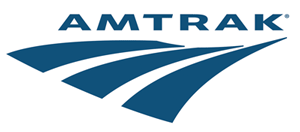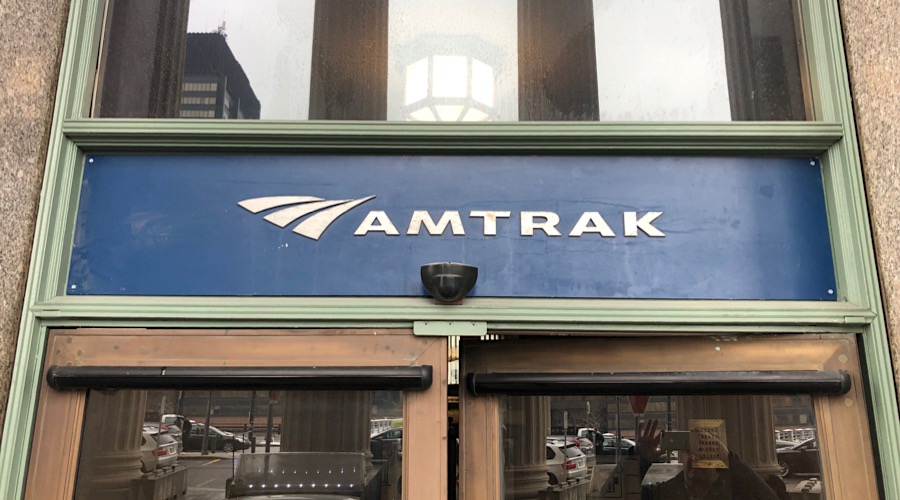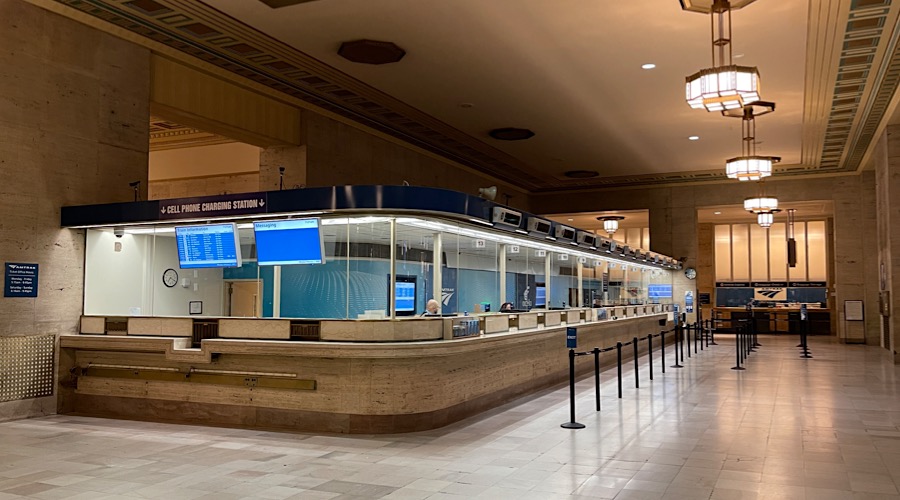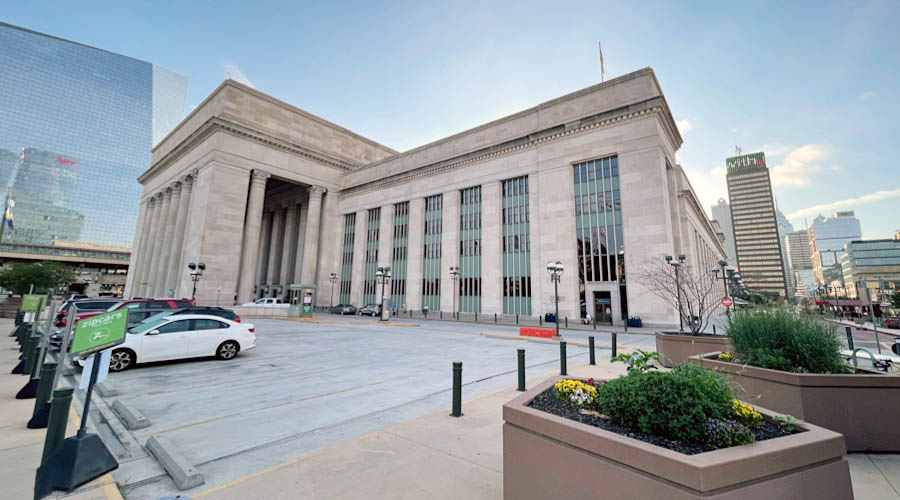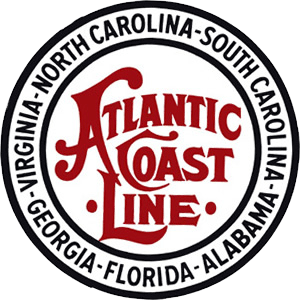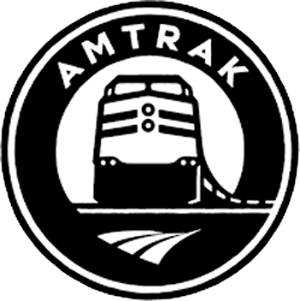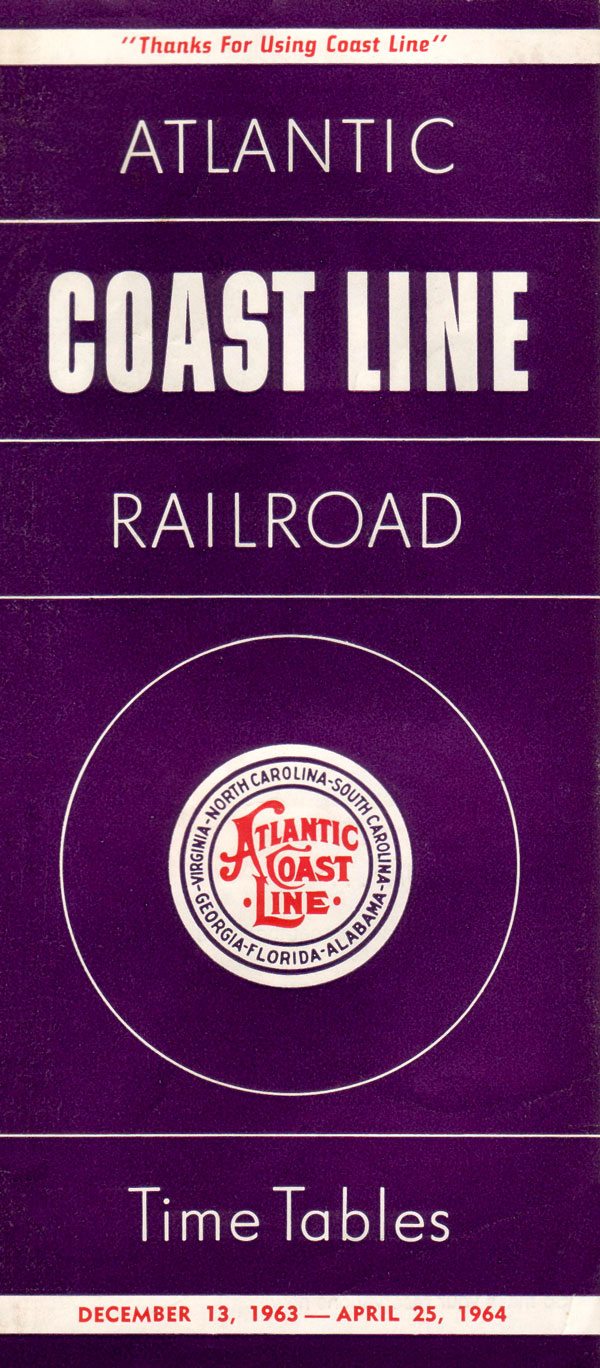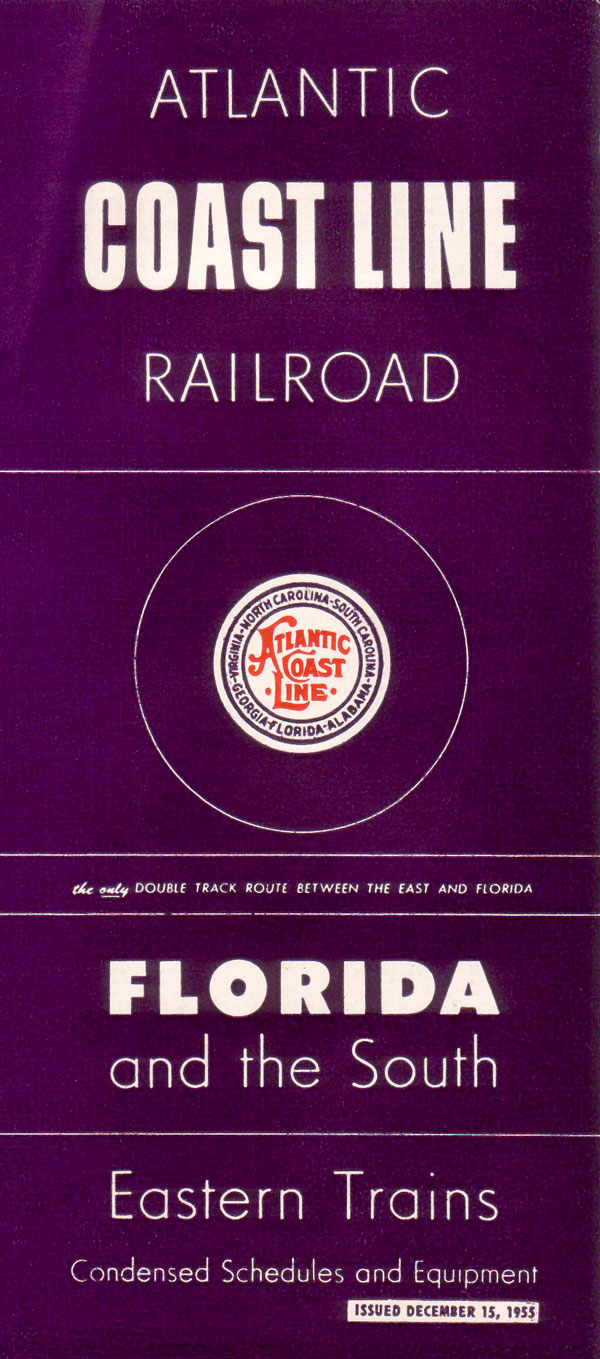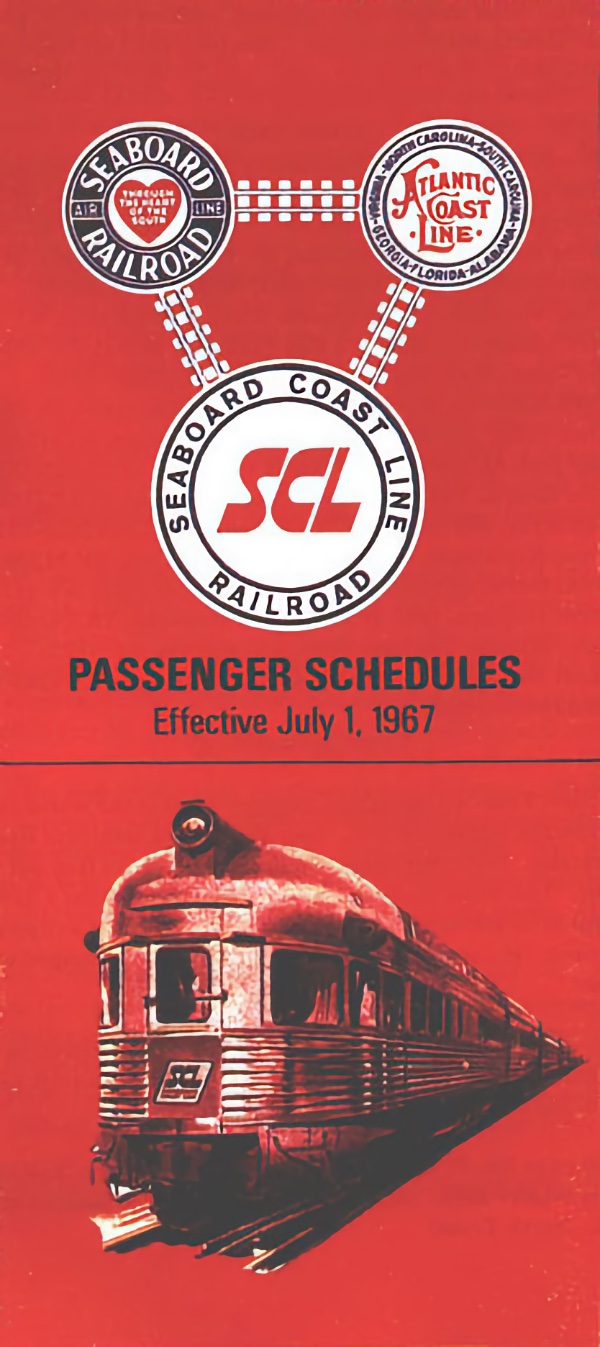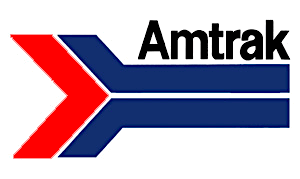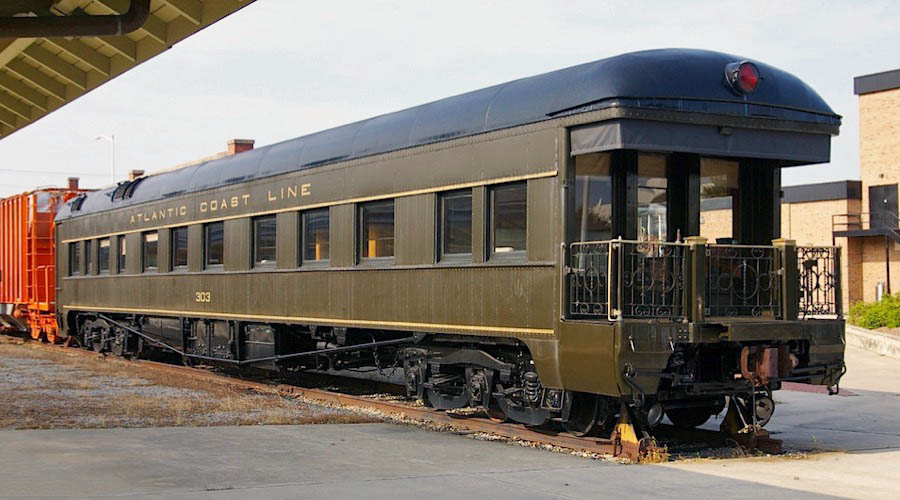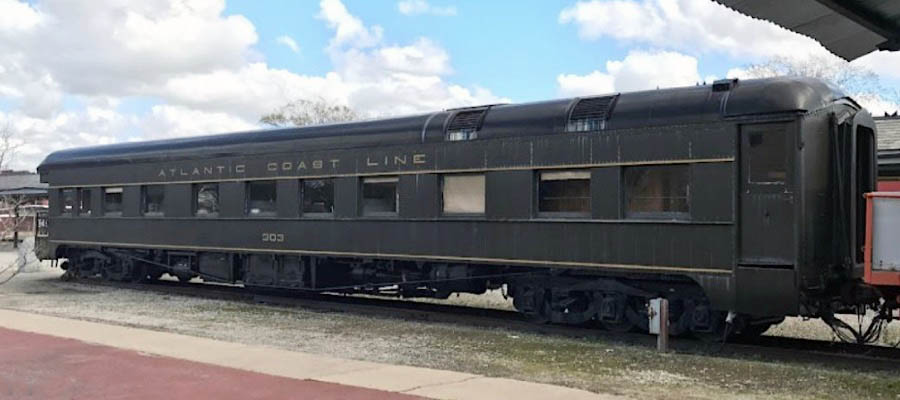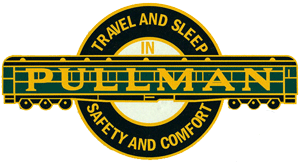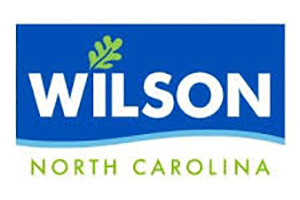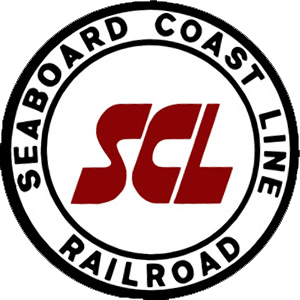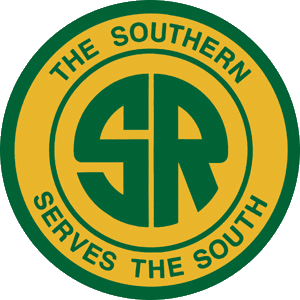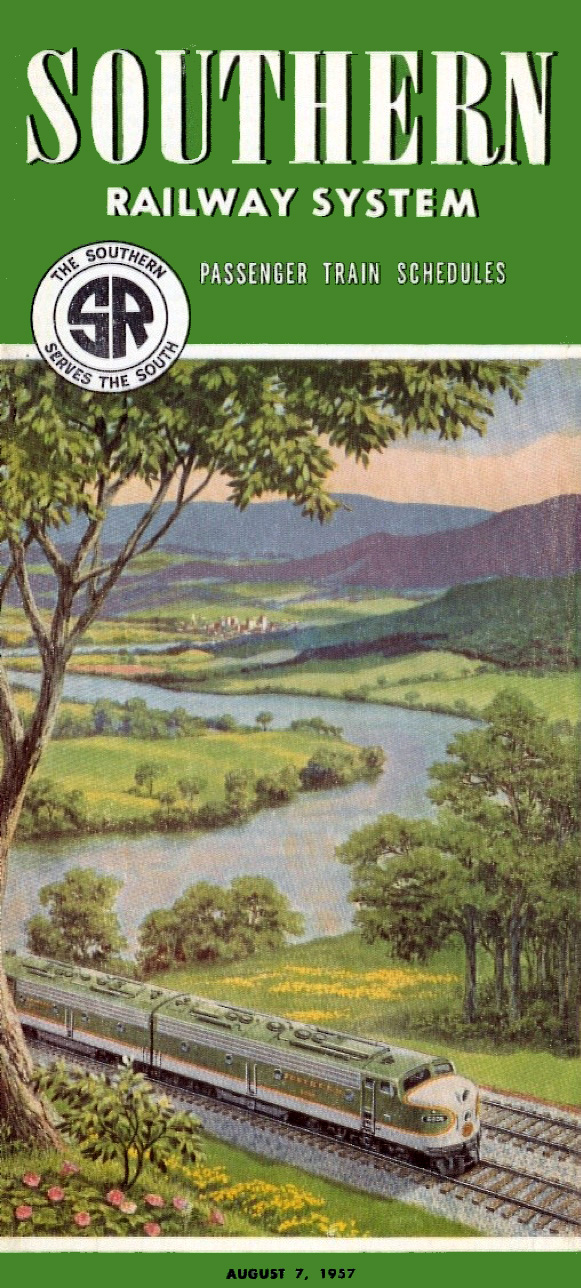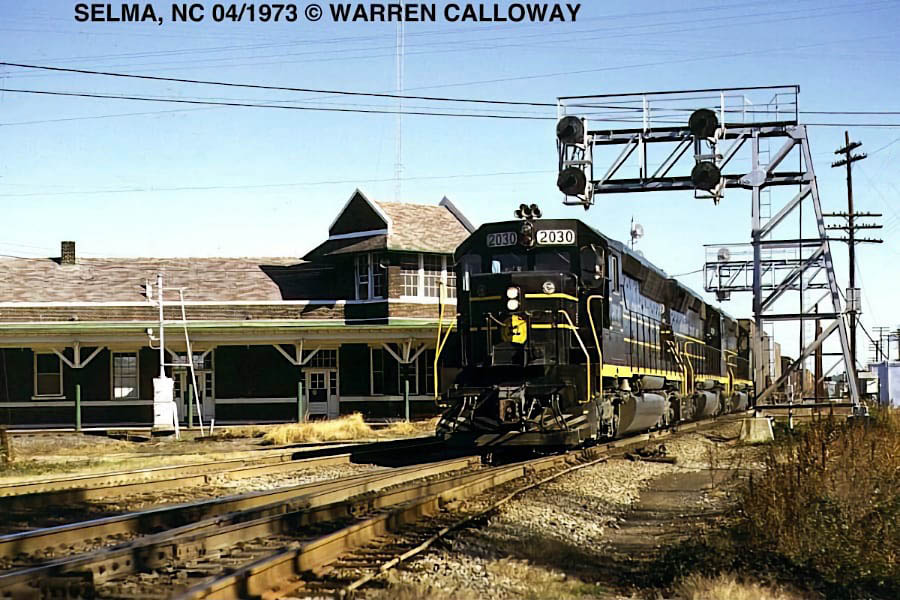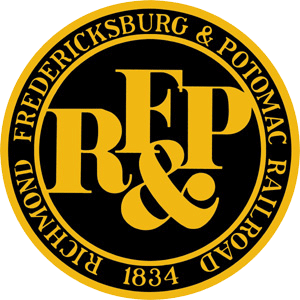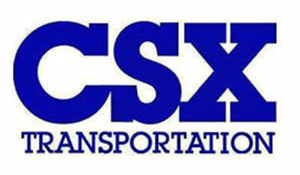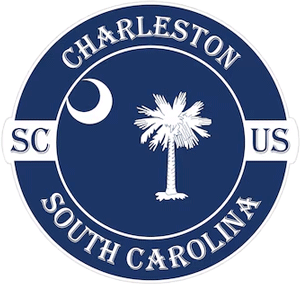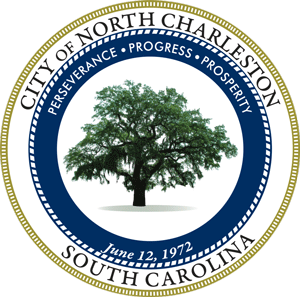

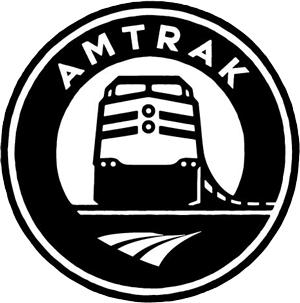
Palmetto
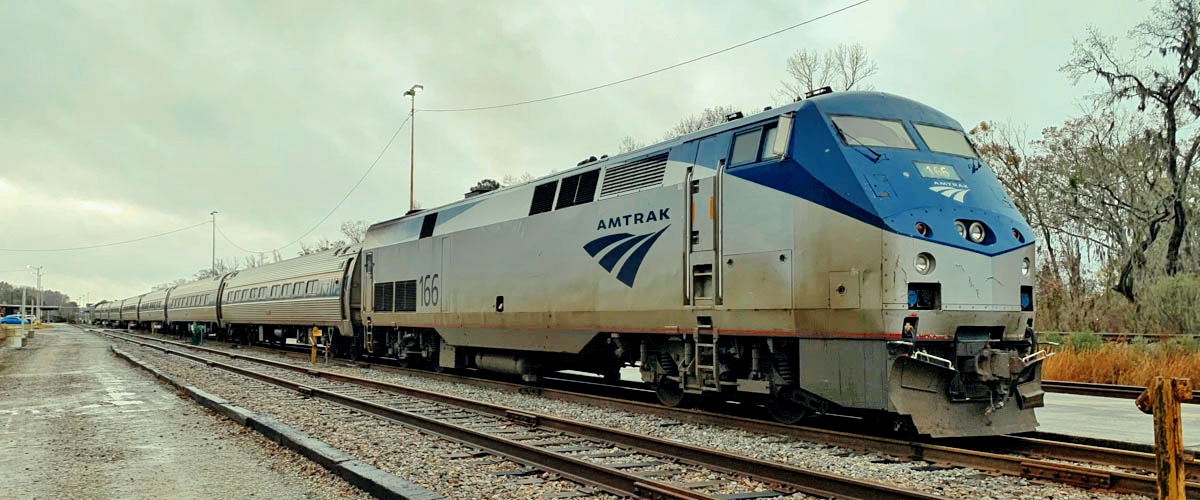
Savannah, Ga / Dec 2019 / RWH

jump to a
flag stop
- New York
- Philadelphia
- Washington
- Richmond
- Rocky Mount
- Wilson
- Selma-Smithfield
- Dillon
- Florence
- Kingstree
- Charleston
- Yemassee
- Savannah
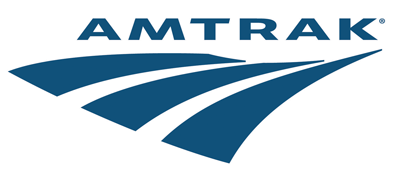
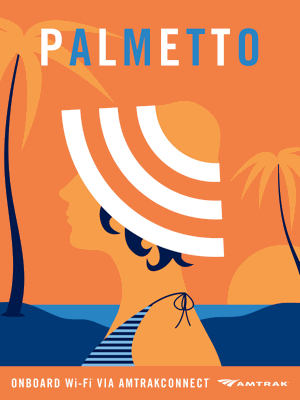
 he Palmetto is a daily passenger train operated by Amtrak on a 829-mile route between New York City and Savannah, Georgia, along the eastern seaboard via the Northeast Corridor, Washington, D.C., Richmond VA, Fayetteville NC , and Charleston SC. The Palmetto's trip is a shorter version of the Silver Meteor, which travels the same seaboard route but continues south to Miami FL. In 1996 the service was renamed the Silver Palm to coordinate with the other two Silver Service Florida routes, but the Palmetto name was restored in 2002. Although currently a daytime train, in the past the Palmetto provided overnight sleeper service to Florida. The first iteration of the Palmetto was introduced by Amtrak in the summer of 1976 as a seasonal service, drawing its name from the state tree of South Carolina. Although the Atlantic Coast Line Railroad had operated a Palmetto Limited in the past, that route served eastern Georgia and was not a predecessor of Amtrak's new service. Throughout the 1980s and 90s, the Palmetto's schedule, termination cities, and coordination with other Atlantic coast trains were adjusted many times before the service was finally cut in 1995 due to national budget contraints. Service over the same route was later restored with the name Silver Palm, which included sleeping and dining car services and Florida destinations. However, by 2004 the sleeping and dining services had been dropped, the route had been truncated back to Savannah, and the name had been returned to the Palmetto. Today's daily trains essentially follow the same route as the first Palmettos in the 1970s. The typical consist includes one locomotive, one each of a Viewliner II baggage car and an Amfleet snack/lounge car, and 4-5 Amfleet I coaches (including a Business Class car) typical of the east coast regional trains. Except for the portion north of Washington on the Amtrak-owned Northeast Corridor, the Palmetto operates over CSX Transportation mainline trackage.
he Palmetto is a daily passenger train operated by Amtrak on a 829-mile route between New York City and Savannah, Georgia, along the eastern seaboard via the Northeast Corridor, Washington, D.C., Richmond VA, Fayetteville NC , and Charleston SC. The Palmetto's trip is a shorter version of the Silver Meteor, which travels the same seaboard route but continues south to Miami FL. In 1996 the service was renamed the Silver Palm to coordinate with the other two Silver Service Florida routes, but the Palmetto name was restored in 2002. Although currently a daytime train, in the past the Palmetto provided overnight sleeper service to Florida. The first iteration of the Palmetto was introduced by Amtrak in the summer of 1976 as a seasonal service, drawing its name from the state tree of South Carolina. Although the Atlantic Coast Line Railroad had operated a Palmetto Limited in the past, that route served eastern Georgia and was not a predecessor of Amtrak's new service. Throughout the 1980s and 90s, the Palmetto's schedule, termination cities, and coordination with other Atlantic coast trains were adjusted many times before the service was finally cut in 1995 due to national budget contraints. Service over the same route was later restored with the name Silver Palm, which included sleeping and dining car services and Florida destinations. However, by 2004 the sleeping and dining services had been dropped, the route had been truncated back to Savannah, and the name had been returned to the Palmetto. Today's daily trains essentially follow the same route as the first Palmettos in the 1970s. The typical consist includes one locomotive, one each of a Viewliner II baggage car and an Amfleet snack/lounge car, and 4-5 Amfleet I coaches (including a Business Class car) typical of the east coast regional trains. Except for the portion north of Washington on the Amtrak-owned Northeast Corridor, the Palmetto operates over CSX Transportation mainline trackage.

 s you take the Palmetto from New York City to Savannah, GA, you'll be treated to a unique picture of the American South. Stop along the way to explore the charms of Richmond, VA, and tour the antebellum homes of Charleston, SC. In Savannah, you can wander the 22 squares that dot the city's historic downtown or stroll the beach of nearby Tybee Island. No matter what you decide to do and see, you'll want to return soon to experience more of the South's history and personality.
s you take the Palmetto from New York City to Savannah, GA, you'll be treated to a unique picture of the American South. Stop along the way to explore the charms of Richmond, VA, and tour the antebellum homes of Charleston, SC. In Savannah, you can wander the 22 squares that dot the city's historic downtown or stroll the beach of nearby Tybee Island. No matter what you decide to do and see, you'll want to return soon to experience more of the South's history and personality.
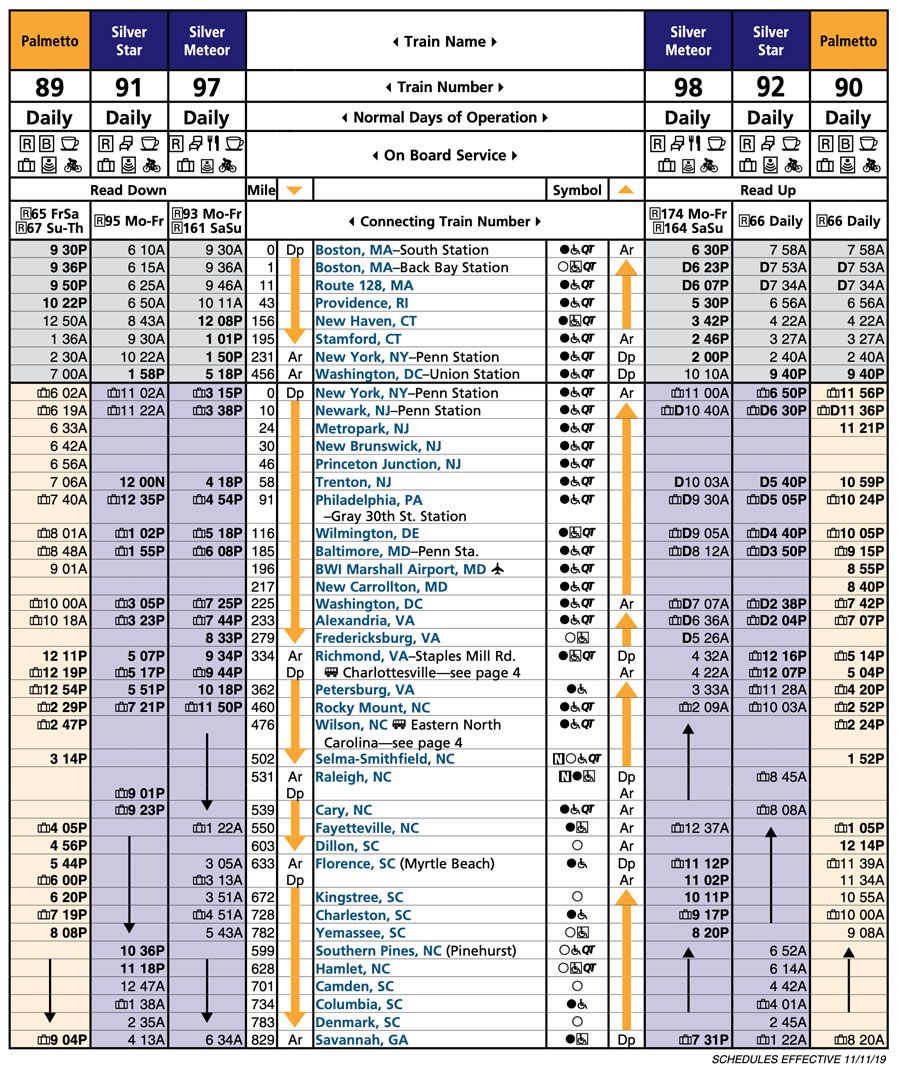
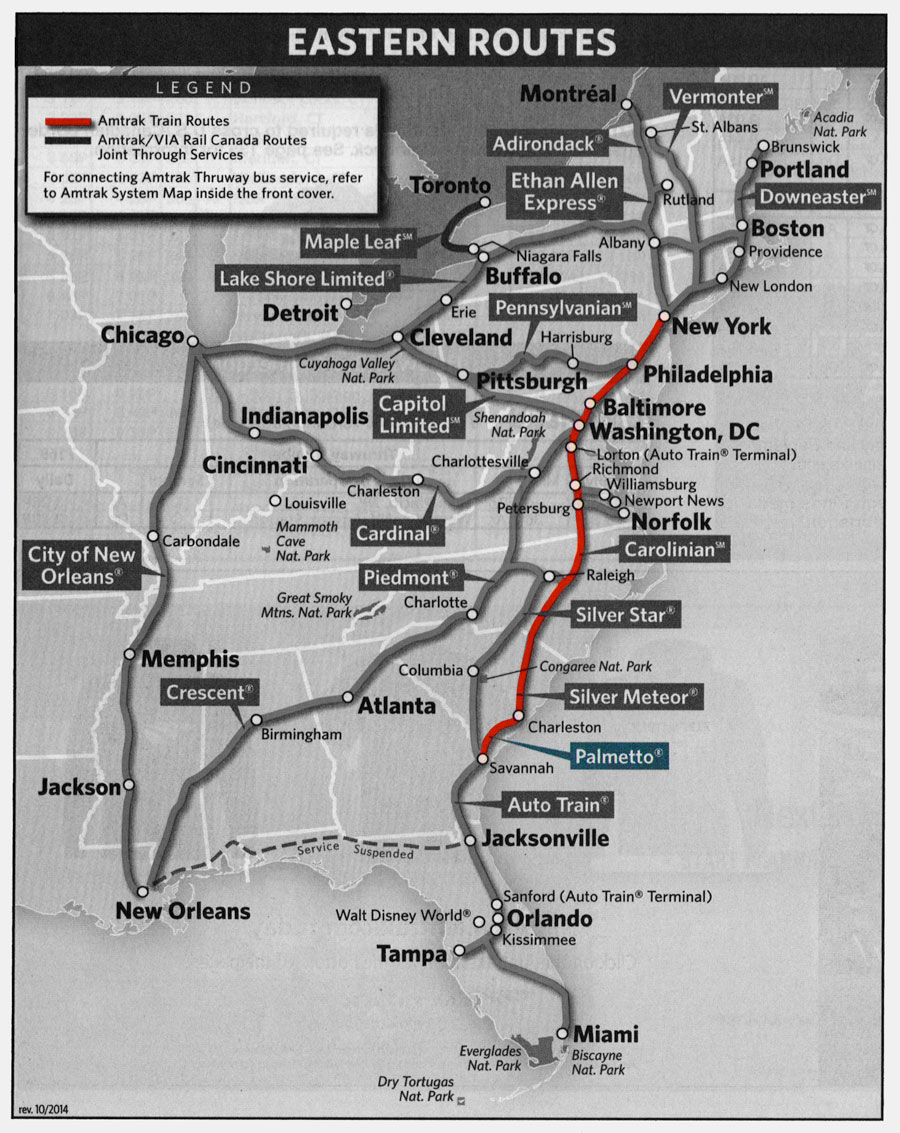
Palmetto route map / adapted RWH

artwork RWH
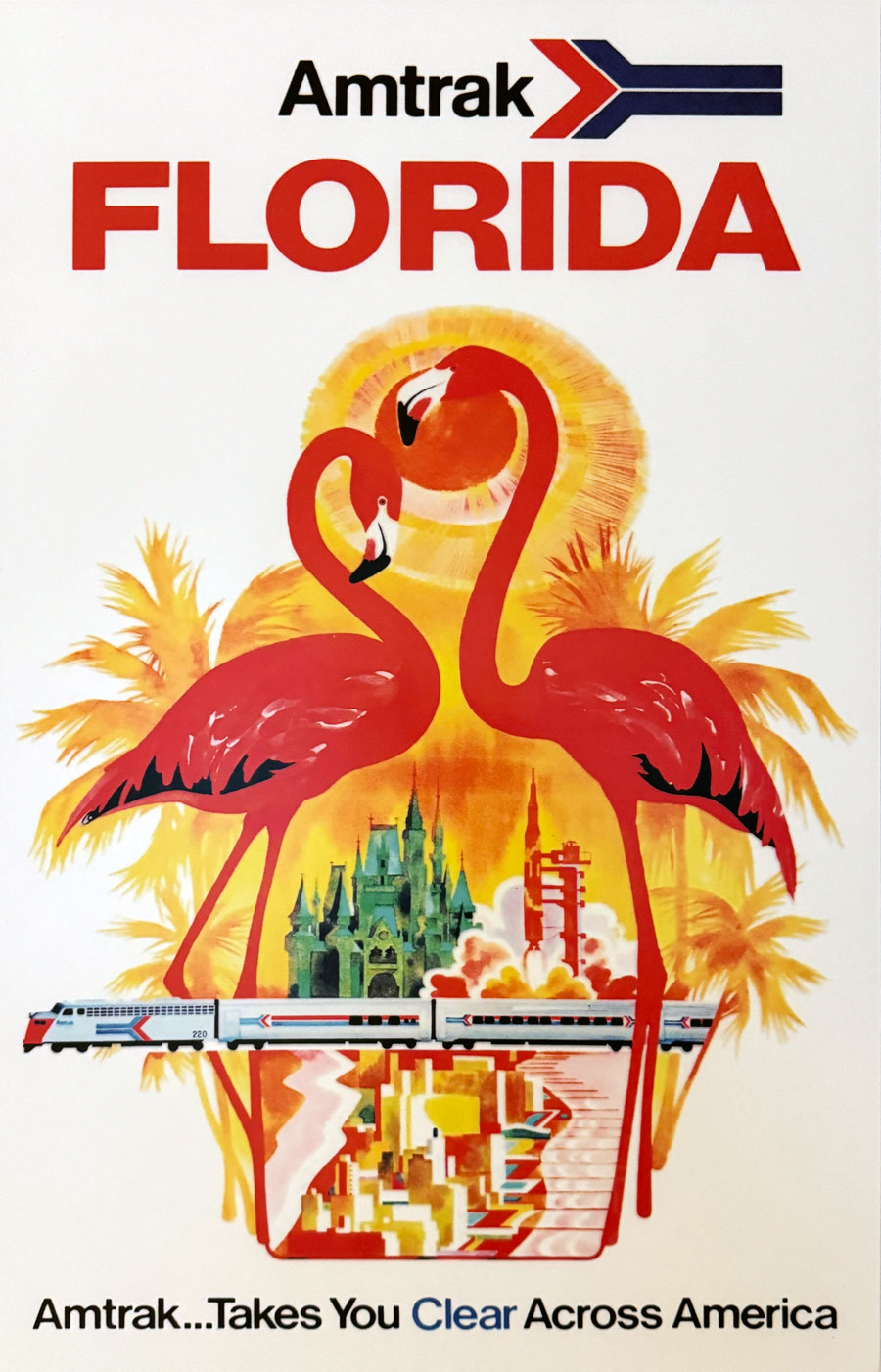
collection
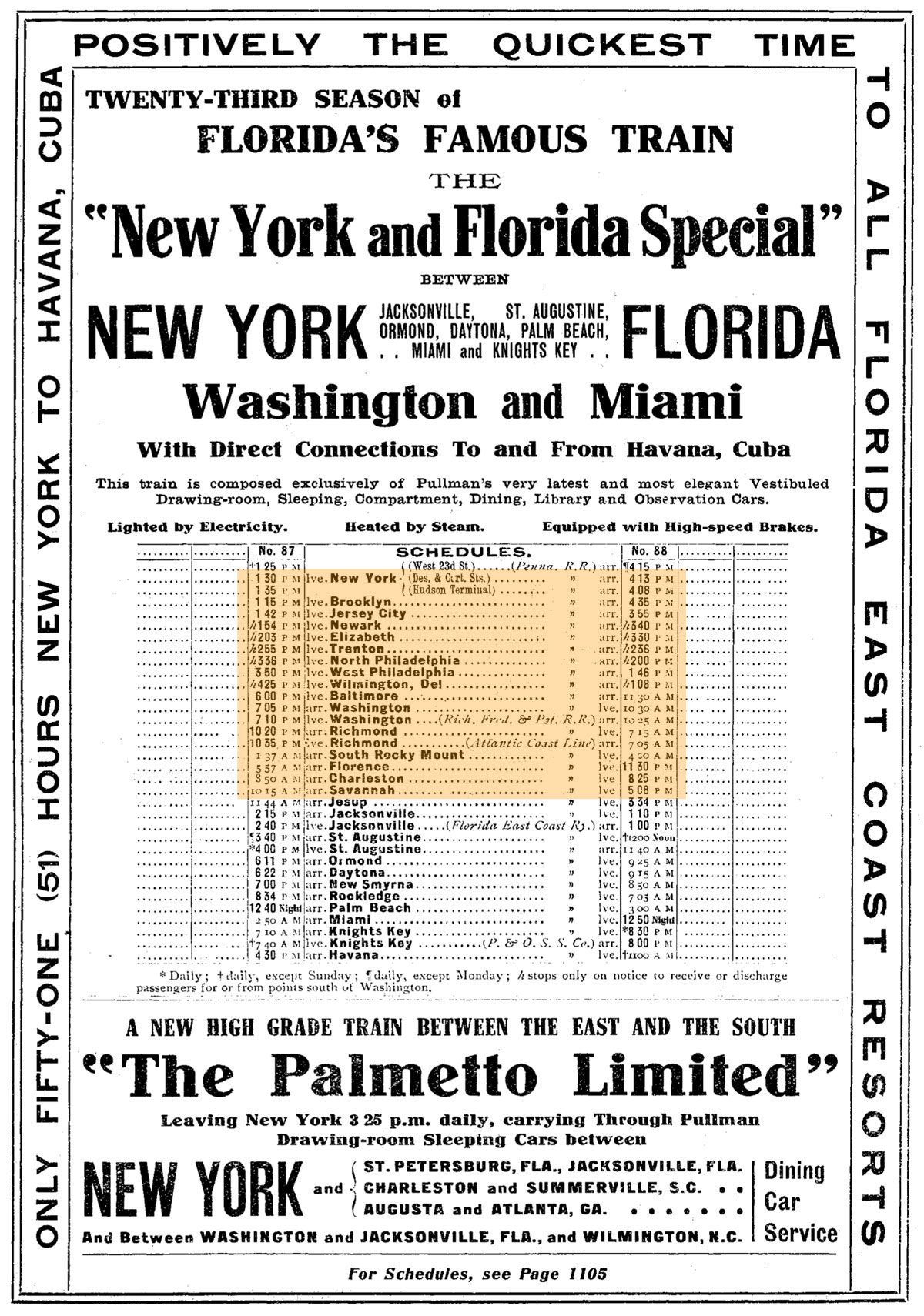
1910 Official Guide ad / collection
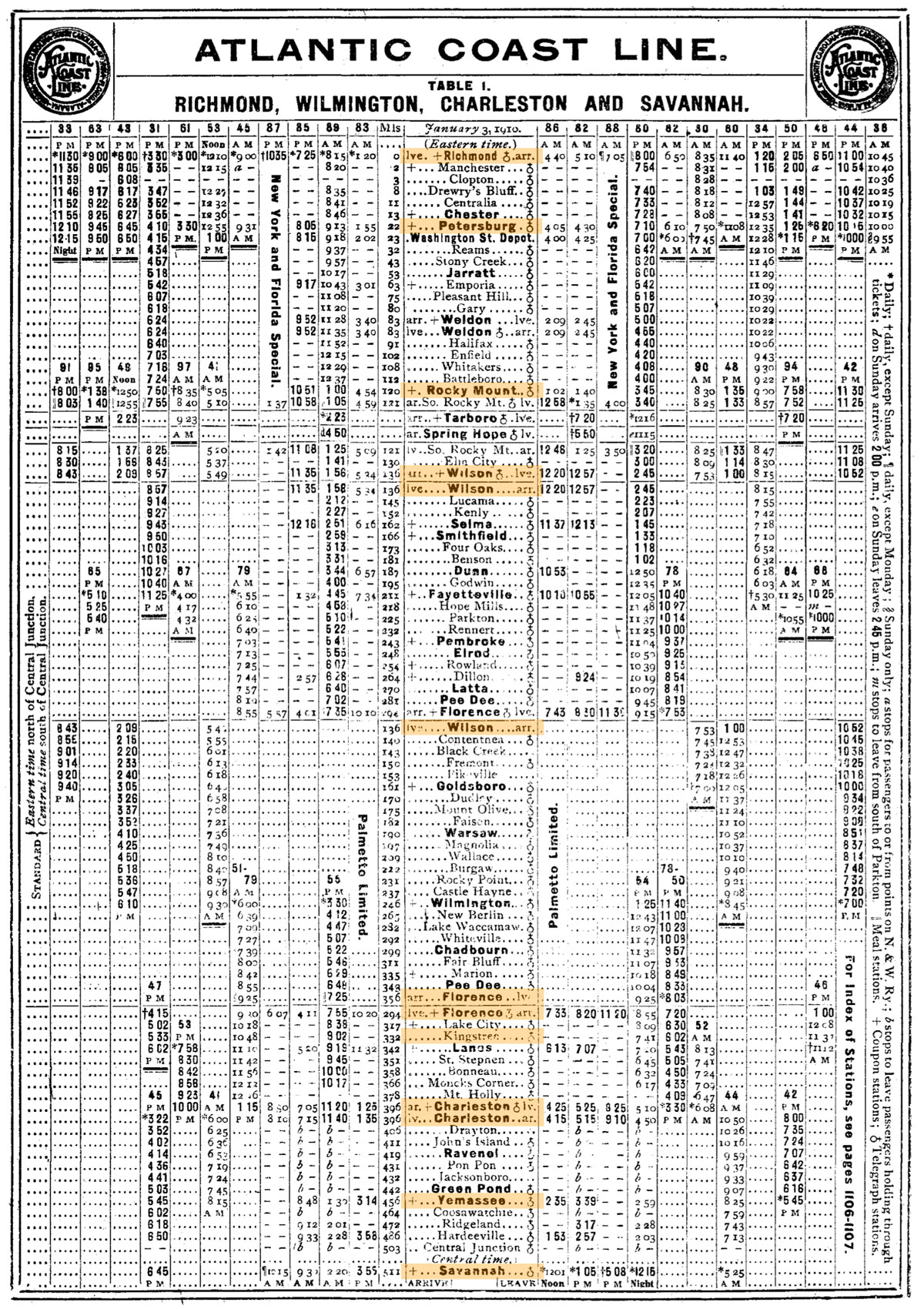
1910 Official Guide timetable / collection

 Amtrak #90 consist - December 30, 2019
Amtrak #90 consist - December 30, 2019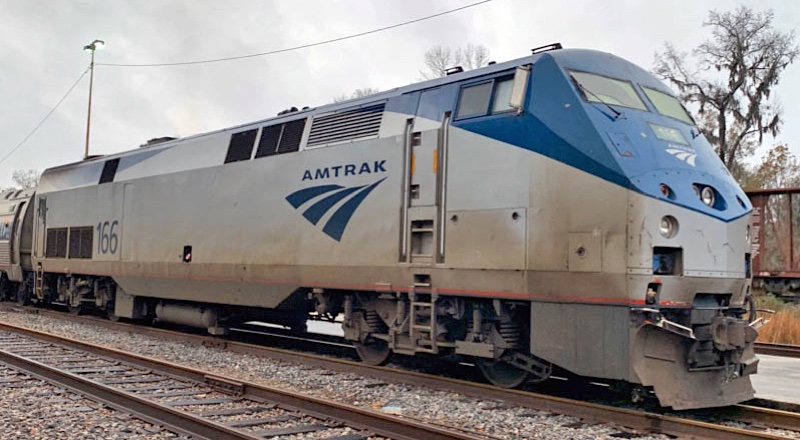
Amtrak #166
Dec 2019 / RWH


Amtrak #166


Amtrak #82626
Amfleet I regional coach / Dec 2019 / RWH

Amtrak #25008
Amfleet II coach / Dec 2019 / RWH
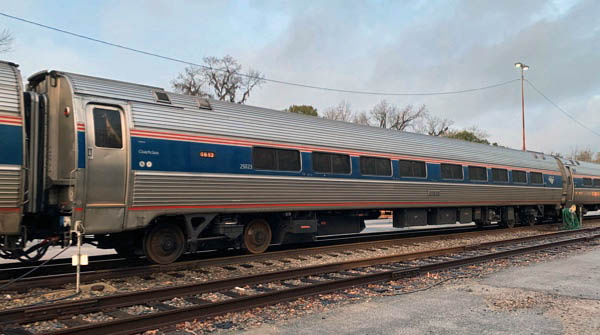
Amtrak #25023
Amfleet II coach / Dec 2019 / RWH
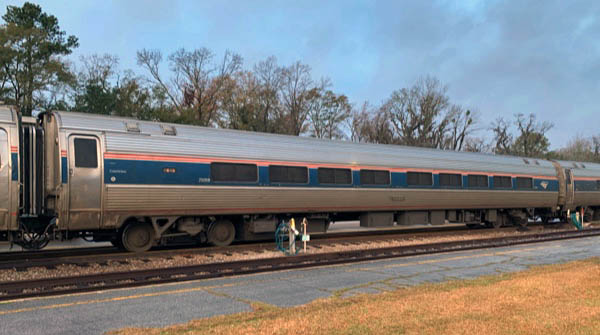
Amtrak #25059
Amfleet II coach / Dec 2019 / RWH
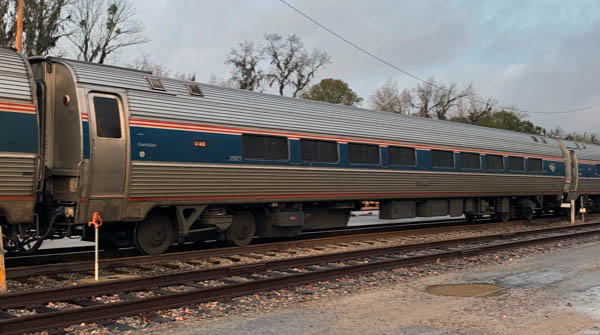
Amtrak #25073
Amfleet II coach / Dec 2019 / RWH

Amtrak #43372
Amfleet I full dinette / Dec 2019 / RWH

Amtrak #81517
Amfleet I regional business coach / Dec 2019 / RWH
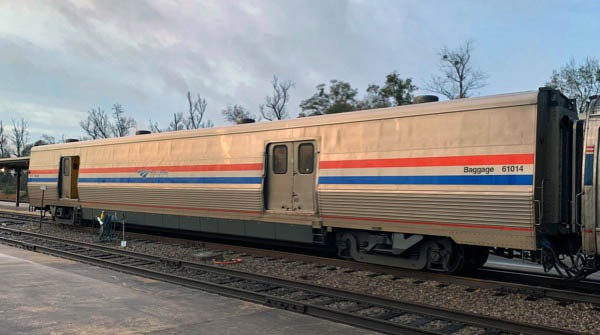
Amtrak #61014
Viewliner II baggage / Dec 2019 / RWH

Amfleet coach interior / Dec 2019 / RWH

RWH

Amfleet dinette interior / Dec 2019 / RWH
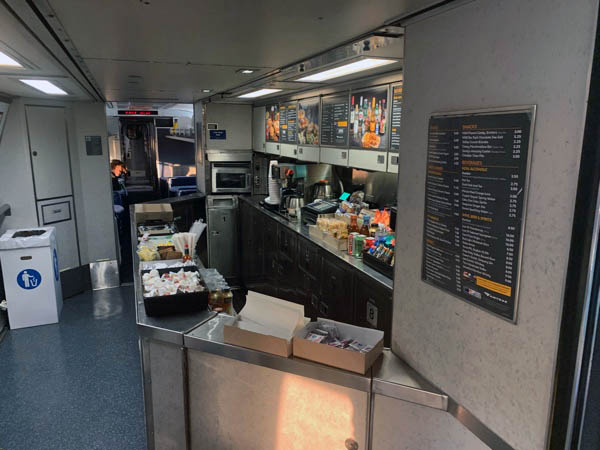
Dec 2019 / RWH
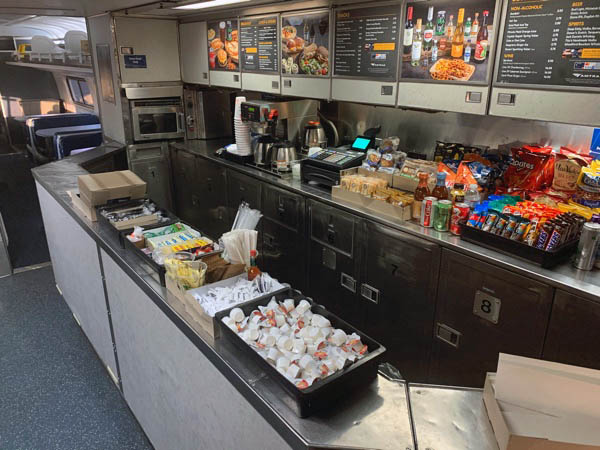
Dec 2019 / RWH
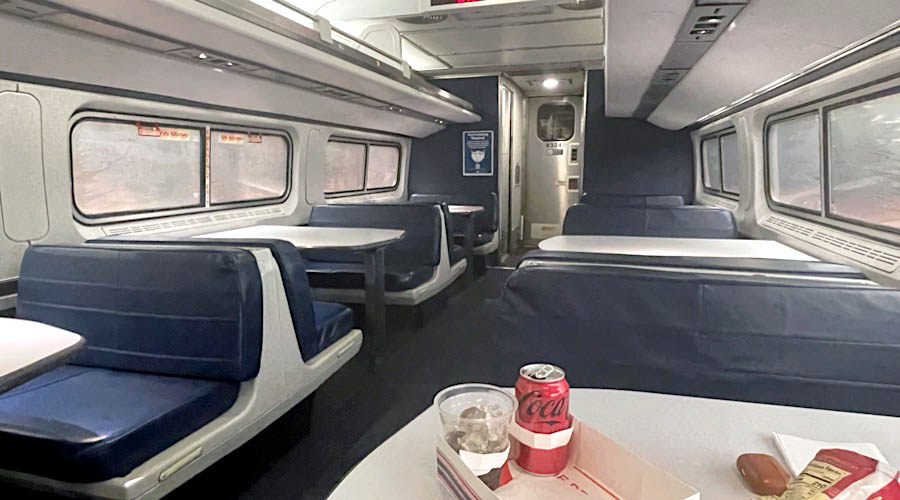
Feb 2022 / RWH
 New York
New York
 New York
New York

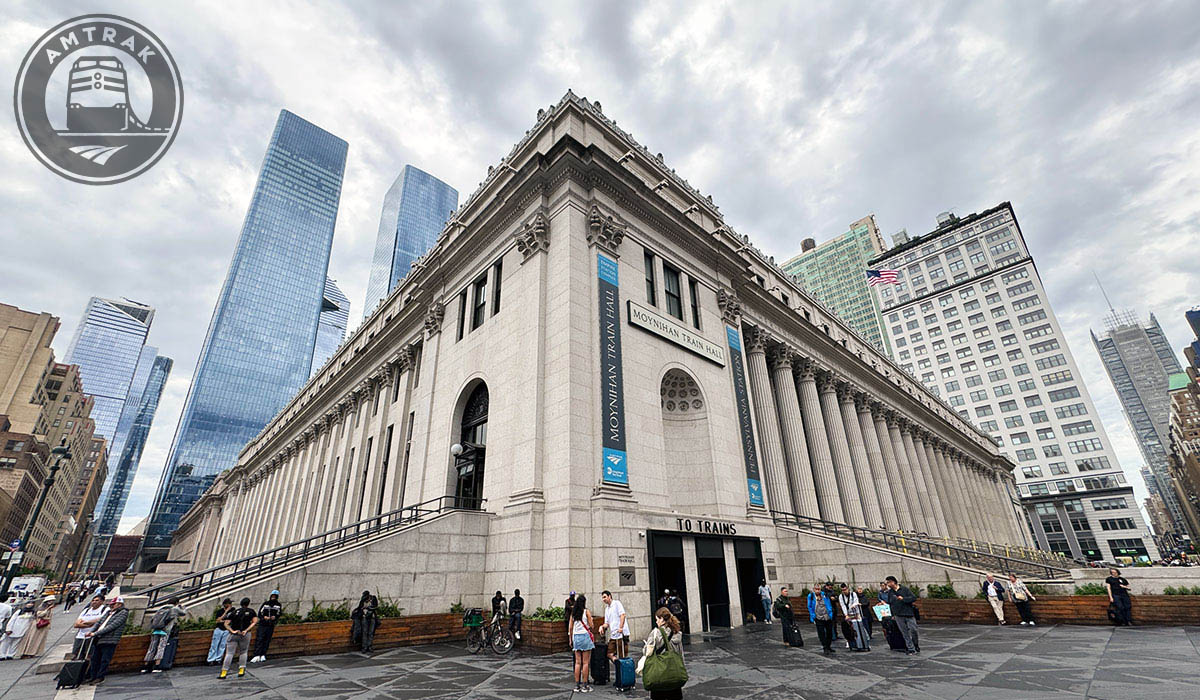
New York, NY / May 2024 / RWH

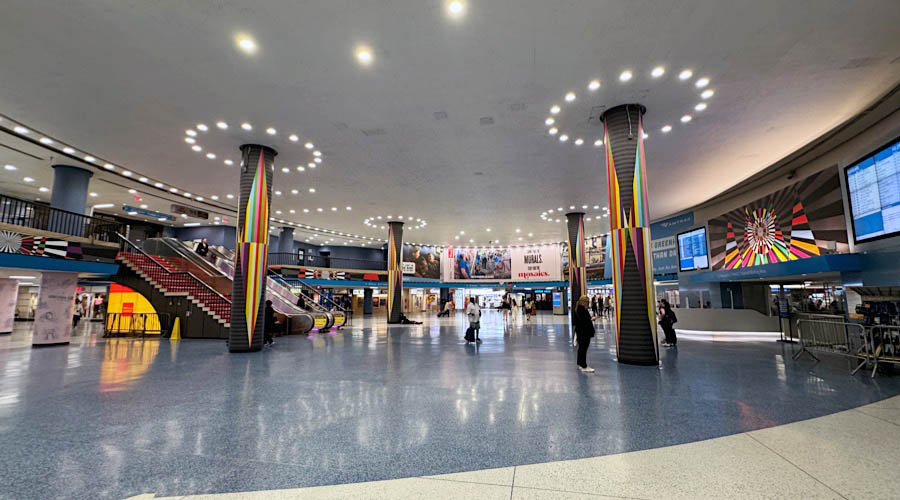

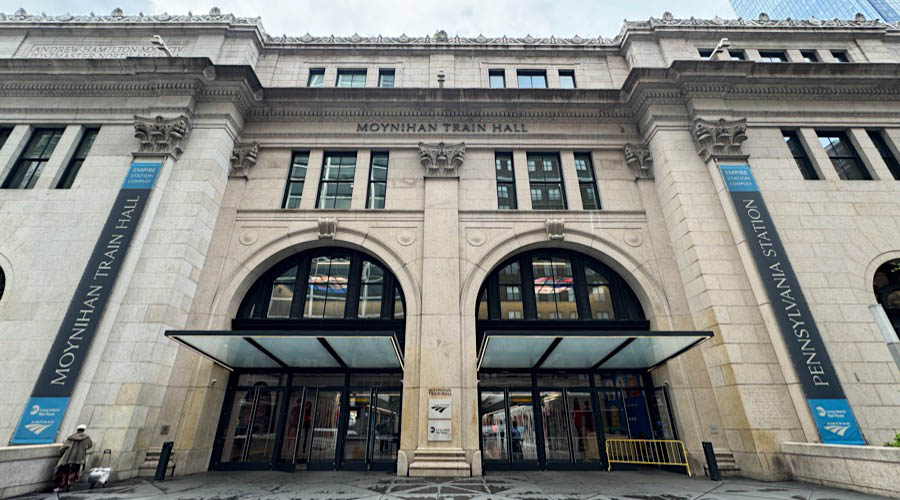
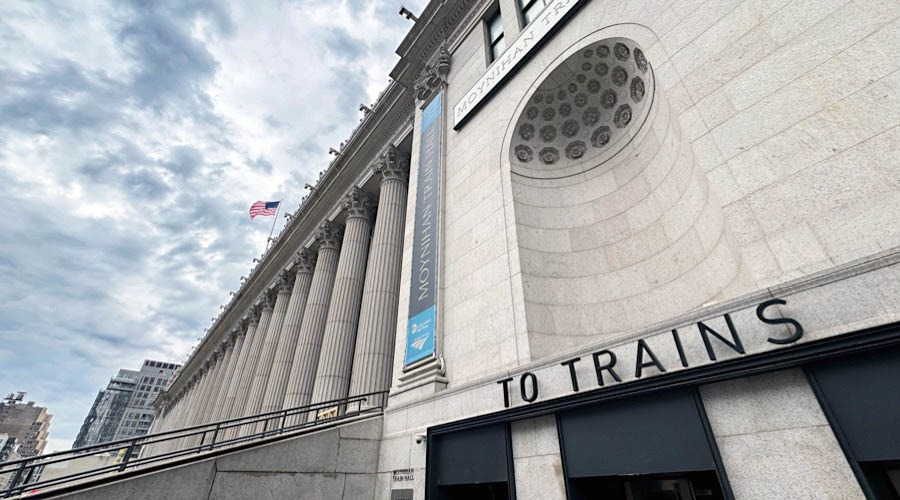
RWH

See our complete New York Penn Station scrapbook in Amtrak Great Stations
 Pennsylvania
Pennsylvania
 Philadelphia
Philadelphia

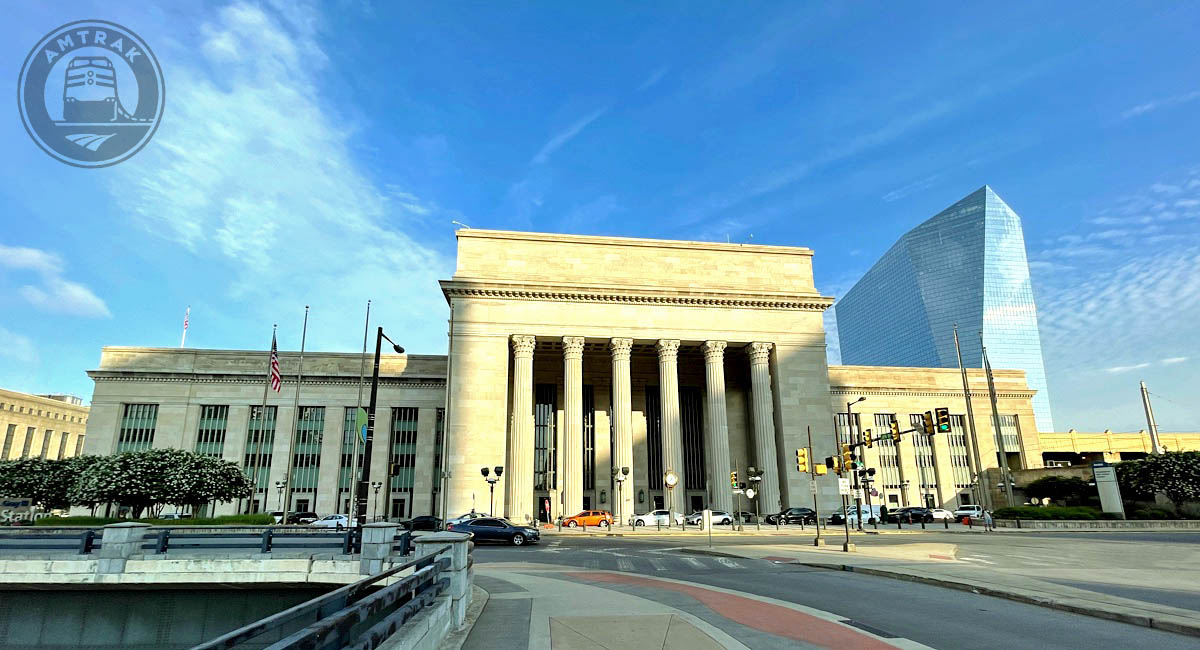
Philadelphia, Pa / Jul 2022 / RWH

See our complete Philadelphia 30th Street Station scrapbook in Amtrak Great Stations
 D. Columbia
D. Columbia
 Washington DC
Washington DC

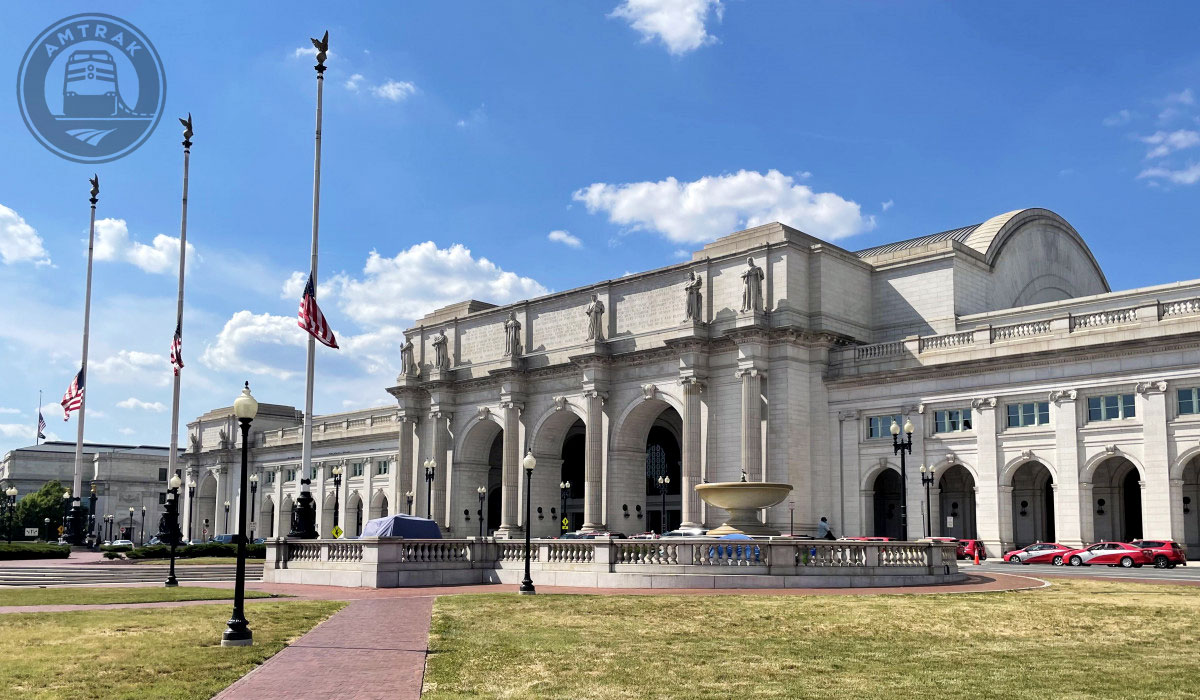
Washington, DC / Aug 2024 / RWH
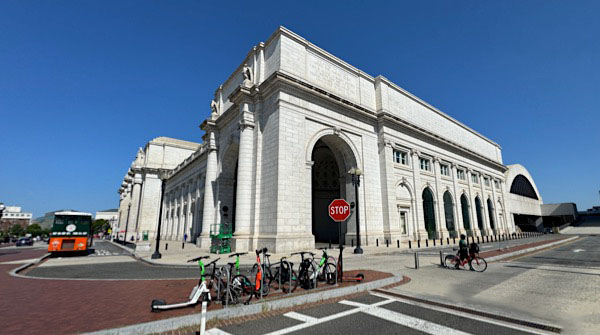
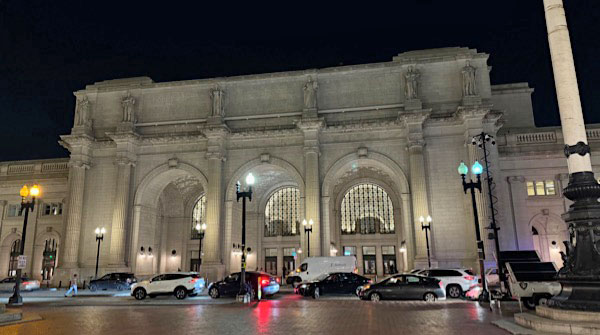
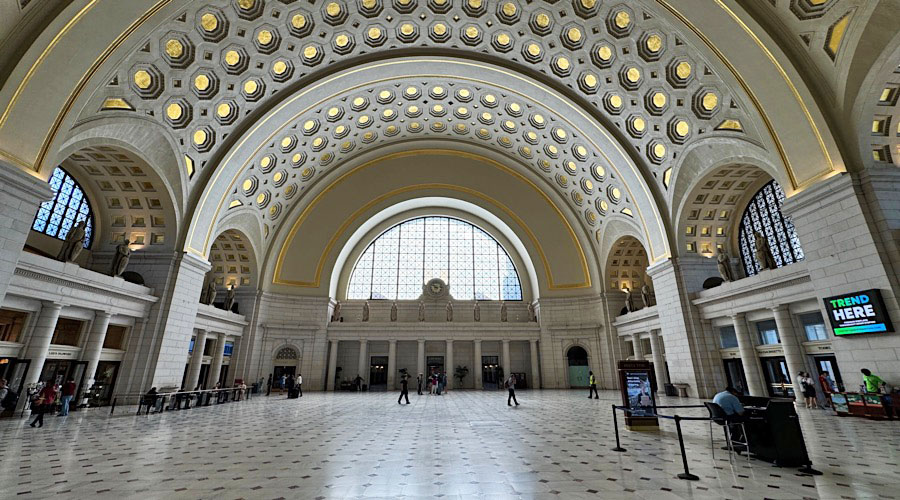
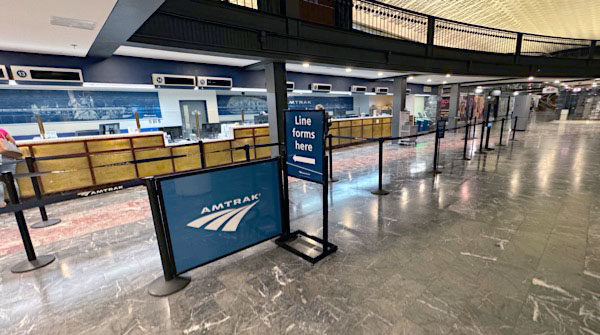
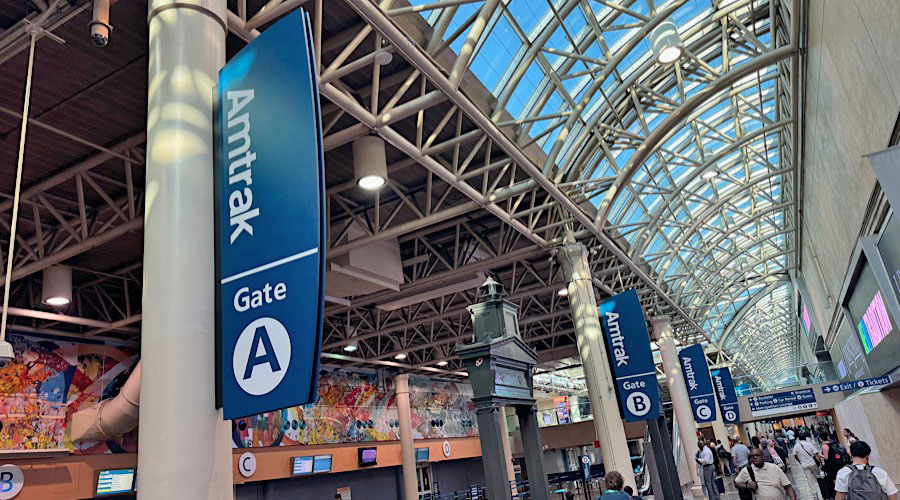
RWH

See our complete Washington Union Station scrapbook in Amtrak Great Stations
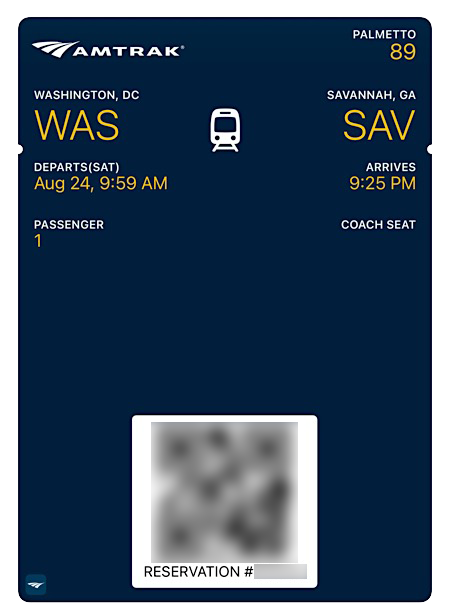
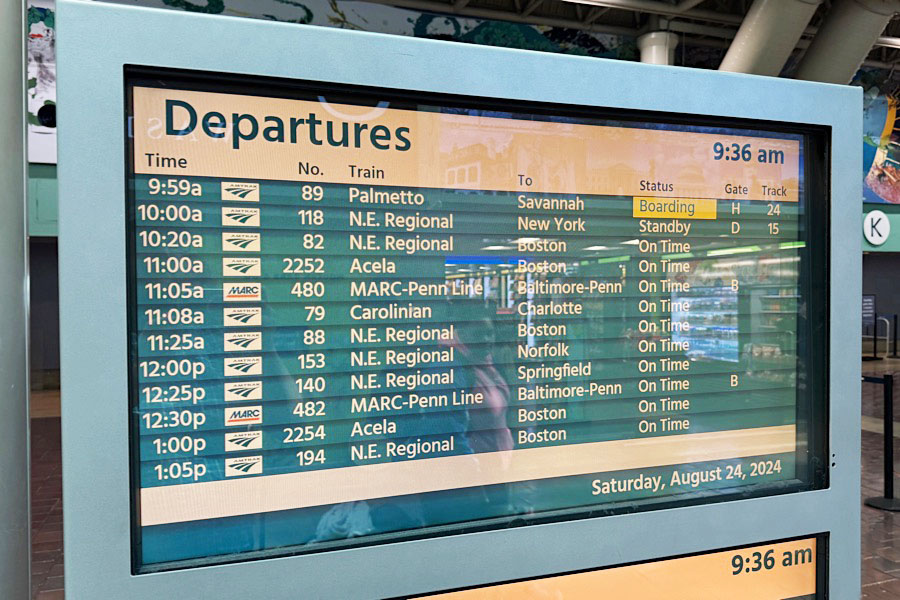
Washington, DC / Aug 2024 / RWH
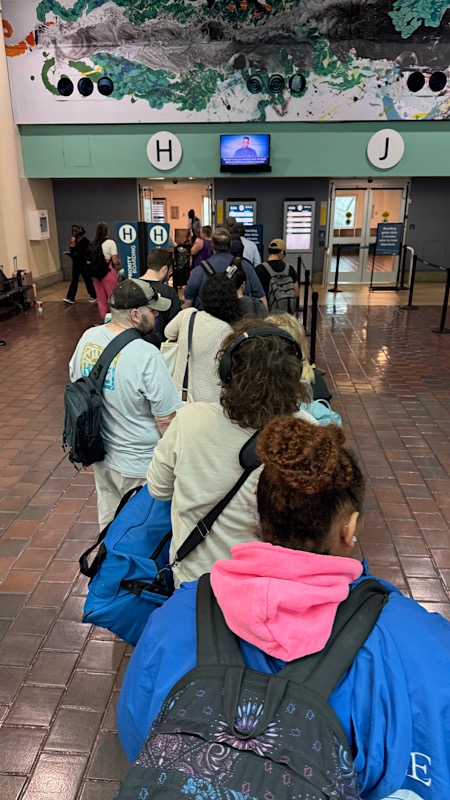
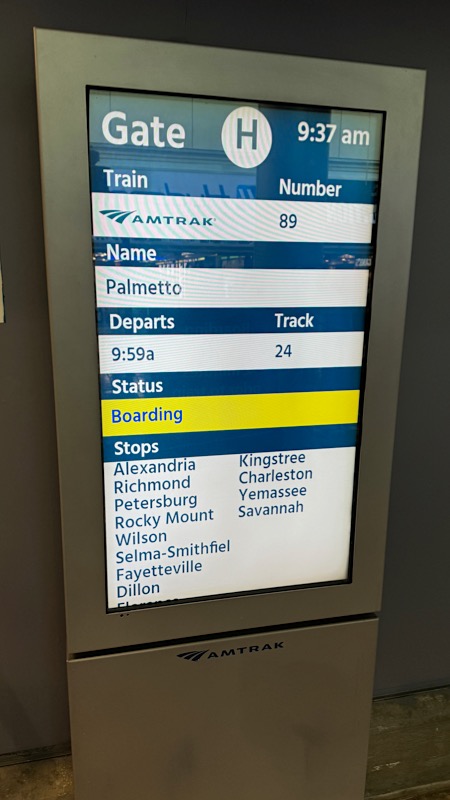
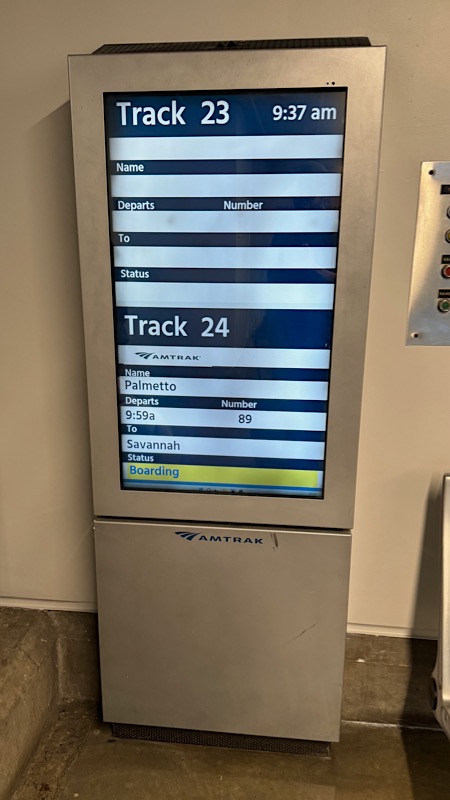
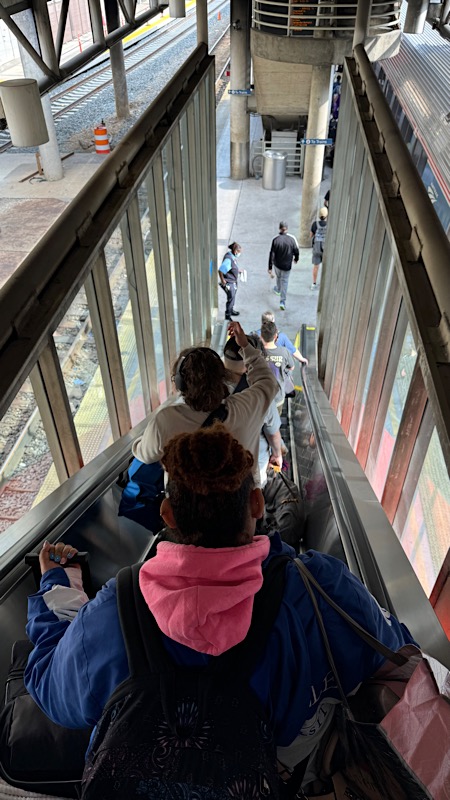

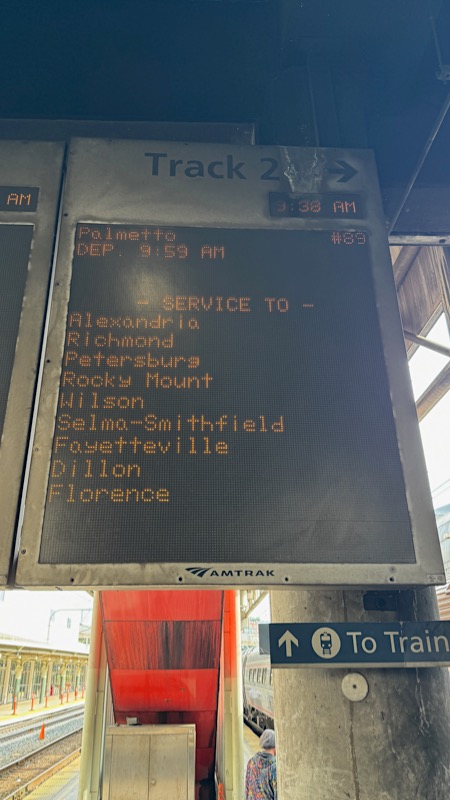


Washington, DC / Aug 2024 / RWH

Aug 2024 / RWH
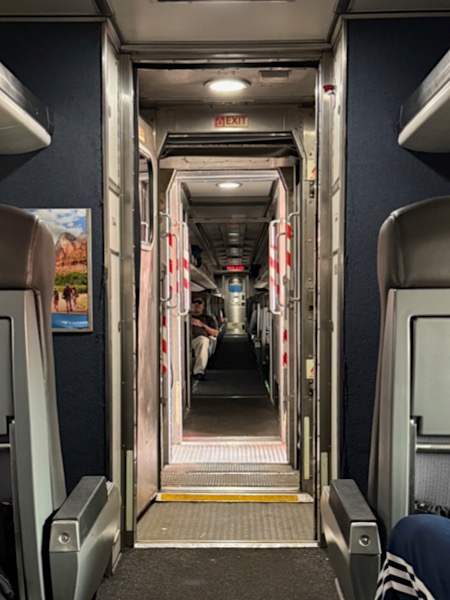
Aug 2024 / RWH
 Union @ Night
Union @ Night
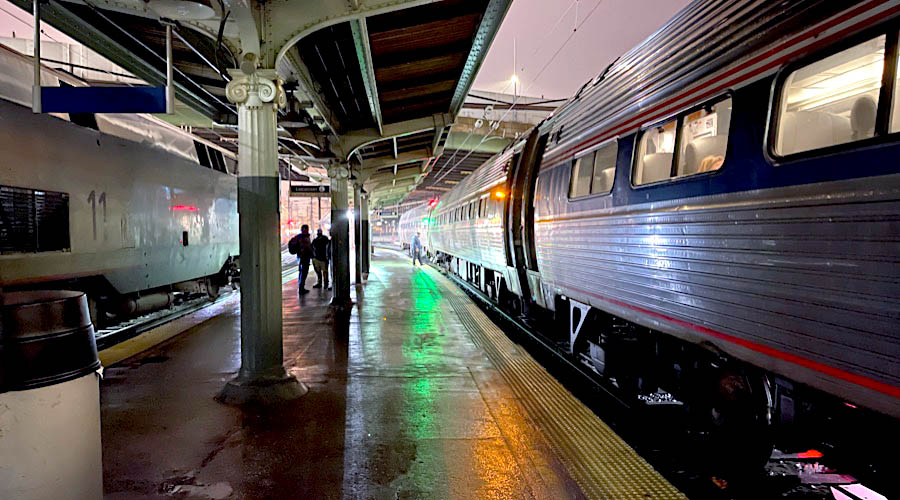
Washington, DC / Feb 2022 / RWH

Washington, DC / Feb 2022 / RWH

Washington, DC / Feb 2022 / RWH

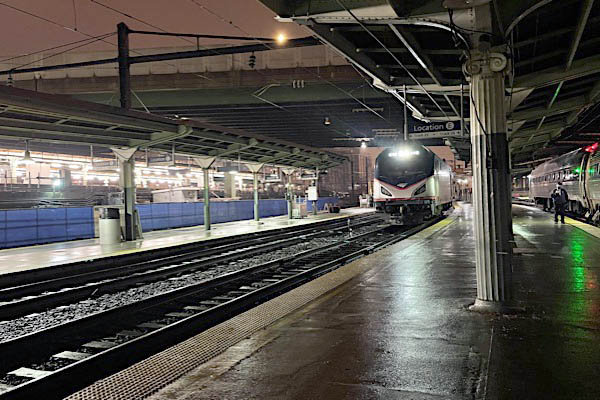
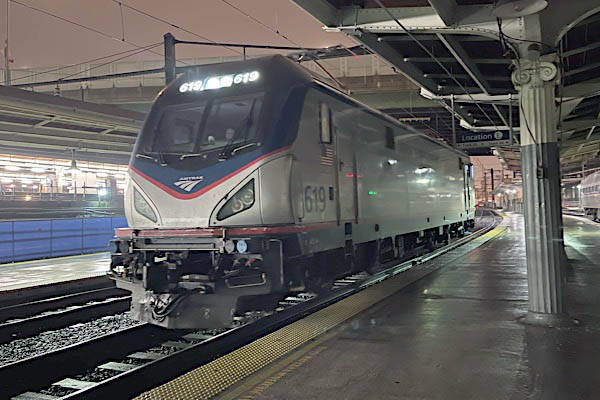
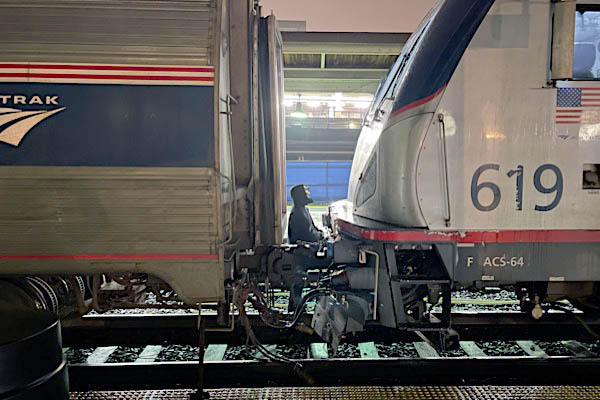
Washington, DC / Feb 2022 / RWH

Washington, DC / Feb 2022 / RWH
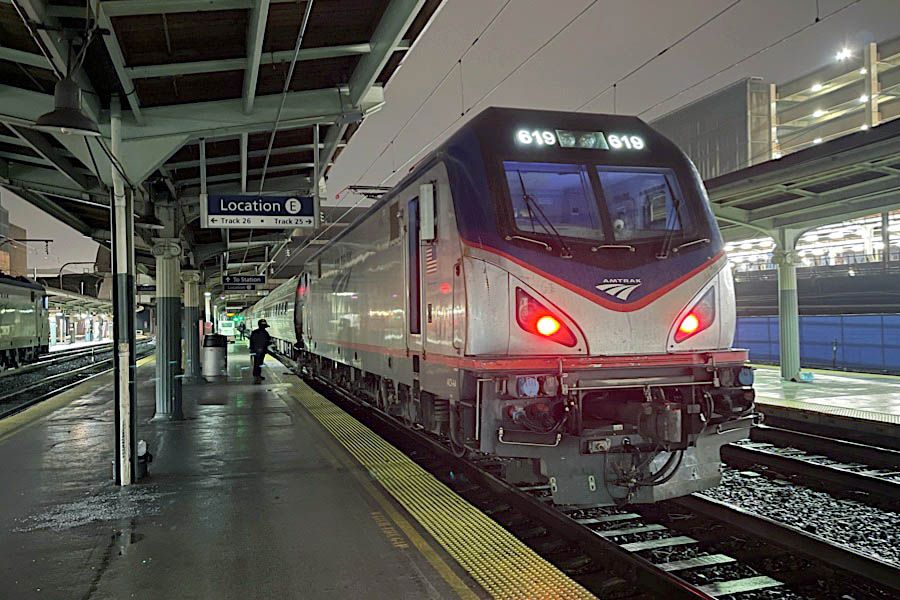
Washington, DC / Feb 2022 / RWH

Washington Union Station - February 9, 2022 — Dismounted southbound Palmetto #89 to watch locomotive changeout procedure, transition from electric to diesel-electric motive power upon leaving Northeast Corridor overhead catenary. Northbound trains swap power in reverse procedure. Air brakes and Head End Power disconnected at first coach by Amtrak mechanical department. Amtrak #619 (Siemens ACS-64 b. 2014) uncoupled and pulled away to locomotive terminal. Amtrak #5 (General Electric "Genesis" P42DC b. 1996) backed into position and coupled. Brakes and power reattached. Reboarded Palmetto for departure.
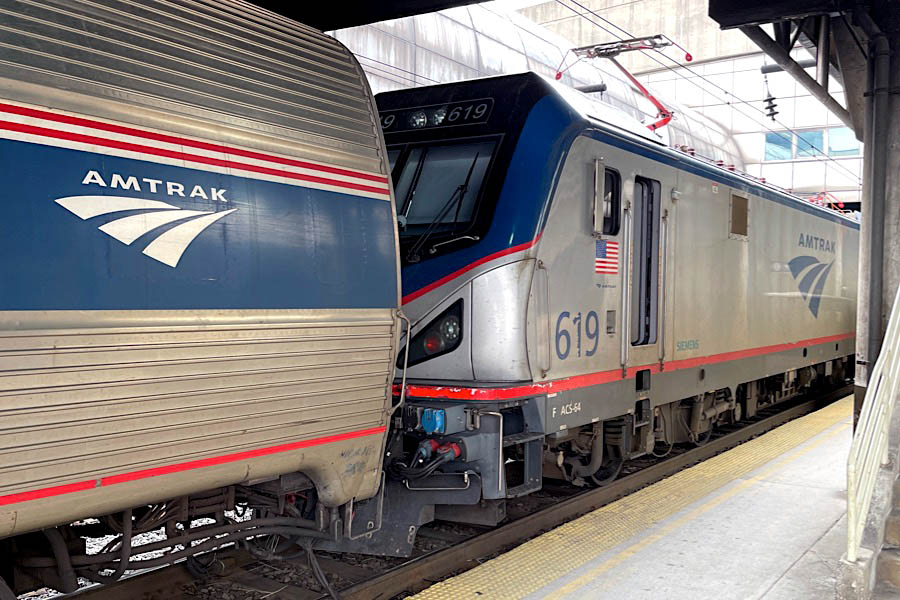
Washington, DC / Feb 2022 / RWH
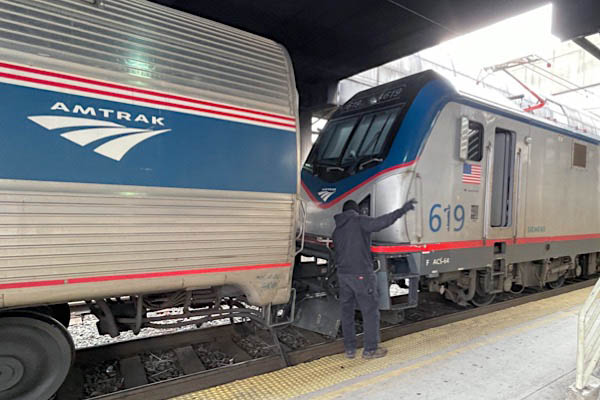
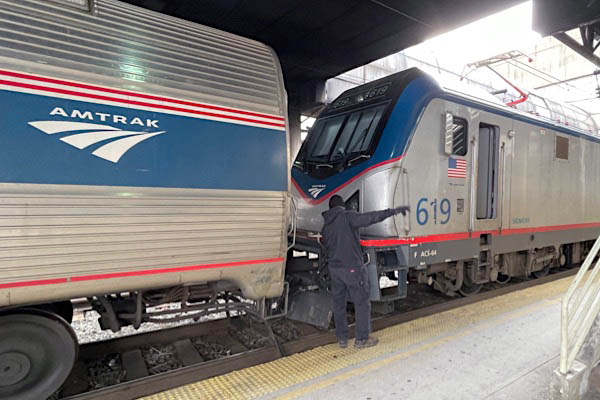
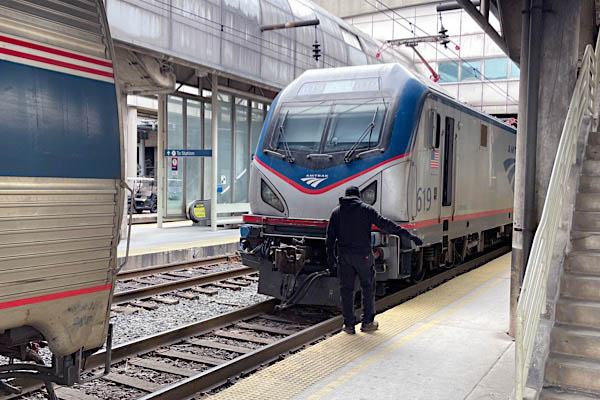
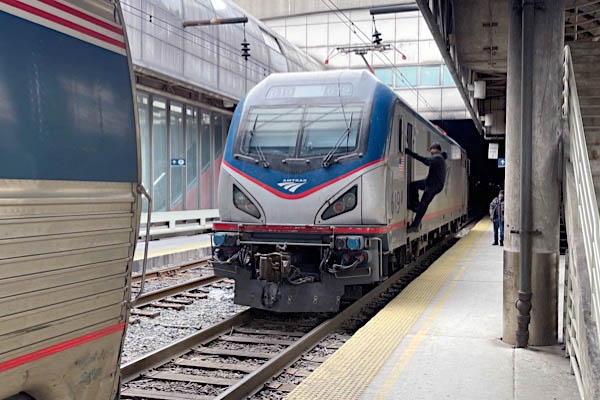
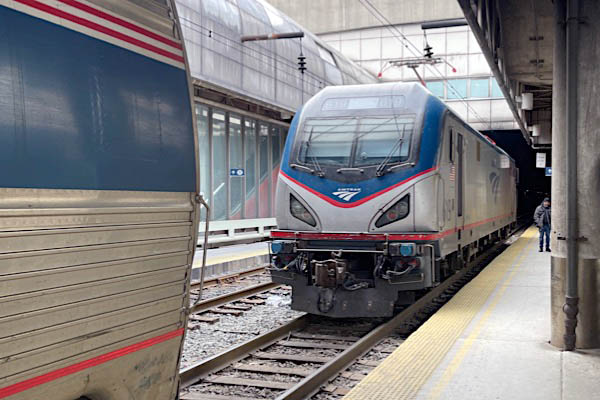
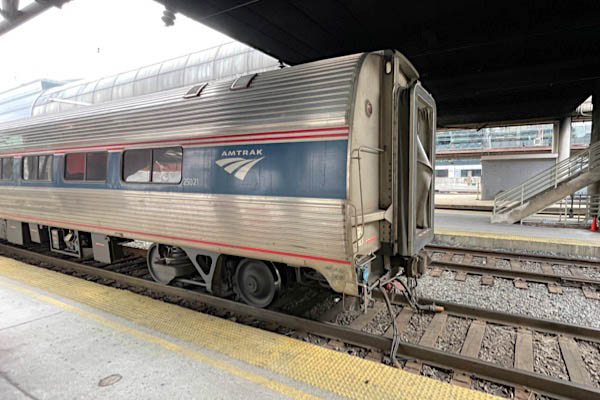
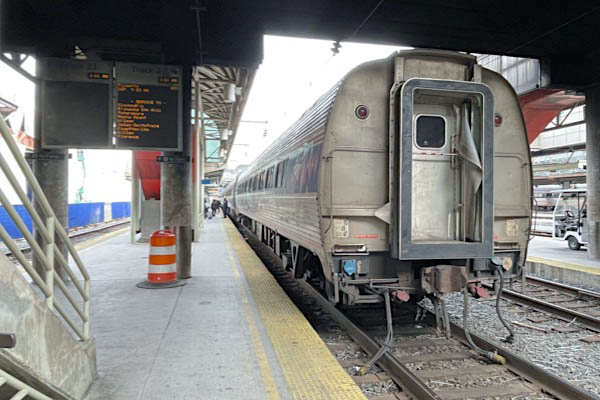
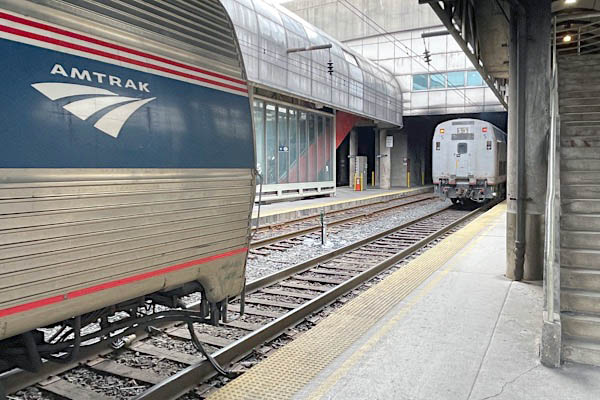
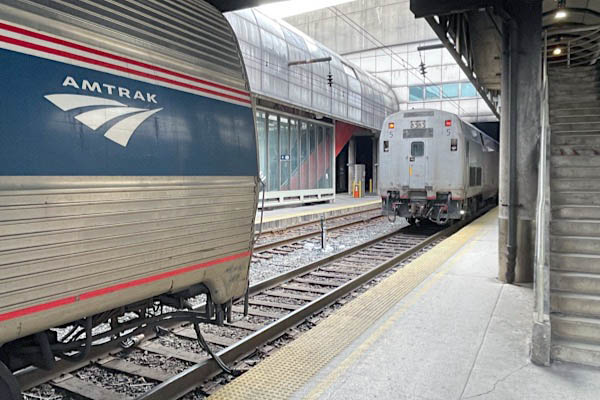
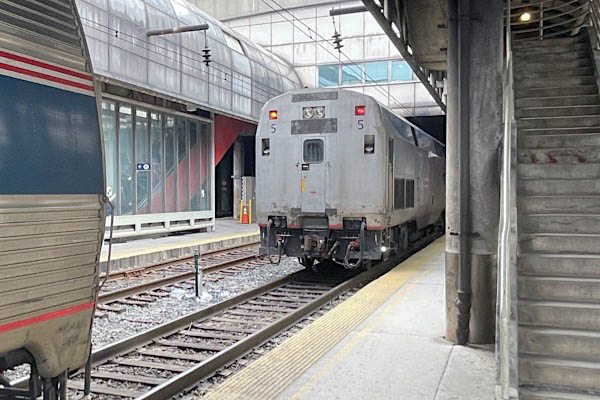


Washington, DC / Feb 2022 / RWH
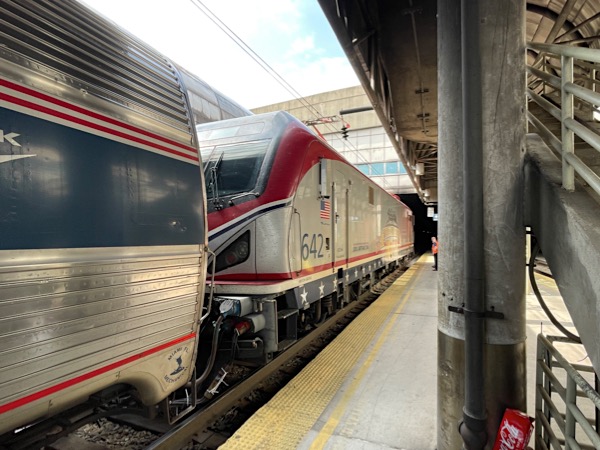
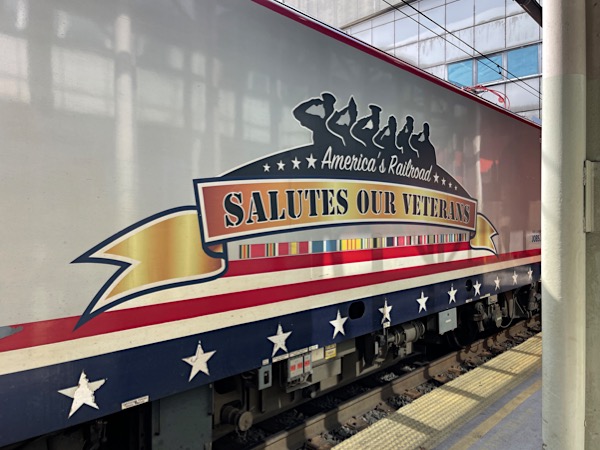
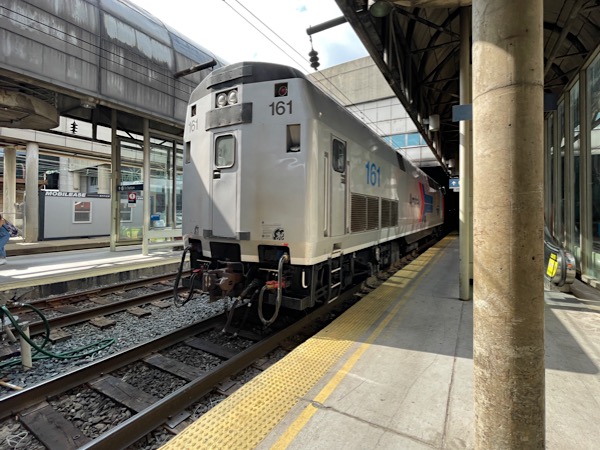
Washington, DC / Jul 2022 / RWH
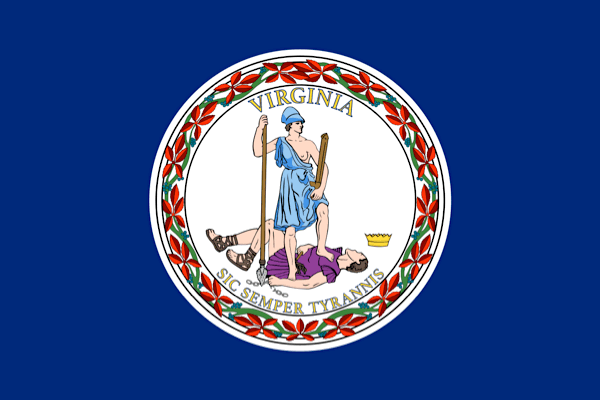 Virginia
Virginia
 Richmond, Va
Richmond, Va
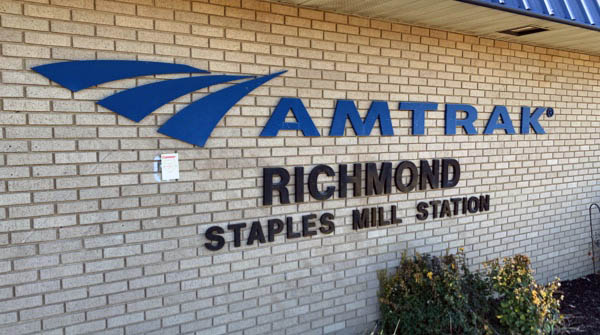
Dec 2019 / RWH
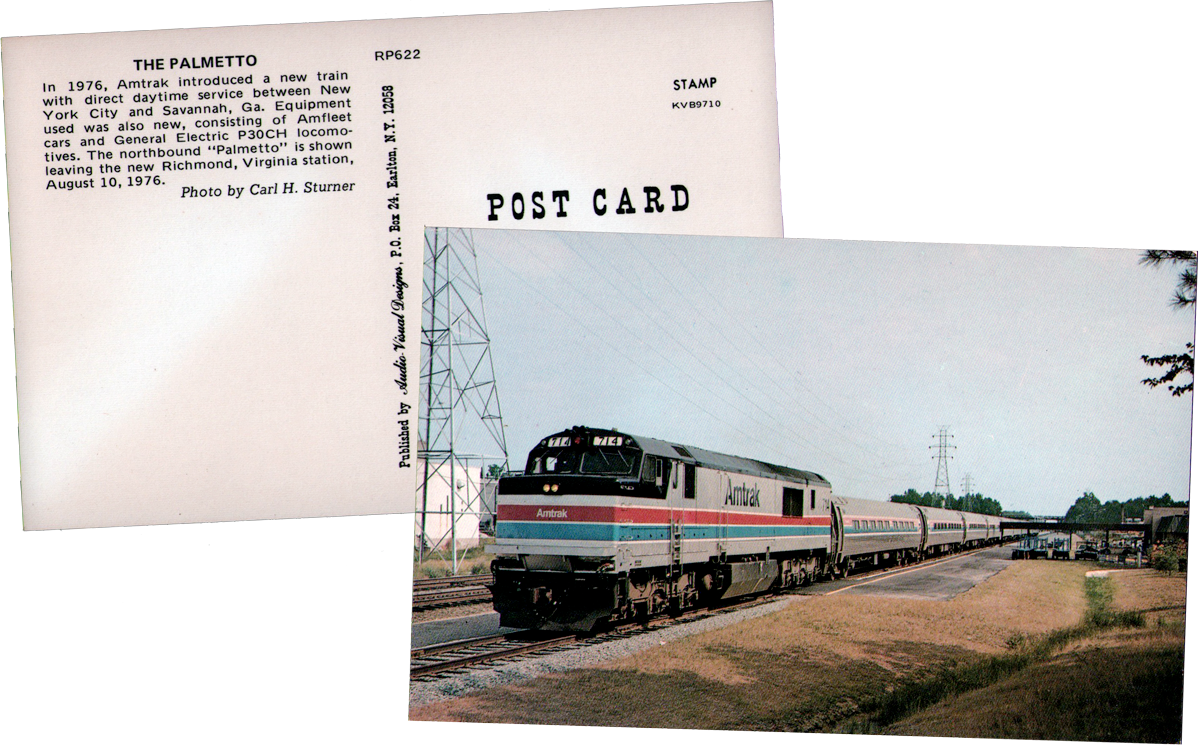
postcard / collection
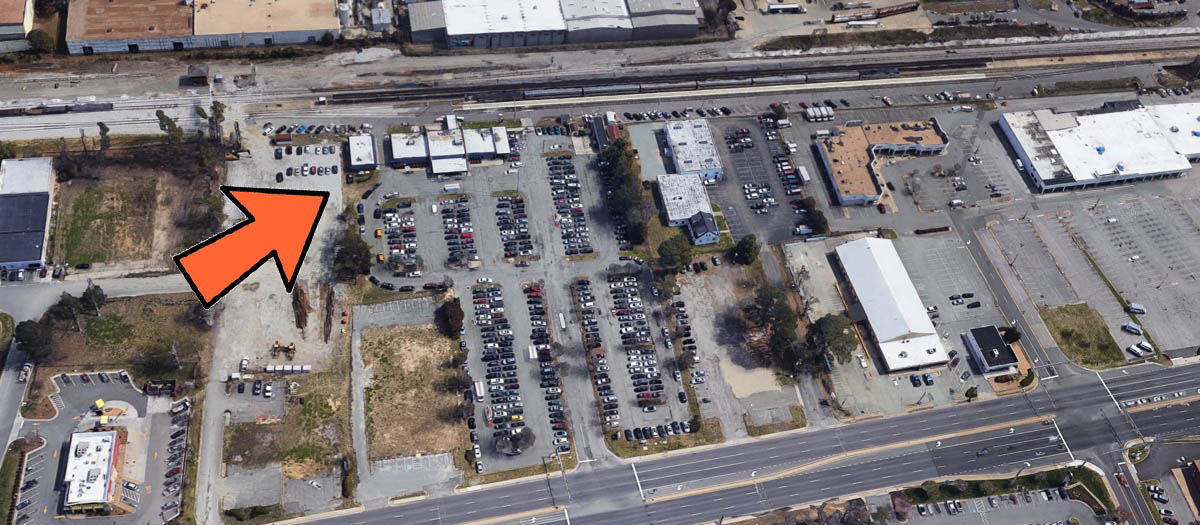
Staples Mill Road overhead / Google Maps

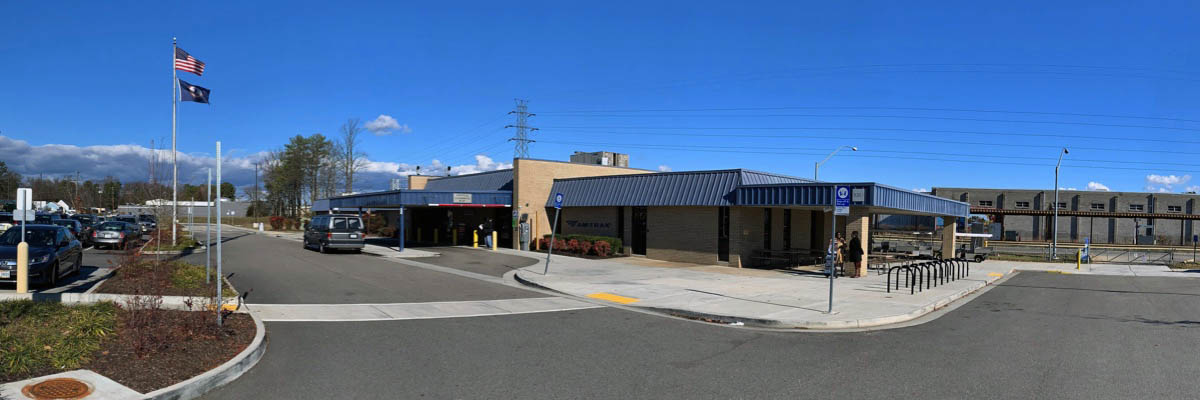
Richmond, Va / Dec 2019 / RWH

Click to see the Staples Mill Road station plotted on a Google Maps page
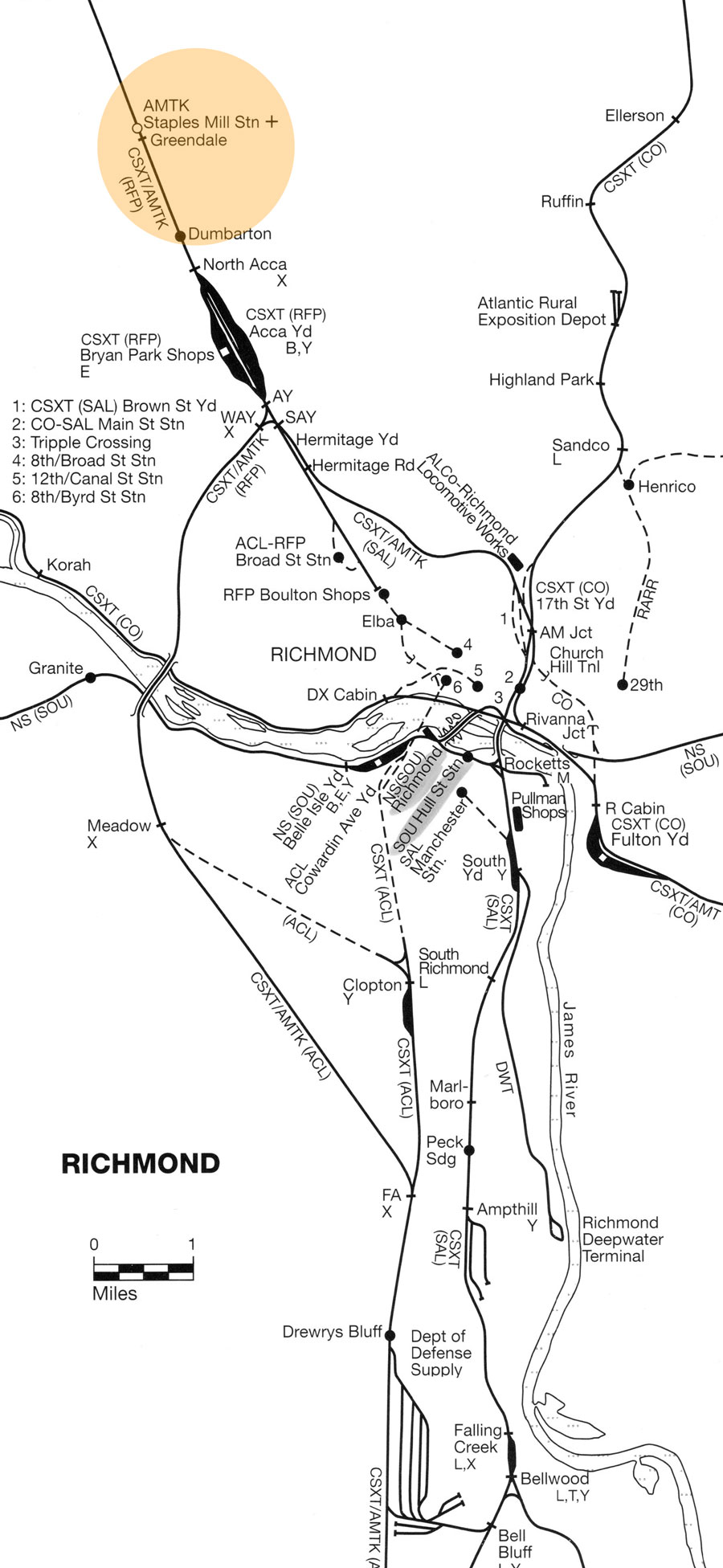
from SPV Comprehensive Railroad Atlas
/ collection
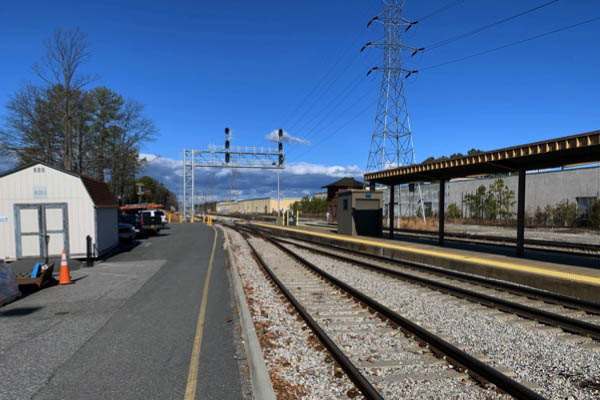
Richmond, Va / Dec 2019 / RWH
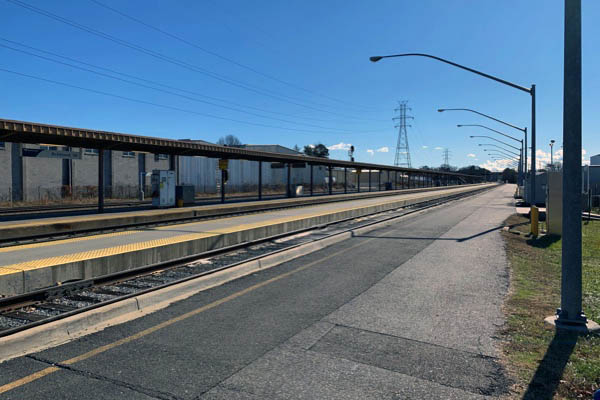
Richmond, Va / Dec 2019 / RWH

Richmond, Va / Dec 2019 / RWH

 he Staples Mill Road station is located just north of Richmond in the Henrico County suburbs, and is the busiest Amtrak facility in the Southeast. It opened in Nov. 1975, built to replace the historic, neoclassical Broad Street Station sited about three-and-a-half miles south and adjacent to Richmond’s famous Fan District. The new station facilitated train movements, cutting about 10 minutes from the run times of New York-Florida trains. Following a public open house on Nov. 14, the northbound Silver Star (New York – St. Petersburg/Miami) was the first train to stop at the facility the following day.
he Staples Mill Road station is located just north of Richmond in the Henrico County suburbs, and is the busiest Amtrak facility in the Southeast. It opened in Nov. 1975, built to replace the historic, neoclassical Broad Street Station sited about three-and-a-half miles south and adjacent to Richmond’s famous Fan District. The new station facilitated train movements, cutting about 10 minutes from the run times of New York-Florida trains. Following a public open house on Nov. 14, the northbound Silver Star (New York – St. Petersburg/Miami) was the first train to stop at the facility the following day.
Designed by David Volkert and Associates, with Roderick Slater as the main architect, the station consists of a one-story building of buff brick and steel construction with two tracks served by one platform. Walls of windows allow natural light to flood the waiting room, which features built-in bench seating. Minor renovations over the years included the expansion of the parking lot and inclusion of employee parking, as well as the addition of a mechanical department. This station has a waiting room and is staffed by Amtrak employees; Richmond is served by more than a dozen daily trains. Northeast Regional service within Virginia is funded in part through grants made available by the Commonwealth of Virginia.
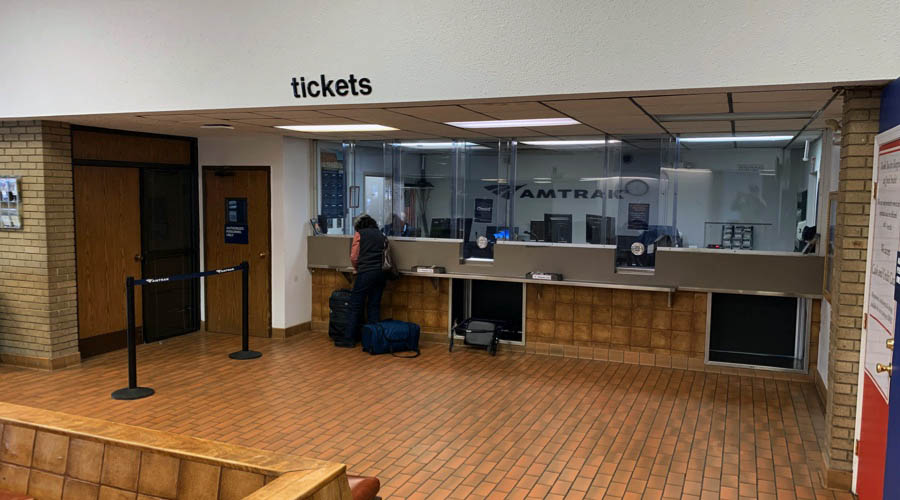
Dec 2019 / RWH
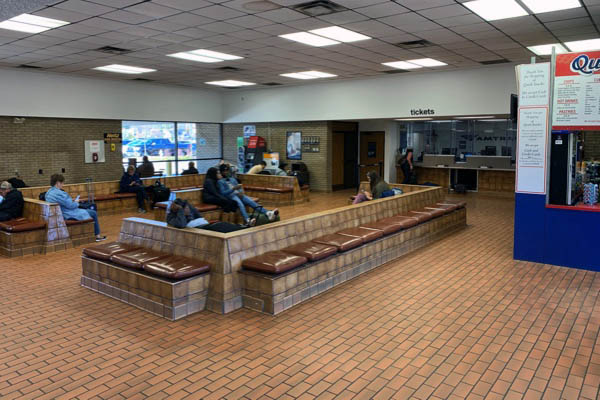
Dec 2019 / RWH
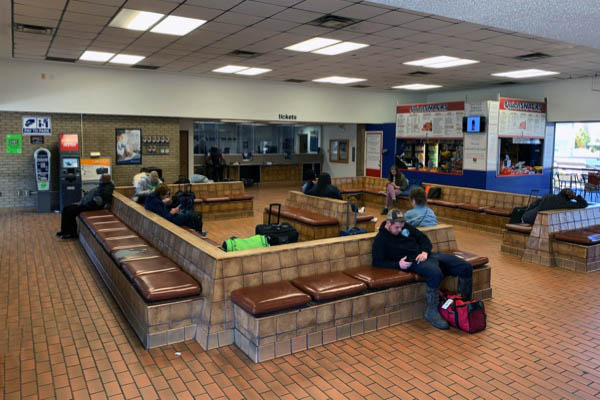
Dec 2019 / RWH
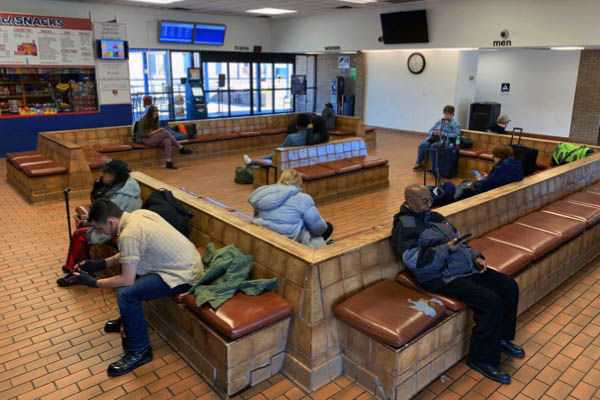
Dec 2019 / RWH
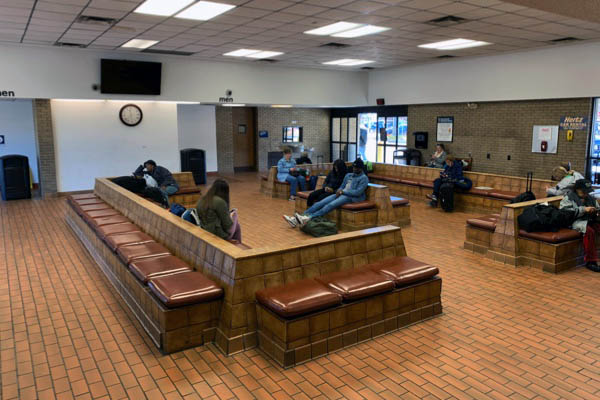
Dec 2019 / RWH


 ichmond has been served by multiple railroads since the 1830's. The five lines fanning out from the city in 1861 were a major reason for choosing Richmond as the capital of the Confederacy. With rail consolidation after the war, the names changed but for much of the 20th. century the city still hosted six major lines. The corporate headquarters of the Richmond, Fredericksburg and Potomac (RF&P) Railroad, and CSX were located in the city.
ichmond has been served by multiple railroads since the 1830's. The five lines fanning out from the city in 1861 were a major reason for choosing Richmond as the capital of the Confederacy. With rail consolidation after the war, the names changed but for much of the 20th. century the city still hosted six major lines. The corporate headquarters of the Richmond, Fredericksburg and Potomac (RF&P) Railroad, and CSX were located in the city.

See also our complete Richmond Railroad Museum scrapbook in Preservation
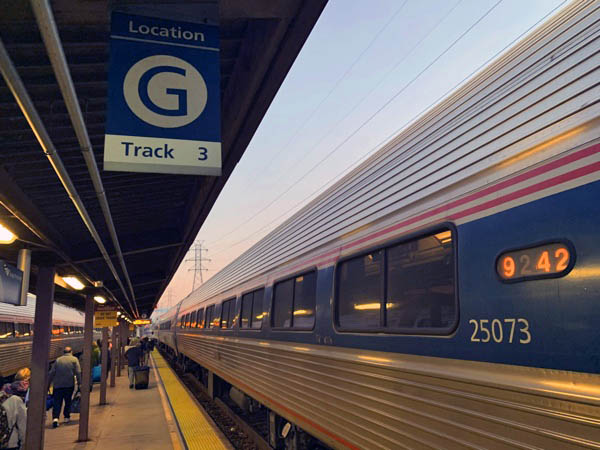
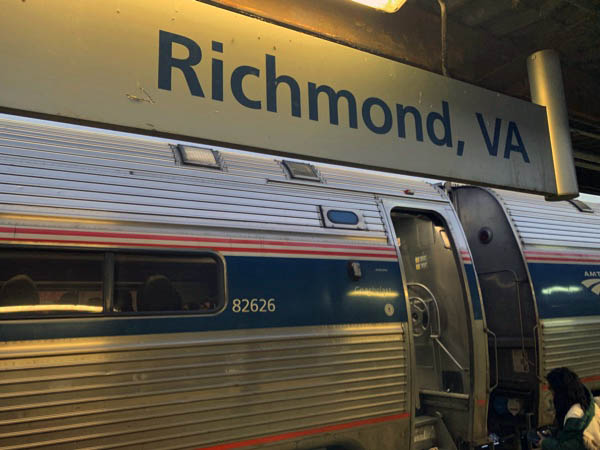
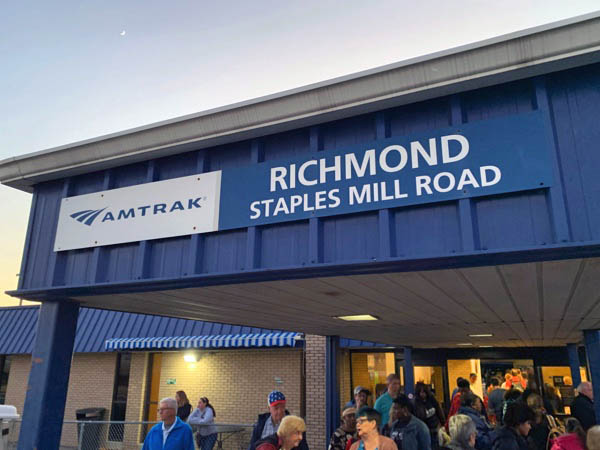

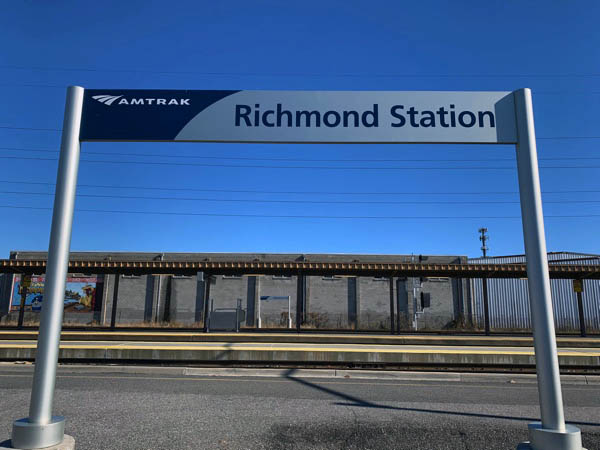
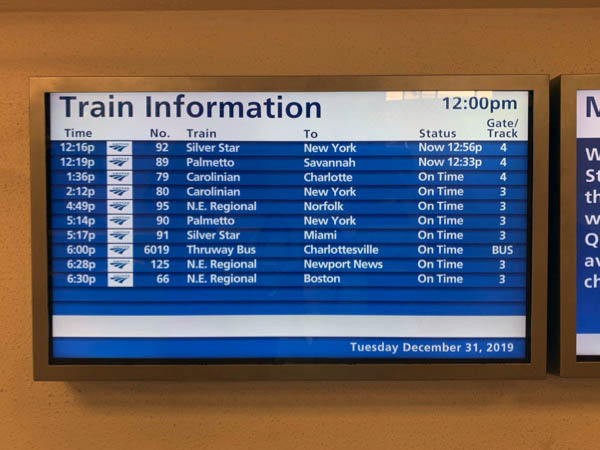
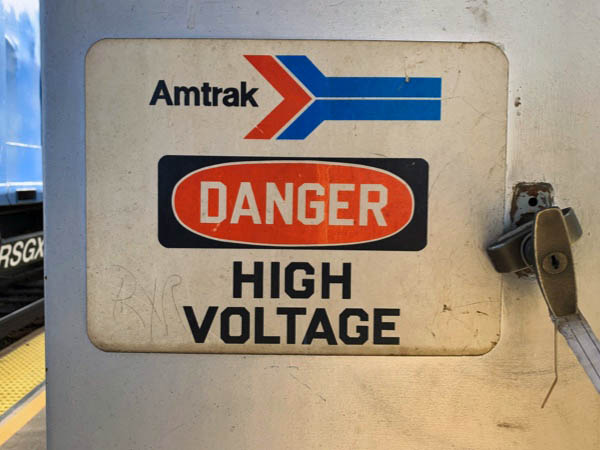
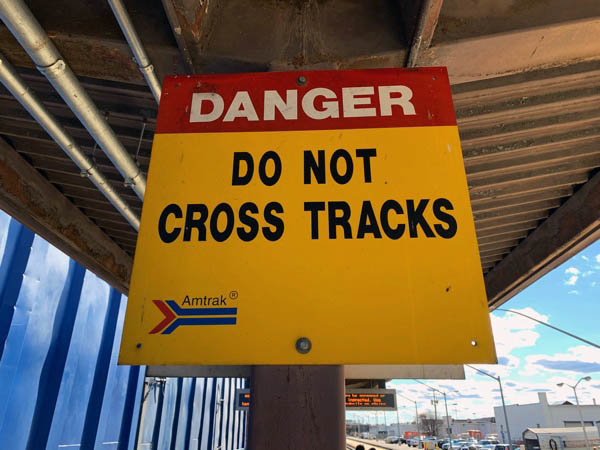
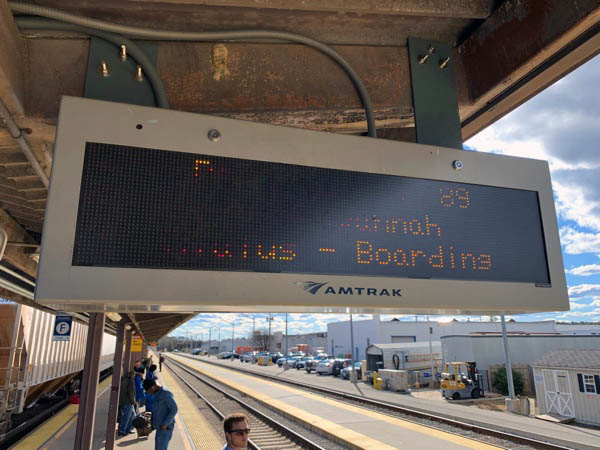
Dec 2019 / RWH
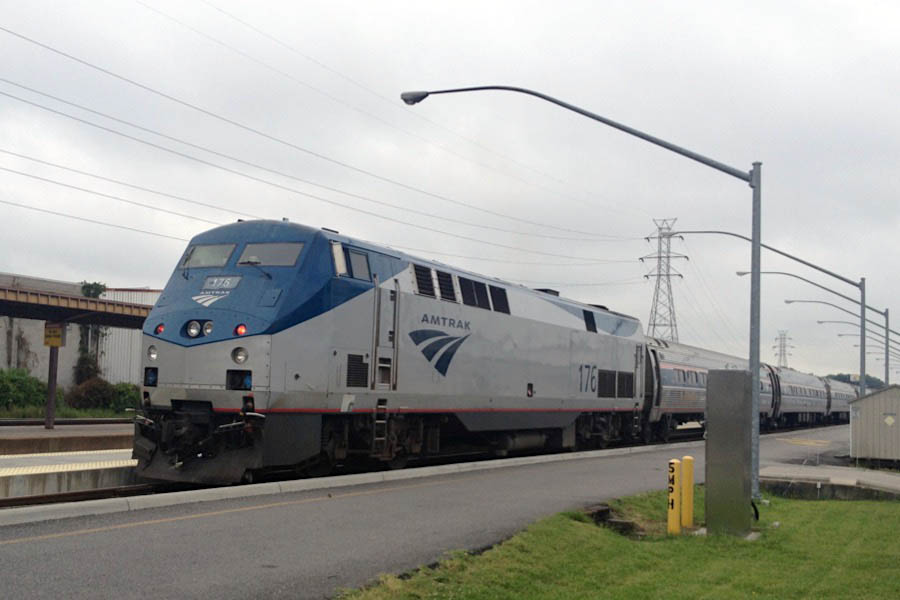
Richmond, Va / Jun 2013 / RWH
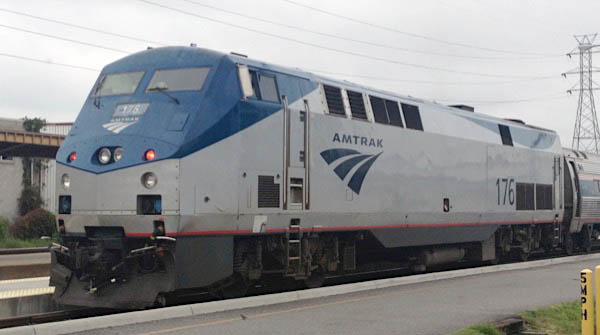
Richmond, Va / Jun 2013 / RWH
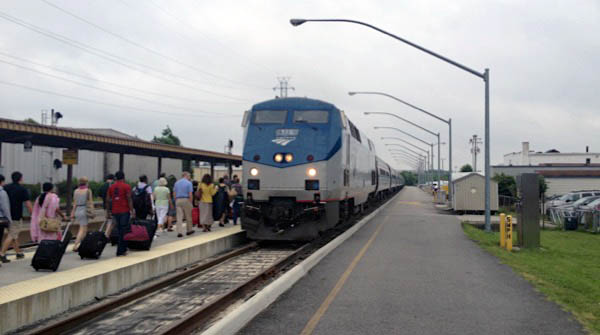
Richmond, Va / Jun 2013 / RWH
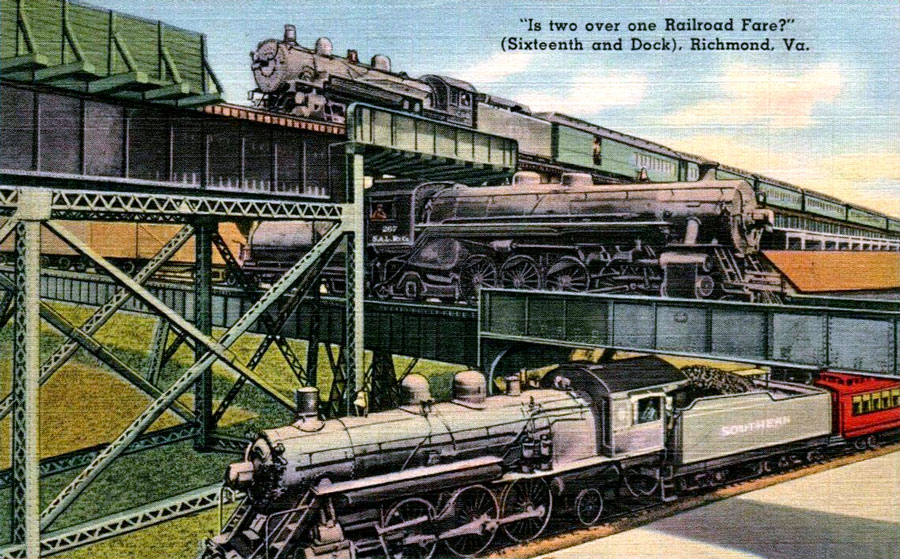 A decade after the Civil War, Richmond resumed its position as a major urban center of economic productivity with iron front buildings and massive brick factories. Canal traffic peaked in the 1860s, with railroads becoming the dominant shipping method. Richmond became a major railroad crossroads, showcasing the world's first triple railroad crossing. Tobacco warehousing and processing continued to play a central economic role, advanced by the world's first cigarette-rolling machine that James Albert Bonsack of Roanoke invented between 1880 and 1881.
A decade after the Civil War, Richmond resumed its position as a major urban center of economic productivity with iron front buildings and massive brick factories. Canal traffic peaked in the 1860s, with railroads becoming the dominant shipping method. Richmond became a major railroad crossroads, showcasing the world's first triple railroad crossing. Tobacco warehousing and processing continued to play a central economic role, advanced by the world's first cigarette-rolling machine that James Albert Bonsack of Roanoke invented between 1880 and 1881.
Another important contributor to Richmond's resurgence was the Richmond Union Passenger Railway, a trolley system developed by electric power pioneer Frank J. Sprague. The system opened its first Richmond line in 1888, using an overhead wire and a trolley pole to connect to the current and electric motors on the car's trucks. The success led to electric streetcar lines rapidly spreading to other cities. A post-World War II transition to buses from streetcars began in May 1947 and was completed on November 25, 1949.
Wikipedia / image RWH collection
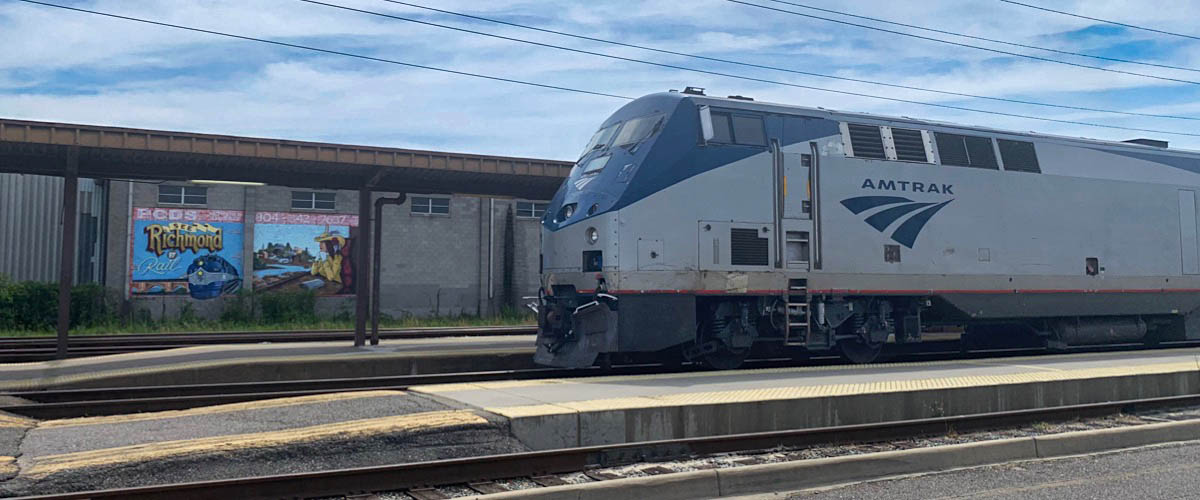
Richmond, Va / Jul 2022 / RWH
#89 arrival
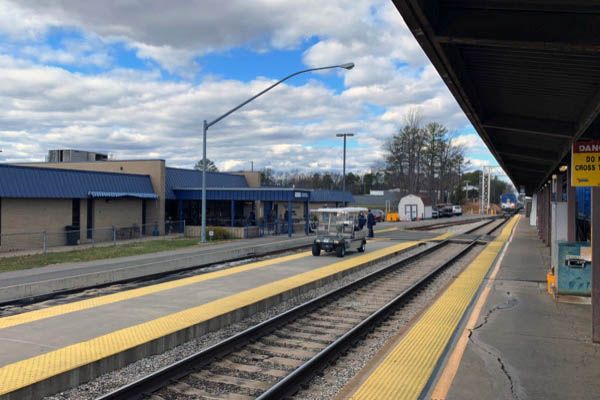

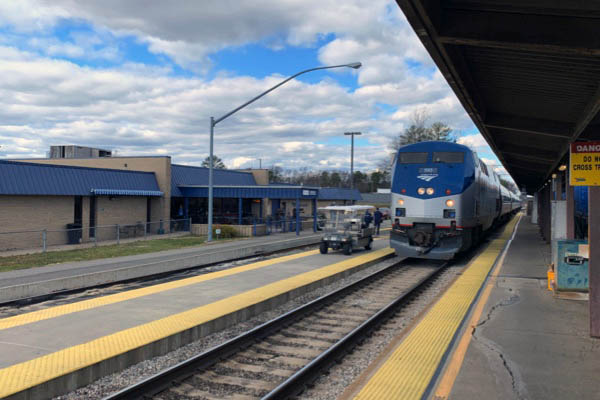
Richmond, Va / Dec 2019 / RWH
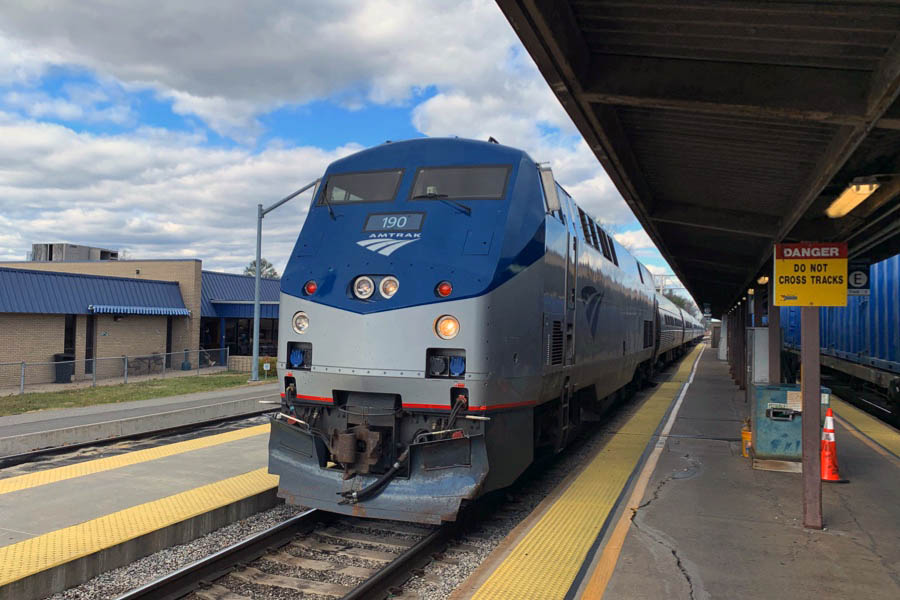
Richmond, Va / Dec 2019 / RWH
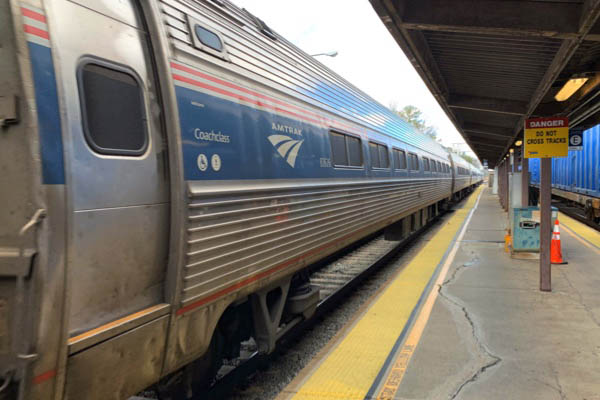


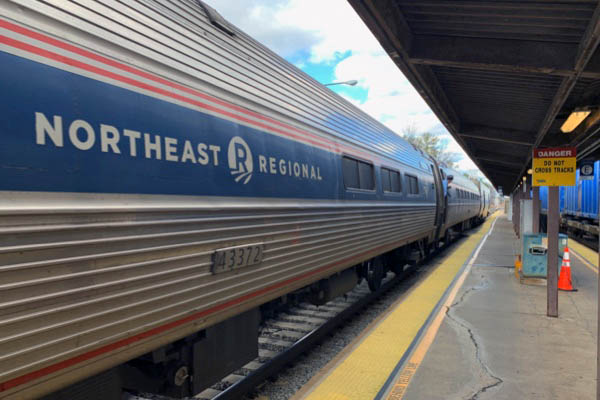
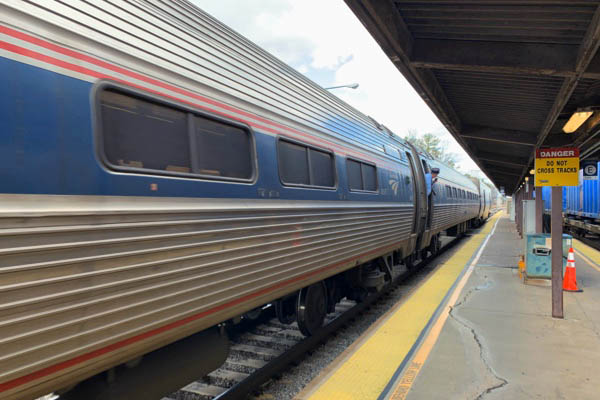
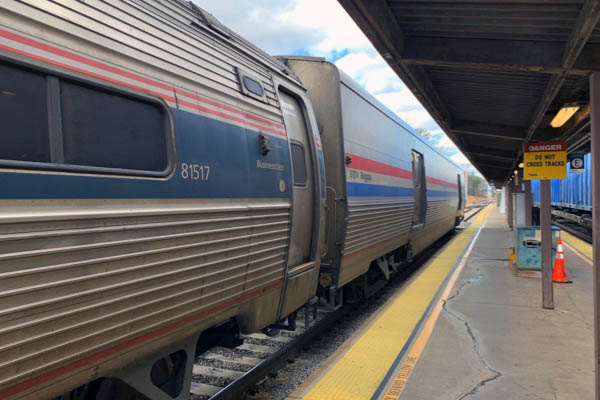
Richmond, Va / Dec 2019 / RWH
Richmond, Va / Dec 2019 / ETH
#90 arrival
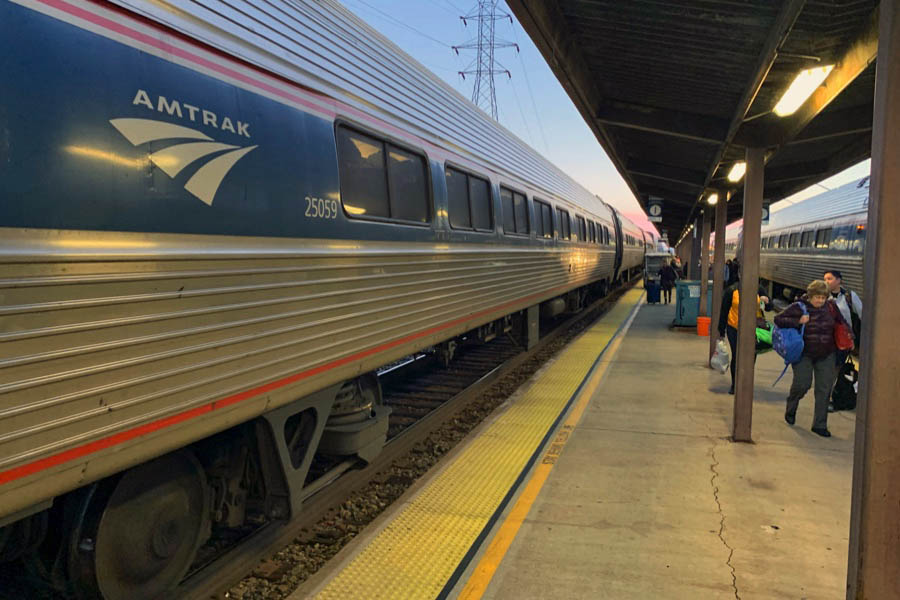
Richmond, Va / Dec 2019 / RWH
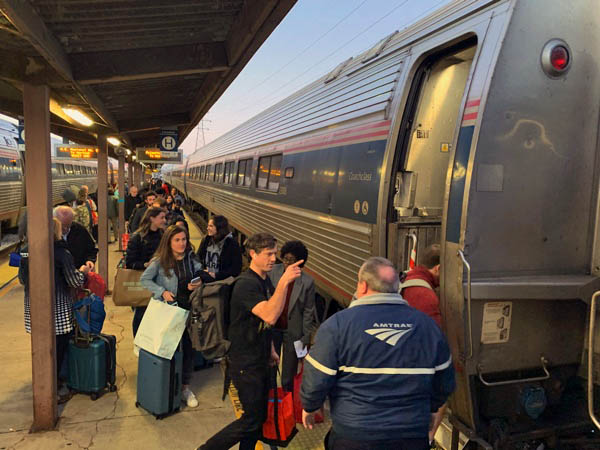
Richmond, Va / Dec 2019 / RWH
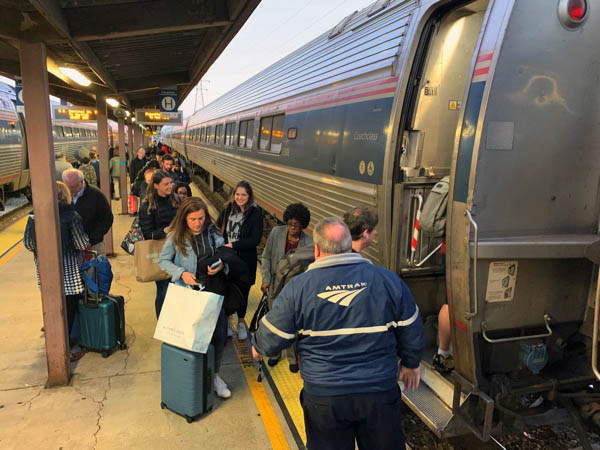
Richmond, Va / Dec 2019 / RWH
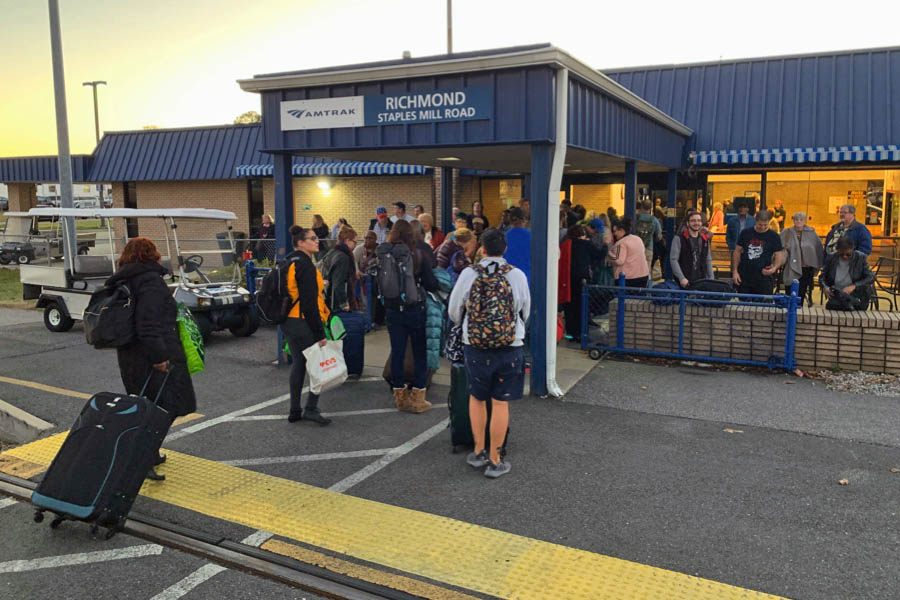
Richmond, Va / Dec 2019 / RWH

Richmond, Va / Dec 2019 / RWH

Richmond, Va / Dec 2019 / RWH
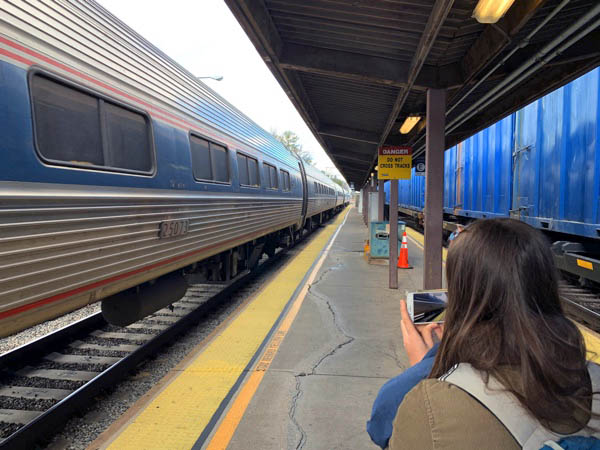
Dec 2019 / RWH
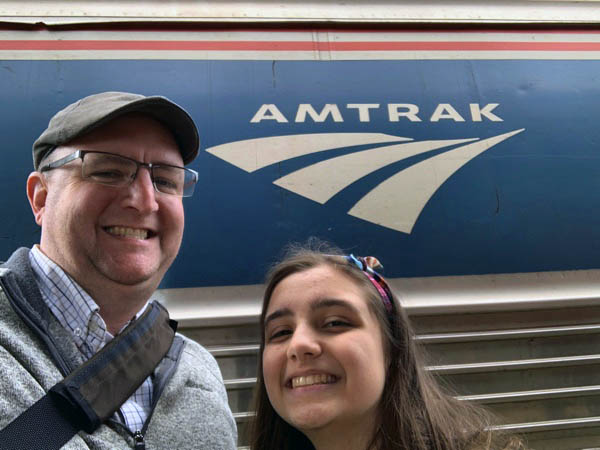
Dec 2019 / RWH
#89 station stop
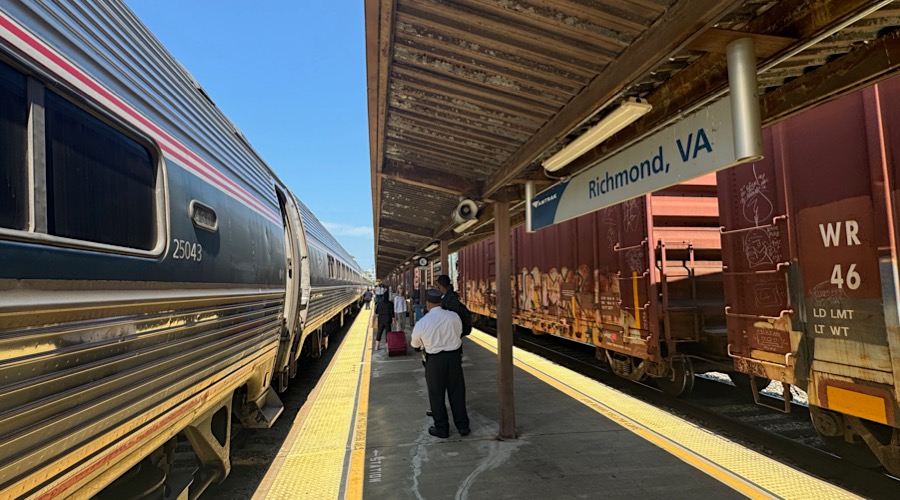
Richmond, Va / Aug 2024 / RWH
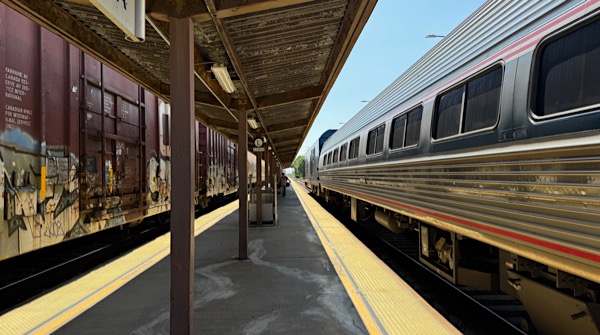
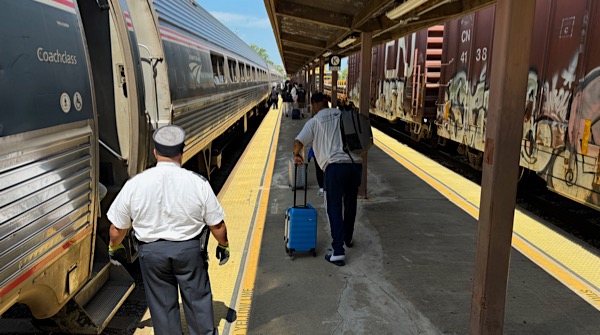

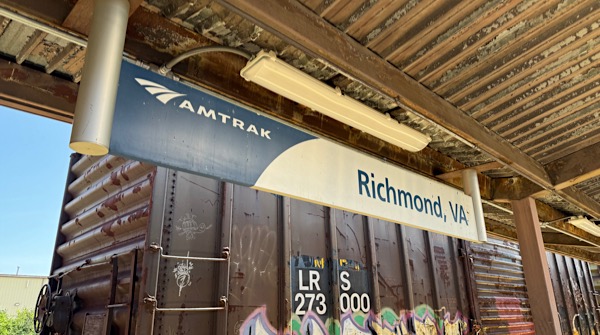

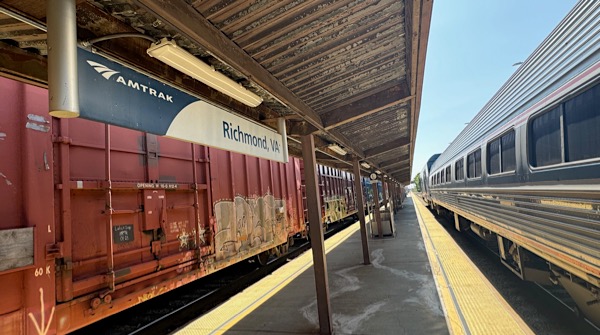
Richmond, Va / Aug 2024 / RWH
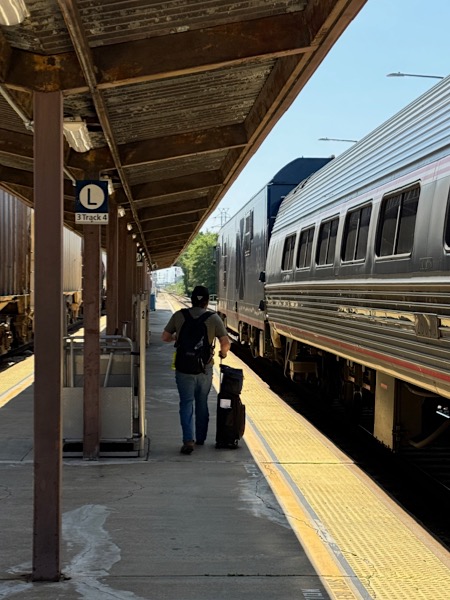
Aug 2024 / RWH

Richmond, Va / Aug 2024 / RWH
 James River Bridge
James River Bridge

James River Bridge / web
The James River is a river in the U.S. state of Virginia that begins in the Appalachian Mountains and flows 348 miles to Chesapeake Bay. The river length extends to 444 miles if one includes the Jackson River, the longer of its two source tributaries. It is the longest river in Virginia and the 12th longest river in the United States that remains entirely within a single state. Jamestown and Williamsburg, Virginia’s first colonial capitals, and Richmond, Virginia's current capital, lie on the James River.
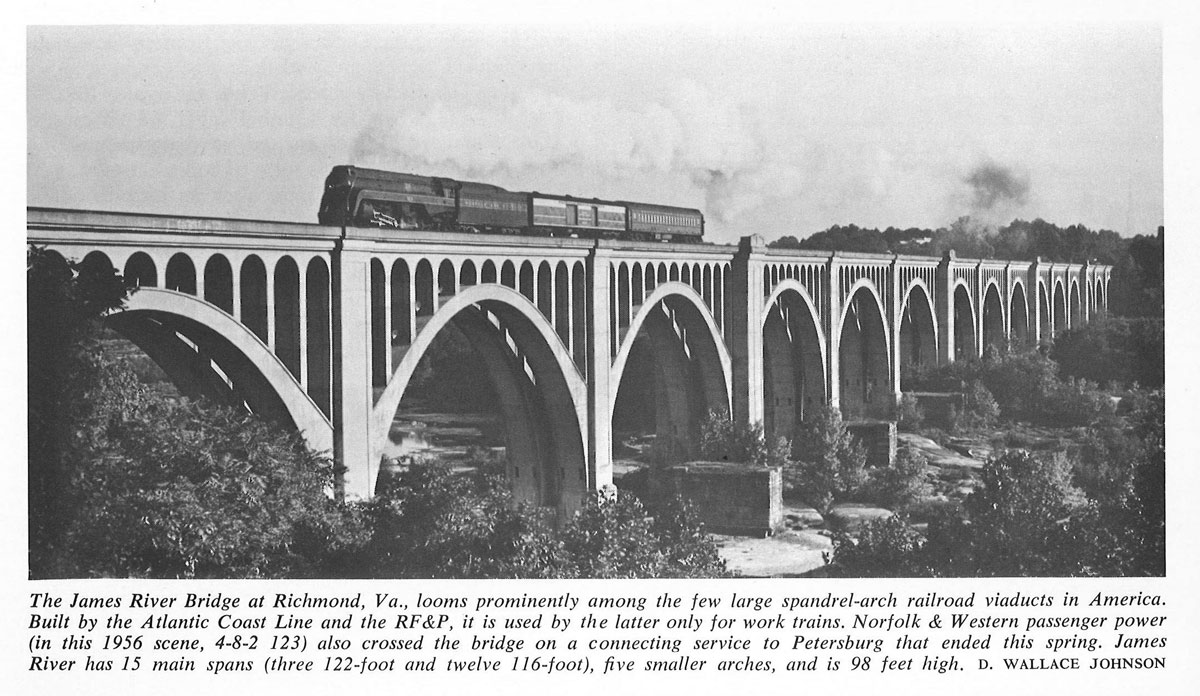
from Steam Locomotive & Railroad Tradition
#19 - Aug 1967 / collection
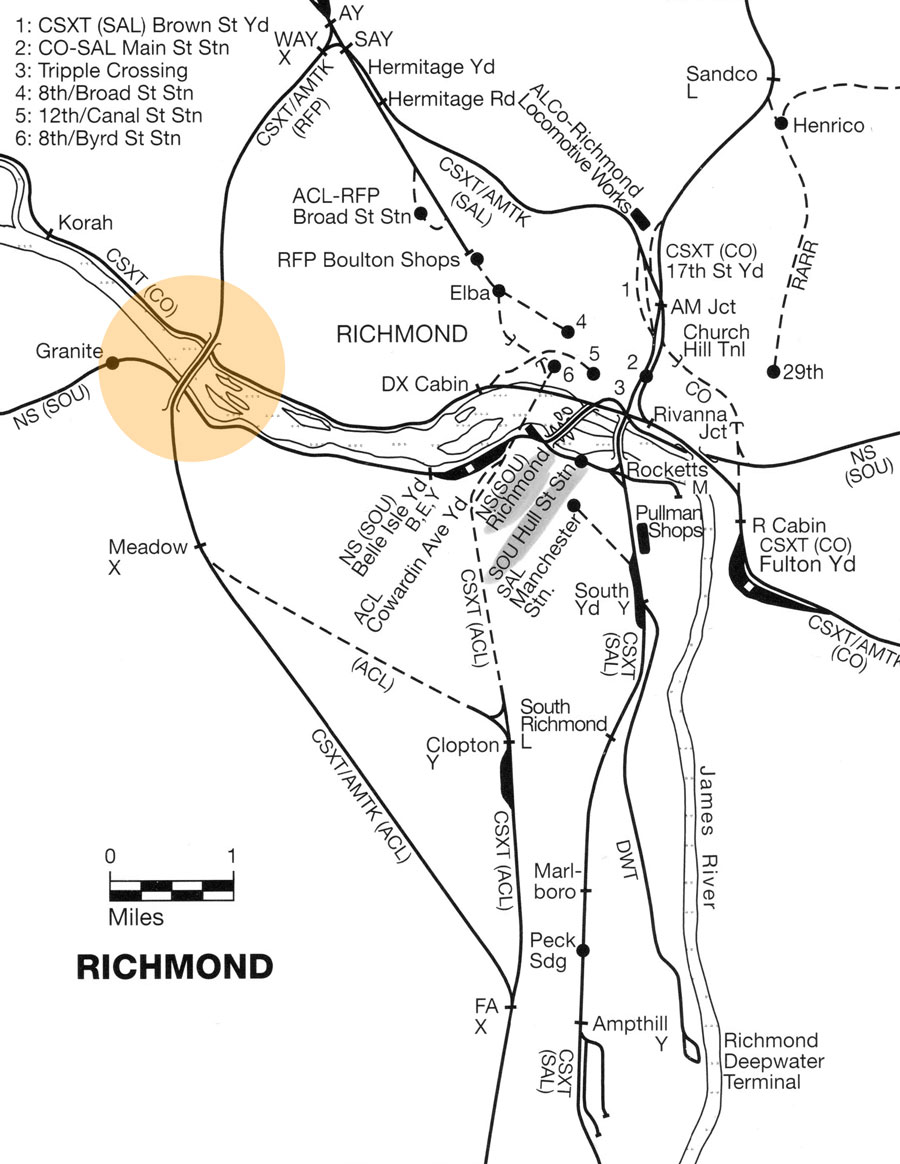
from SPV Comprehensive Railroad Atlas
/ collection
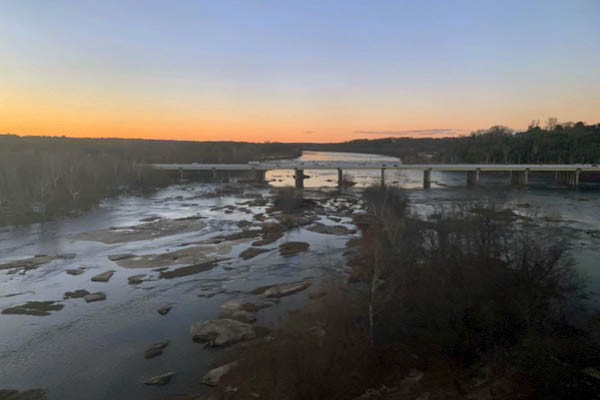
Richmond, Va / Dec 2019 / RWH

Richmond, Va / Dec 2019 / RWH

Click to see the James River Bridge plotted on a Google Maps page

Richmond, Va / Dec 2019 / RWH
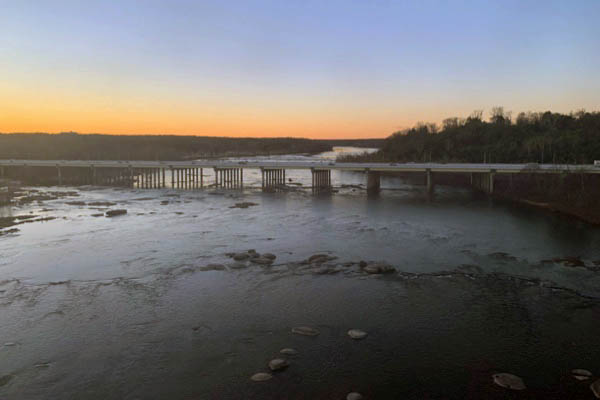
Richmond, Va / Dec 2019 / RWH
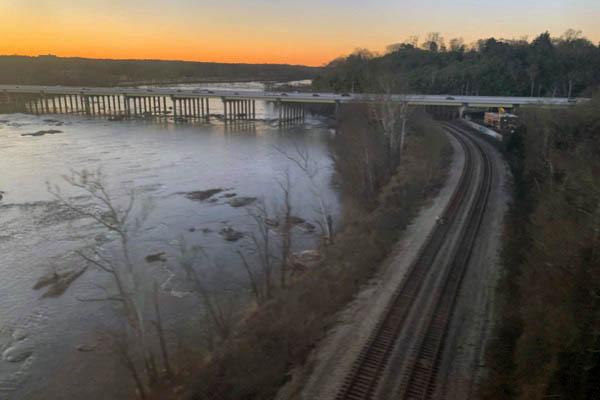
Richmond, Va / Dec 2019 / RWH

Richmond, Va / Feb 2022 / RWH

Richmond, Va / Feb 2022 / RWH

Richmond, Va / Feb 2022 / RWH

Feb 2022 / RWH
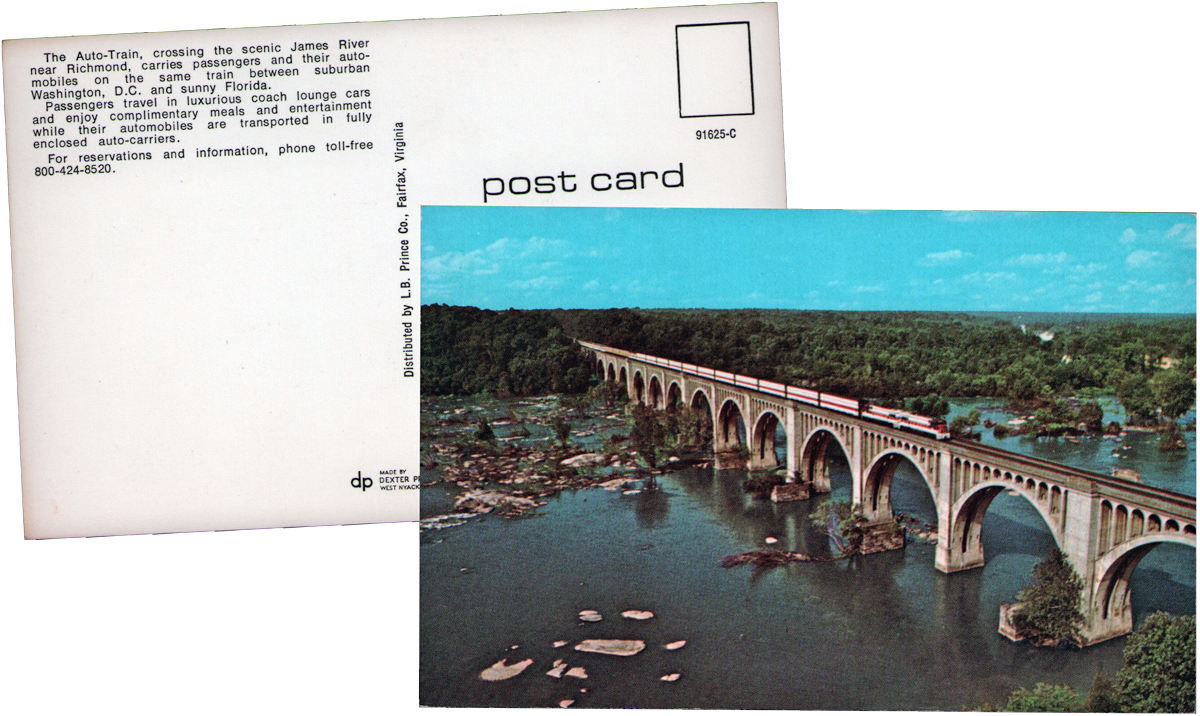
postcard / collection
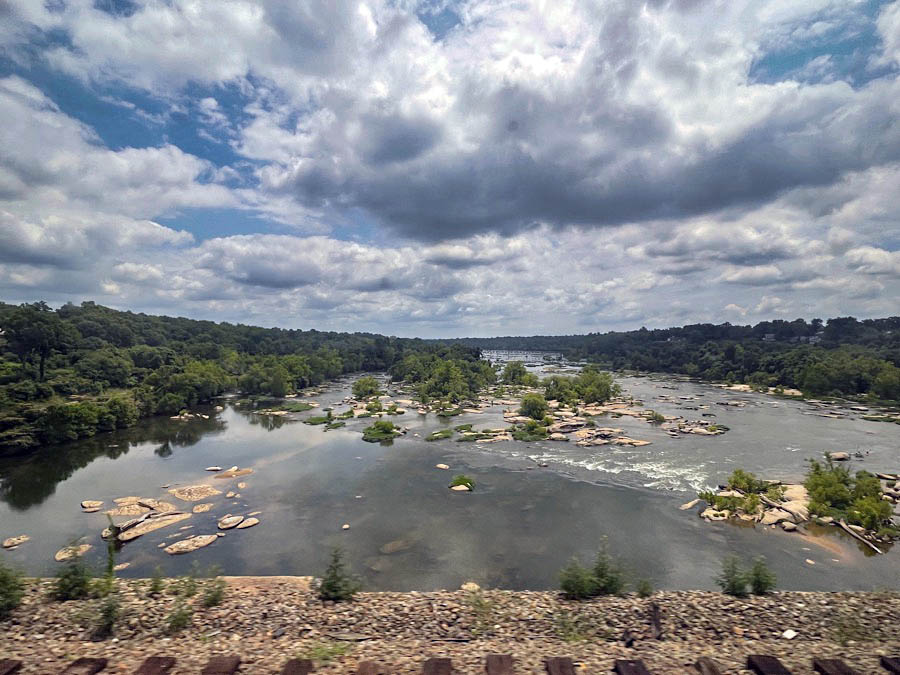
Richmond, Va / Jul 2022 / RWH
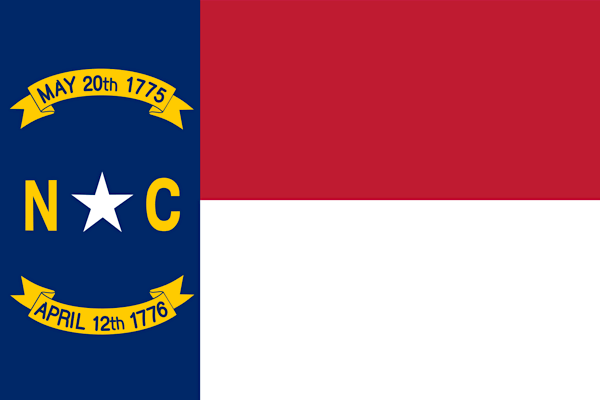 North Carolina
North Carolina
 Rocky Mount, NC
Rocky Mount, NC
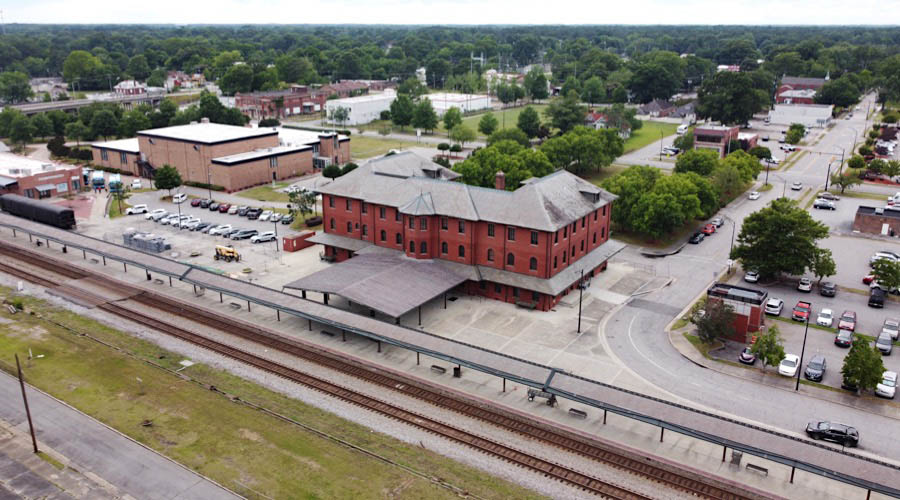
Rocky Mount, NC / Jun 2023 / RWH

Rocky Mount, NC / Jun 2023 / RWH

Click to see the Rocky Mount station area plotted on a Google Maps page
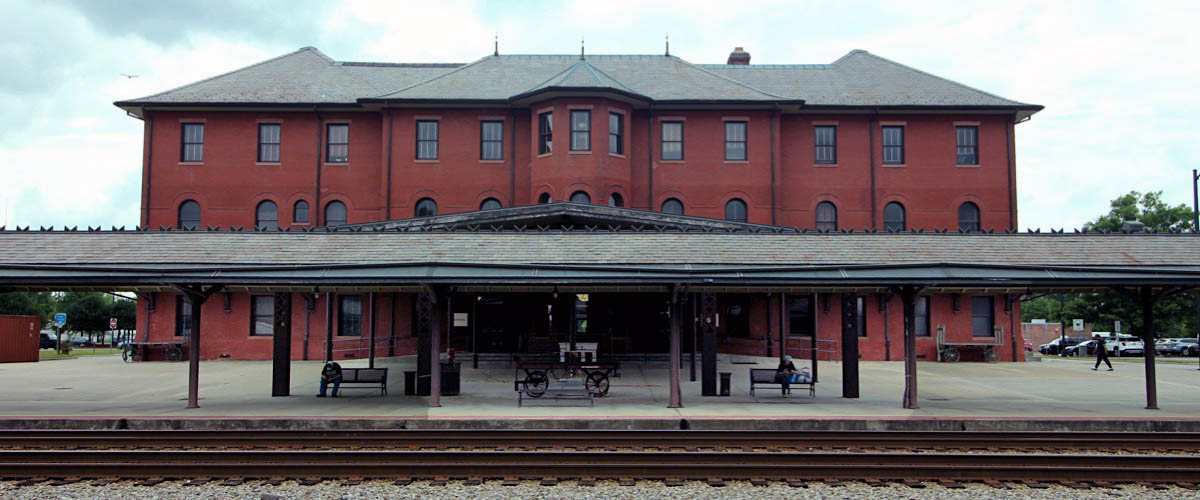
Rocky Mount, NC / Jun 2023 / RWH
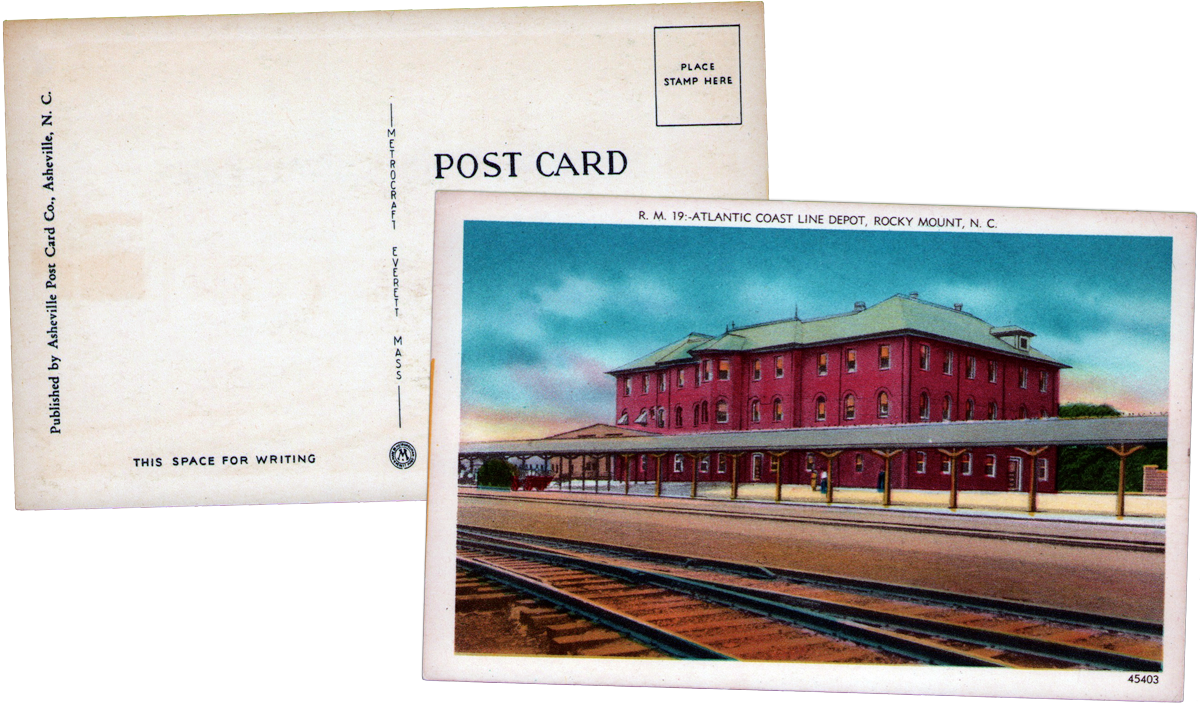
postcard / collection

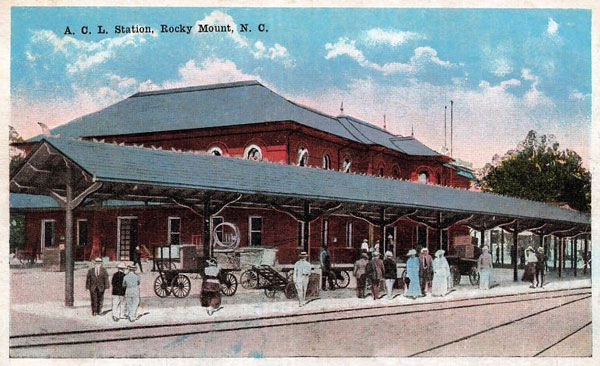
 he Rocky Mount rail station was constructed in 1893 by the Wilmington & Weldon Railroad as a two-story brick Romanesque station with one-story wings. Since then, the station’s structure has undergone major changes. In 1911-12, the new owner, the Atlantic Coast Line Railroad, turned the one-story wings into three-story wings. A few years later, a third story was added to the entire building. In the 1960s, an addition was constructed between the wings to store railroad switches and signal equipment, but was later removed.
he Rocky Mount rail station was constructed in 1893 by the Wilmington & Weldon Railroad as a two-story brick Romanesque station with one-story wings. Since then, the station’s structure has undergone major changes. In 1911-12, the new owner, the Atlantic Coast Line Railroad, turned the one-story wings into three-story wings. A few years later, a third story was added to the entire building. In the 1960s, an addition was constructed between the wings to store railroad switches and signal equipment, but was later removed.
Because the building is part of Rocky Mount’s historic district, it was included in the downtown rehabilitation master plan with renovation starting in 1997. A new entryway was added to the building to allow passengers to enter the station from the street. Canopies were reconstructed, and a new ADA-compliant platform was built. A “commons” park was built in the front yard of the station, as well as improved driveways, parking and streetscaping. The construction finished in December 2000 at a cost of about $9 million with financing coming from a mix of federal, state and local funds.
Rocky Mount’s early days revolved around the first post office, established in 1816, which brought its name into documented history. The Wilmington & Weldon Railroad became Rocky Mount’s main connection to the outside world, yet did not cause immediate growth for the town. Only in the late 1800s did the railroad exert a powerful influence on Rocky Mount, helping spread the fame of Nash County apple brandy. By the turn of the 20th century, Rocky Mount’s population grew to 3,000. The growth and prosperity was influenced by the main railroad line, the well-established cotton mill and productive farmland.
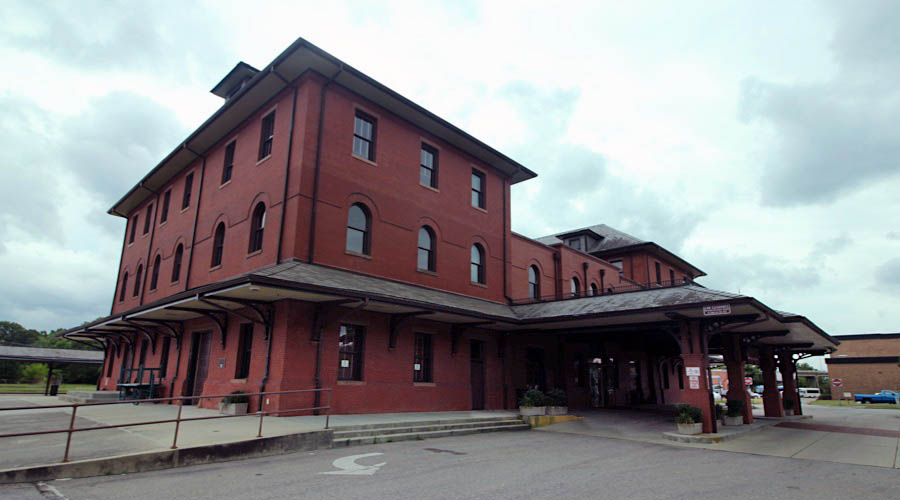
Rocky Mount, NC / Jun 2023 / RWH
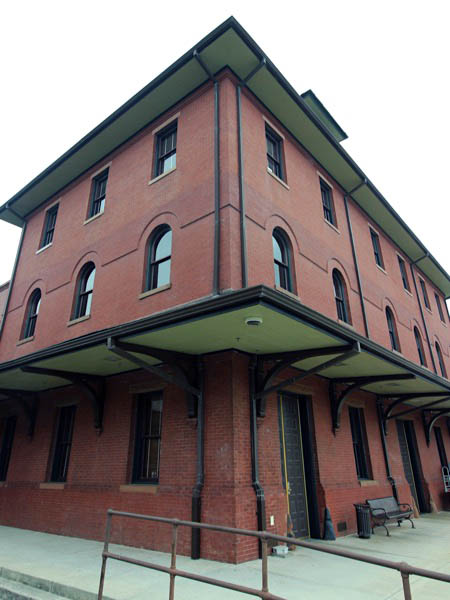
Rocky Mount, NC / Jun 2023 / RWH
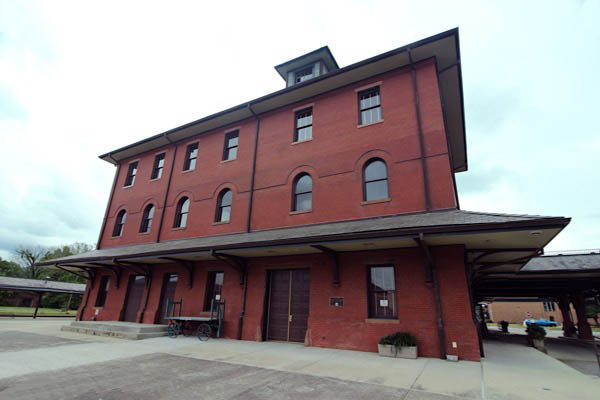
Rocky Mount, NC / Jun 2023 / RWH

Rocky Mount, NC / Jun 2023 / RWH
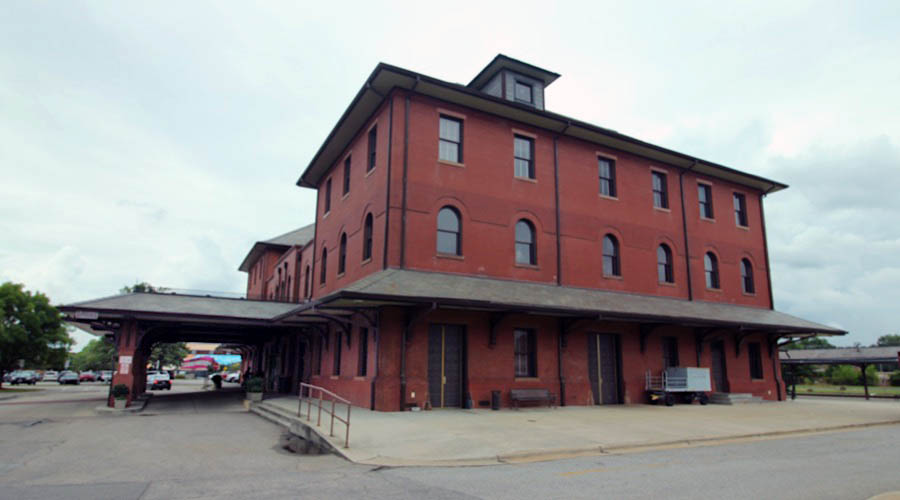
Rocky Mount, NC / Jun 2023 / RWH

Jun 2023 / RWH
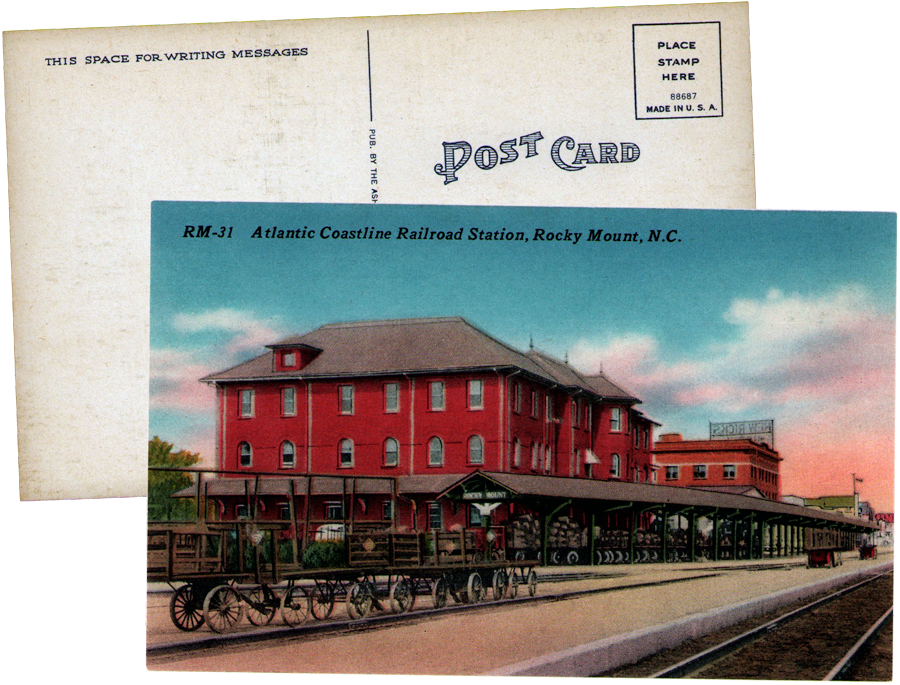
postcard / collection

1910 Official Guide ad / collection
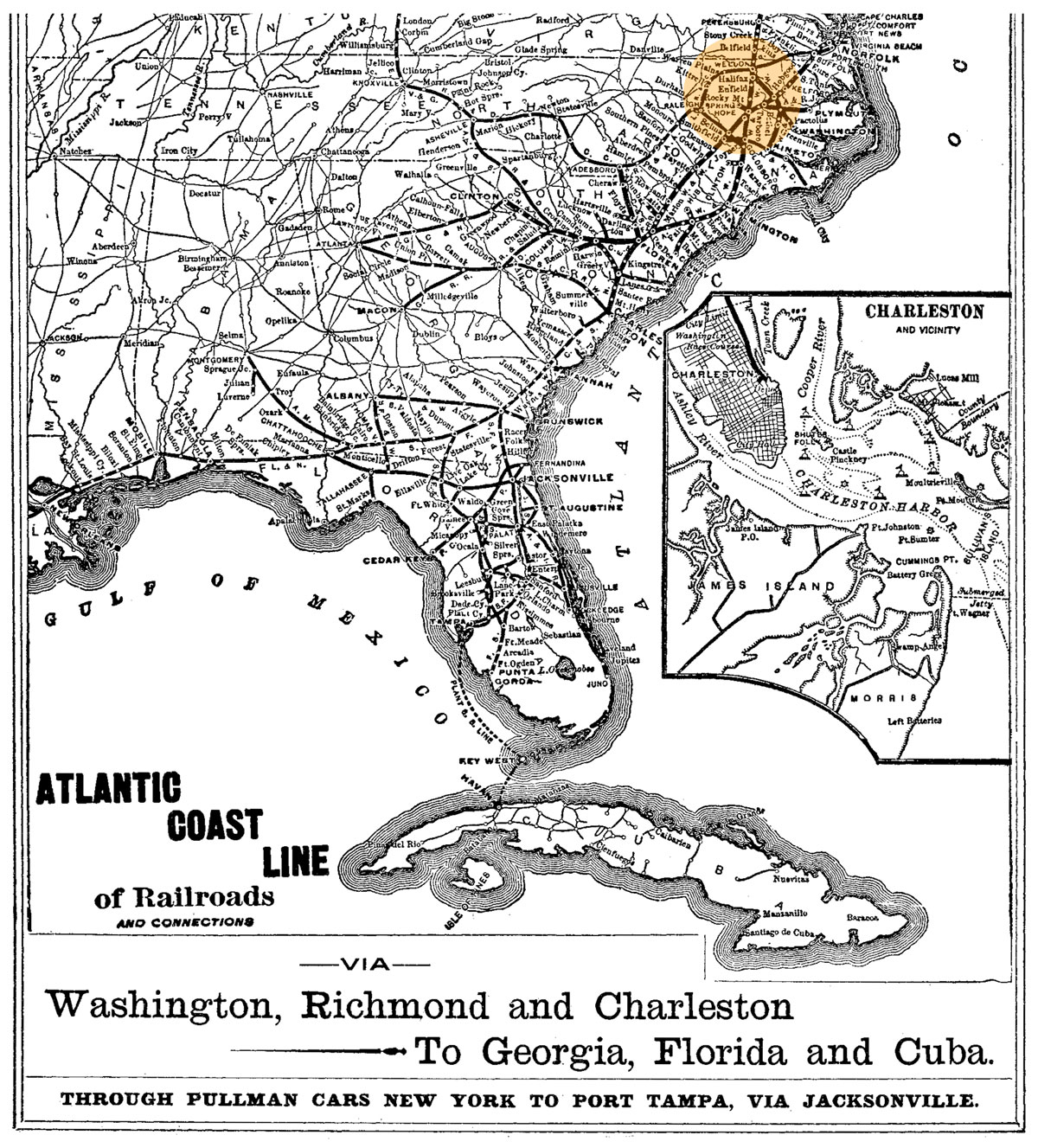
1893 Official Guide map / collection
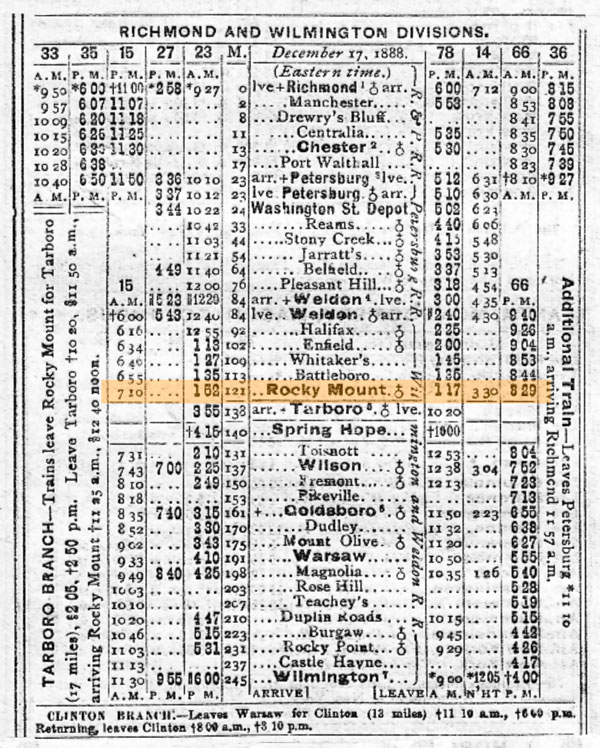
1889 Official Guide ad / collection
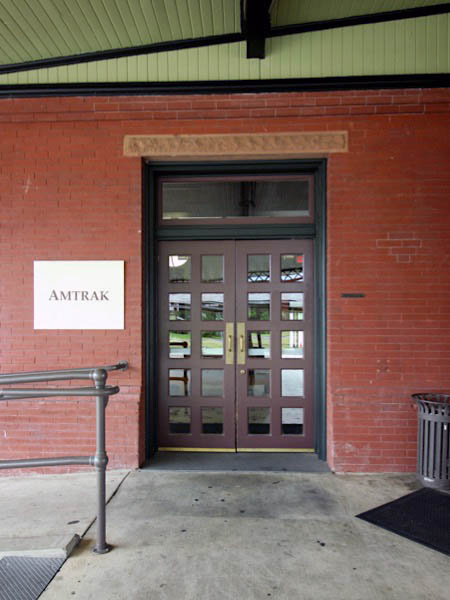
Jun 2023 / RWH
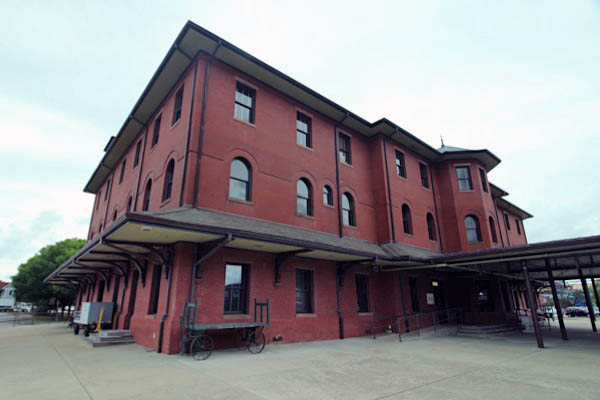
Rocky Mount, NC / Jun 2023 / RWH
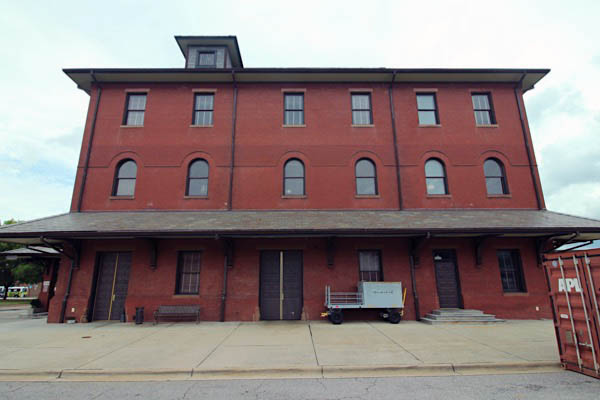
Rocky Mount, NC / Jun 2023 / RWH
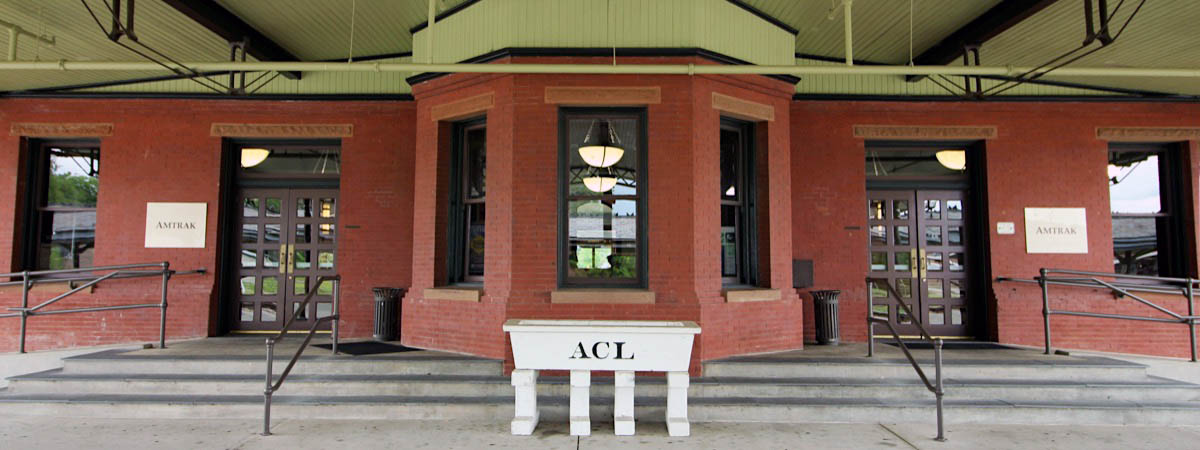
Jun 2023 / RWH
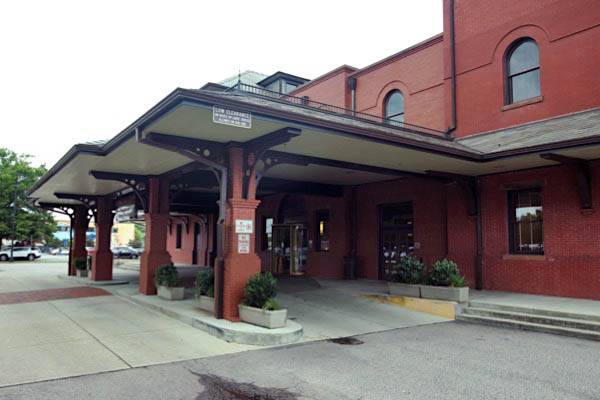
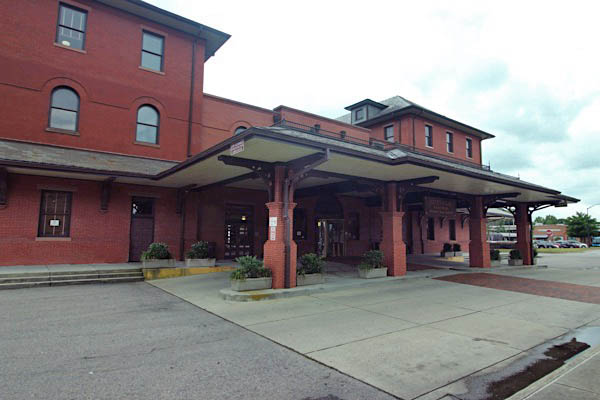
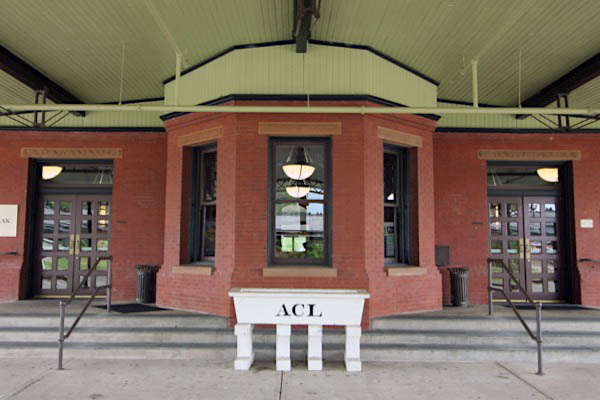
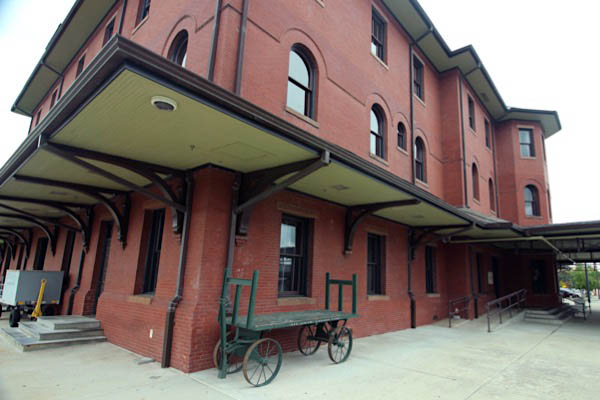
Jun 2023 / RWH
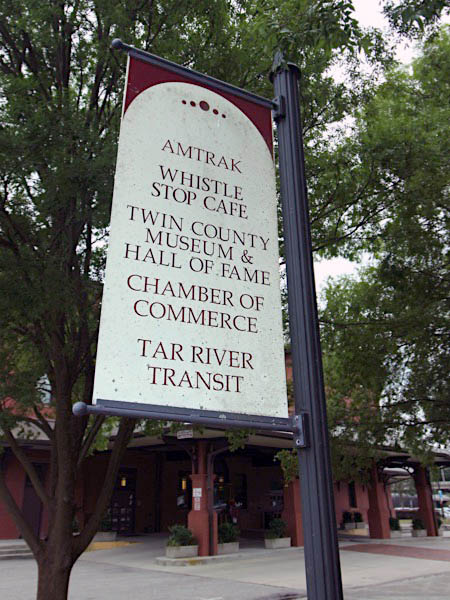
Jun 2023 / RWH

Jun 2023 / RWH
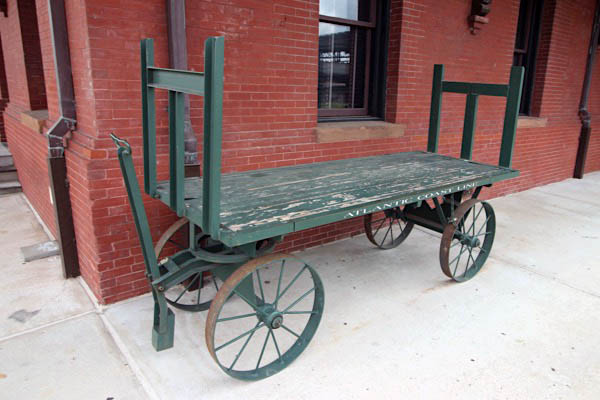
Jun 2023 / RWH


 he physical reminders of Rocky Mount’s legacy however, are rapidly disappearing — its railroad heritage. The friendly picturesque All-American town that straddled the double main line tracks of Champion McDowell Davis’ great Atlantic Coast Line Railroad is fast becoming a fleeting memory. Once home to thousands of skilled machinists, electricians, black smiths, laborers and others, who kept the lights glowing ‘round the clock at the sprawling Emerson Shops complex, armies of brakemen, conductors, firemen and engineers who stoked the fires of hungry steam locomotives or made up and took apart trains of valuable manufactured goods and precious agricultural commodities, Rocky Mount appears amicable to forgetting why it was born and the reason it was one of the most important rail junctions on the east coast of the United States.
he physical reminders of Rocky Mount’s legacy however, are rapidly disappearing — its railroad heritage. The friendly picturesque All-American town that straddled the double main line tracks of Champion McDowell Davis’ great Atlantic Coast Line Railroad is fast becoming a fleeting memory. Once home to thousands of skilled machinists, electricians, black smiths, laborers and others, who kept the lights glowing ‘round the clock at the sprawling Emerson Shops complex, armies of brakemen, conductors, firemen and engineers who stoked the fires of hungry steam locomotives or made up and took apart trains of valuable manufactured goods and precious agricultural commodities, Rocky Mount appears amicable to forgetting why it was born and the reason it was one of the most important rail junctions on the east coast of the United States.
Rocky Mount isn’t alone. Altoona, PA, Huntington, WV and Omaha, NB are other towns that came into existence because the gods of railroading identified a vacant parcel of land located at just the right distance between two other points on a railroad map, picked it up, breathed life into its lungs and gave birth to it. Steel rails fed it, clothed it and caused its heart to beat vibrantly for many, many years. Only those who sold railroad workers their clothes, their groceries, their automobiles, and others who taught their children to read and write, fixed their appliances and paved their streets didn’t work for the railroad directly, but owed their own livelihoods to it.
But while some of these other towns were able to adapt their facilities to grow and expand, thus insuring their importance and long term viability, Rocky Mount was just too close to Richmond, too close to Florence. Its shops weren’t as modern as those in Waycross or Jacksonville. The winds that used to blow across the bridge yard and echo off the walls of the shops where hundreds of passenger and freight cars were built, where the ACL’s entire fleet of Electro Motive diesels and steam engines were rebuilt, are now vacant. Where thousands of workers once whistled on their way to the erecting bay, the tall grass now sings a sad lonely wail.
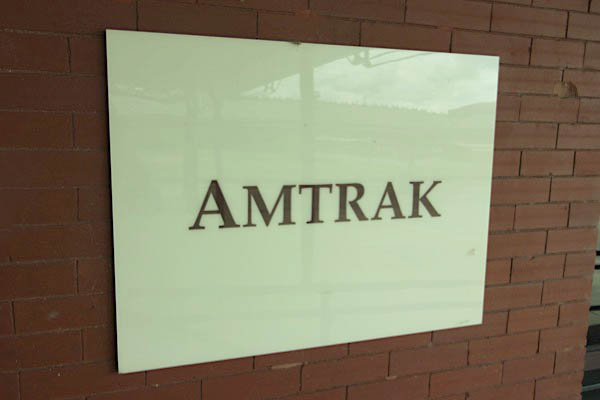
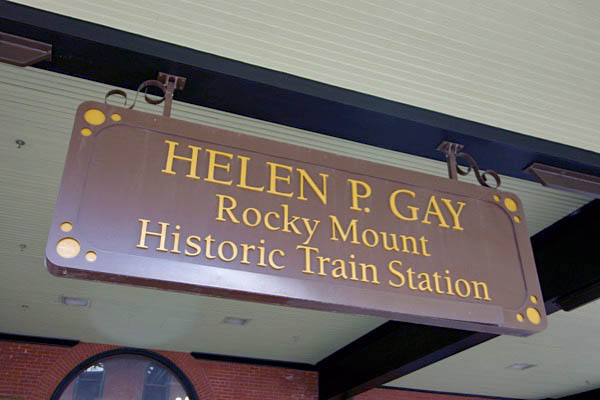
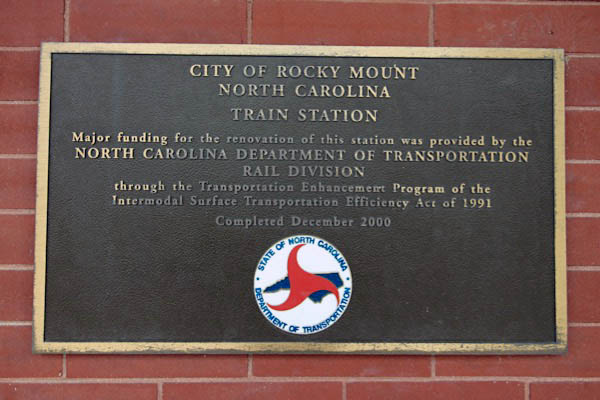


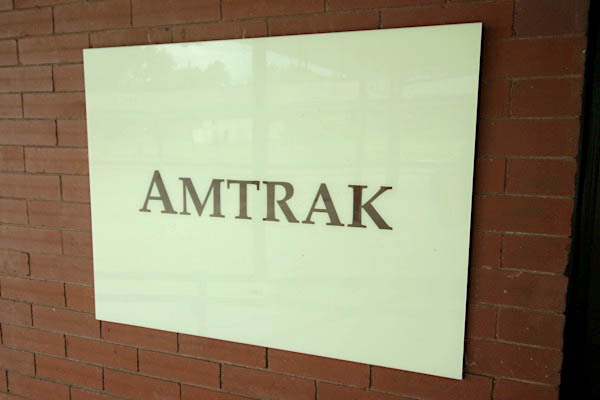
Jun 2023 / RWH

Rocky Mount, NC / Jun 2023 / RWH
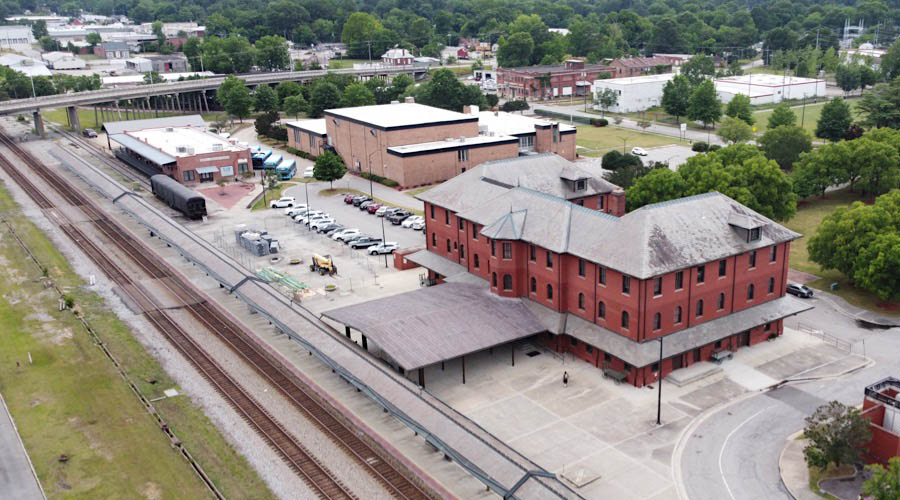
Rocky Mount, NC / Jun 2023 / RWH
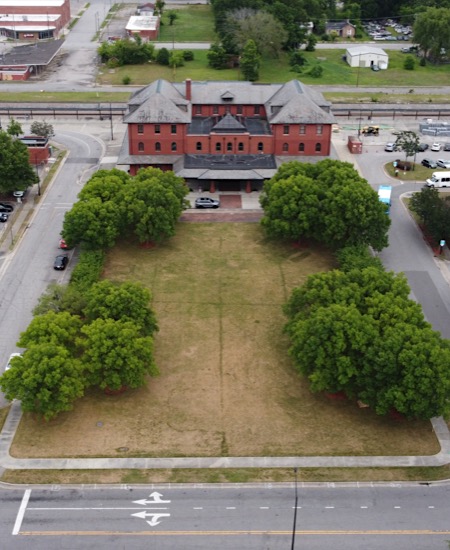
Jun 2023 / RWH

Rocky Mount, NC / Jun 2023 / RWH
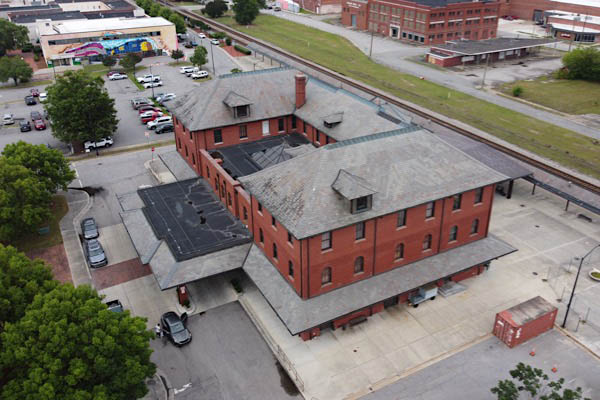
Rocky Mount, NC / Jun 2023 / RWH
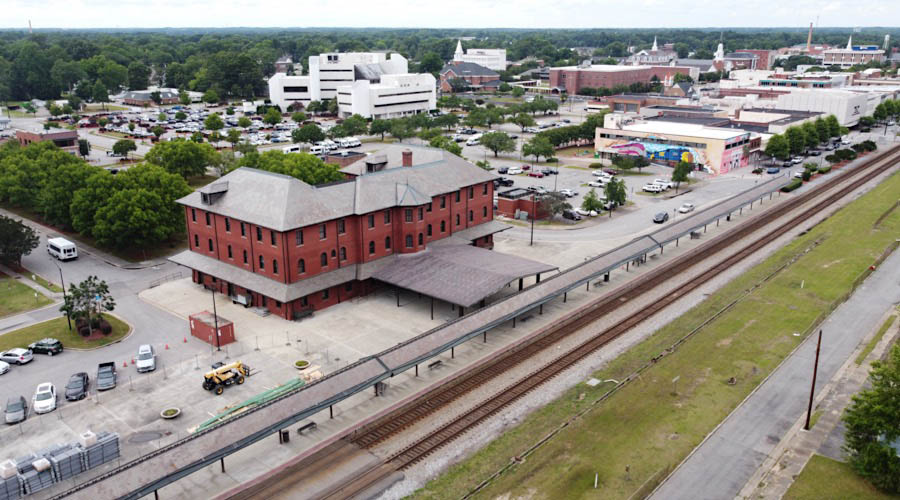
Rocky Mount, NC / Jun 2023 / RWH
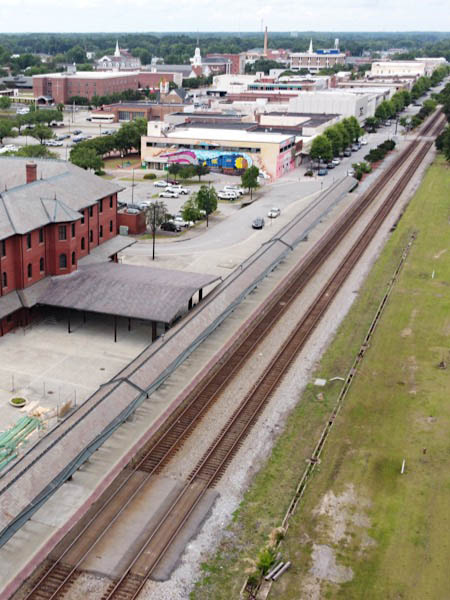
Jun 2023 / RWH
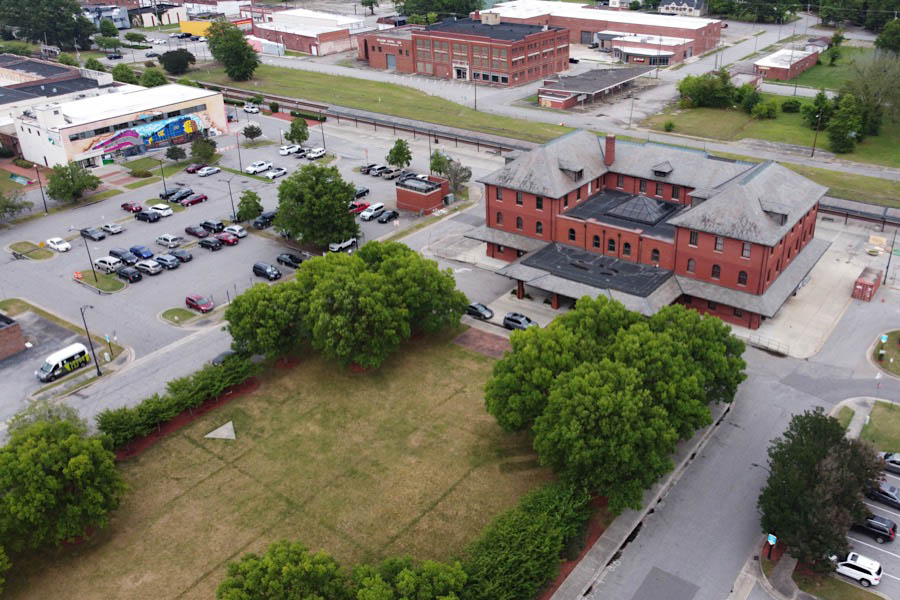
Rocky Mount, NC / Jun 2023 / RWH
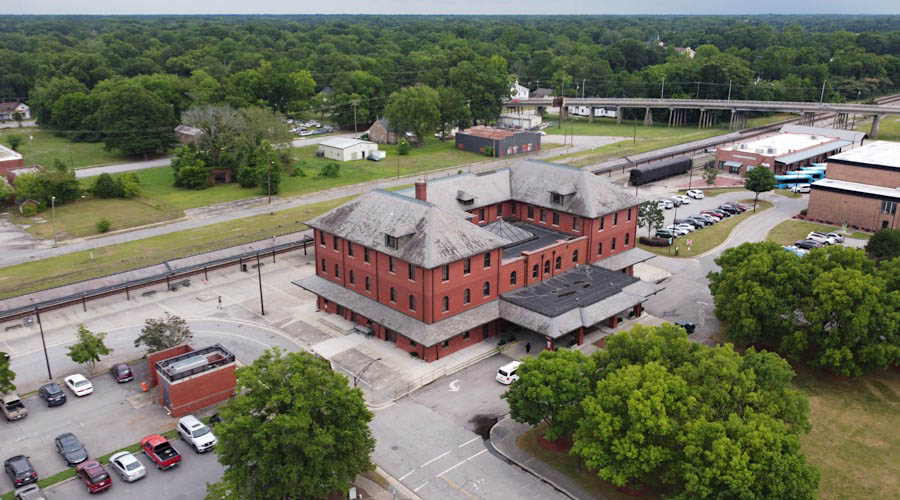
Rocky Mount, NC / Jun 2023 / RWH
 The Champion
The Champion
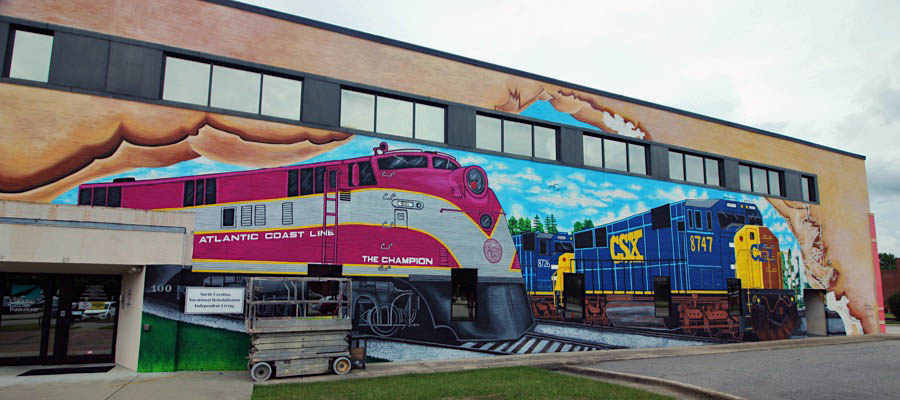
Rocky Mount, NC / Jun 2023 / RWH
 The Champion was a streamlined passenger train operated by the Atlantic Coast Line Railroad and Florida East Coast Railway between New York City and Miami or St. Petersburg, Florida. It operated from 1939 until 1979, continuing under the Seaboard Coast Line and Amtrak. It was a direct competitor to the Seaboard Air Line Railway's Silver Meteor, the first New York-Florida streamliner.
The Champion was a streamlined passenger train operated by the Atlantic Coast Line Railroad and Florida East Coast Railway between New York City and Miami or St. Petersburg, Florida. It operated from 1939 until 1979, continuing under the Seaboard Coast Line and Amtrak. It was a direct competitor to the Seaboard Air Line Railway's Silver Meteor, the first New York-Florida streamliner.
Initially just a New York-Miami service, the ACL added a section serving St. Petersburg and the Tampa Bay area in 1941 once enough streamlined equipment was available. The train was rebranded as the Tamiami Champion, with the St. Petersburg section called the Tamiami Champion (West Coast) (91 northbound/92 southbound), and the Miami section called the Tamiami Champion (East Coast) (1 northbound/2 southbound). In 1943 the names became East Coast Champion and West Coast Champion.
 Southbound trains originated in New York's Pennsylvania Station, and traveled south over the Pennsylvania Railroad-owned Northeast Corridor through Philadelphia, Pennsylvania to Washington, D.C. There, a radio-equipped lounge car was added to the train. Leaving Washington, trains used the Richmond, Fredericksburg and Potomac Railroad to Richmond, Virginia, the north end of the ACL's main line. From Richmond, trains followed the Atlantic coast through Charleston, South Carolina and Savannah, Georgia to Jacksonville, Florida. Here the train split, with the West Coast section moving south then west through DeLand and Sanford on ACL rails to St. Petersburg, while the East Coast section turned south south-east to run along Florida's east coast to Miami via the Florida East Coast Railway.
Southbound trains originated in New York's Pennsylvania Station, and traveled south over the Pennsylvania Railroad-owned Northeast Corridor through Philadelphia, Pennsylvania to Washington, D.C. There, a radio-equipped lounge car was added to the train. Leaving Washington, trains used the Richmond, Fredericksburg and Potomac Railroad to Richmond, Virginia, the north end of the ACL's main line. From Richmond, trains followed the Atlantic coast through Charleston, South Carolina and Savannah, Georgia to Jacksonville, Florida. Here the train split, with the West Coast section moving south then west through DeLand and Sanford on ACL rails to St. Petersburg, while the East Coast section turned south south-east to run along Florida's east coast to Miami via the Florida East Coast Railway.
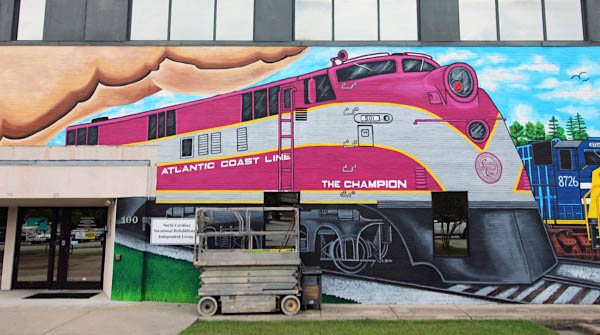
Jun 2023 / RWH
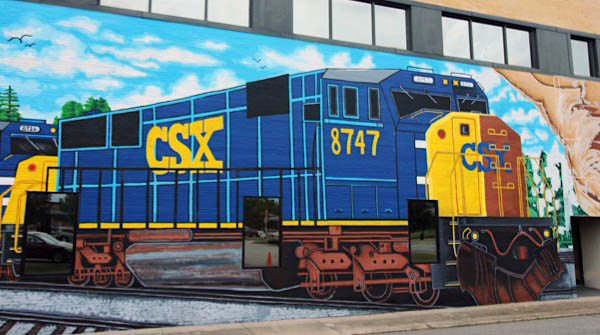
Jun 2023 / RWH
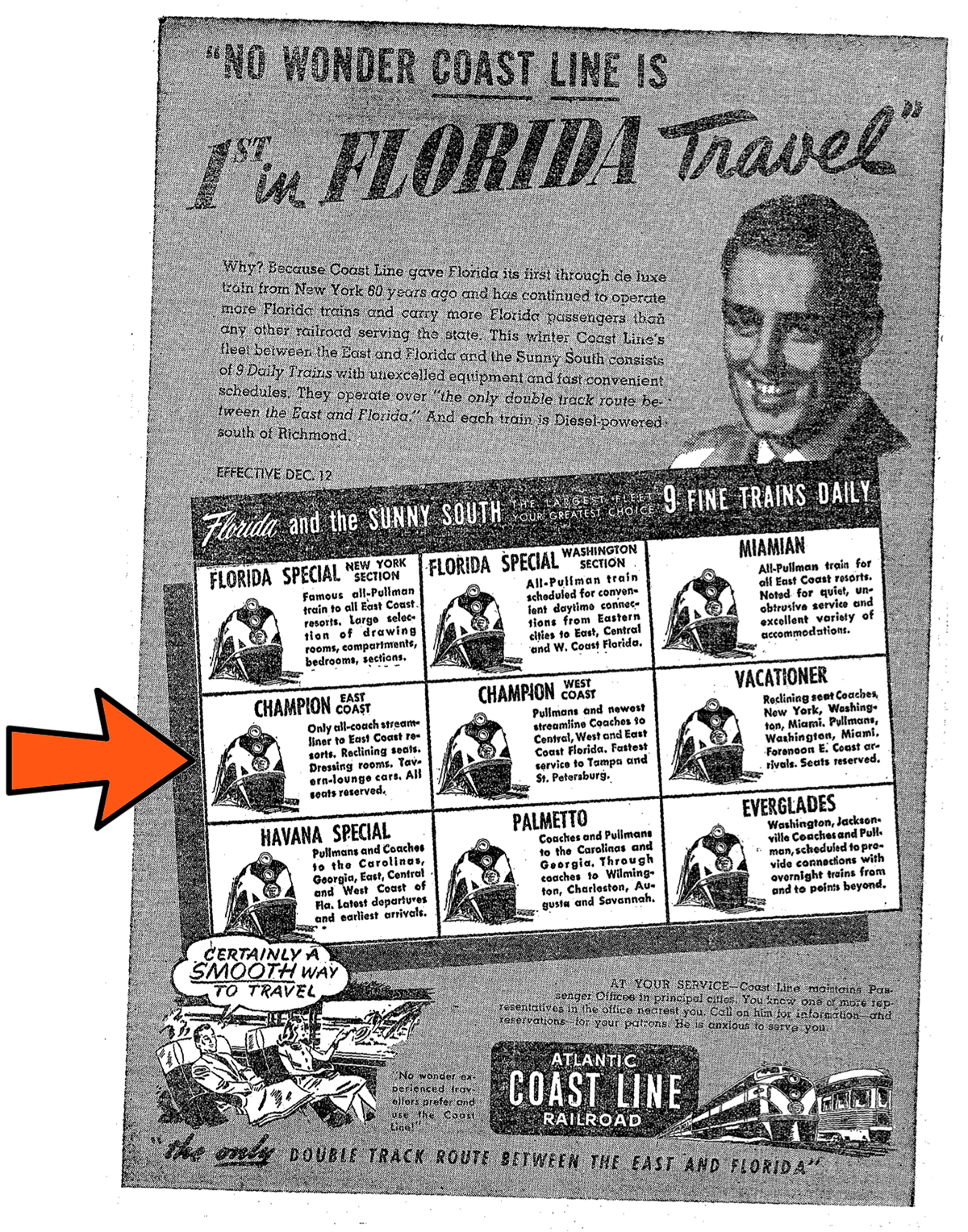
1948 Official Guide ad / collection
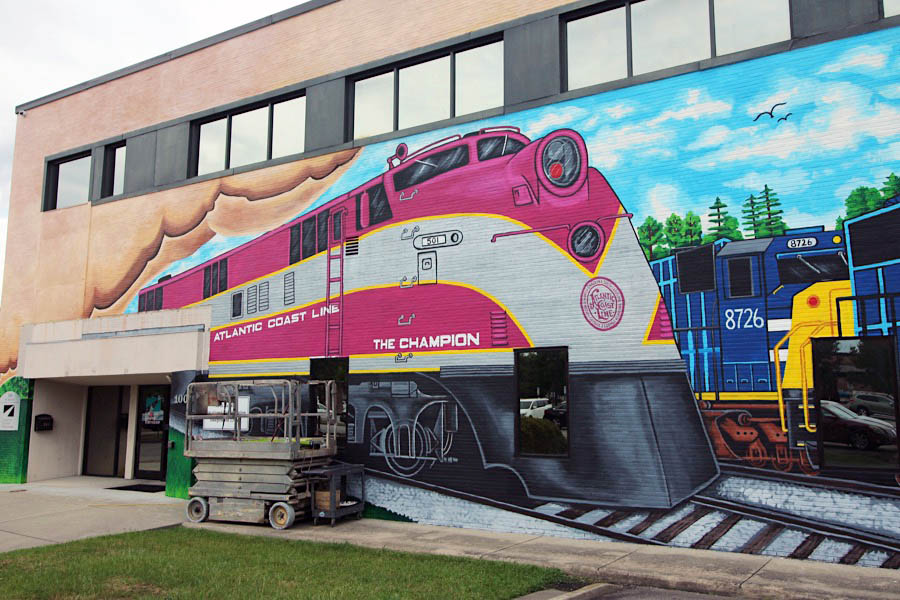
Rocky Mount, NC / Jun 2023 / RWH
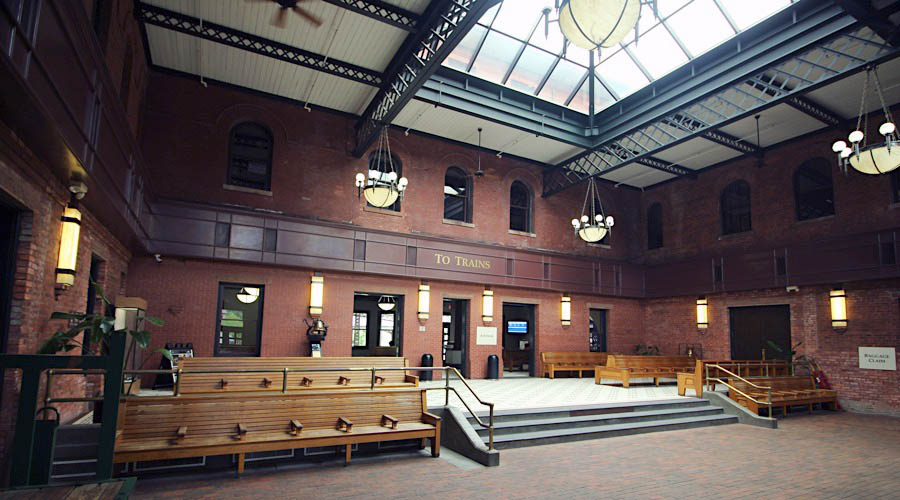
Jun 2023 / RWH
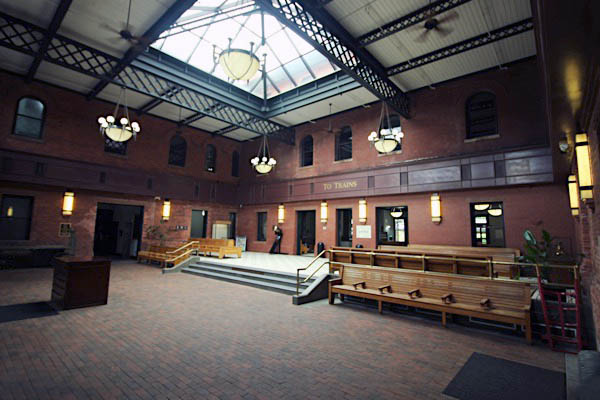
Jun 2023 / RWH

Jun 2023 / RWH
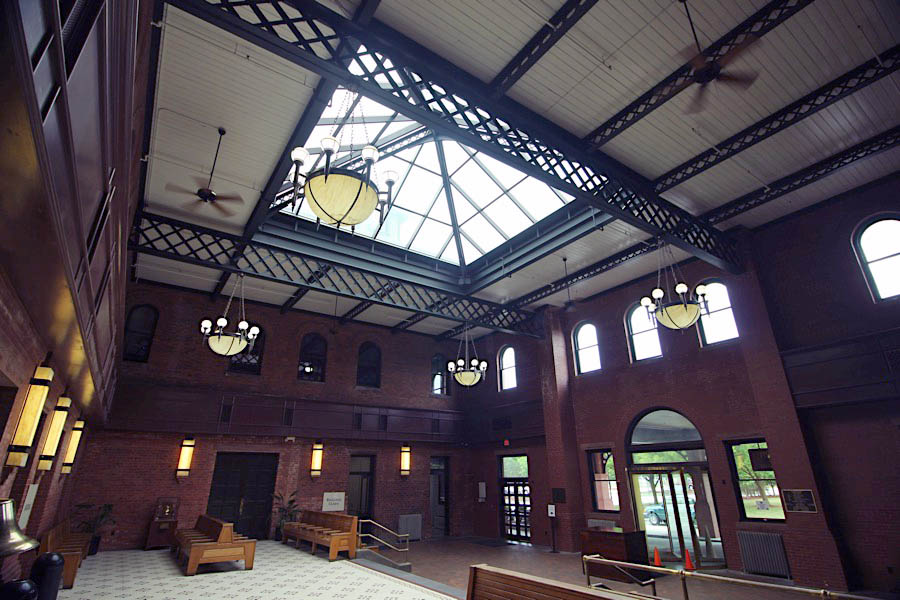
Jun 2023 / RWH

Jun 2023 / RWH
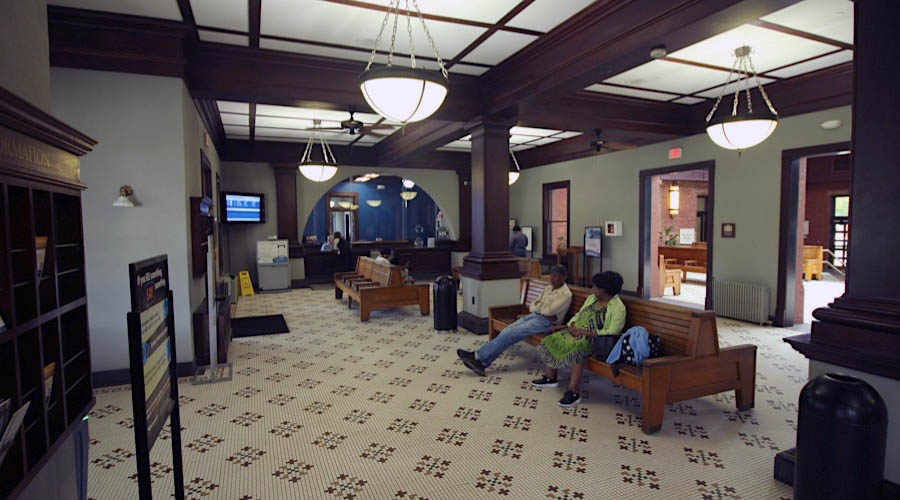
Jun 2023 / RWH
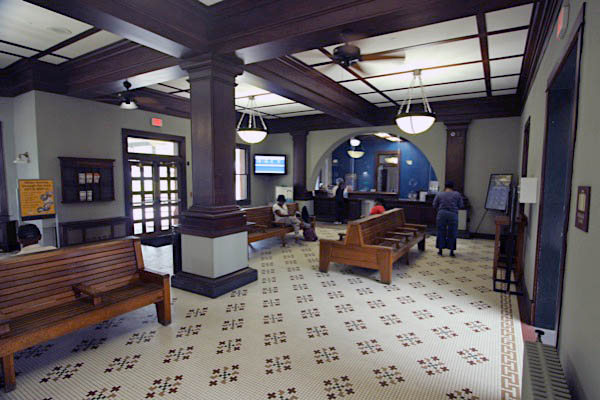
Jun 2023 / RWH
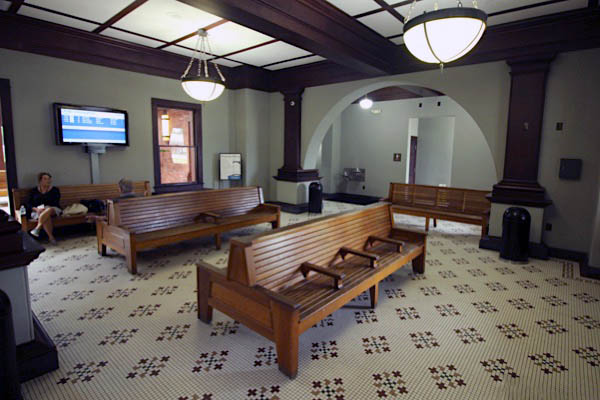
Jun 2023 / RWH
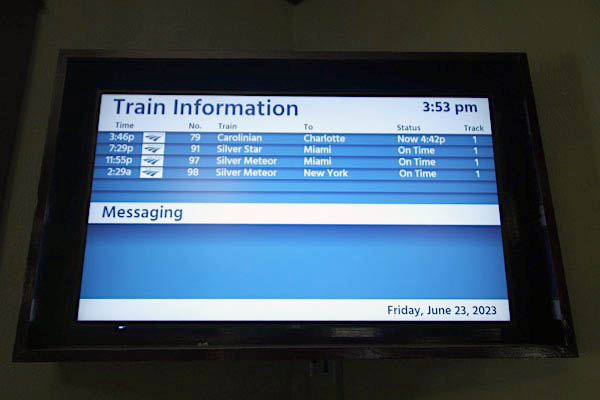
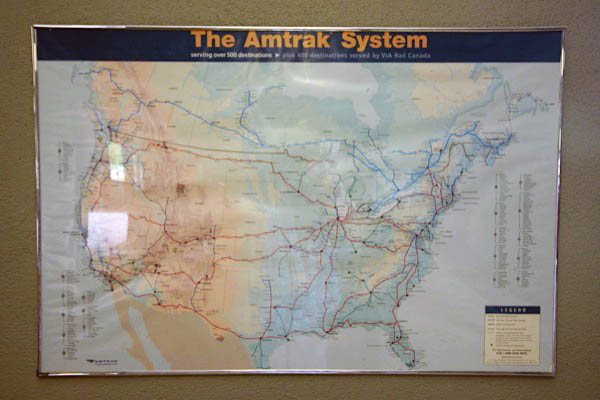
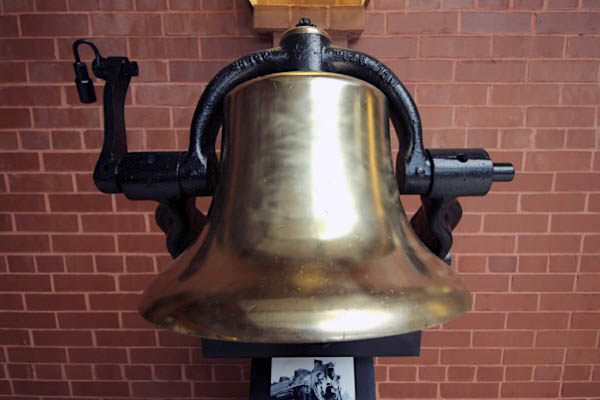
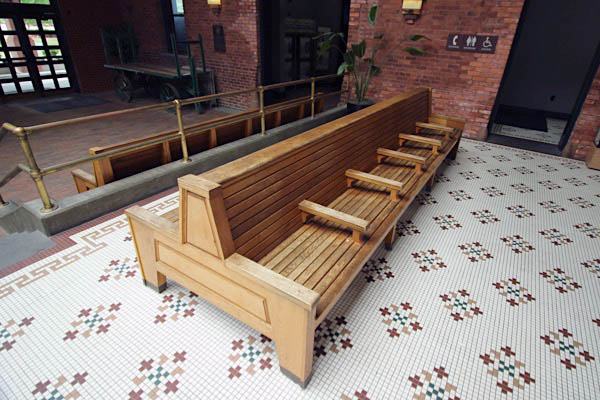

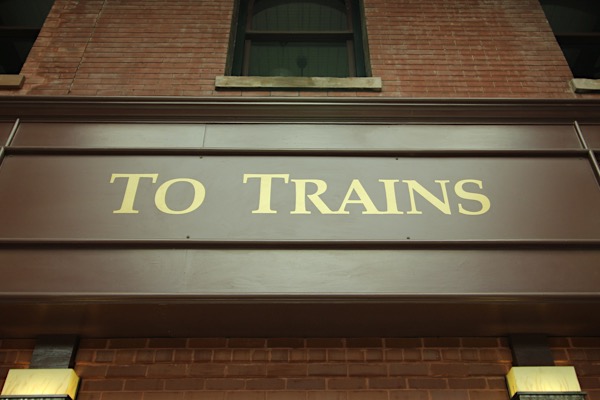
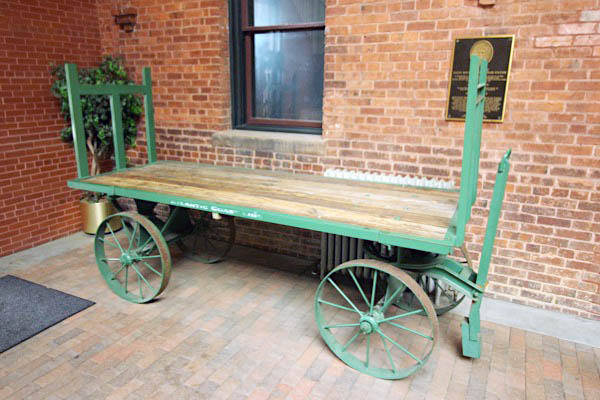
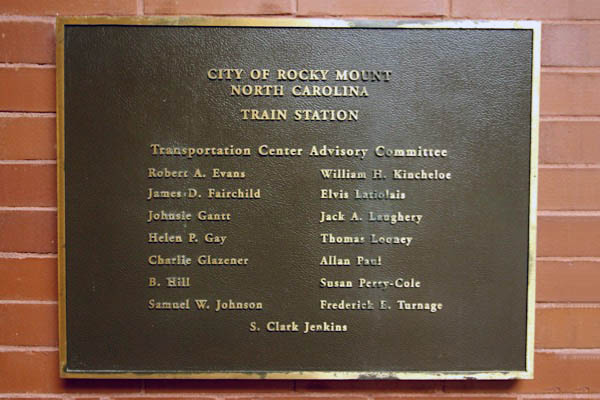
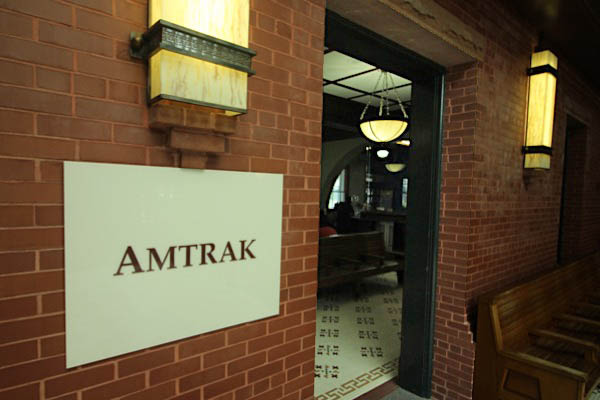
Jun 2023 / RWH

Jun 2023 / RWH
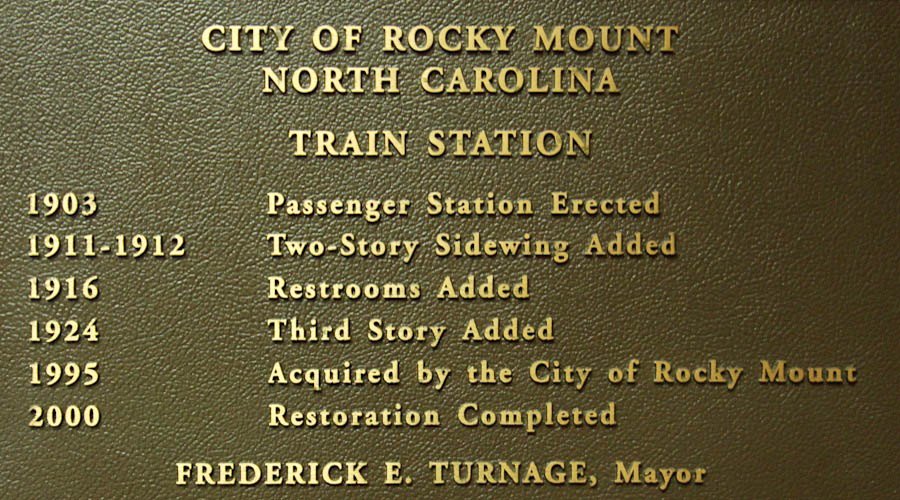
Jun 2023 / RWH

Jun 2023 / RWH
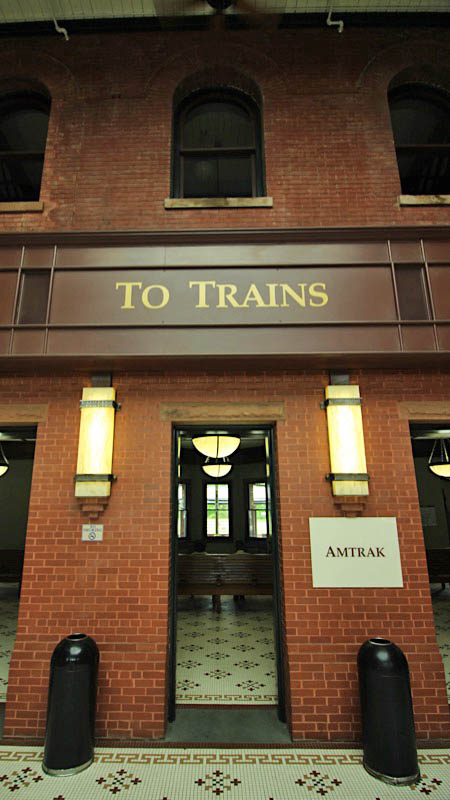
Jun 2023 / RWH
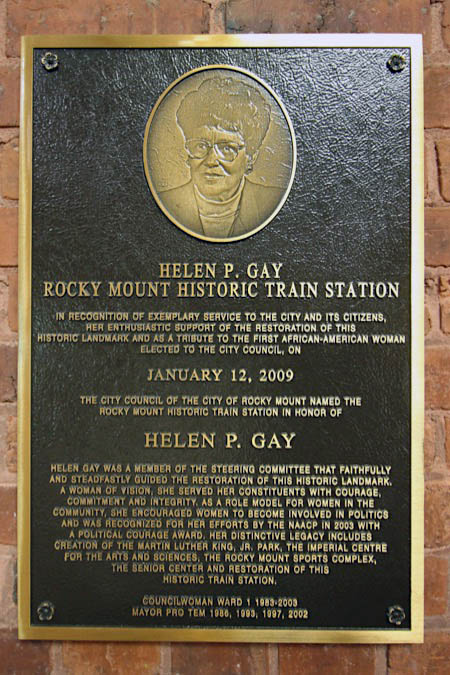
Jun 2023 / RWH
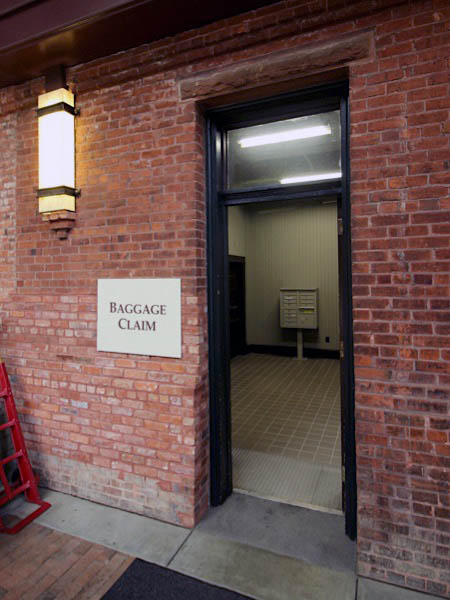
Jun 2023 / RWH
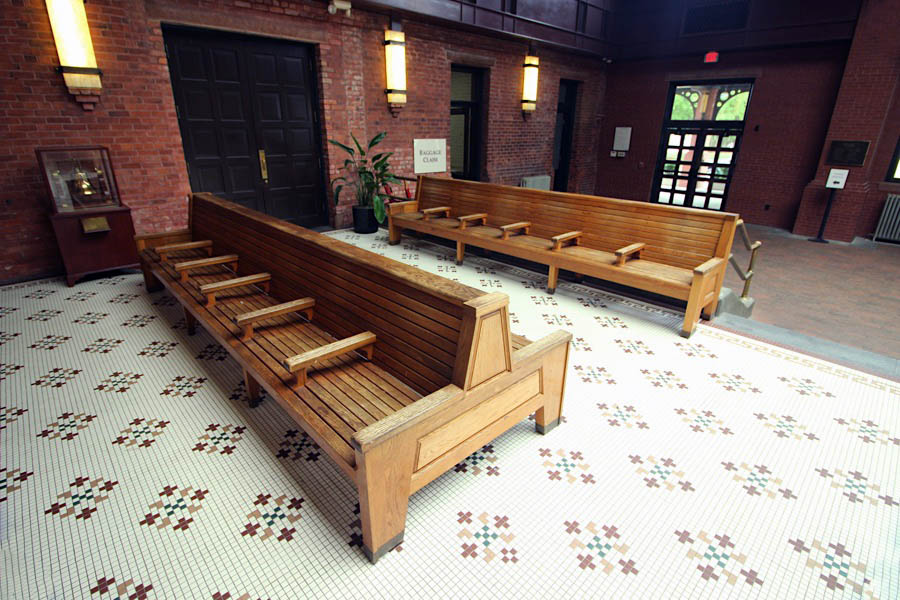
Jun 2023 / RWH
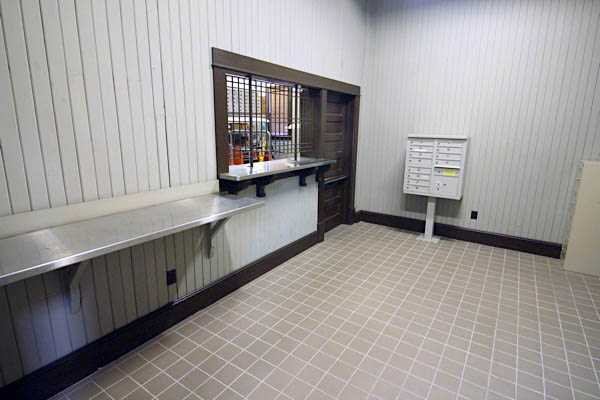
Jun 2023 / RWH
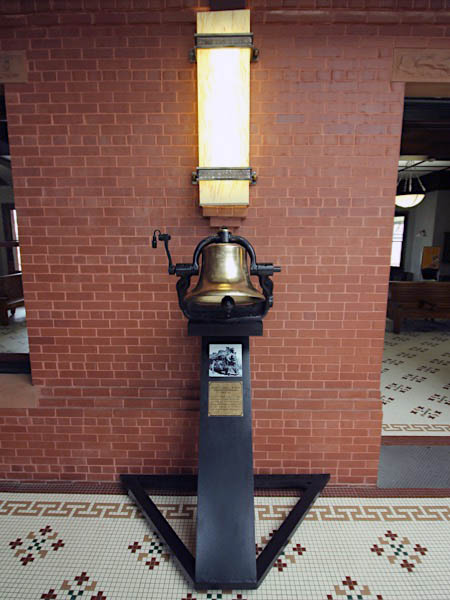
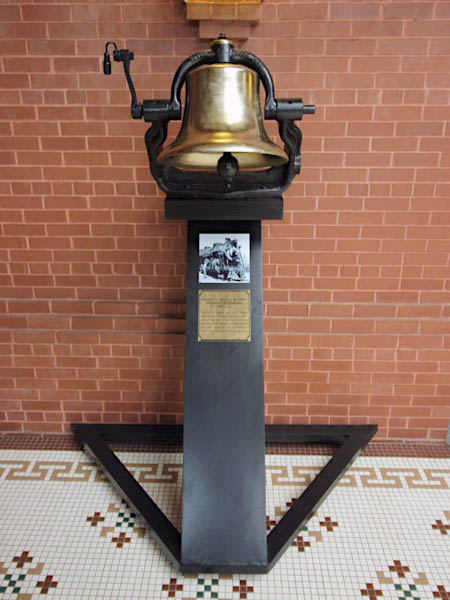
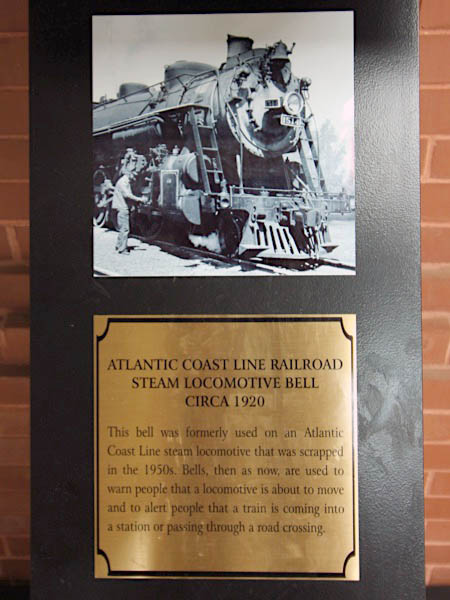
Jun 2023 / RWH
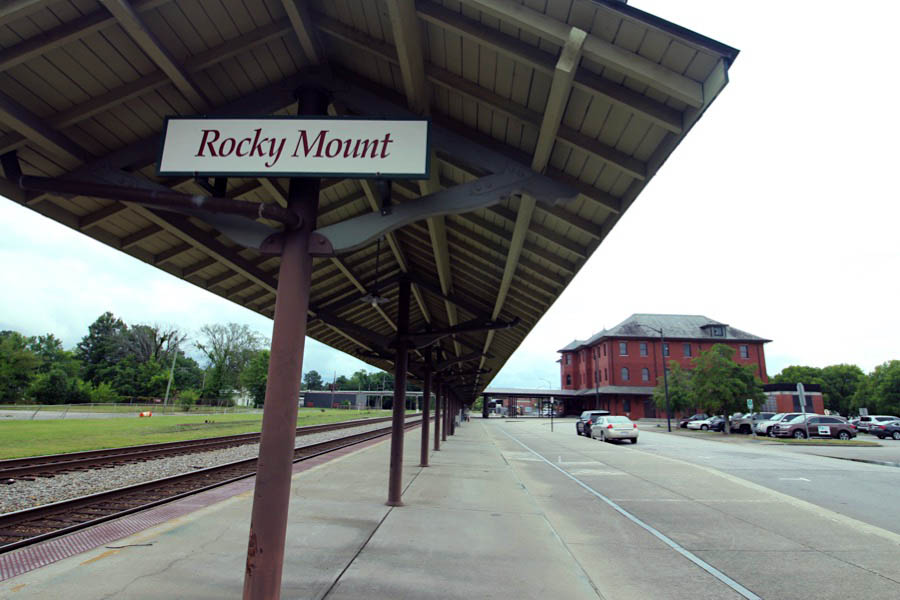
Rocky Mount, NC / Jun 2023 / RWH
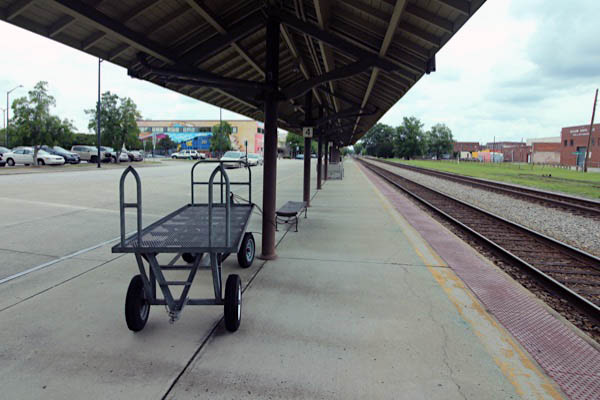
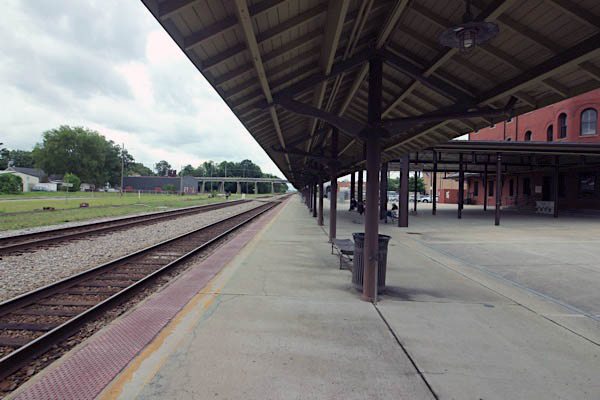
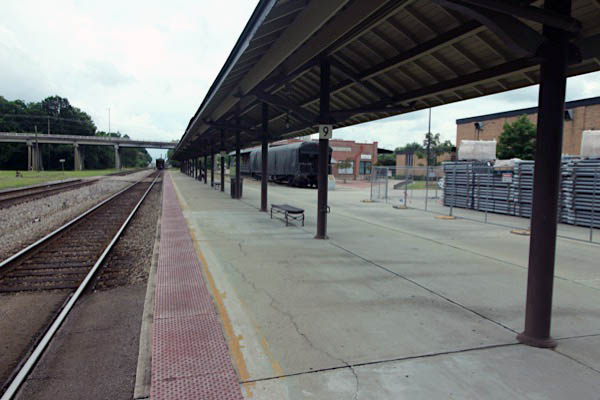
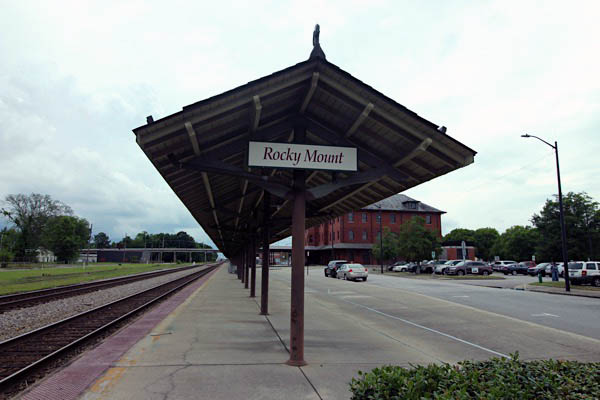
Rocky Mount, NC / Jun 2023 / RWH
 Business Car #303
Business Car #303

1933 Official Guide ad / collection
 tlantic Coast Line #303 was built by Pullman-Standard in May 1902 for the Chicago, Rock Island & Pacific Railroad as their "Thanis." The business car was purchased by the ACL in 1909 and numbered 303. After retirement, the car spent time on shortline Laurinburg & Southern, before coming to Rocky Mount and restoration back to ACL heritage.
tlantic Coast Line #303 was built by Pullman-Standard in May 1902 for the Chicago, Rock Island & Pacific Railroad as their "Thanis." The business car was purchased by the ACL in 1909 and numbered 303. After retirement, the car spent time on shortline Laurinburg & Southern, before coming to Rocky Mount and restoration back to ACL heritage.
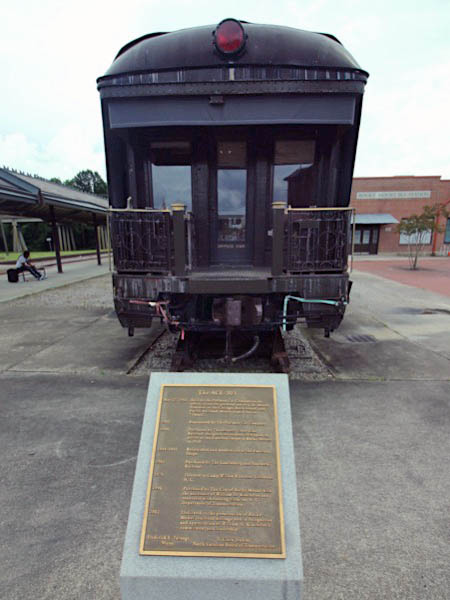
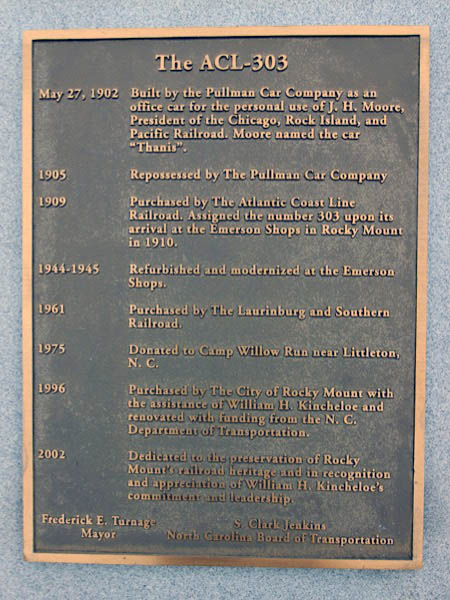
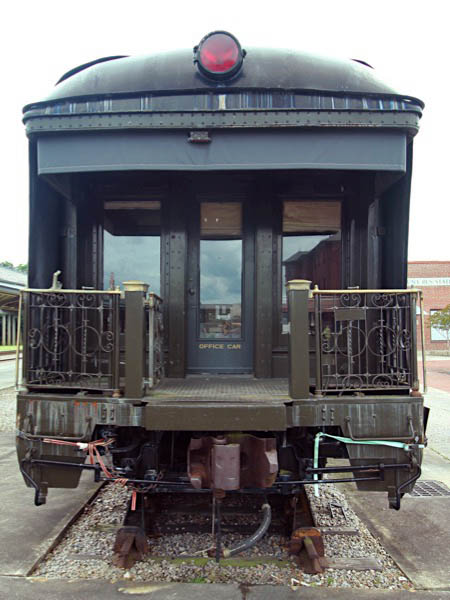
Rocky Mount, NC / Jun 2023 / RWH
 CSX Mainline Action
CSX Mainline Action
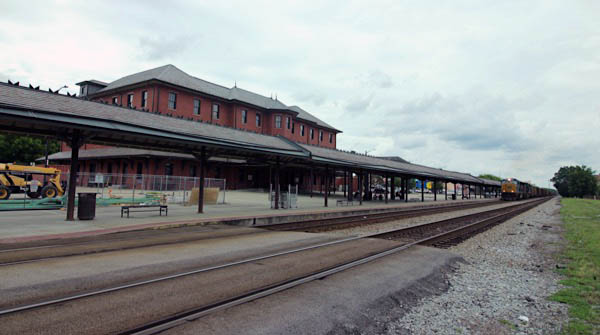


Rocky Mount, NC / Jun 2023 / RWH
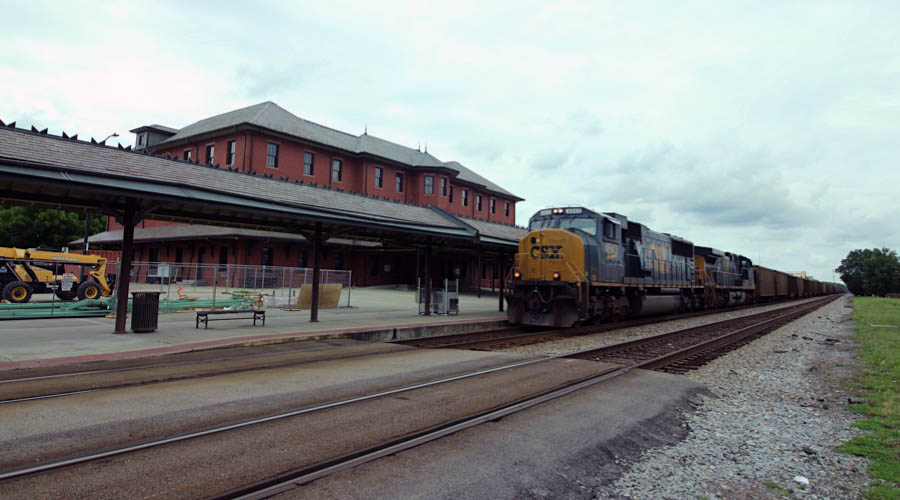
Rocky Mount, NC / Jun 2023 / RWH
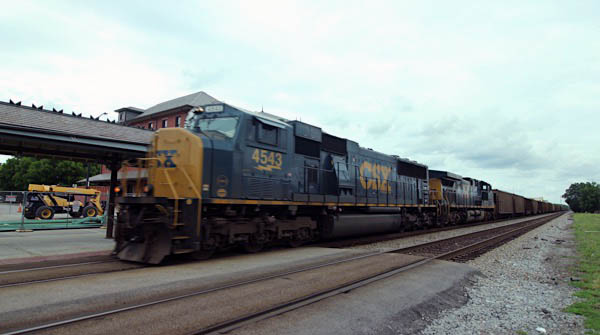

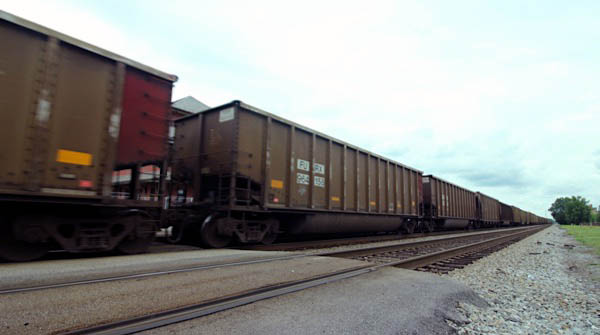
Rocky Mount, NC / Jun 2023 / RWH

Rocky Mount, NC / Jun 2023 / RWH

Rocky Mount, NC / Jun 2023 / RWH
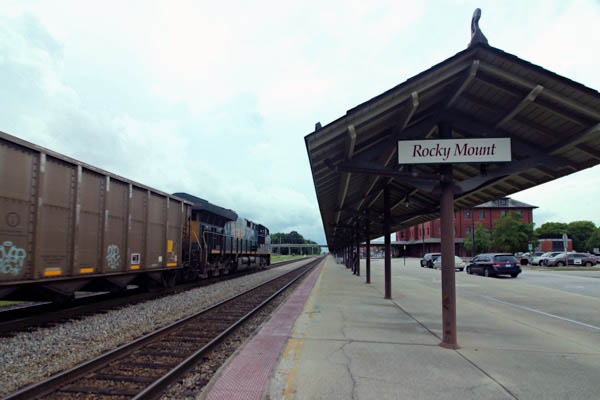

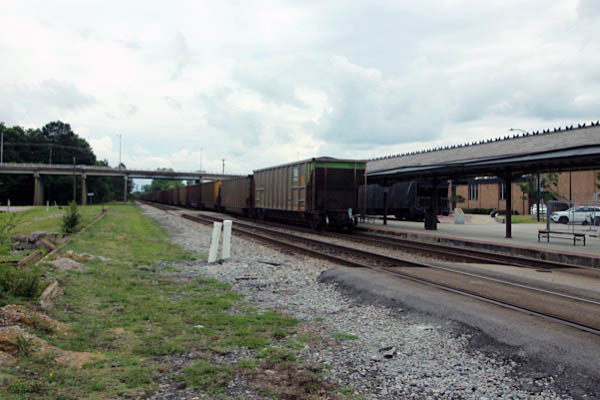
Rocky Mount, NC / Jun 2023 / RWH

See also our complete CSX Transportation scrapbook in Mainlines
 Wilson
Wilson
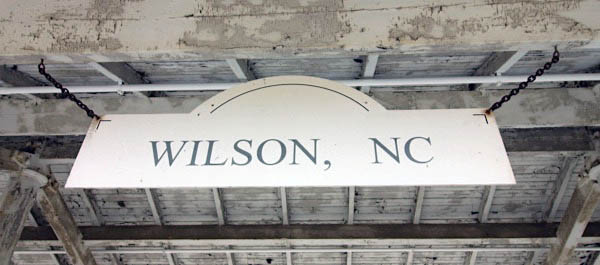
Jun 2023 / RWH
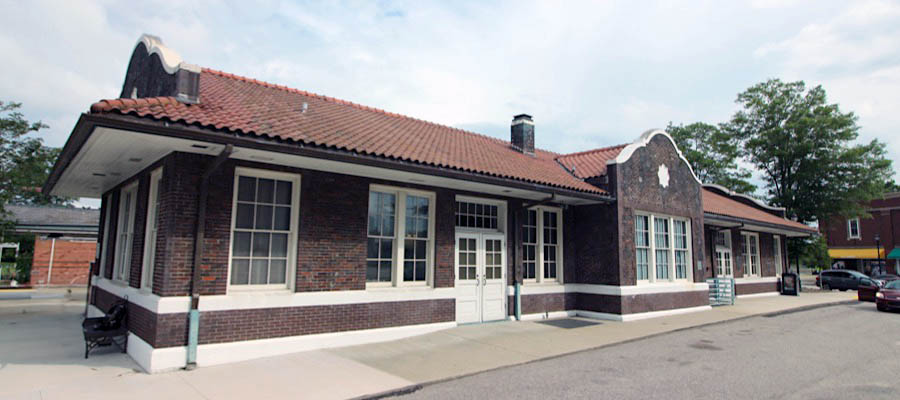
Wilson, NC / Jun 2023 / RWH
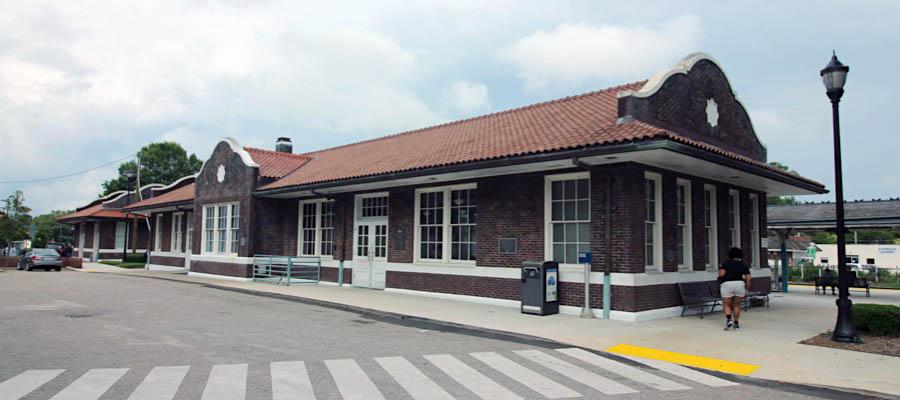
Wilson, NC / Jun 2023 / RWH

Click to see the Wilson depot plotted on a Google Maps page
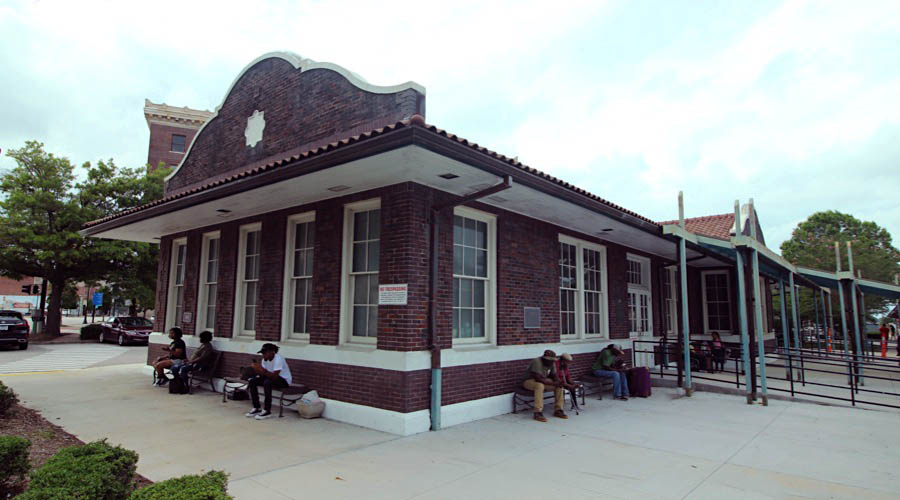
Wilson, NC / Jun 2023 / RWH
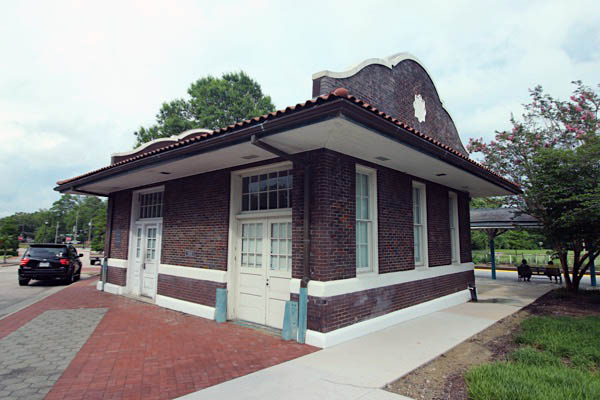
Wilson, NC / Jun 2023 / RWH
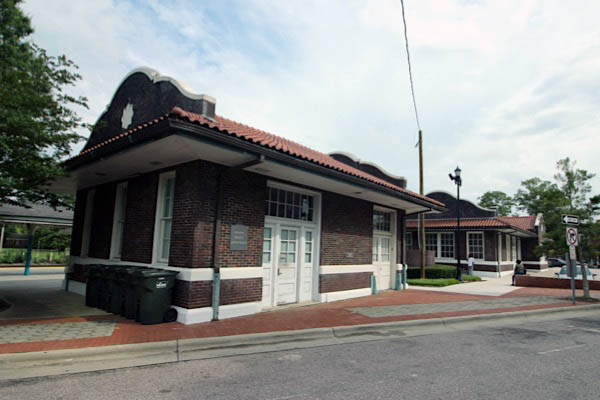
Wilson, NC / Jun 2023 / RWH
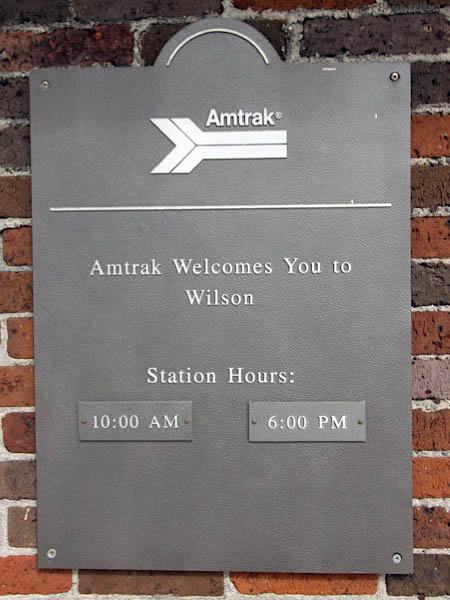
Jun 2023 / RWH
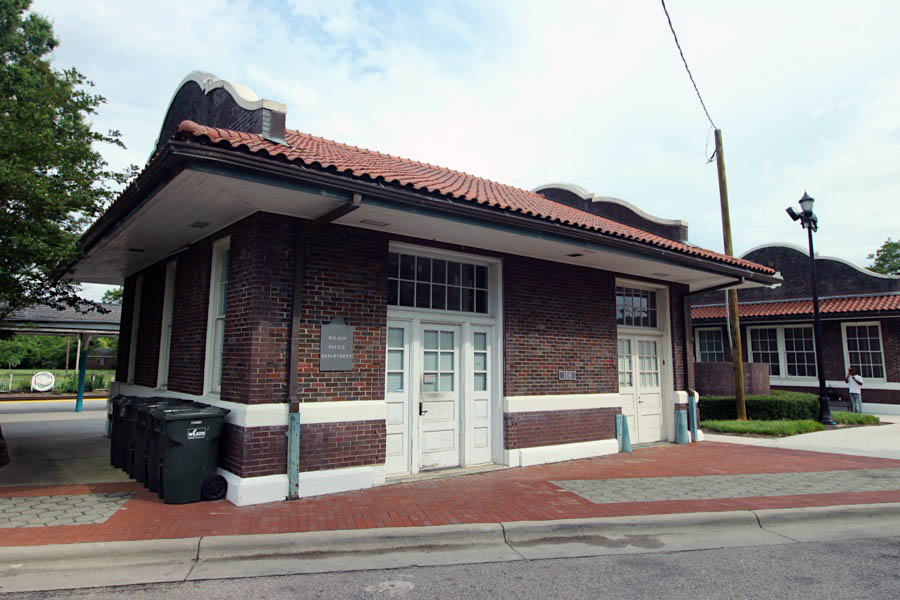
Wilson, NC / Jun 2023 / RWH

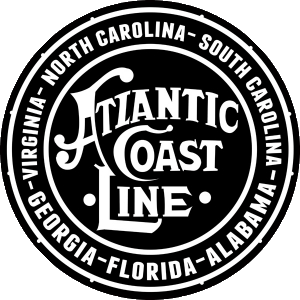
 he Wilson Amtrak station was constructed in 1924 by the Atlantic Coast Line Railroad. Designed by A.M. Griffin in the Flemish style, this one-story brick building sports Spanish terra cotta roof tiles and an umbrella canopy that stretches the length of the station.
he Wilson Amtrak station was constructed in 1924 by the Atlantic Coast Line Railroad. Designed by A.M. Griffin in the Flemish style, this one-story brick building sports Spanish terra cotta roof tiles and an umbrella canopy that stretches the length of the station.
Though the station underwent major renovations by the turn of the 20th century, workers took care not to destroy the architecture of the building. The restoration took place in three phases. In phase one, the station was completely rebuilt and modernized while preserving and restoring the original architecture. A new platform in compliance with the Americans with Disabilities Act and canopy connecting the station with the platform were constructed, as well as a waiting room, baggage room, ticket office and vending area. The construction began in 1996 and was completed two years later. In phase two of the restoration process, the city and state added long-term parking facilities and enhanced the look of the station with the addition of some landscaping. Phase two construction was completed in 2003. Phase three involved canopy restoration. The entire renovation project cost about $3 million.
 Like many small towns in the 19th century, the railroad was the center of growth and prosperity for Wilson. In late 1839, the Wilmington-Weldon and Raleigh Railroad completed tracks that stopped through two stations: Toisnot Junction Station and Hickory Grove. The town of Wilson was born by joining together the town of Toisnot Junction and Hickory Grove. It was named for General Louis Dicken Wilson, a state senator and an early advocate of the public school movement.
Like many small towns in the 19th century, the railroad was the center of growth and prosperity for Wilson. In late 1839, the Wilmington-Weldon and Raleigh Railroad completed tracks that stopped through two stations: Toisnot Junction Station and Hickory Grove. The town of Wilson was born by joining together the town of Toisnot Junction and Hickory Grove. It was named for General Louis Dicken Wilson, a state senator and an early advocate of the public school movement.
Wilson, known as the City of Beautiful Trees, was incorporated in 1849 as a farm market. At the time, tar and turpentine were the primary cash products, with cotton growing in importance in the 1860s. After the Civil War, farmers found a better market in tobacco, and by the turn of the 20th century, Wilson became the world’s largest bright leaf tobacco market. Wilson is also home to Imagination Station, an imaginative science learning center for children.

Jun 2023 / RWH
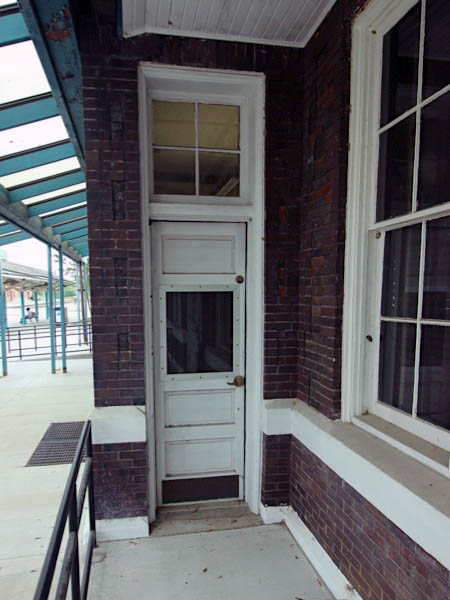
Jun 2023 / RWH
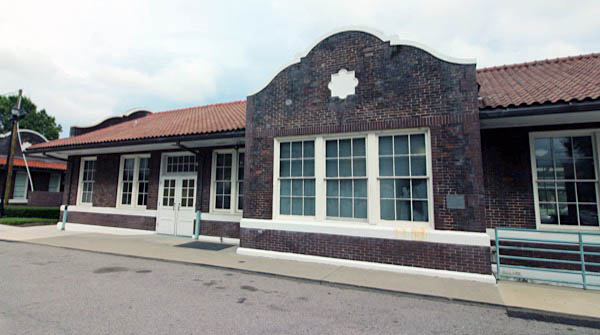
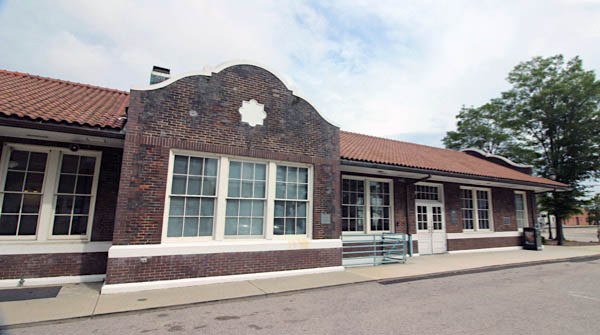
Wilson, NC / Jun 2023 / RWH
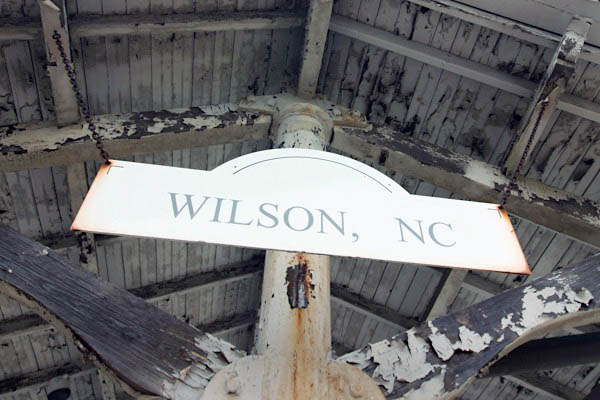

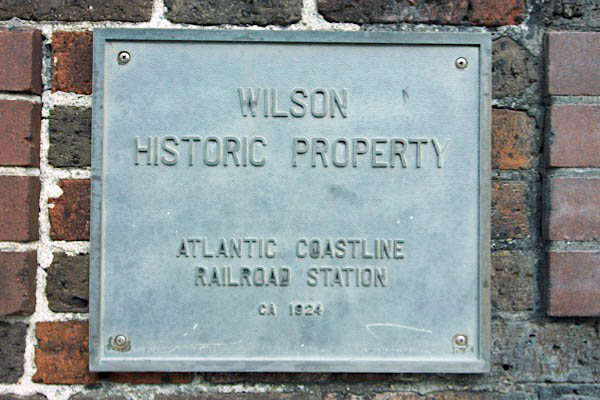

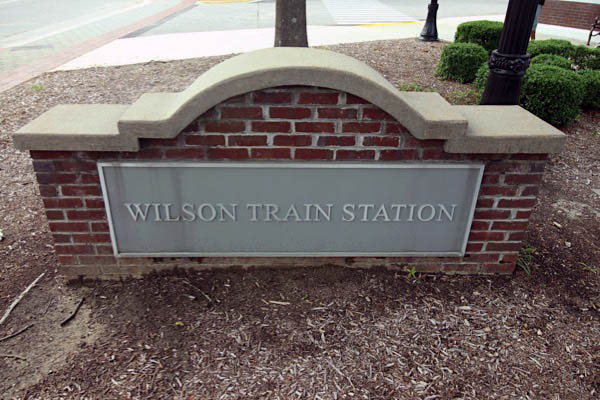
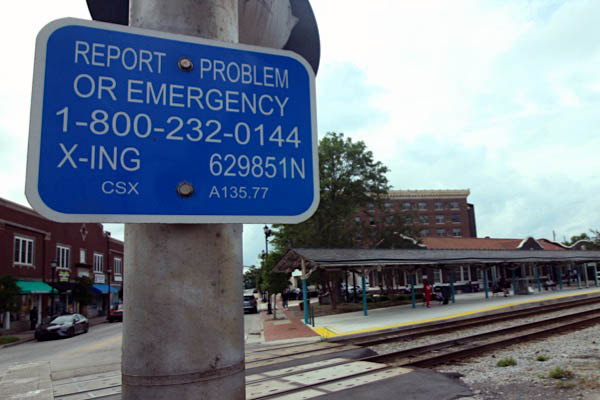
Jun 2023 / RWH
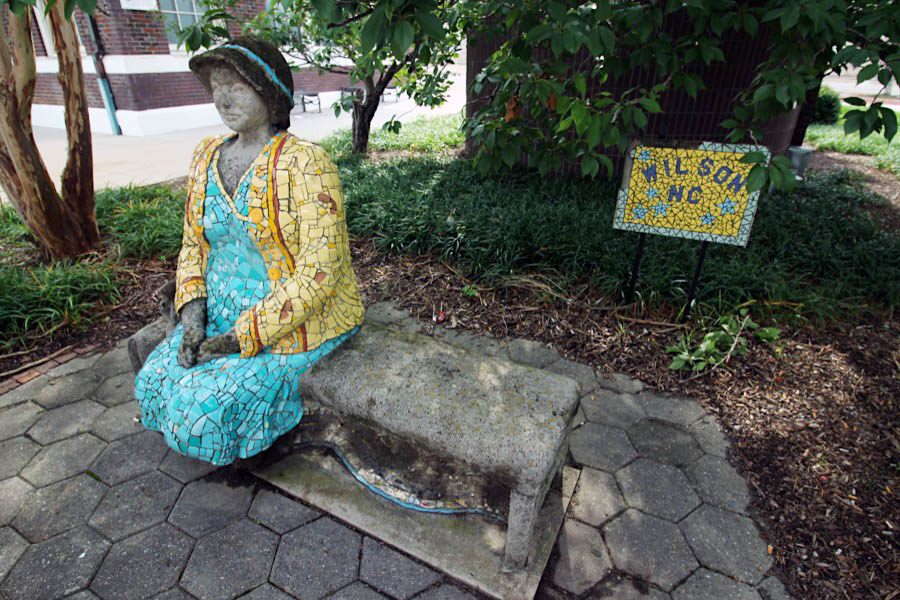
Jun 2023 / RWH

Jun 2023 / RWH
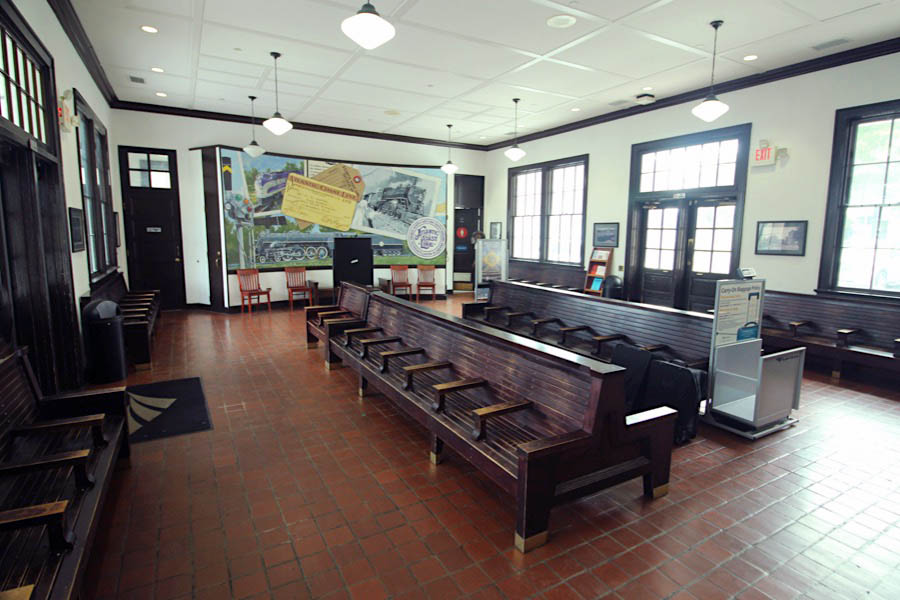
Jun 2023 / RWH
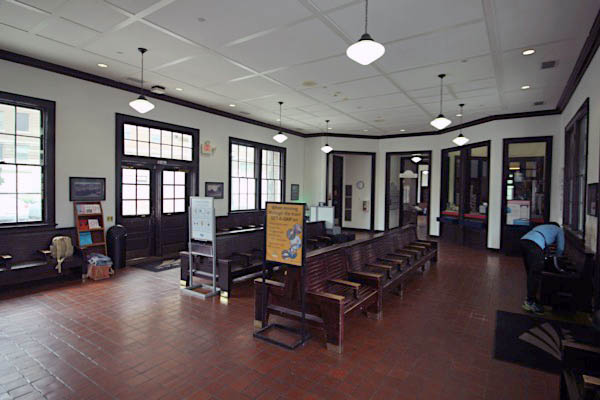
Jun 2023 / RWH
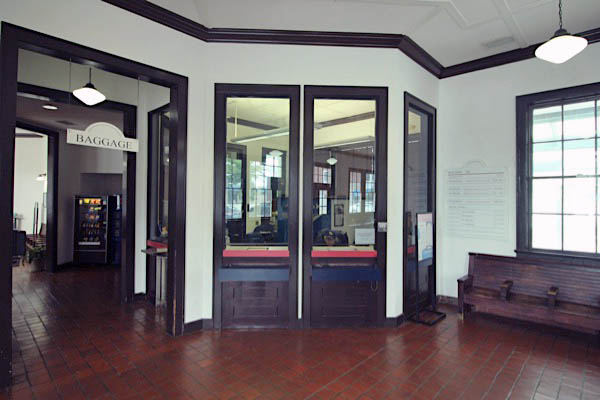
Jun 2023 / RWH

Jun 2023 / RWH

Jun 2023 / RWH
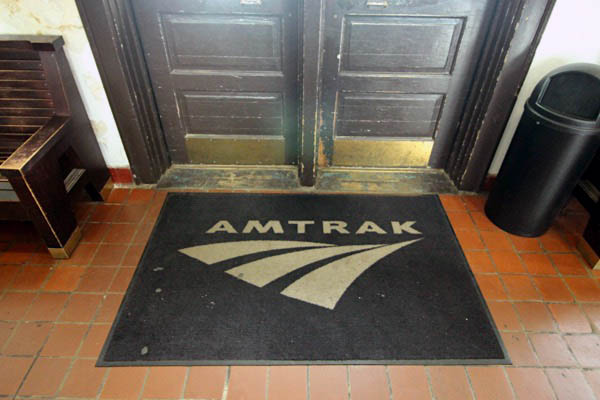
Jun 2023 / RWH
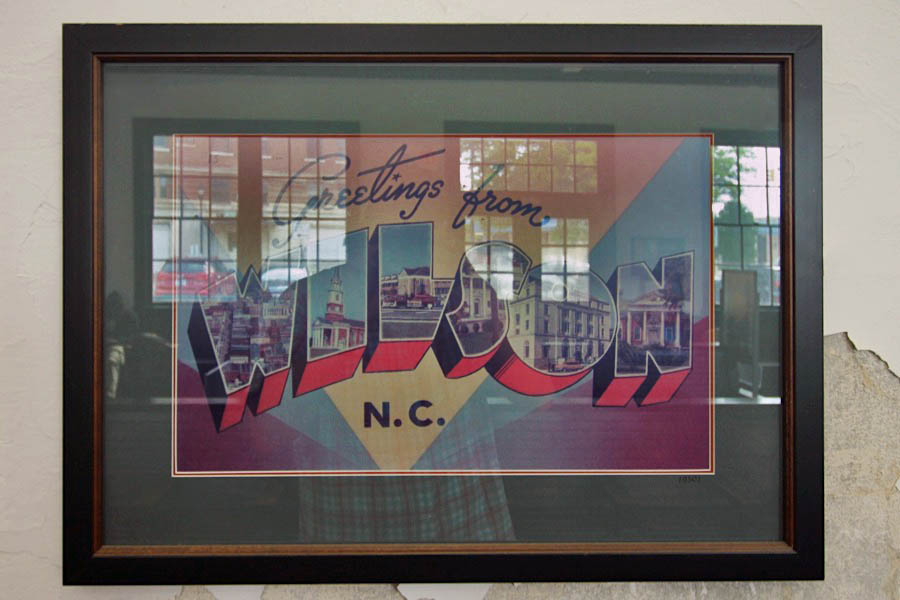
Jun 2023 / RWH

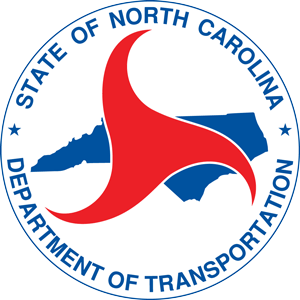 In 1999, a 19′ by 10′ mural for the station’s waiting room was completed. It was commissioned by the North Carolina Department of Transportation and painted by artist Michael Brown. The mural depicts 100 years of railroad history in Wilson.
In 1999, a 19′ by 10′ mural for the station’s waiting room was completed. It was commissioned by the North Carolina Department of Transportation and painted by artist Michael Brown. The mural depicts 100 years of railroad history in Wilson.
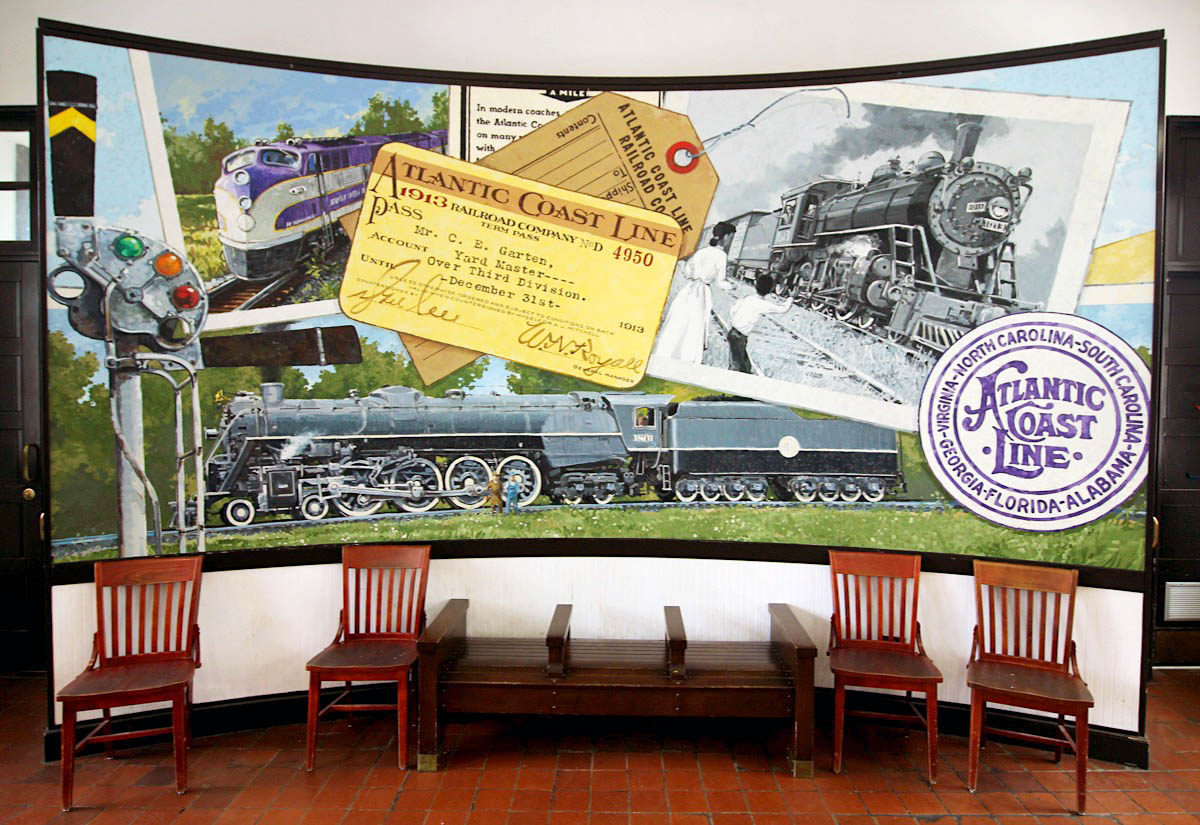
Jun 2023 / RWH

Jun 2023 / RWH

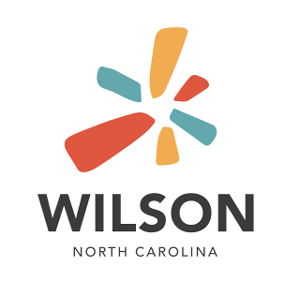
 nce heralded as "The World's Greatest Tobacco Market," Wilson, NC is now a thriving city of almost 50,000 people that has successfully recruited new business including pharmaceuticals, banking, and medical to replace the lost tobacco market revenue. During the heyday of the tobacco market in the late 1800s and early 1900s, its success drew prosperous farmers and businessmen to establish majestic homes downtown along West Nash Street, widely known as one of the most beautiful residential areas in North Carolina. Now lining the avenues of the downtown business district, historically-preserved architecture with high speed fiber optic internet blends the visions of yesteryear with the inspiration of tomorrow. Weathered brick tobacco warehouses and a Classical Revival courthouse share street space with today’s boutique shops, a regional business incubator and burgeoning arts community. A whimsical whirligig “farm” of massive, wind-driven, kinetic sculptures designed and constructed by renowned folk artist, Vollis Simpson, provides an arts-driven economic development engine for downtown revitalization.
nce heralded as "The World's Greatest Tobacco Market," Wilson, NC is now a thriving city of almost 50,000 people that has successfully recruited new business including pharmaceuticals, banking, and medical to replace the lost tobacco market revenue. During the heyday of the tobacco market in the late 1800s and early 1900s, its success drew prosperous farmers and businessmen to establish majestic homes downtown along West Nash Street, widely known as one of the most beautiful residential areas in North Carolina. Now lining the avenues of the downtown business district, historically-preserved architecture with high speed fiber optic internet blends the visions of yesteryear with the inspiration of tomorrow. Weathered brick tobacco warehouses and a Classical Revival courthouse share street space with today’s boutique shops, a regional business incubator and burgeoning arts community. A whimsical whirligig “farm” of massive, wind-driven, kinetic sculptures designed and constructed by renowned folk artist, Vollis Simpson, provides an arts-driven economic development engine for downtown revitalization.
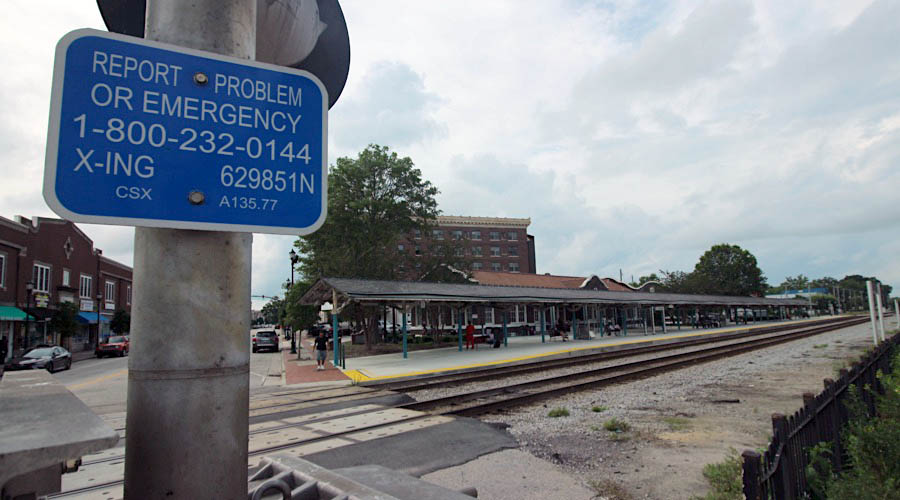
Wilson, NC / Jun 2023 / RWH
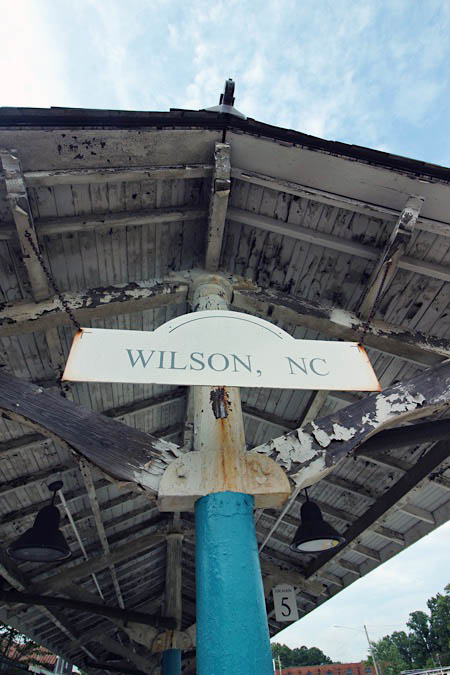
Jun 2023 / RWH
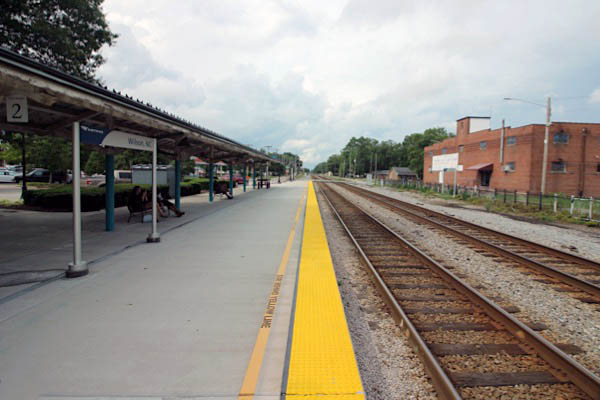
Wilson, NC / Jun 2023 / RWH
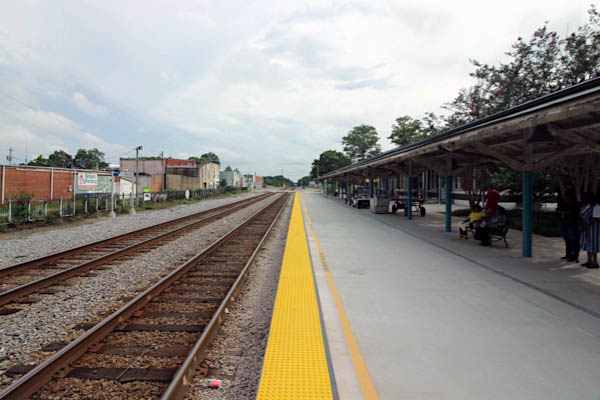
Wilson, NC / Jun 2023 / RWH
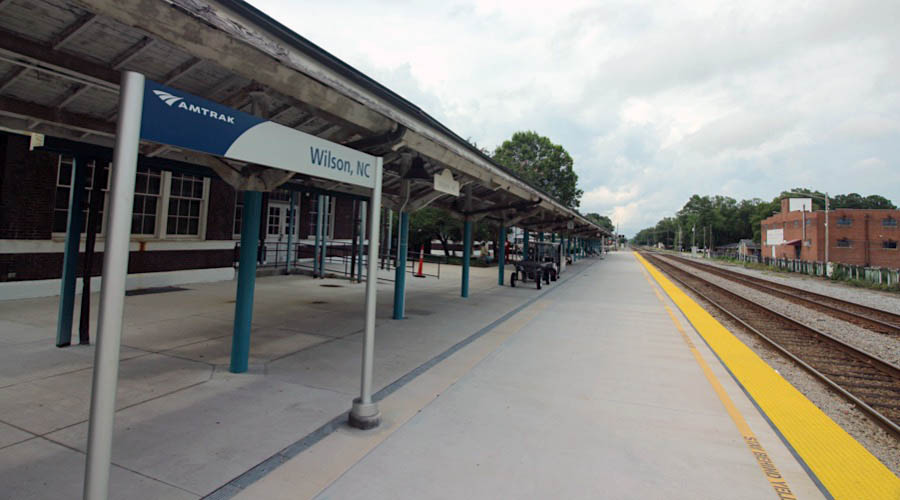
Wilson, NC / Jun 2023 / RWH
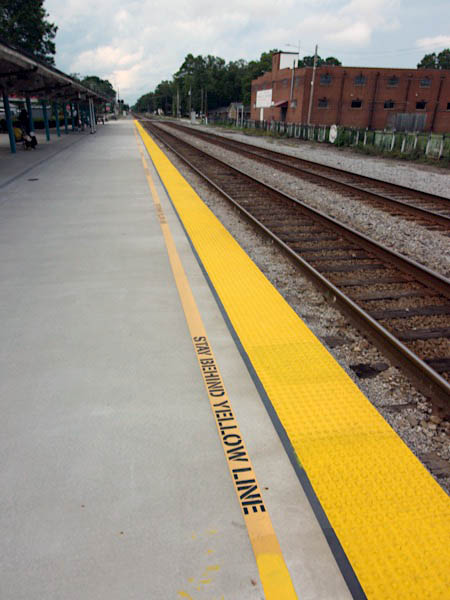
Jun 2023 / RWH
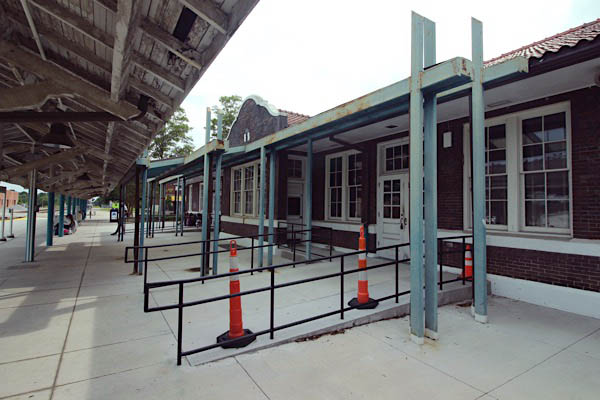
Jun 2023 / RWH
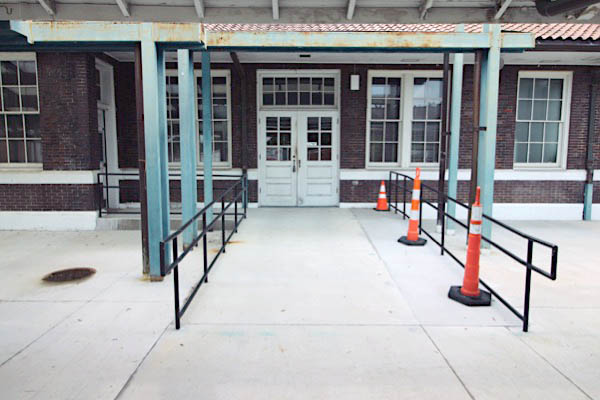
Jun 2023 / RWH
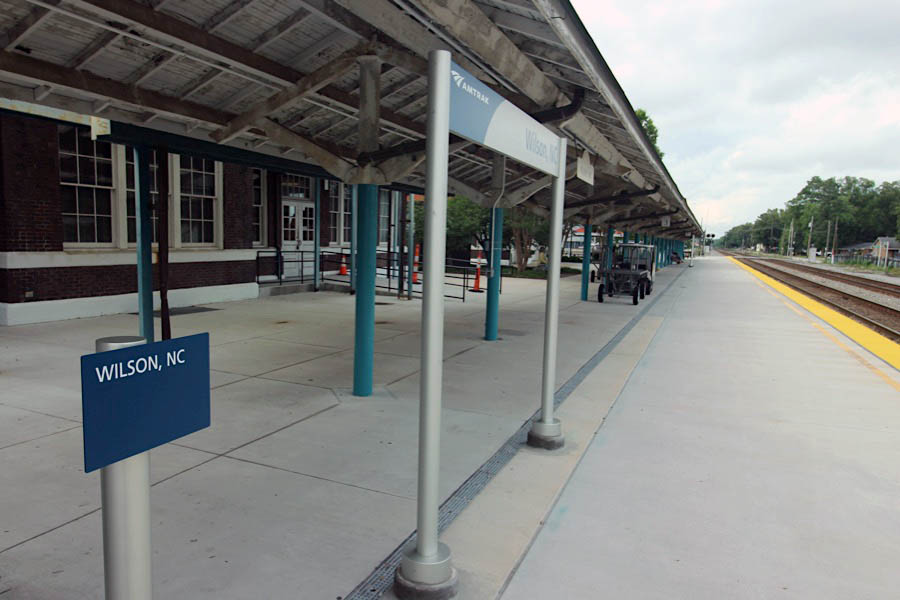
Wilson, NC / Jun 2023 / RWH
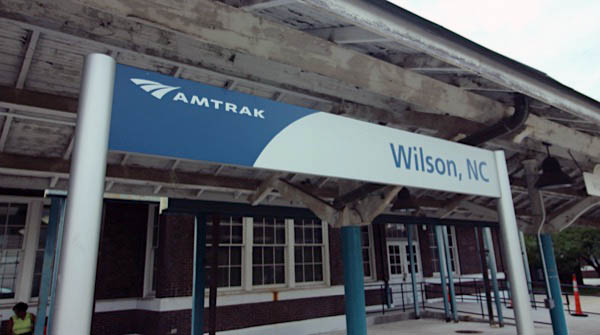
Jun 2023 / RWH
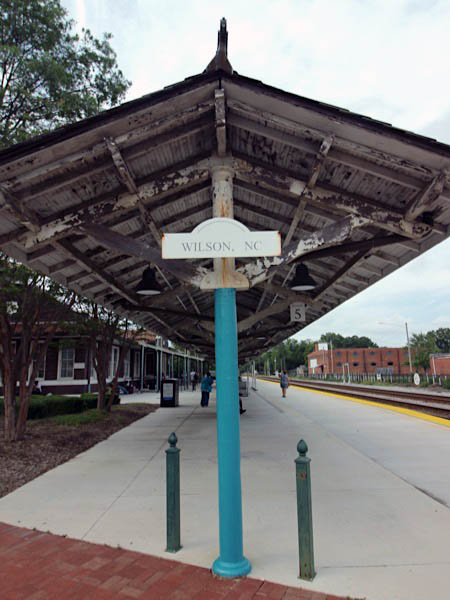
Jun 2023 / RWH

Jun 2023 / RWH
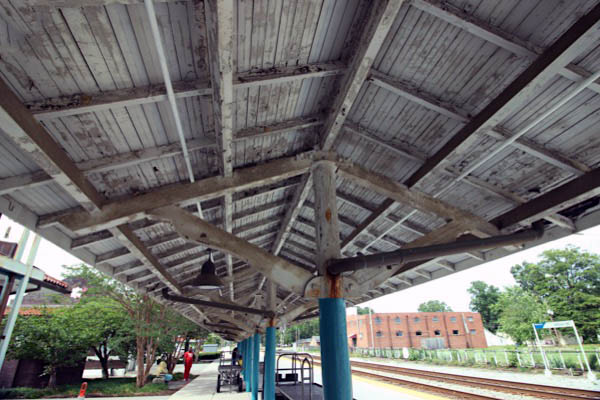
Jun 2023 / RWH
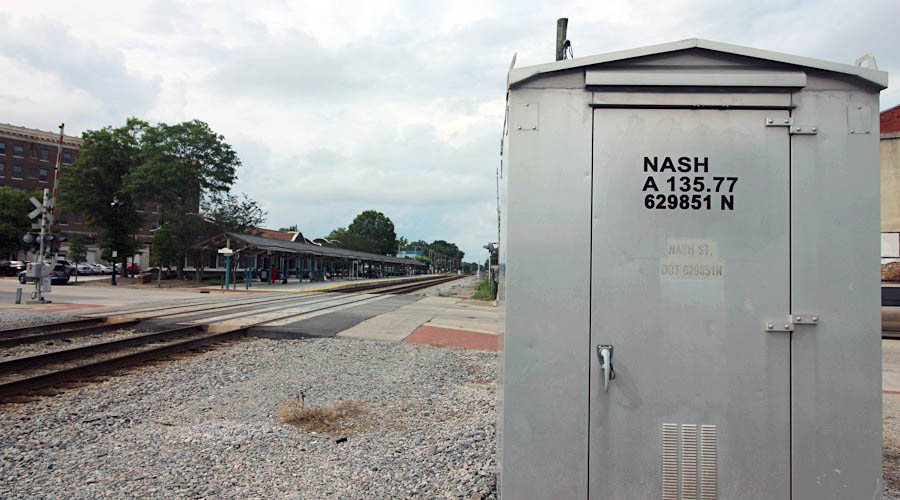
Wilson, NC / Jun 2023 / RWH
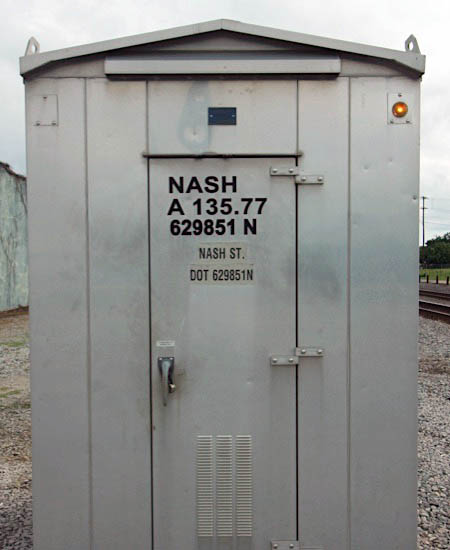
Jun 2023 / RWH
 CSX Mainline Action
CSX Mainline Action
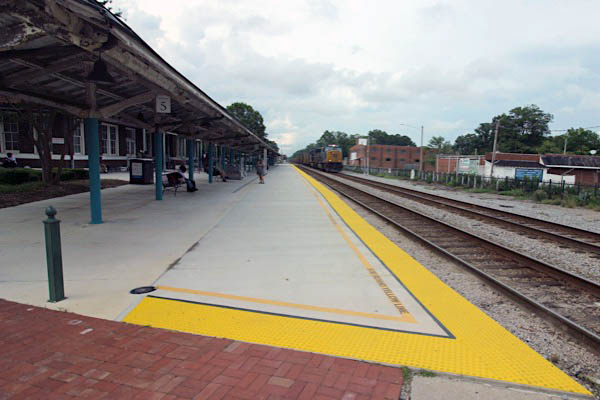
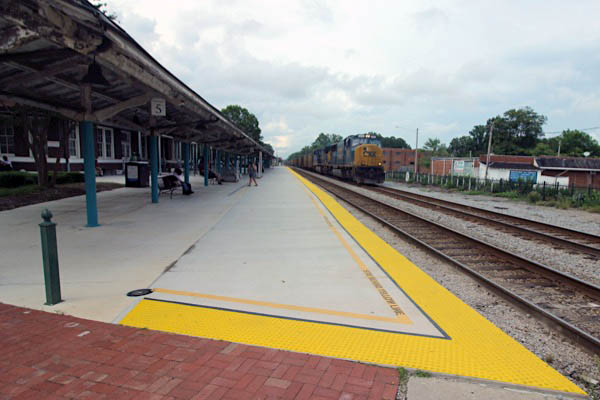
Wilson, NC / Jun 2023 / RWH

Wilson, NC / Jun 2023 / RWH

Wilson, NC / Jun 2023 / RWH

See also our complete CSX Transportation scrapbook in Mainlines
 Selma-Smithfield
Selma-Smithfield
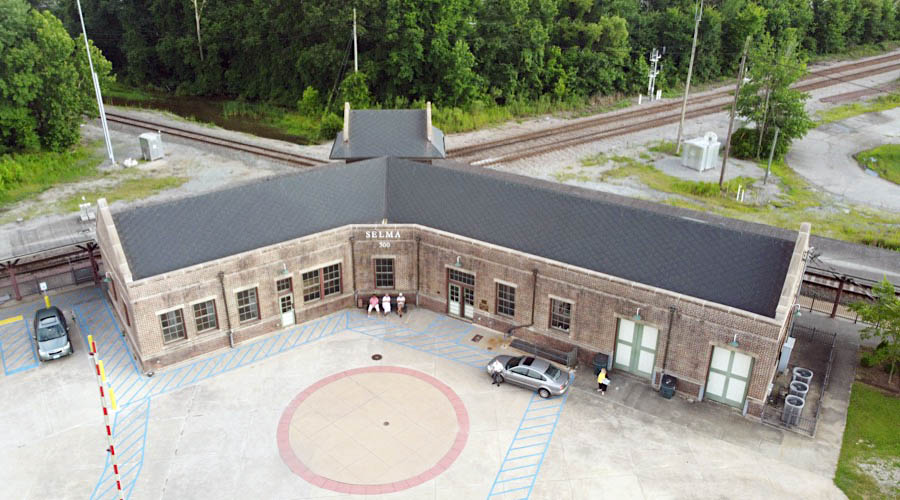
Selma, NC / Jun 2023 / RWH

Click to see the Selma-Smithfield joint station plotted on a Google Maps page


 elma Union Depot was constructed in 1924 to serve the Atlantic Coast Line (ACL) Railroad and the Southern Railway (SR). Designed by architect A.M. Griffin, the masonry structure has a “V” shape due to its location at the crossing of the north-south ACL and east-west SR. The layout included a platform to serve each railroad, with a two-story tower for railroad signal operators located at the center where the two wings of the building meet.
elma Union Depot was constructed in 1924 to serve the Atlantic Coast Line (ACL) Railroad and the Southern Railway (SR). Designed by architect A.M. Griffin, the masonry structure has a “V” shape due to its location at the crossing of the north-south ACL and east-west SR. The layout included a platform to serve each railroad, with a two-story tower for railroad signal operators located at the center where the two wings of the building meet.
To the people of Selma, the depot has long been more than just a transportation hub: Selma was born as a railroad town, and the depot is a significant piece of its history. The community’s love for its station shone through when the North Carolina Utilities Commission approved a railroad petition to tear the building down in 1975; it was saved when the city objected to the demolition. The city then acquired the deed to the property and relieved the railroad of liability concerns.
Union Depot reopened temporarily in 1976 as a museum and as the center for Selma’s first celebration of “Railroad Days.” Currently, the “Railroad Days” celebration is observed on the first weekend in October, commemorating the city’s railroad heritage. Numerous railroad displays and activities take place in the historic downtown and at the station. In 1982, the building was added to the National Register of Historic Places.
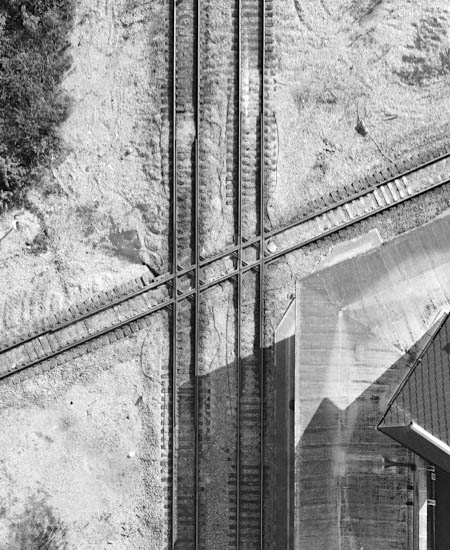 That same year, it reopened as an active train station when Amtrak added a scheduled stop for the Palmetto. Around this time, the ACL built a new curved connecting track on the north side of the station to allow trains to move between the north-south and east-west tracks. Subsequently, the station is now surrounded by tracks. More Amtrak service at Selma was established in 1984, when the state-supported Carolinian was initiated on a Charlotte-Selma-New York City route, before being suspended in 1985. The current iteration of the Carolinian began operating in 1990 and has called at Selma since then. Due to the configuration of the station at the crossing of the two rail lines, Palmetto customers use a platform on the southeast side of the depot, while Carolinian passengers use a platform to the north.
That same year, it reopened as an active train station when Amtrak added a scheduled stop for the Palmetto. Around this time, the ACL built a new curved connecting track on the north side of the station to allow trains to move between the north-south and east-west tracks. Subsequently, the station is now surrounded by tracks. More Amtrak service at Selma was established in 1984, when the state-supported Carolinian was initiated on a Charlotte-Selma-New York City route, before being suspended in 1985. The current iteration of the Carolinian began operating in 1990 and has called at Selma since then. Due to the configuration of the station at the crossing of the two rail lines, Palmetto customers use a platform on the southeast side of the depot, while Carolinian passengers use a platform to the north.
Officially, Selma was chartered in 1873, yet to those who live there, the city was truly born on May 1, 1867, when the first lots were sold around the Mitchner station on the North Carolina Railroad. Mitchner station was built in 1855 and is now believed to be the oldest surviving train station in North Carolina. During the Civil War, Confederate troops occupied the Mitchner station to make a stand. By the evening, Union troops had managed to surround the Confederate soldiers, causing them to abandon the depot.
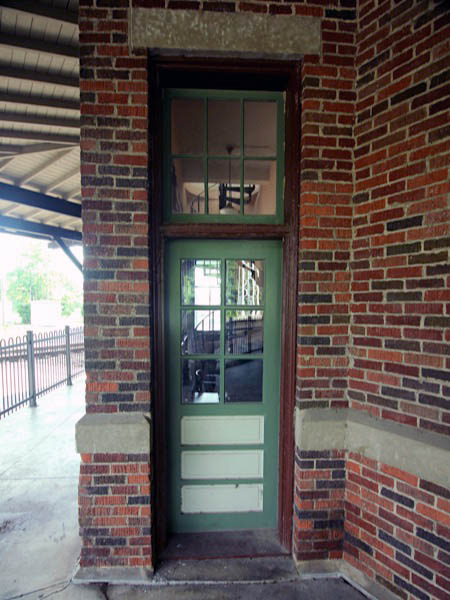
Jun 2023 / RWH
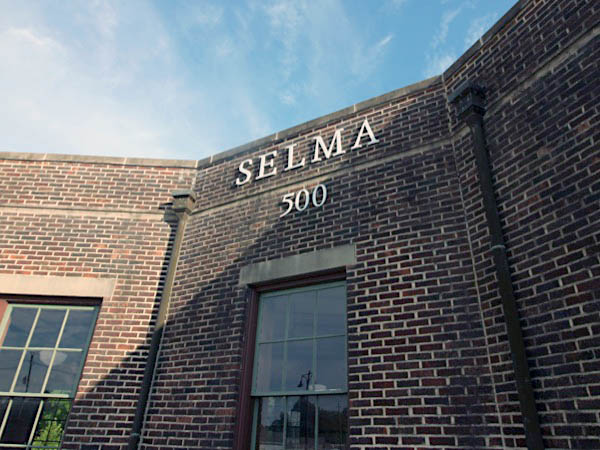
Jun 2023 / RWH
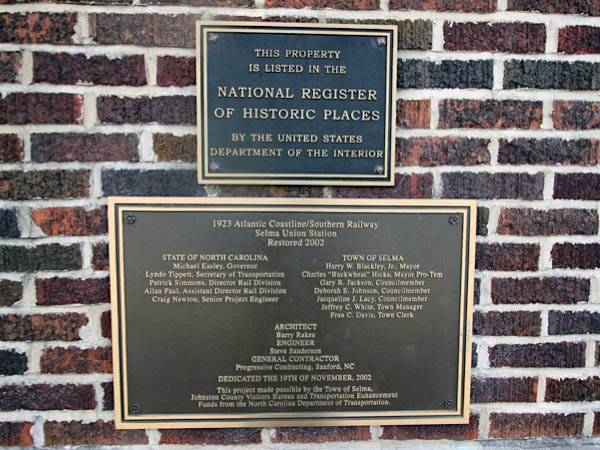
Jun 2023 / RWH
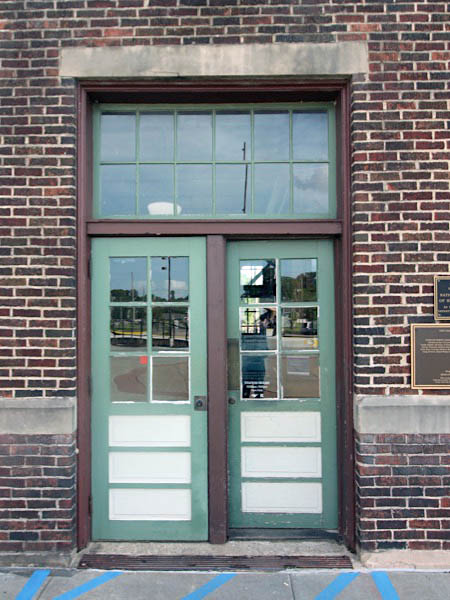
Jun 2023 / RWH
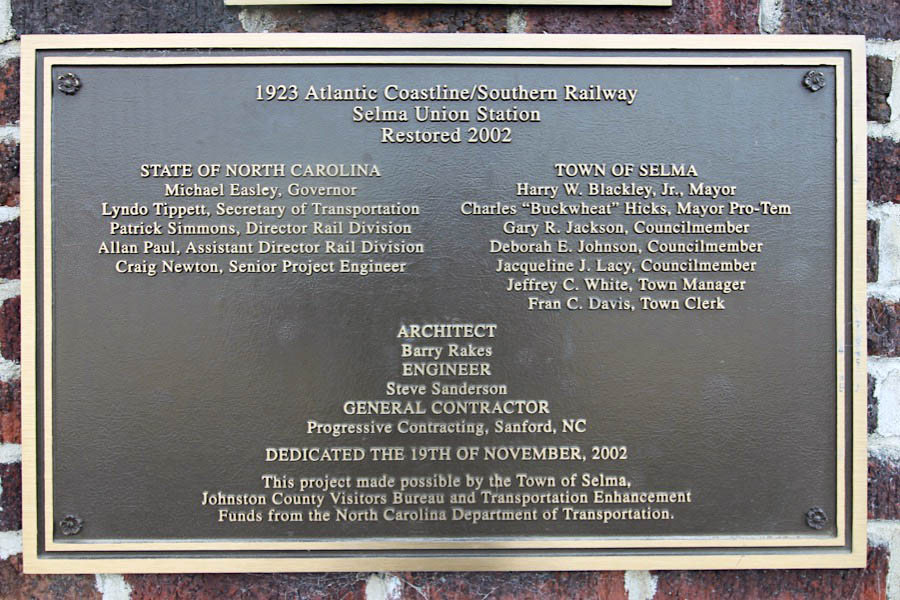
Jun 2023 / RWH
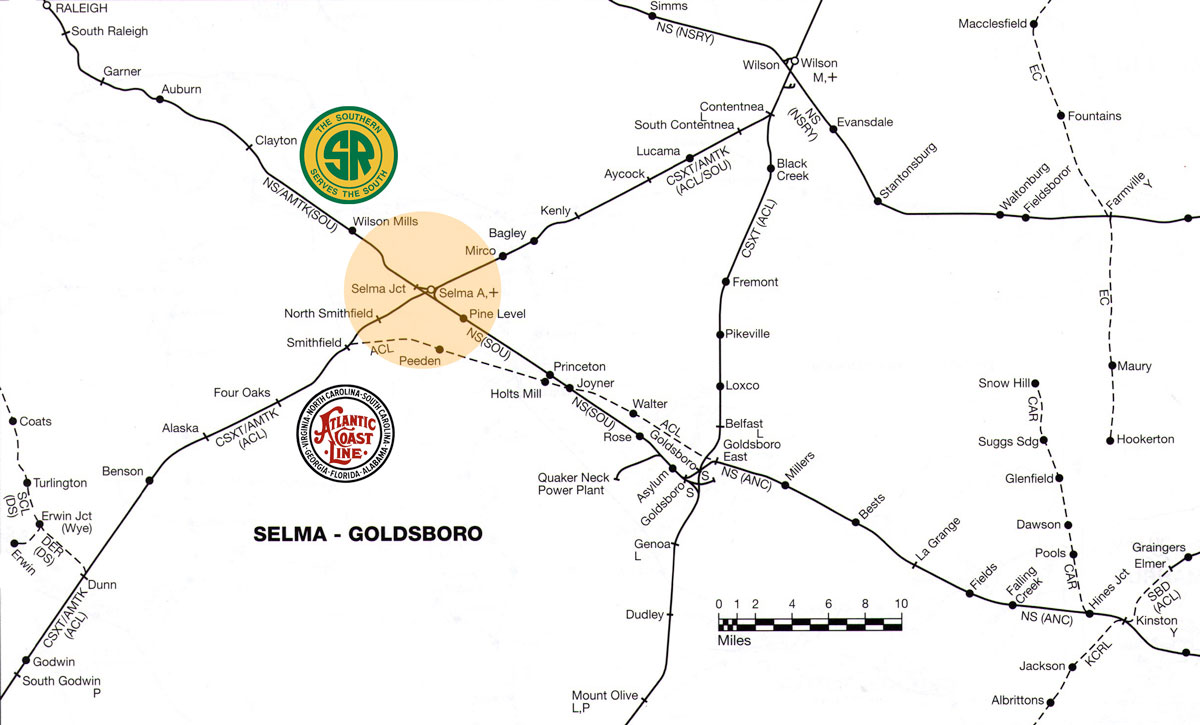
adapted from SPV Comprehensive Railroad Atlas / collection
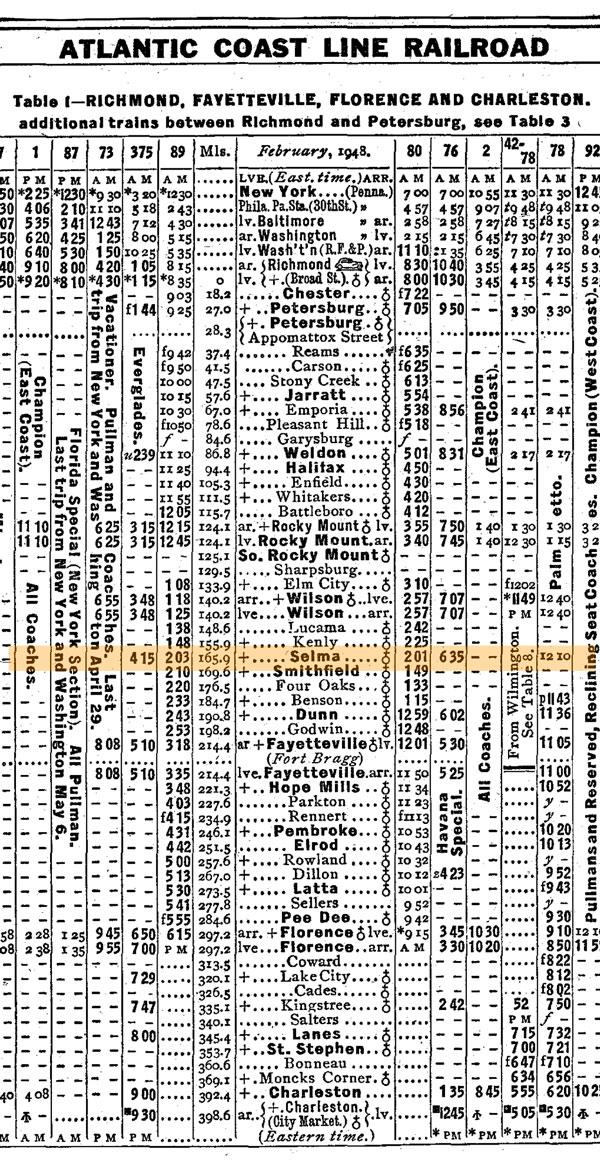
1948 Official Guide ad / collection
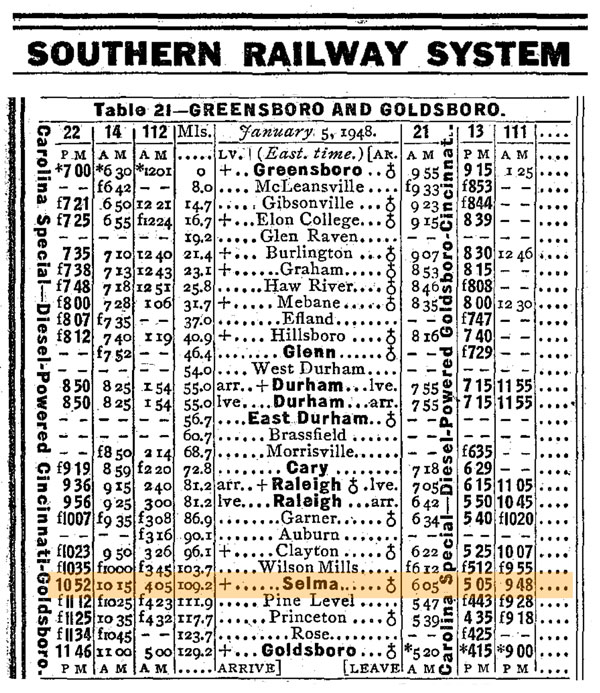
1948 Official Guide ad / collection

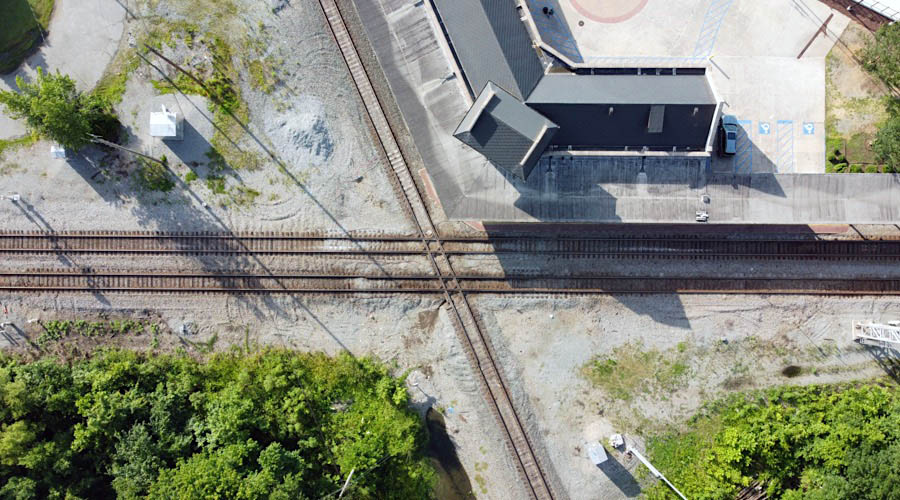
Selma, NC / Jun 2023 / RWH
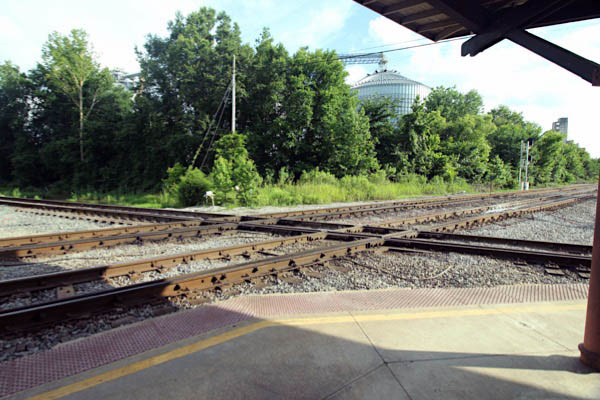
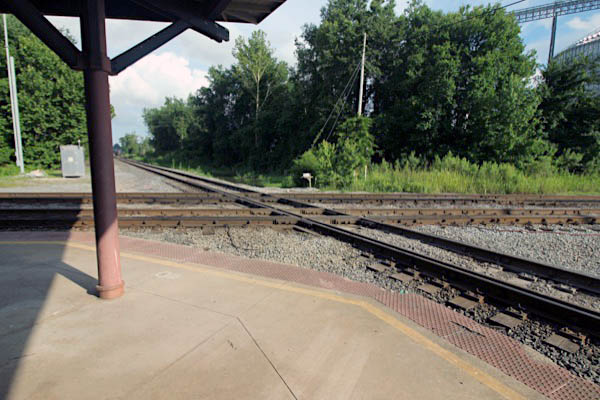
Selma, NC / Jun 2023 / RWH
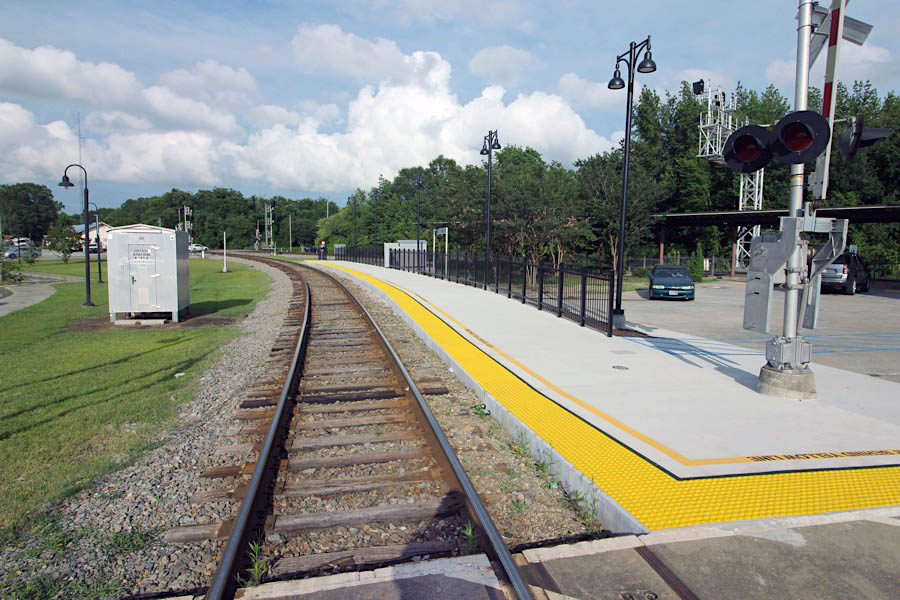
Selma, NC / Jun 2023 / RWH

Jun 2023 / RWH
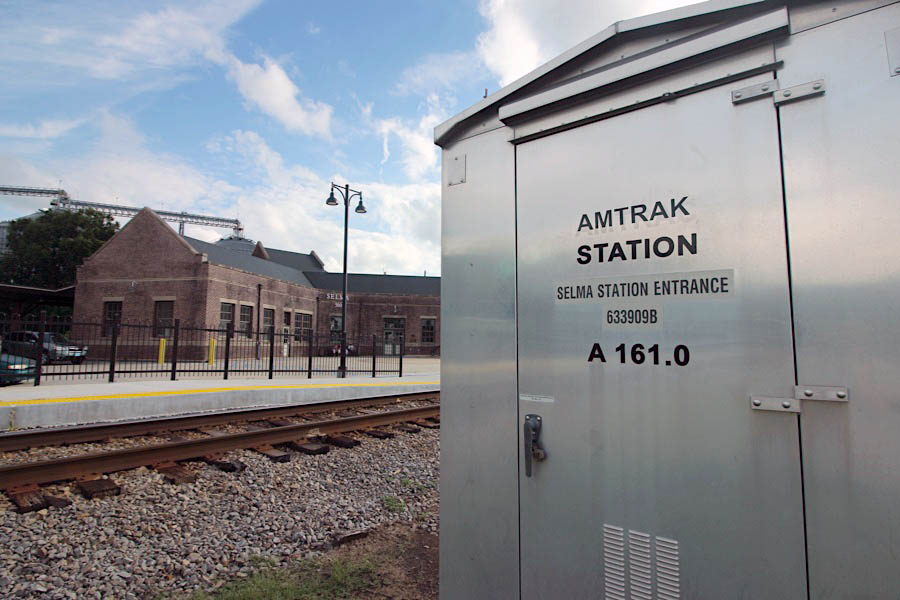
Selma, NC / Jun 2023 / RWH
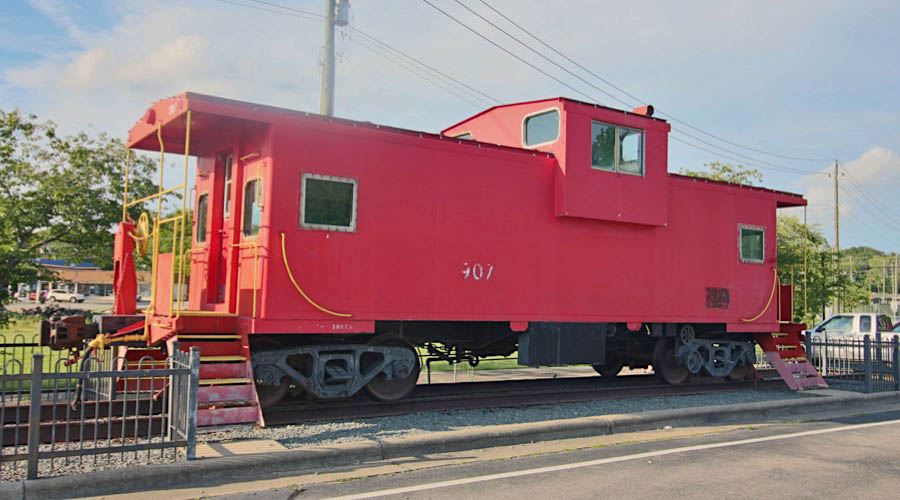
Richmond Fredericksburg & Potomac #907
Selma, NC / Jun 2023 / RWH

Born as a Railroad Town
 Selma was officially chartered as a Town on February 11, 1873, but the Town’s true birth took place on May 1, 1867, when there was a public sale of lots around a newly established station on the North Carolina Railroad. Selma was born as a “Railroad Town,” and our rail heritage is still evident today, with our recently renovated 1924 Union Depot (Selma Union Depot) supporting Amtrak service.
Selma was officially chartered as a Town on February 11, 1873, but the Town’s true birth took place on May 1, 1867, when there was a public sale of lots around a newly established station on the North Carolina Railroad. Selma was born as a “Railroad Town,” and our rail heritage is still evident today, with our recently renovated 1924 Union Depot (Selma Union Depot) supporting Amtrak service.
The Town is also home to the Mitchener Station, which was built in 1855 and it is thought to be the oldest surviving train station in North Carolina. When Interstate 95 was built in the late 1950s, the Town experienced growth due to its proximity to the Interstate. Today, there are many hotels and restaurants located in the area for visitors traveling on Interstate
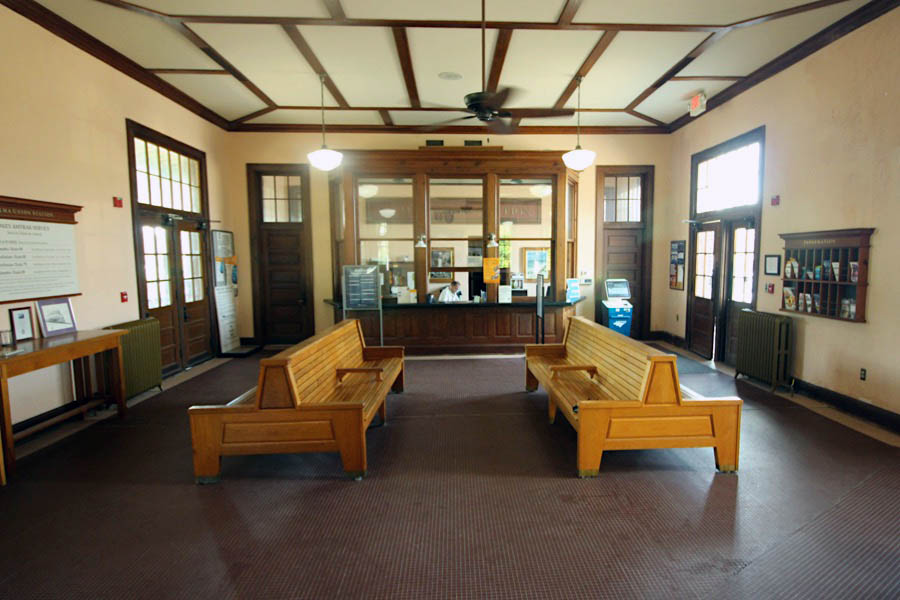
Jun 2023 / RWH
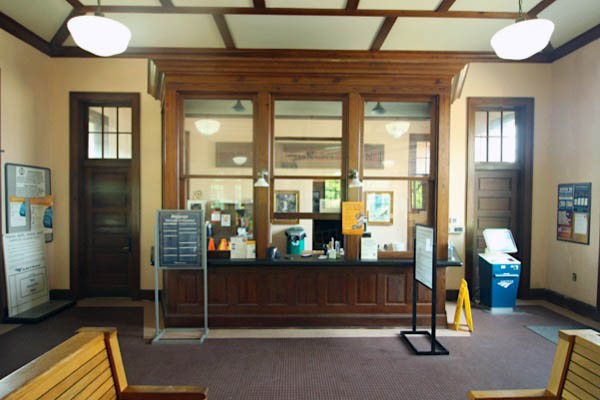
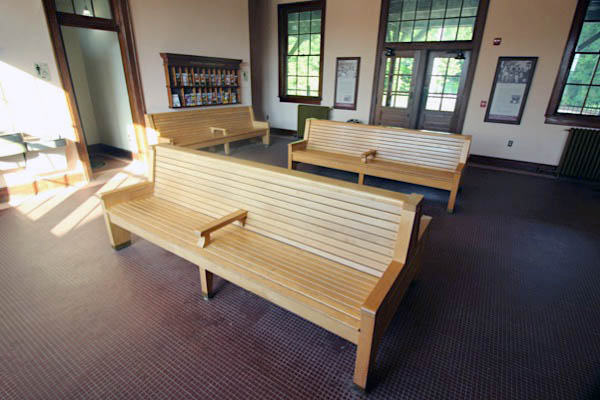

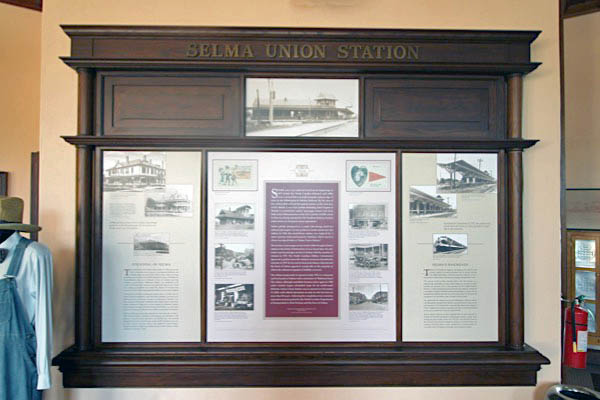
Jun 2023 / RWH
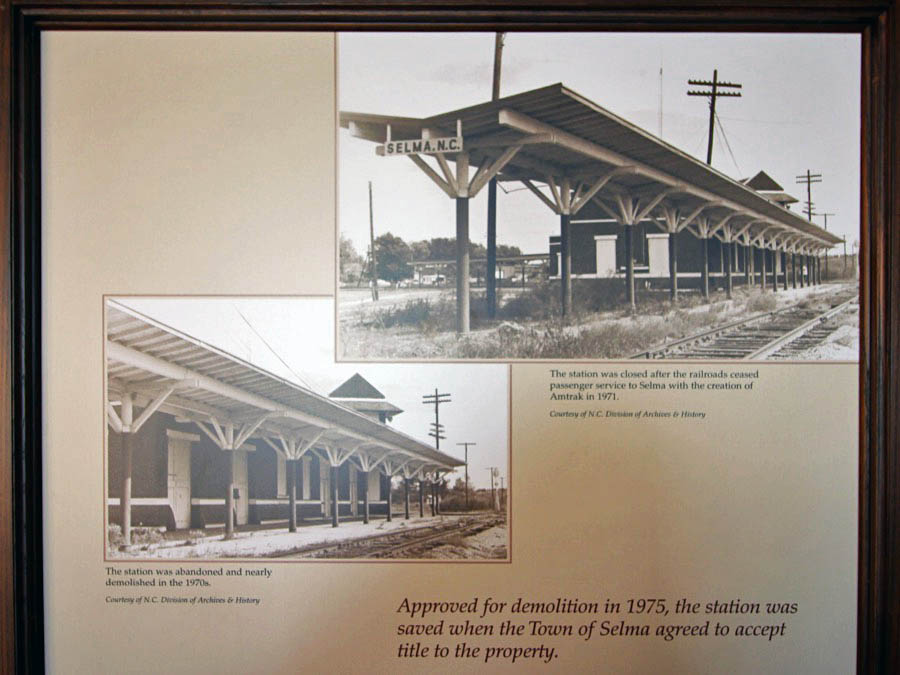
Jun 2023 / RWH

Jun 2023 / RWH
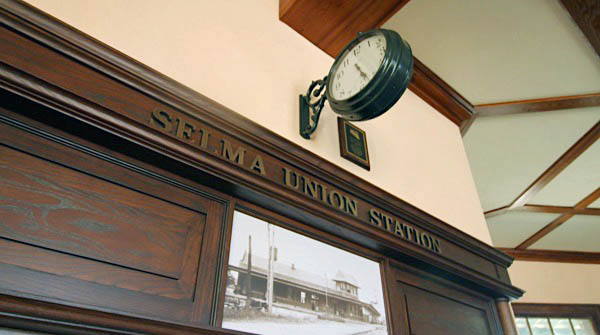
Jun 2023 / RWH
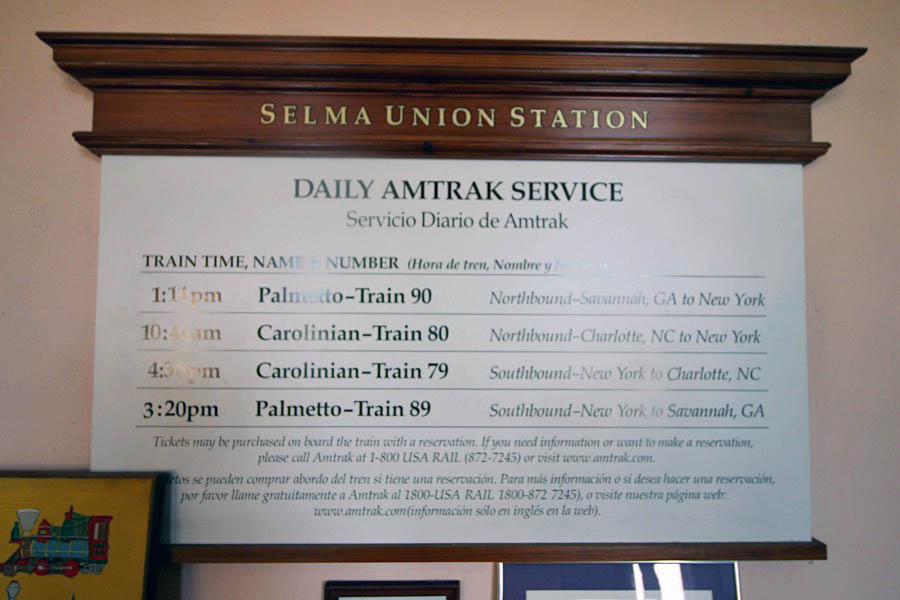
Jun 2023 / RWH

See also our Amtrak Carolinian route scrapbook for more Selma NC images
 South Carolina
South Carolina
 Dillon, SC
Dillon, SC

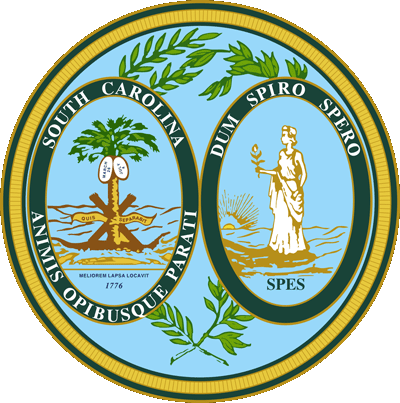
 he brick station in Dillon was constructed in 1905 by the Atlantic Coast Line Railroad. The station is most recognizable for the town clock that sits at the entrance of the building. The clock, inscribed with the town name, was installed in 2004 as part of the renovations that included installation of a new brick platform. The new park-like entrance with benches and a garden were constructed as a memorial to the former and future mayors of Dillon.
he brick station in Dillon was constructed in 1905 by the Atlantic Coast Line Railroad. The station is most recognizable for the town clock that sits at the entrance of the building. The clock, inscribed with the town name, was installed in 2004 as part of the renovations that included installation of a new brick platform. The new park-like entrance with benches and a garden were constructed as a memorial to the former and future mayors of Dillon.
The city of Dillon started out with a mere 87 people, isolated by swamps and rivers that kept this area cut off for years. However, Dillon gained prosperity when its founding father, James W. Dillon, headed a local movement to allow train tracks to run through the town. The original spot for the rail line was a smaller, neighboring town called Little Rock, but its residents thought the line would do more harm than good. So with a stroke of luck, the Wilson Short Cut Railroad (later part of the Atlantic Coast Line Railroad) was built through Dillon and it turned out to be frequently used, bringing much economic development to this small town.
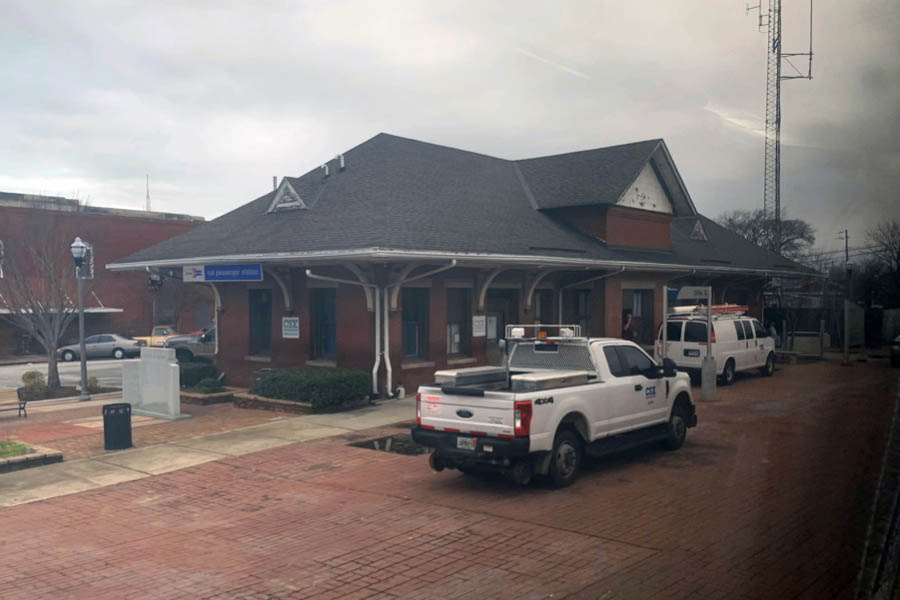
Dillon, SC / Dec 2019 / RWH
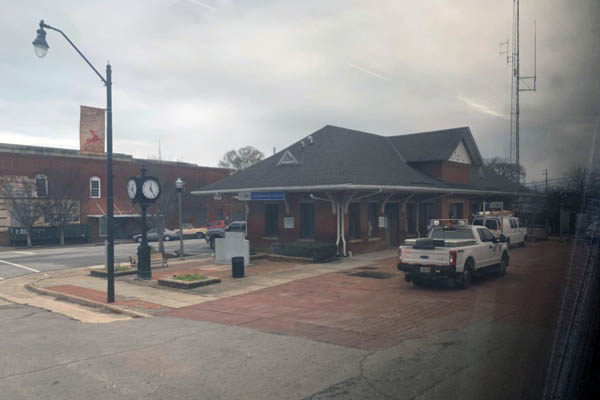
Dillon, SC / Dec 2019 / RWH
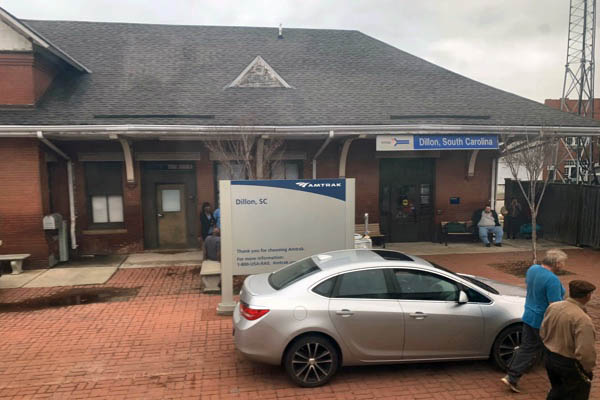
Dillon, SC / Dec 2019 / RWH

Click to see the Dillon depot plotted on a Google Maps page
 Florence, SC
Florence, SC

Florence, SC / Jan 2024 / RWH

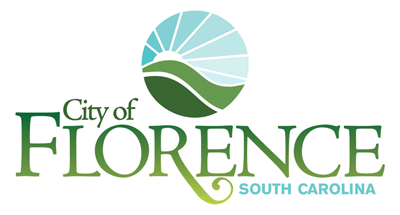
 he original township of Florence was developed as a railroad terminal at the juncture of three rail lines: the Wilmington & Manchester, the North Eastern and the Cheraw & Darlington. The name for the proposed crossing site was Florence, in honor of Florence Harllee, daughter of the president of the Wilmington & Manchester Railroad W.W. Harllee. When the Wilmington & Manchester line purchased five acres of property in 1853 for the purpose of building a depot, Florence had its small, but official, start.
he original township of Florence was developed as a railroad terminal at the juncture of three rail lines: the Wilmington & Manchester, the North Eastern and the Cheraw & Darlington. The name for the proposed crossing site was Florence, in honor of Florence Harllee, daughter of the president of the Wilmington & Manchester Railroad W.W. Harllee. When the Wilmington & Manchester line purchased five acres of property in 1853 for the purpose of building a depot, Florence had its small, but official, start.
During the Civil War, Florence’s rails were busy. Troops, artillery and supplies regularly passed through Florence on their way to Richmond, Charleston and Savannah. Wounded Confederate troops traveled by rail to Florence’s Wayside Hospital and captured Union troops were conveyed to town to be garrisoned in the Florence Stockade. Although the war had exacted a heavy toll on the area’s trains, depots and track, all three rail lines were back up and running shortly after the war’s end. By the 1870’s the village had a population of about 700 but, due to ever-expanding railroad activity, an emerging middle class more than doubled the town’s population by the end of the decade. In 1888 the new county of Florence was created. Two years later the City of Florence was chartered and serves as the county seat.
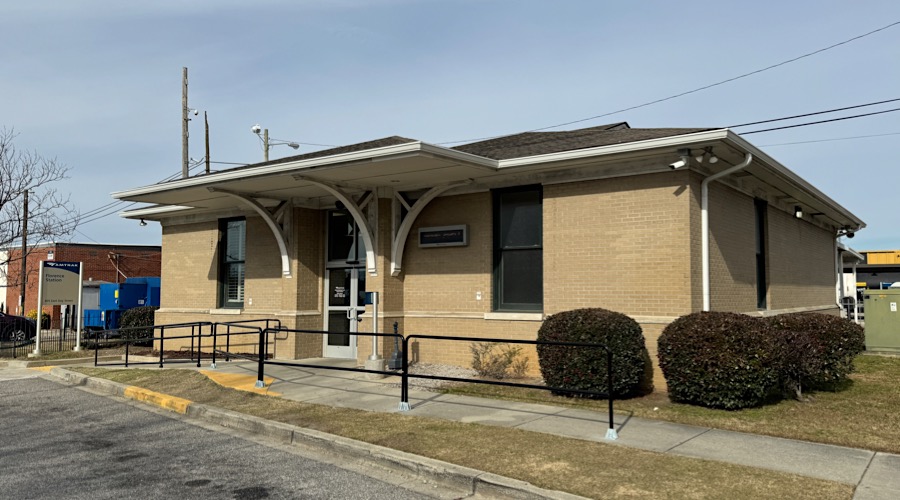
Florence, SC / Jan 2024 / RWH

Click to see the Florence stations plotted on a Google Maps page

Jan 2024 / RWH
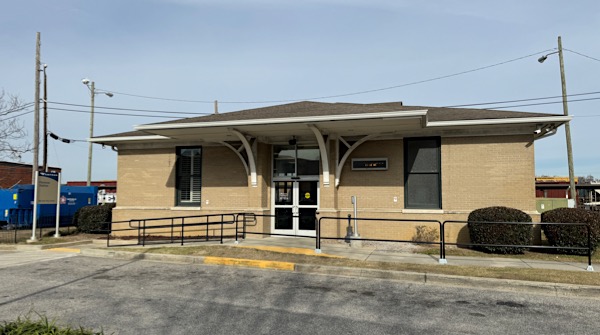
Florence, SC / Jan 2024 / RWH
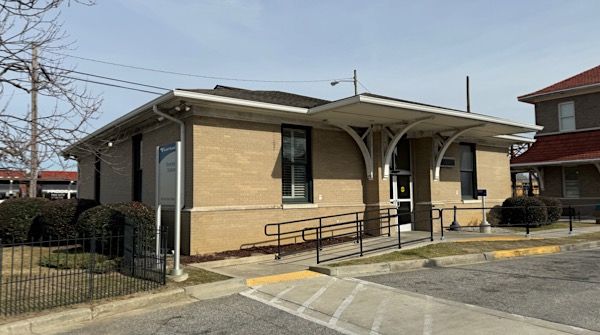
Florence, SC / Jan 2024 / RWH
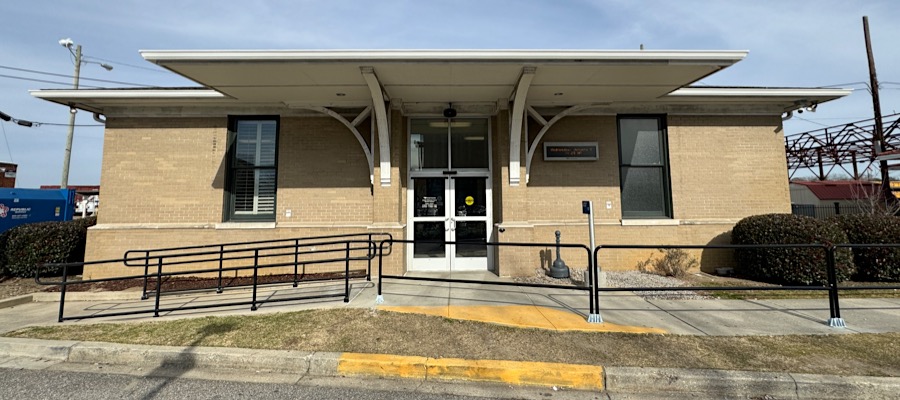
Florence, SC / Jan 2024 / RWH
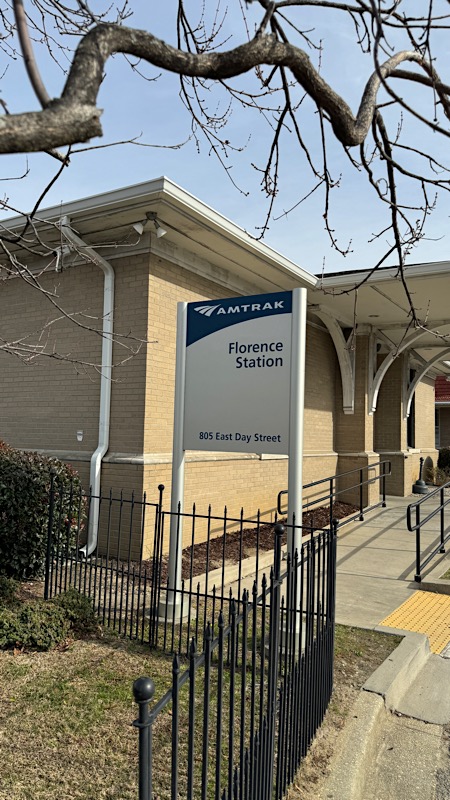
Jan 2024 / RWH
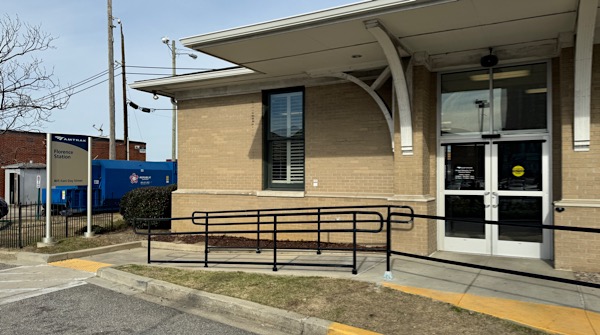
Jan 2024 / RWH
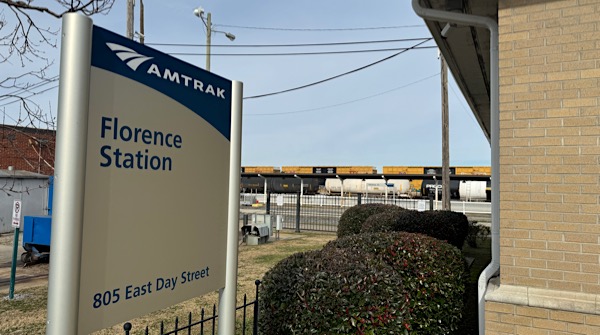
Jan 2024 / RWH
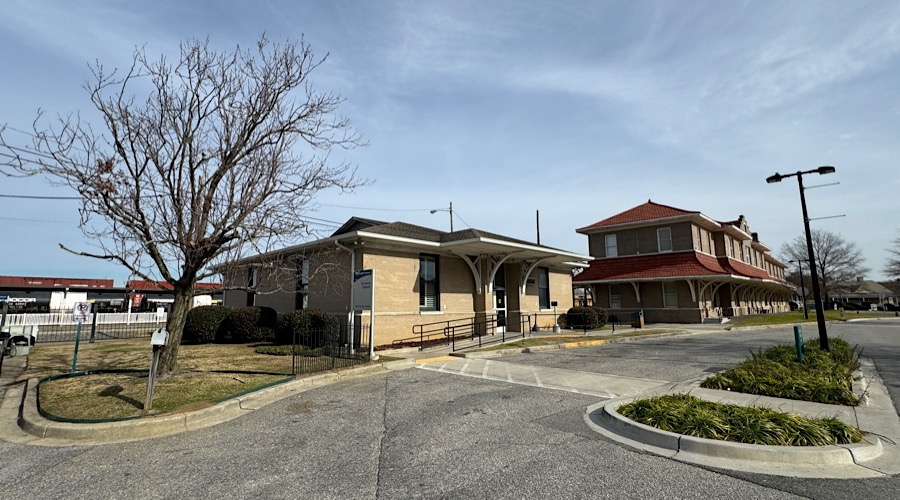
Florence, SC / Jan 2024 / RWH

Florence station overhead / Google Maps
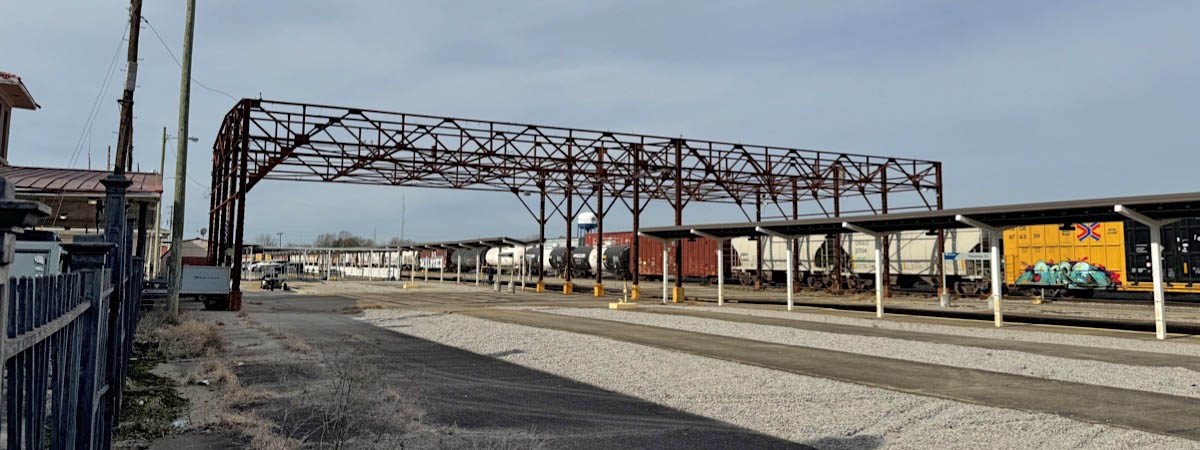
Florence, SC / Jan 2024 / RWH
 Coast Line Station
Coast Line Station
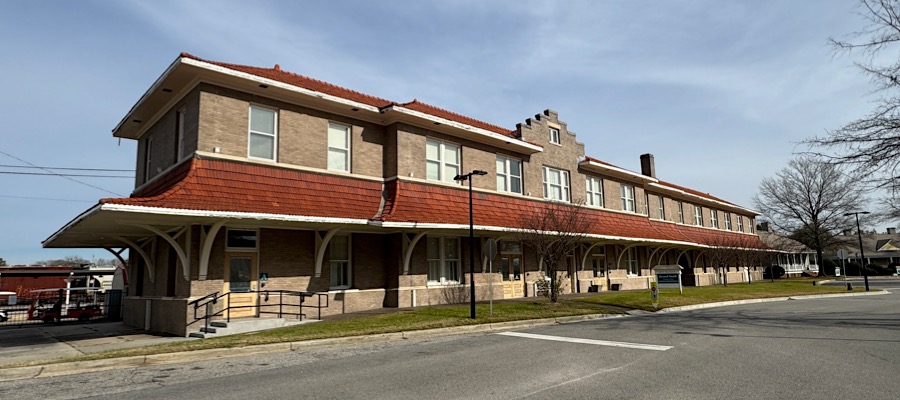
Florence, SC / Jan 2024 / RWH
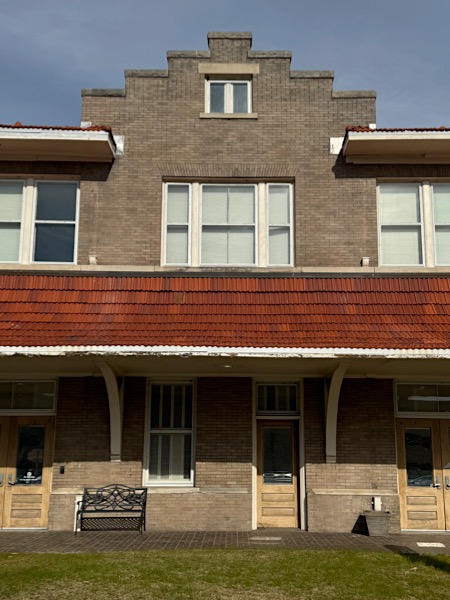
Jan 2024 / RWH
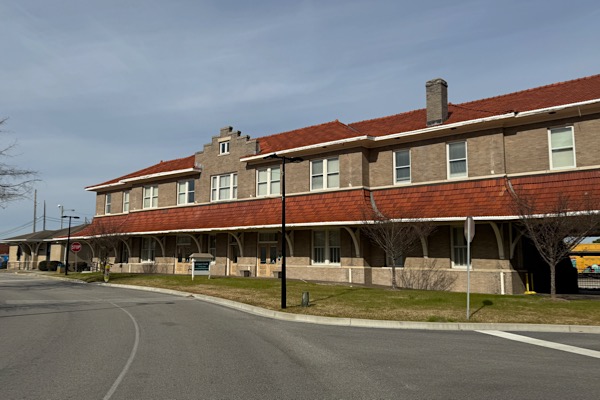
Florence, SC / Jan 2024 / RWH

Florence, SC / Jan 2024 / RWH

1910 Official Guide ad / collection
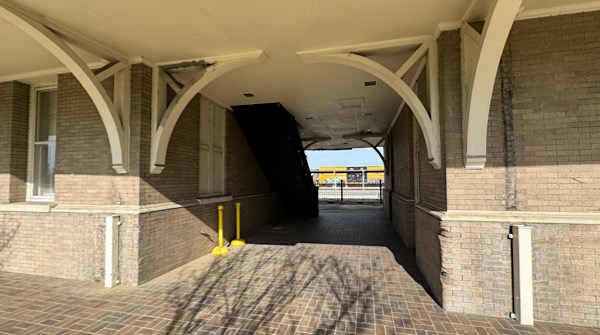
Jan 2024 / RWH
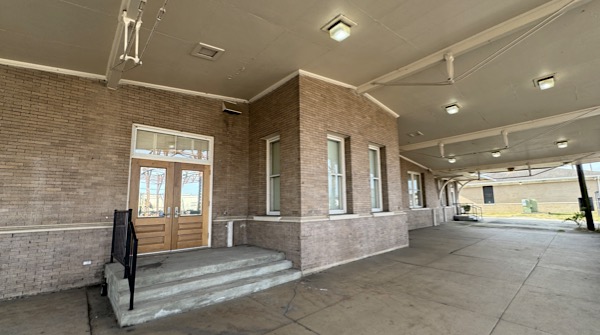
Jan 2024 / RWH
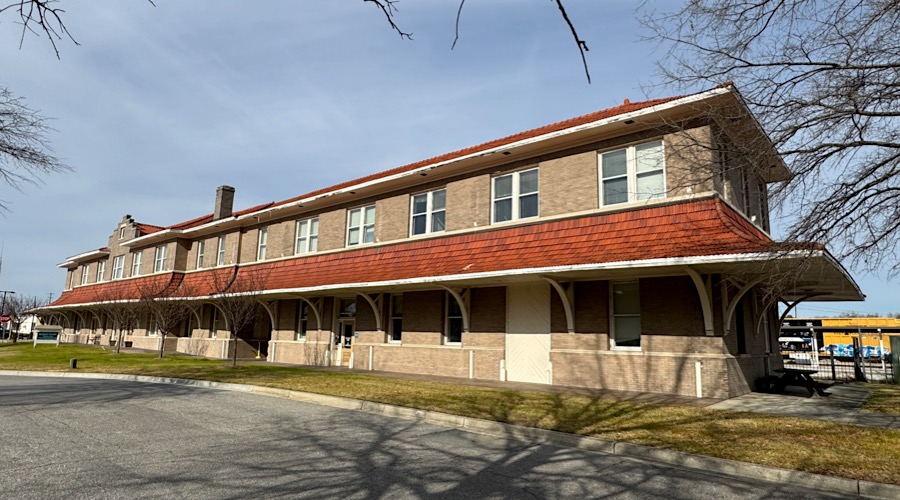
Florence, SC / Jan 2024 / RWH

 he Amtrak station in Florence was constructed in 1996 by CSX as a replacement for the historic depot that sits right beside it. The old building, constructed in 1910 by the Atlantic Coast Line Railroad, was once served by six tracks with eight raised concrete platforms. Today, only one passenger track remains in place. Both depots, old and new, are owned by the McLeod Regional Medical Center, though the former is used as office space by the hospital. The current buff brick station is smaller and less grandiose than its historic counterpart, but it has delicate white brackets and well-kept landscaping.
he Amtrak station in Florence was constructed in 1996 by CSX as a replacement for the historic depot that sits right beside it. The old building, constructed in 1910 by the Atlantic Coast Line Railroad, was once served by six tracks with eight raised concrete platforms. Today, only one passenger track remains in place. Both depots, old and new, are owned by the McLeod Regional Medical Center, though the former is used as office space by the hospital. The current buff brick station is smaller and less grandiose than its historic counterpart, but it has delicate white brackets and well-kept landscaping.

Florence, SC / Dec 2019 / RWH
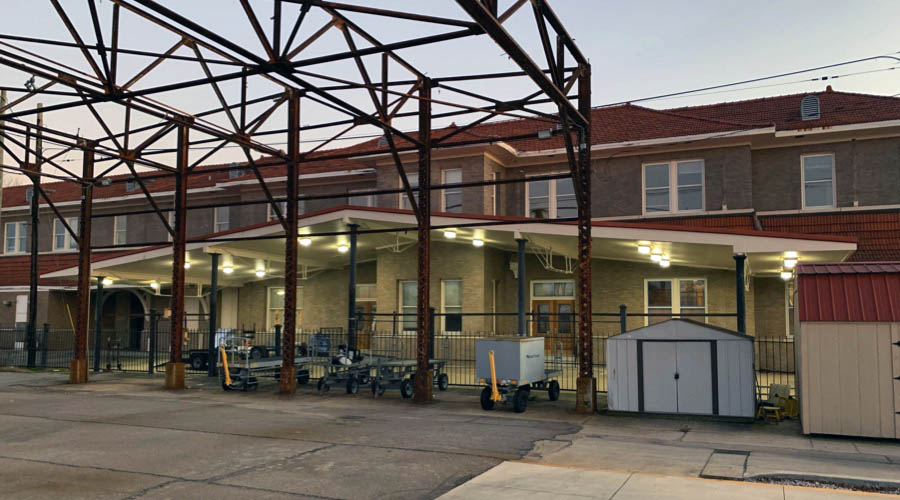
Florence, SC / Dec 2019 / RWH
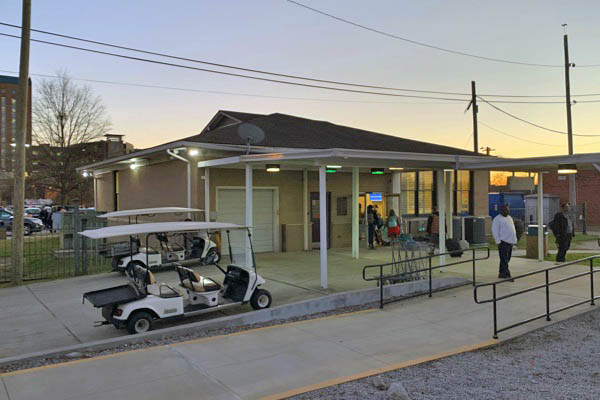
Florence, SC / Dec 2019 / RWH

Florence, SC / Dec 2019 / RWH

Florence, SC / Dec 2019 / RWH
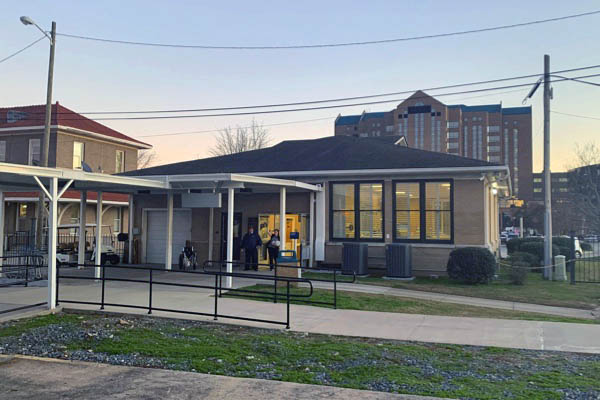
Florence, SC / Dec 2019 / RWH
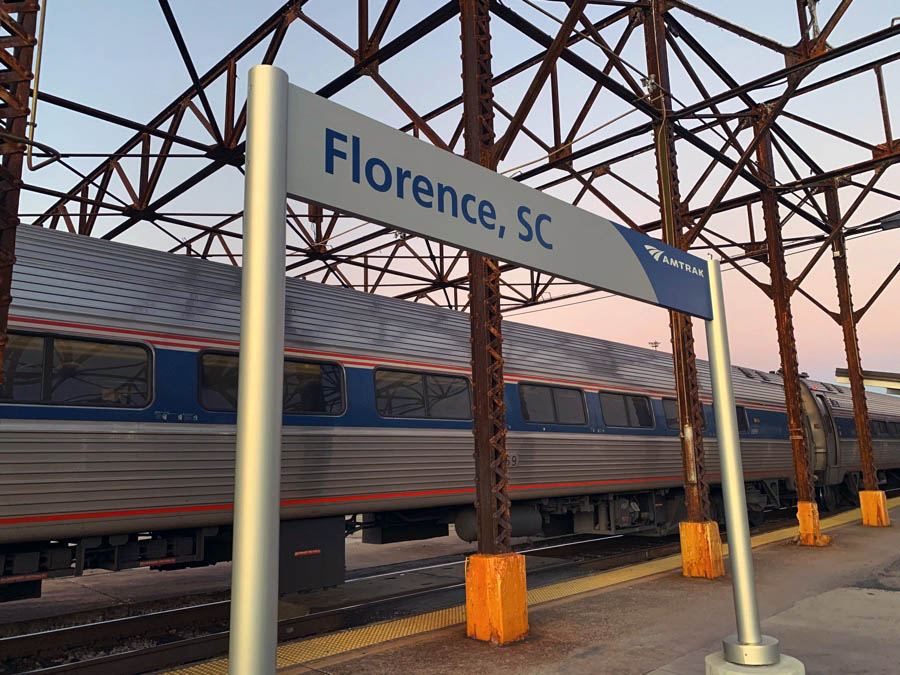
Florence, SC / Dec 2019 / RWH
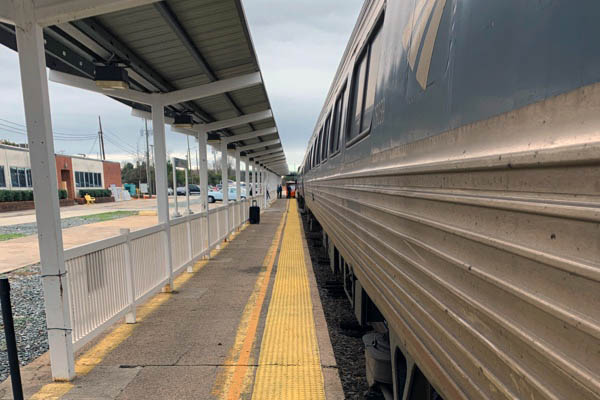
Florence, SC / Dec 2019 / RWH
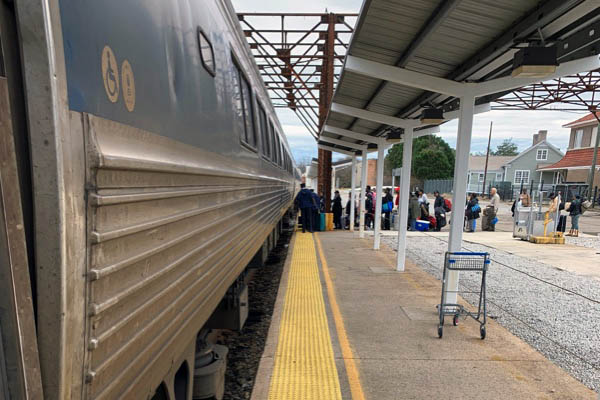
Florence, SC / Dec 2019 / RWH
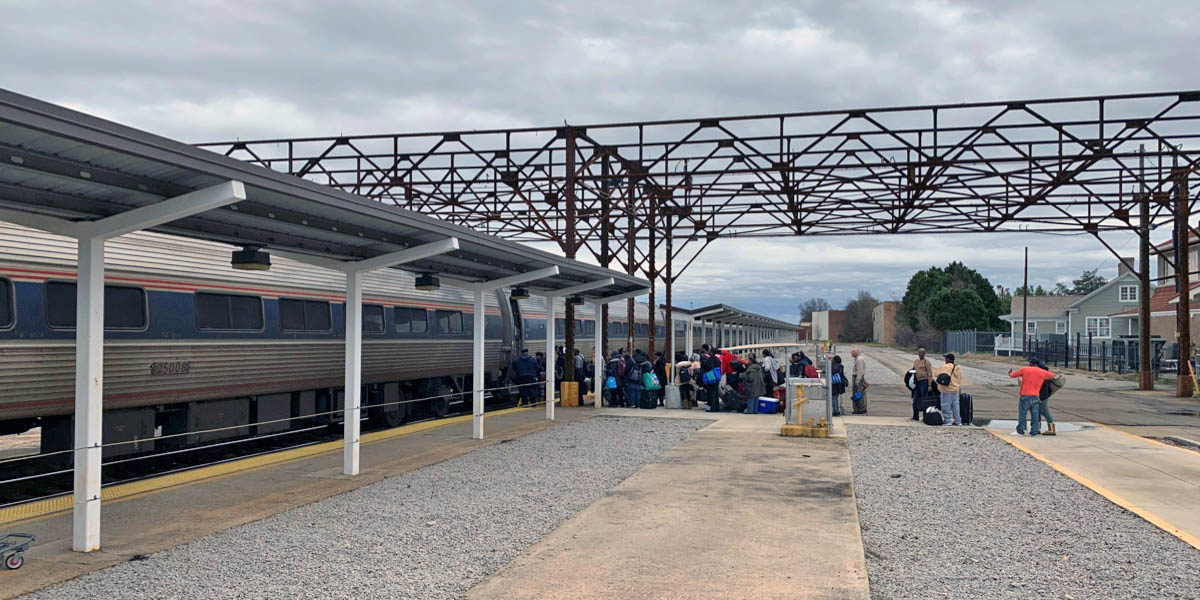
Florence, SC / Dec 2019 / RWH

Dec 2019 / RWH

Dec 2019 / RWH
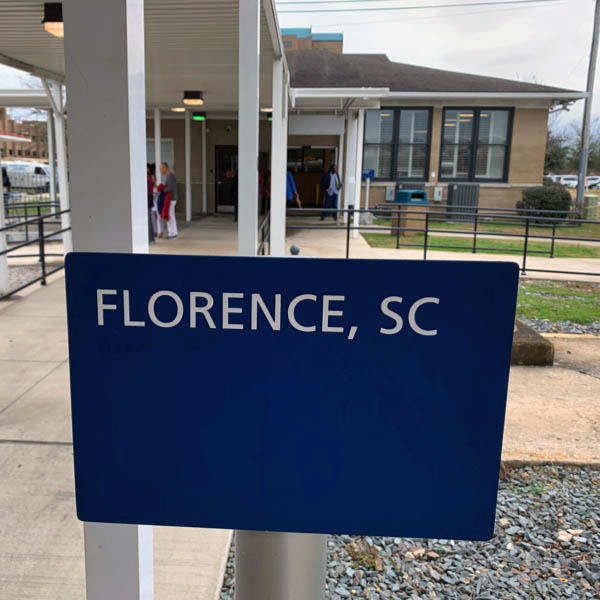
Dec 2019 / RWH
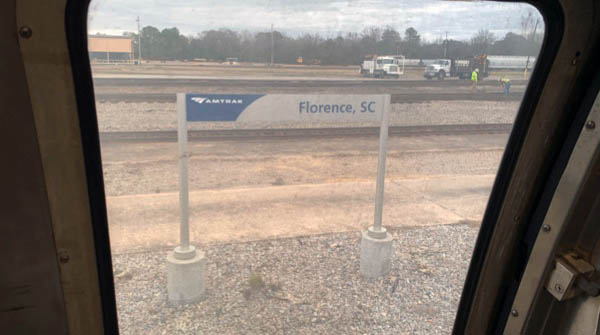
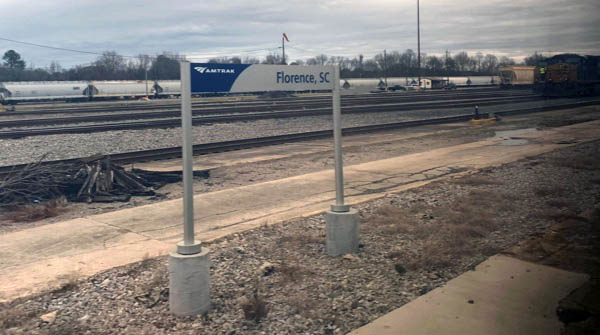
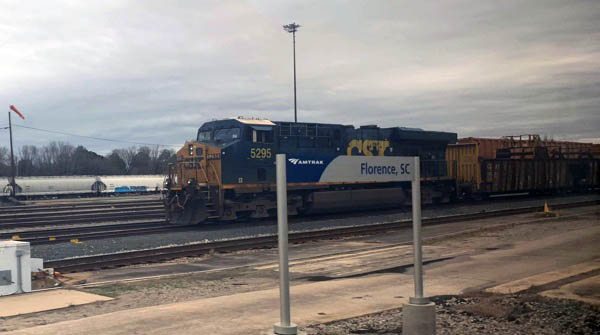

Florence, SC / Dec 2019 / RWH

Dec 2019 / RWH
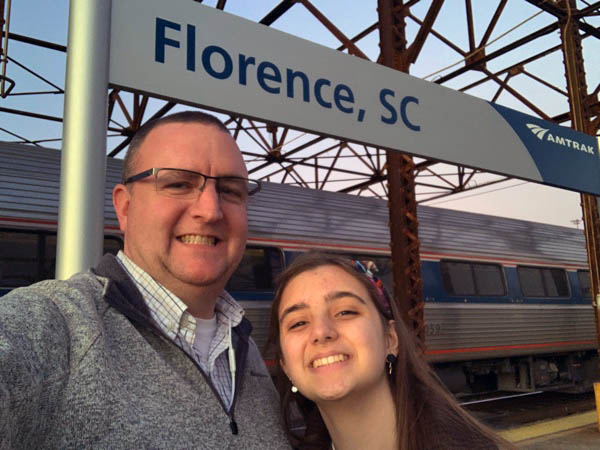
Florence, SC / Dec 2019 / RWH
 Kingstree, SC
Kingstree, SC
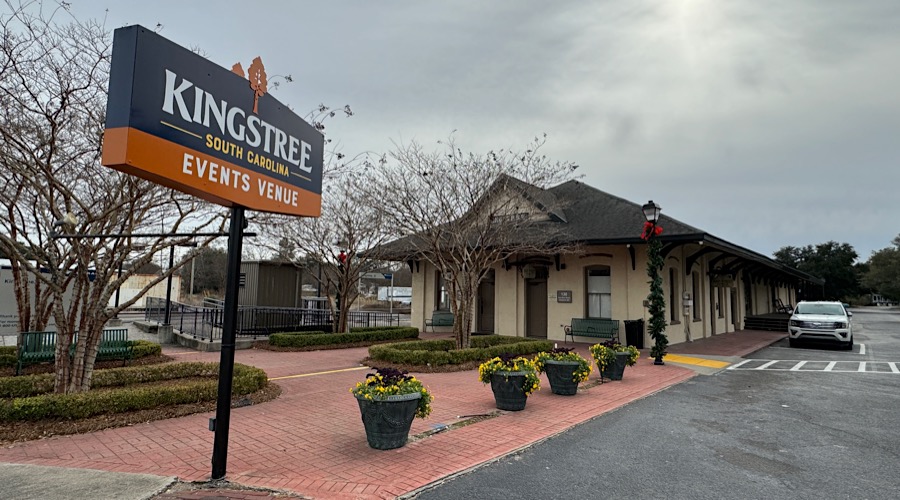
Kingstree, SC / Jan 2024 / RWH

Click to see the Kingstree depot plotted on a Google Maps page
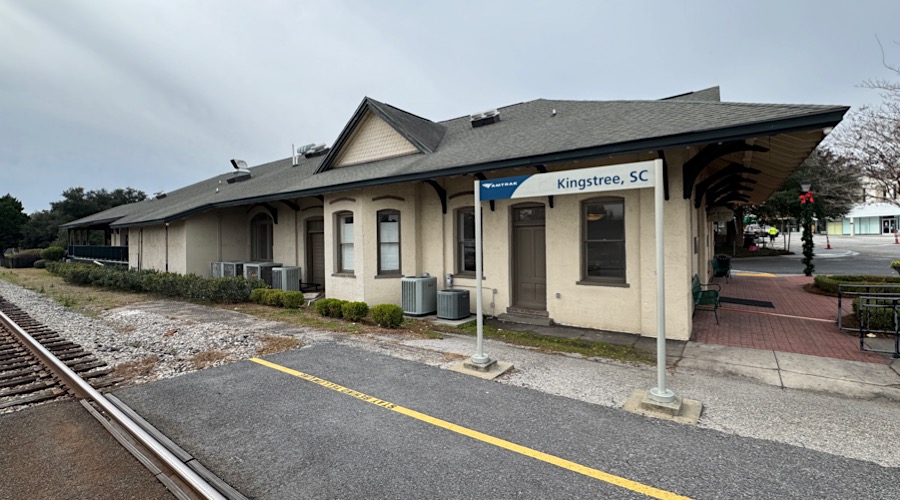
Kingstree, SC / Jan 2024 / RWH
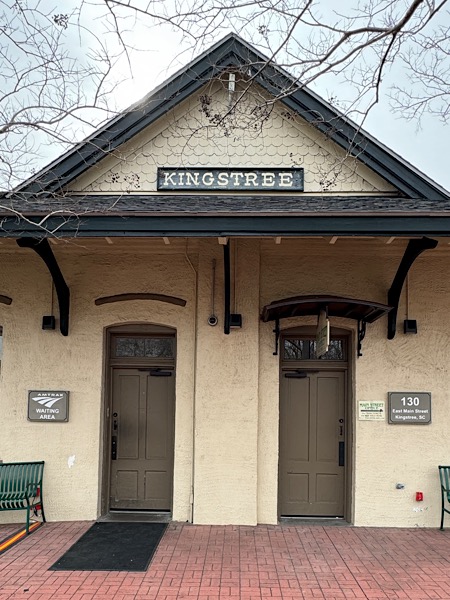
Jan 2024 / RWH

Kingstree, SC / Jan 2024 / RWH
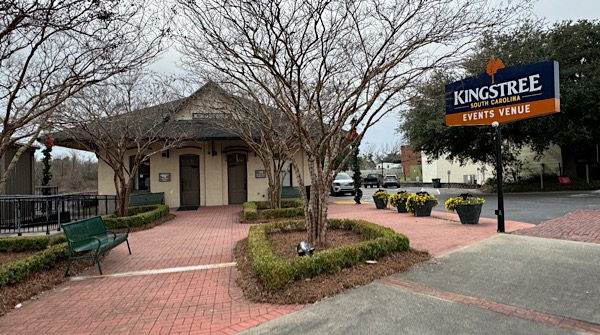
Kingstree, SC / Jan 2024 / RWH
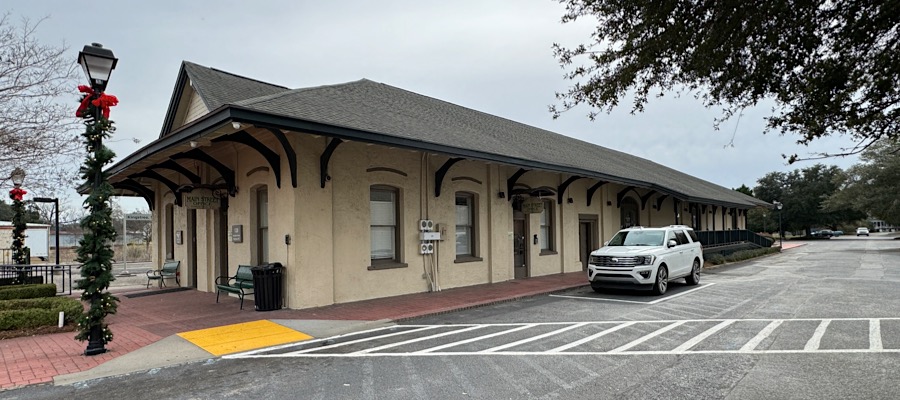
Kingstree, SC / Jan 2024 / RWH
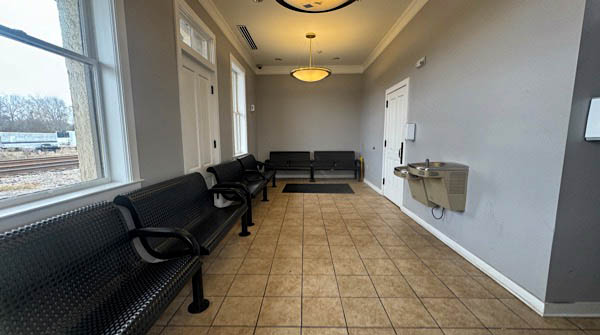
Jan 2024 / RWH
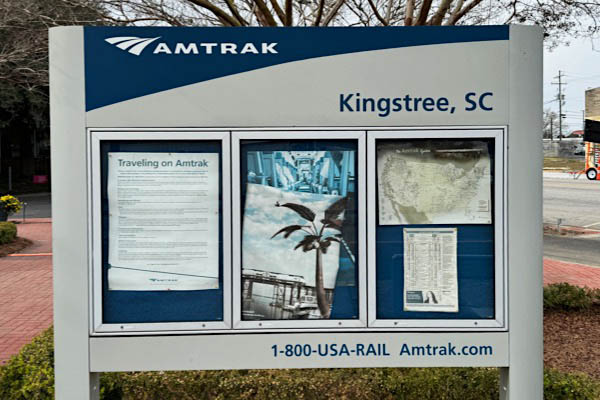
Jan 2024 / RWH

Kingstree, SC / Jan 2024 / RWH

 Williamsburg Township was established and first settled in 1735 by Scots-Irish from Pennsylvania, Virginia, and Maryland. It was located where the three present-day counties of Williamsburg, Florence, and Clarendon meet, along the confluence of the Lynches River and the Great Pee Dee River in southeastern South Carolina.
Back in 1737, the court house grounds, located on Main Street in Kingstree, was designated the parade ground in the original survey of the town of Kingstree. The grounds served as the muster ground for the local militia during colonial and Revolutionary War times.
Williamsburg Township was established and first settled in 1735 by Scots-Irish from Pennsylvania, Virginia, and Maryland. It was located where the three present-day counties of Williamsburg, Florence, and Clarendon meet, along the confluence of the Lynches River and the Great Pee Dee River in southeastern South Carolina.
Back in 1737, the court house grounds, located on Main Street in Kingstree, was designated the parade ground in the original survey of the town of Kingstree. The grounds served as the muster ground for the local militia during colonial and Revolutionary War times.
Williamsburg Township's success was largely attributable to the raising and processing of indigo. From indigo, came wealth and prosperity to the area. Hemp, flax, and holland were other fine quality products introduced in the 1730s. A settlement, existing on Black Mingo (later referred to as Willtown), had a "Meeting House" for dissenters in what later became Williamsburg County. In 1736, the first Williamsburg Presbyterian Meeting House was built. This "Meeting House" was the mother church for a wide area embracing several states.
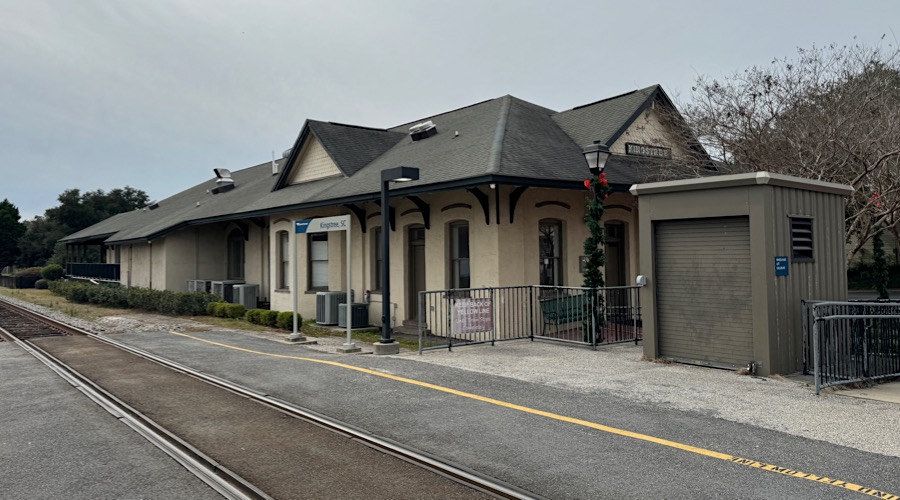
Kingstree, SC / Jan 2024 / RWH
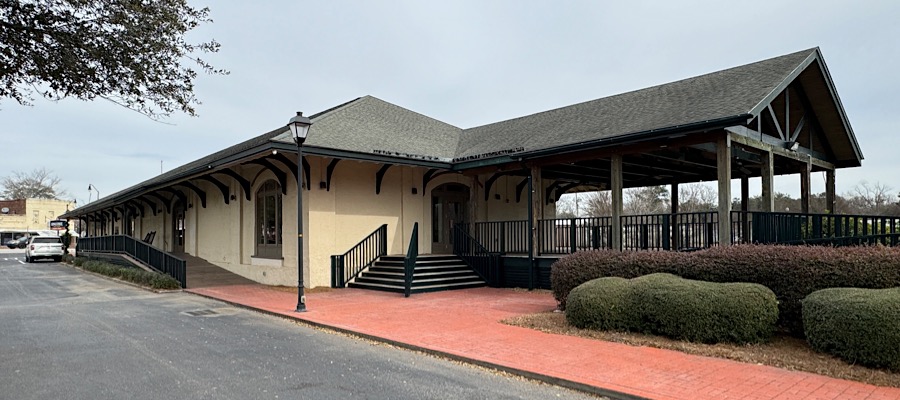
Kingstree, SC / Jan 2024 / RWH
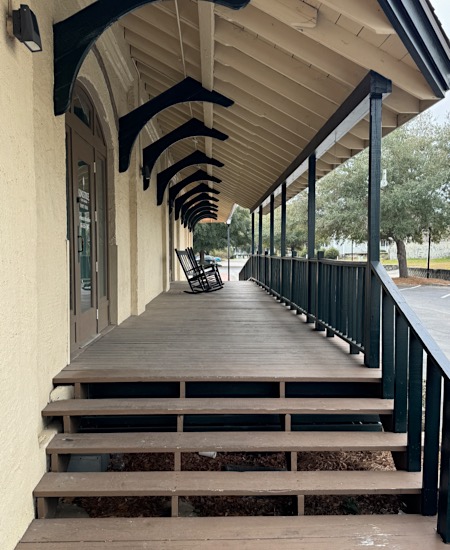
Jan 2024 / RWH
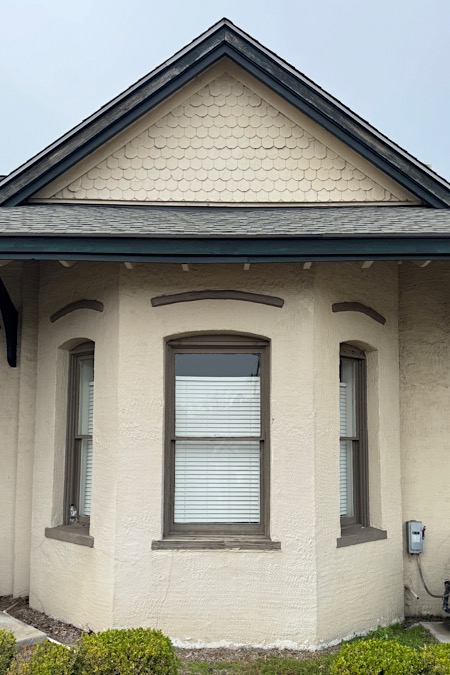
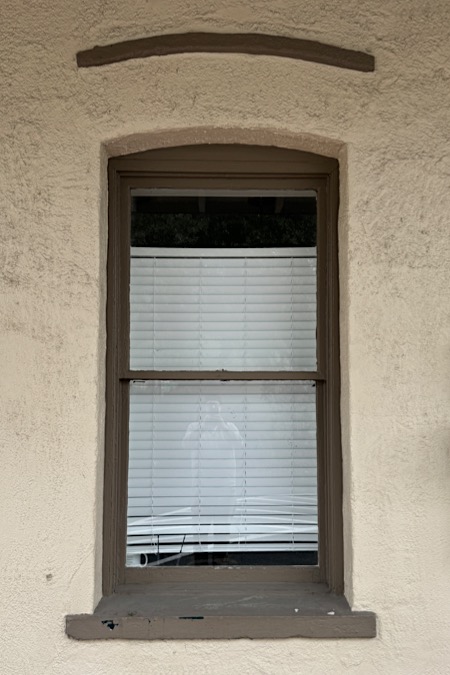
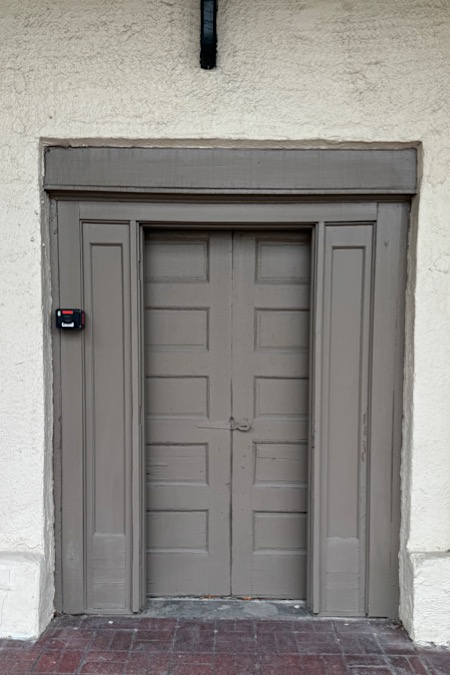
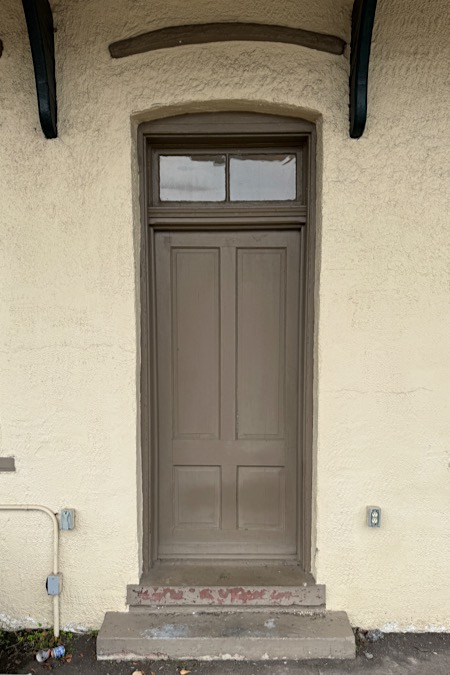
Kingstree, SC / Jan 2024 / RWH
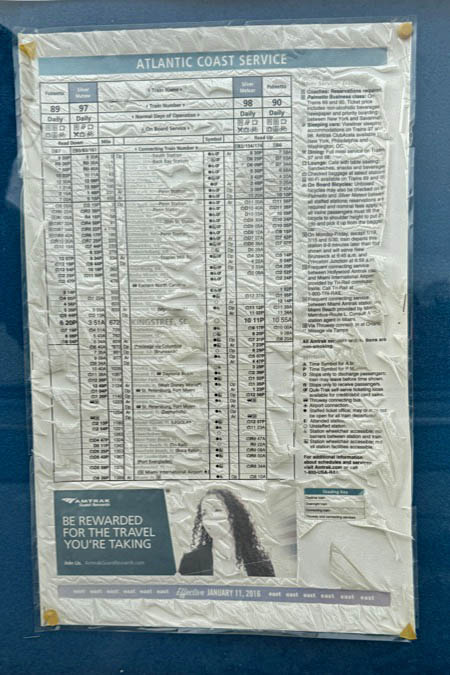
Jan 2024 / RWH
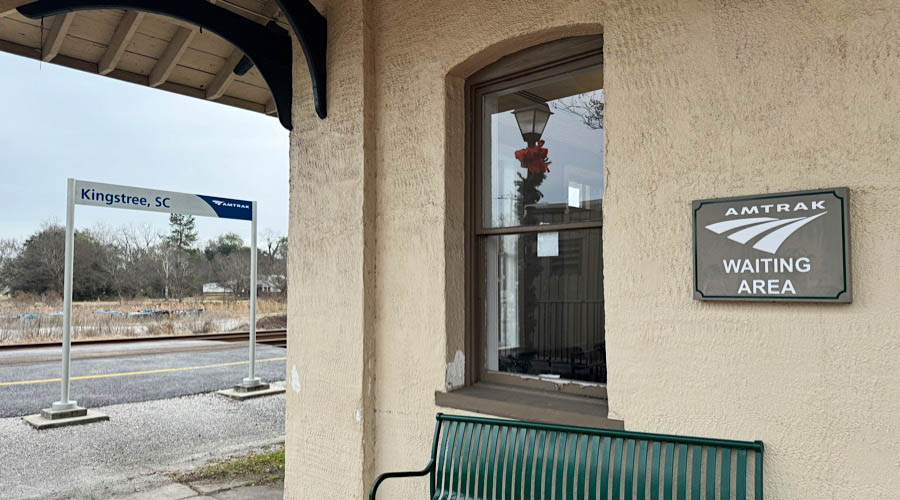
Kingstree, SC / Jan 2024 / RWH
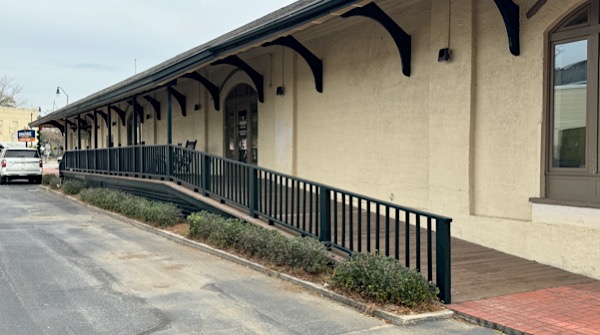
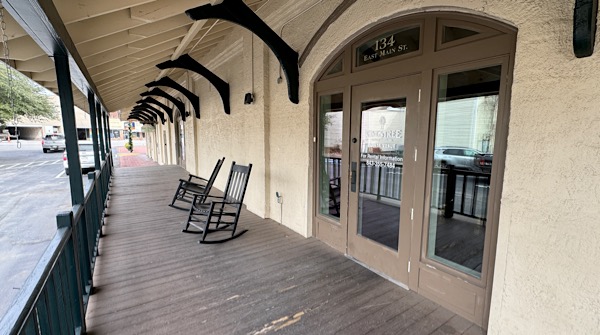
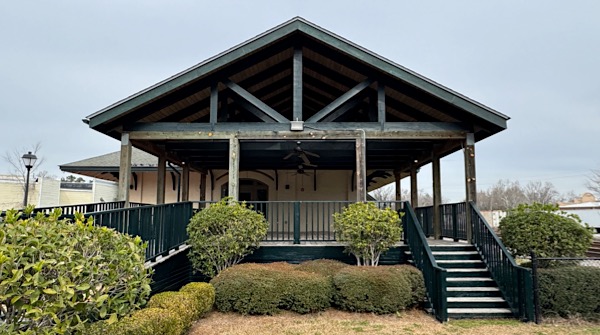

Kingstree, SC / Jan 2024 / RWH

Kingstree, SC / Jan 2024 / RWH
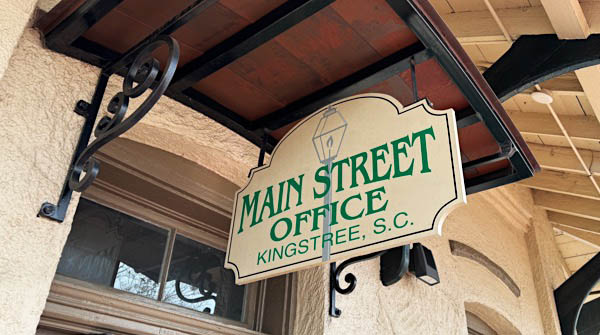

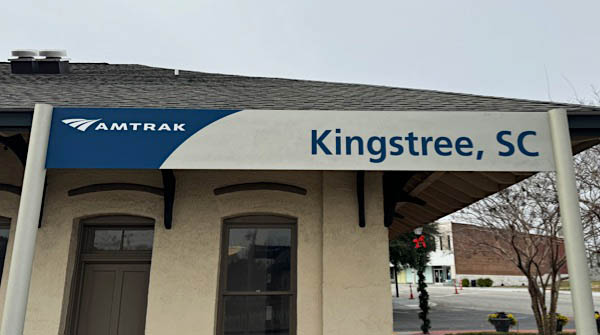
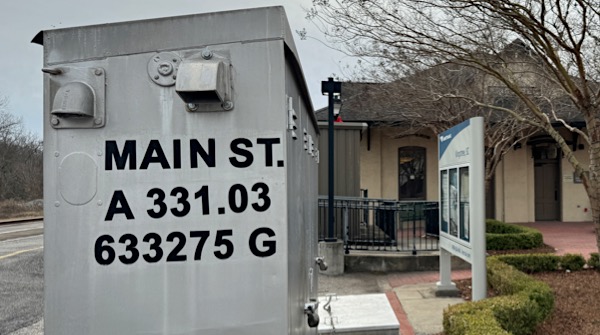
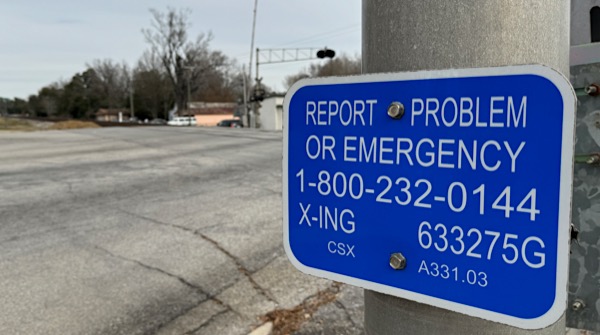
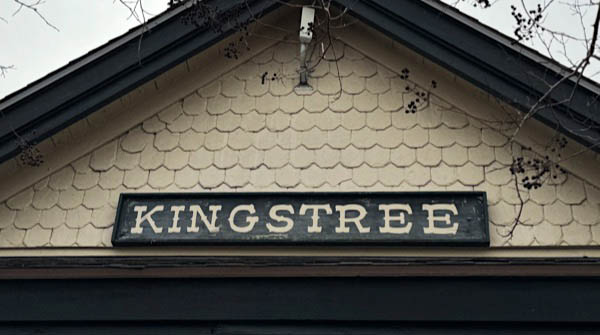
Kingstree, SC / Jan 2024 / RWH
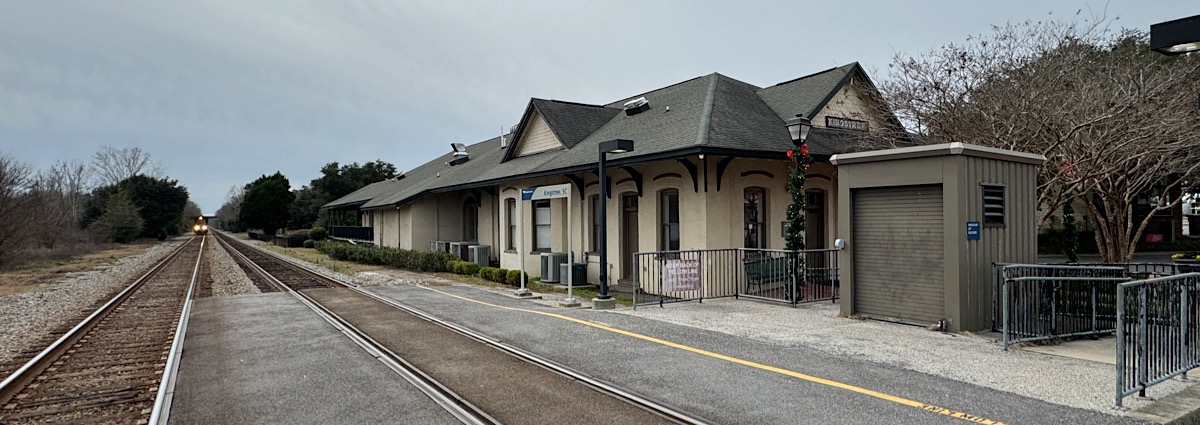
Kingstree, SC / Jan 2024 / RWH
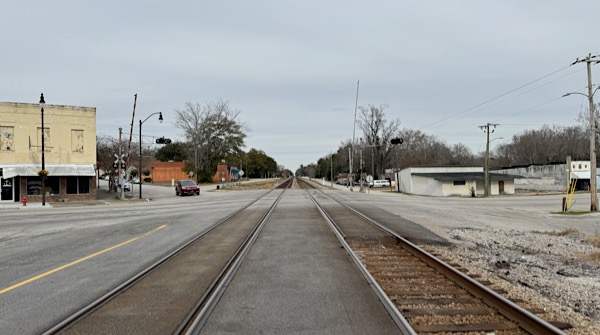

Kingstree, SC / Jan 2024 / RWH

Kingstree, SC / Jan 2024 / RWH
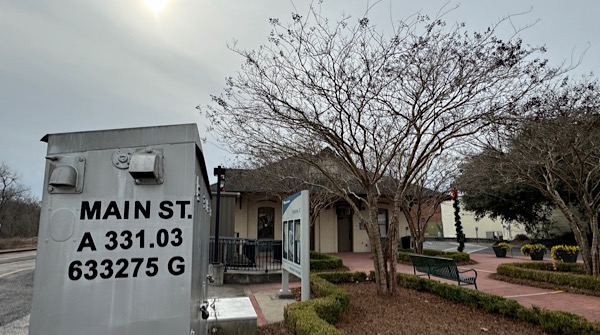
Kingstree, SC / Jan 2024 / RWH
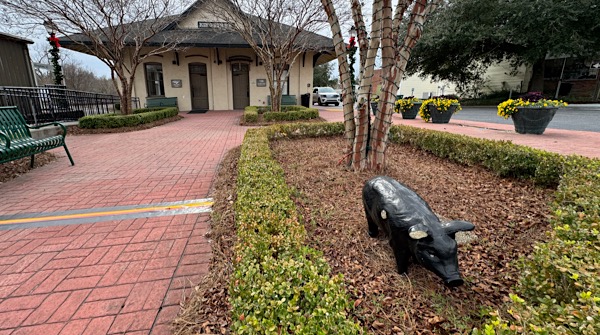
Kingstree, SC / Jan 2024 / RWH
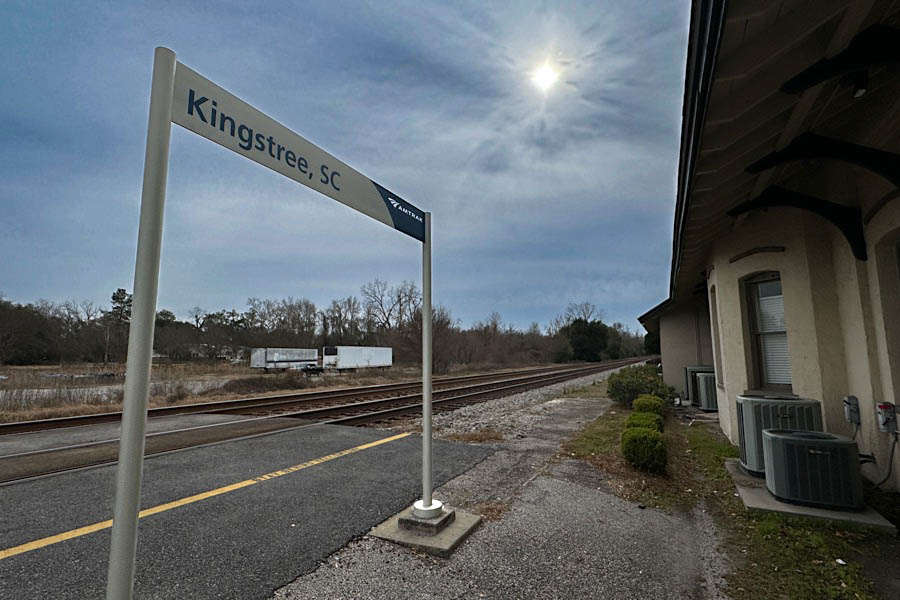
Kingstree, SC / Jan 2024 / RWH
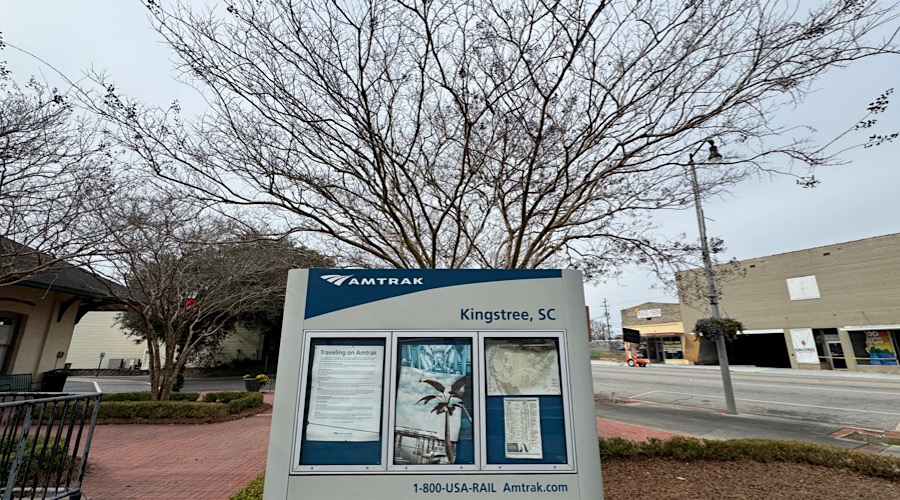
Kingstree, SC / Jan 2024 / RWH
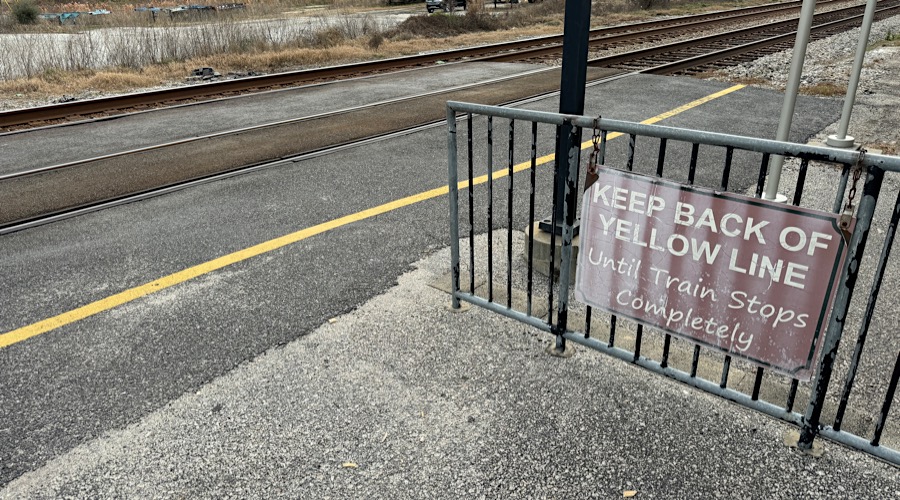
Kingstree, SC / Jan 2024 / RWH
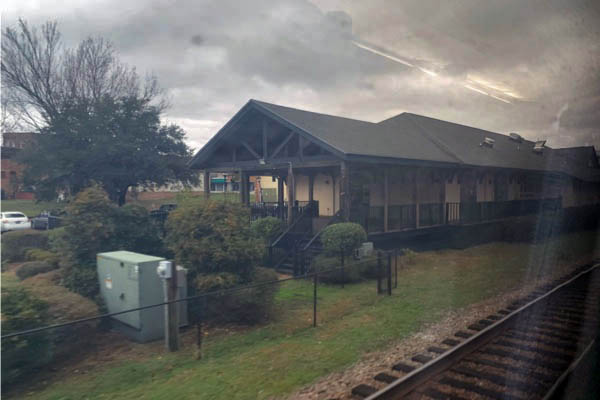
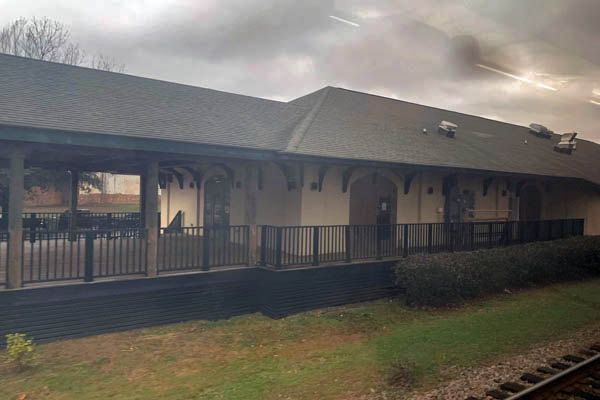
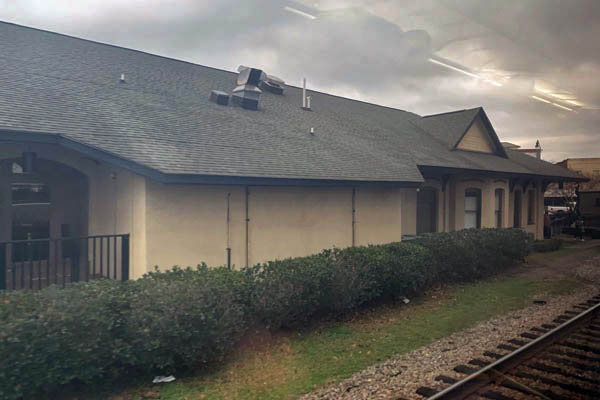
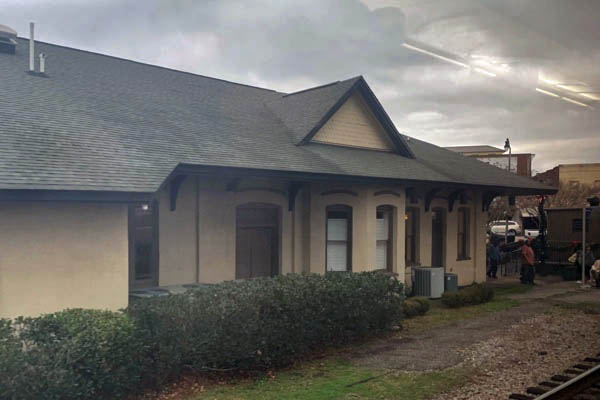
Kingstree, SC / Dec 2019 / RWH
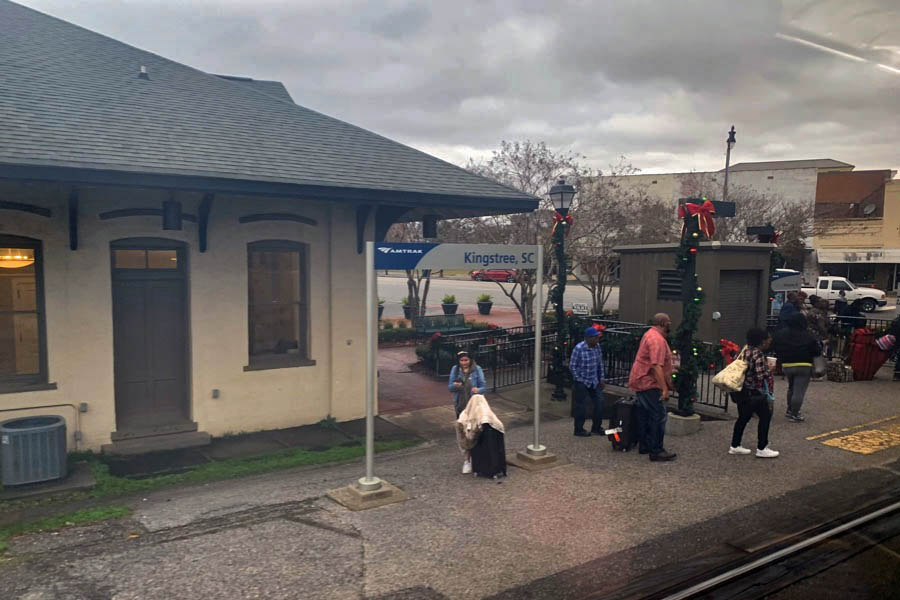
Kingstree, SC / Dec 2019 / RWH

 he current Amtrak stop in Kingstree, a white stuccoed brick building, was built around 1909 by the Atlantic Coast Line Railroad. It has been renovated several times and currently houses the Williamsburg Hometown Chamber Offices as well as the Amtrak waiting room; it also has a facility previously occupied by a restaurant.
he current Amtrak stop in Kingstree, a white stuccoed brick building, was built around 1909 by the Atlantic Coast Line Railroad. It has been renovated several times and currently houses the Williamsburg Hometown Chamber Offices as well as the Amtrak waiting room; it also has a facility previously occupied by a restaurant.
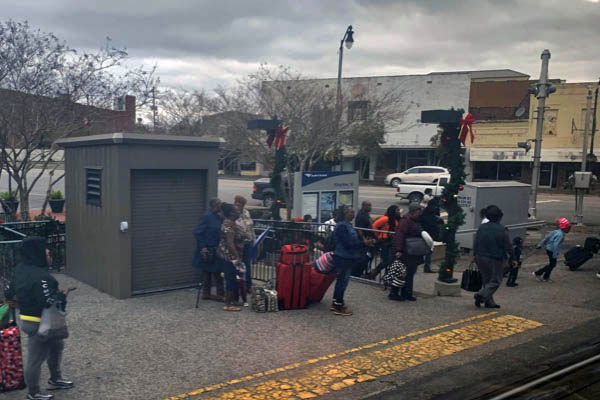



Kingstree, SC / Dec 2019 / RWH
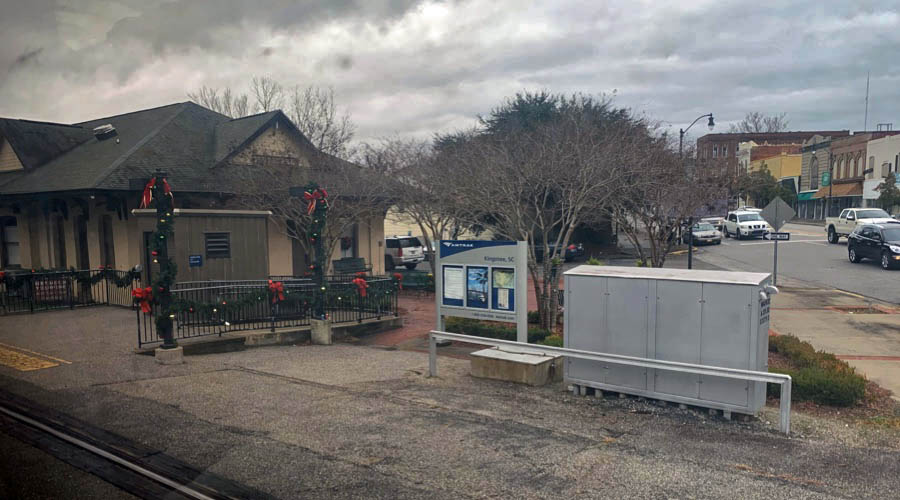
Kingstree, SC / Dec 2019 / RWH
 CSX Mainline Action
CSX Mainline Action
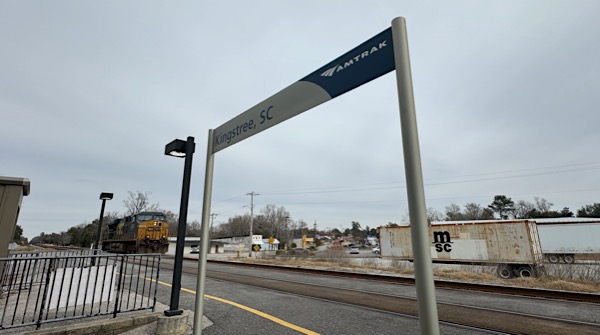
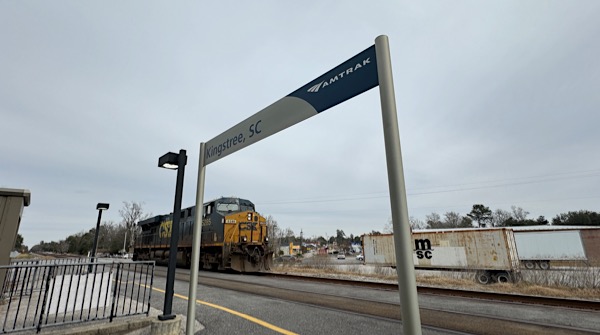
Kingstree, SC / Jan 2024 / RWH

Kingstree, SC / Jan 2024 / RWH

Kingstree, SC / Jan 2024 / RWH

See also our complete CSX Transportation scrapbook in Mainlines
 Window Scenes
Window Scenes

In the age of air travel, we often only get the chance to admire North America from above: the patchwork quilt of plains blends seamlessly into geometric slate mountains dusted with snow, all of which is cut through with ribbons of rivers, canyons, and paved interstates. From a train, however, we have the opportunity to slow down and appreciate the view, even as it flashes past. [There are] train routes that not only give you a chance to enjoy the view, but to appreciate the beauty of the North American continent that we often overlook.
Five Train Trips to Reconnect You to the Beauty of North America
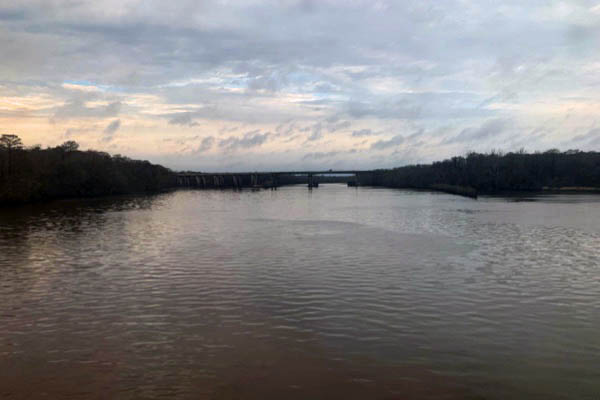
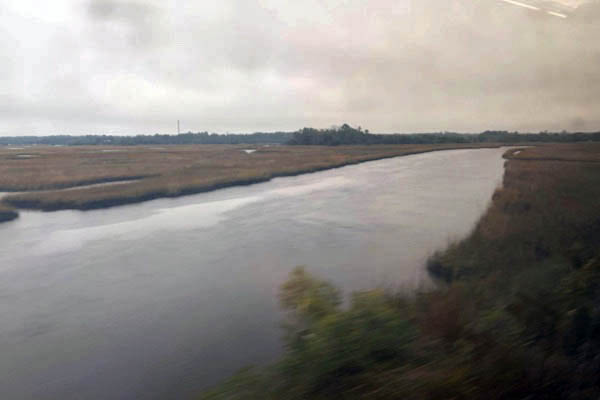

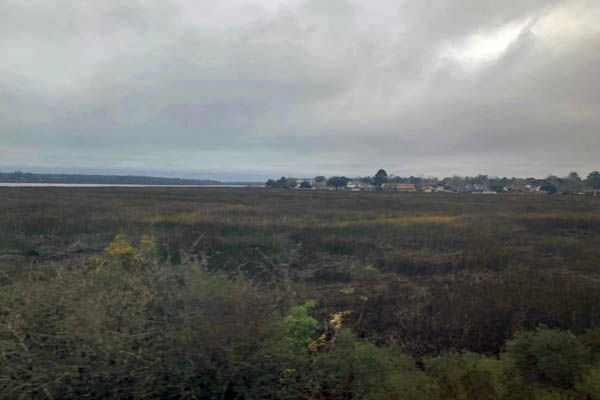

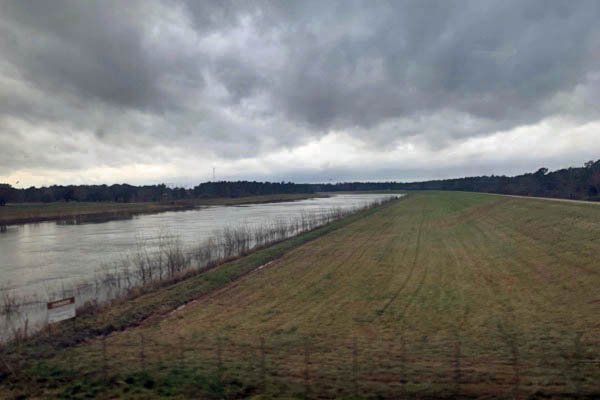
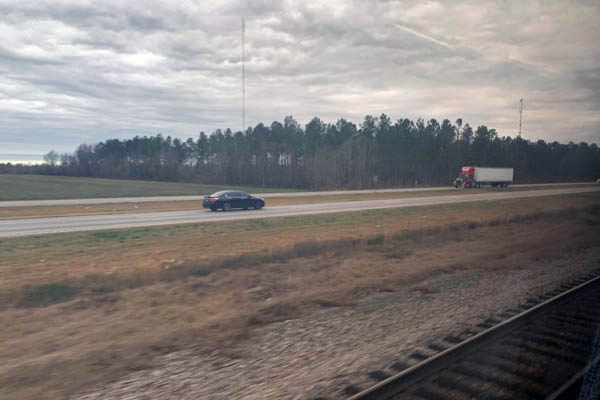



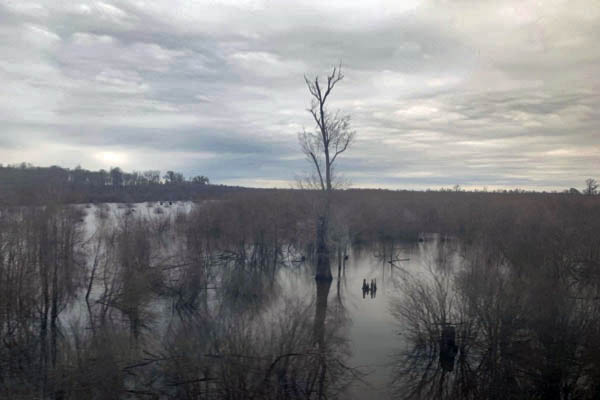
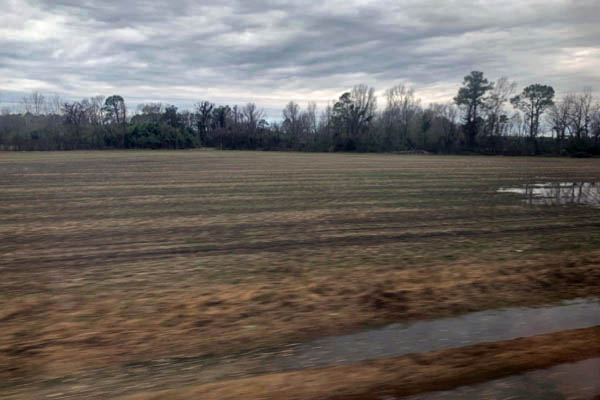

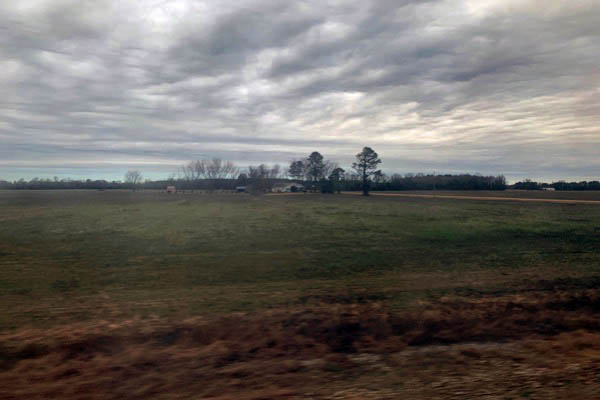
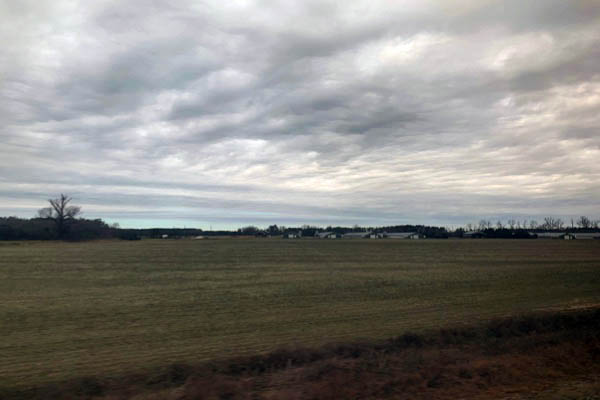

Dec 2019 / RWH
 Charleston, SC
Charleston, SC

An intermodal center opened in late 2018 is served by Amtrak and local and intercity buses and features a spacious waiting area, community room and a history display focused on the surrounding Liberty Hill neighborhood.

North Charleston, SC / Jan 2024 / RWH
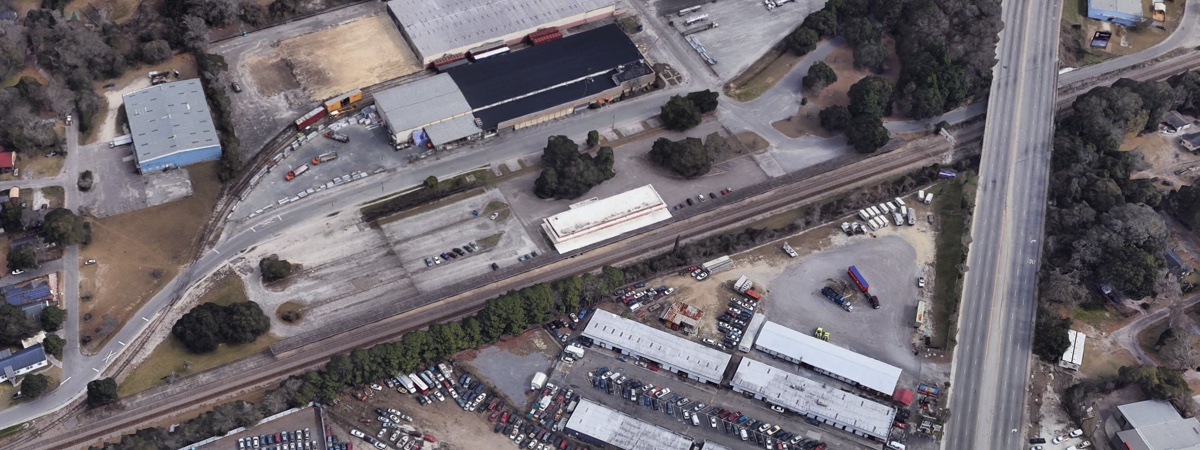
North Charleston station overhead / Google Maps

Click to see the Charleston station plotted on a Google Maps page
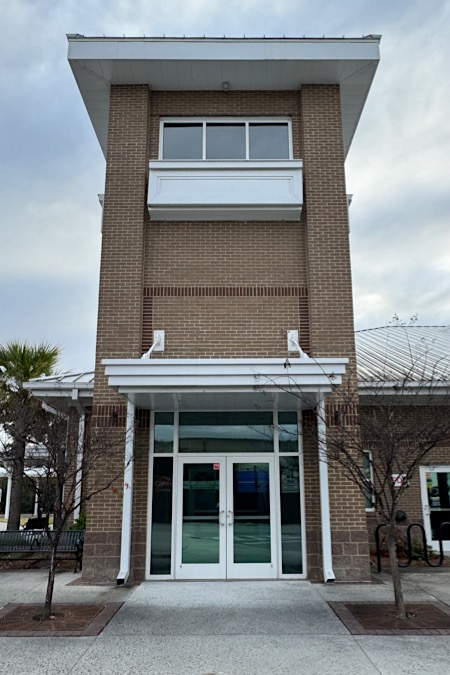
Jan 2024 / RWH
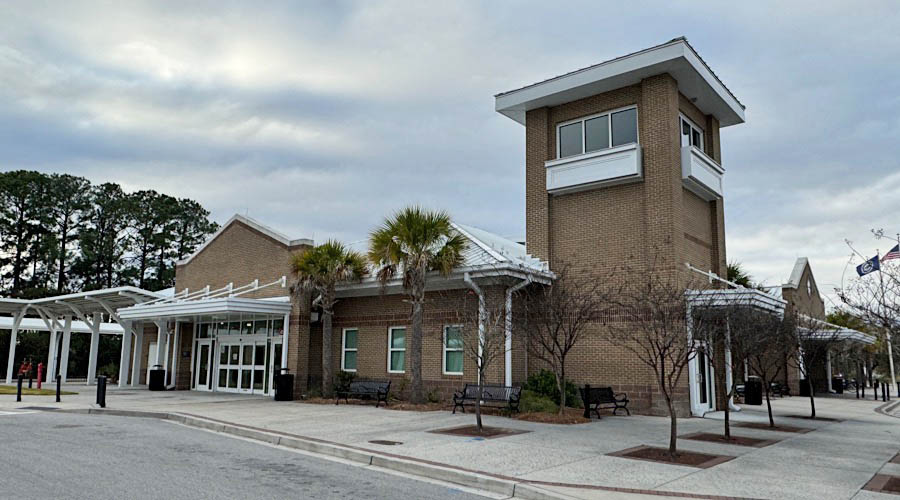
North Charleston, SC / Jan 2024 / RWH


North Charleston, SC / Jan 2024 / RWH

North Charleston, SC / Jan 2024 / RWH
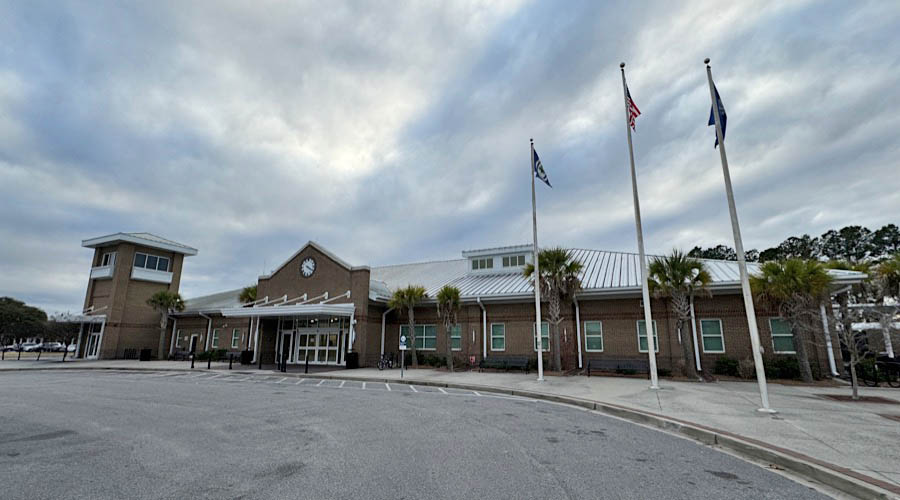
North Charleston, SC / Jan 2024 / RWH

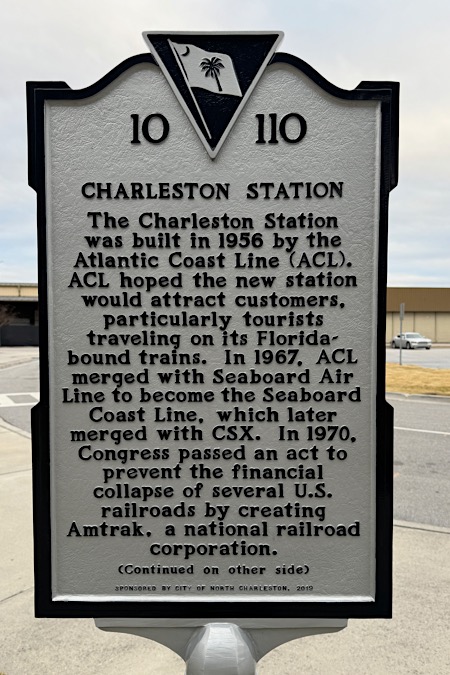

Jan 2024 / RWH
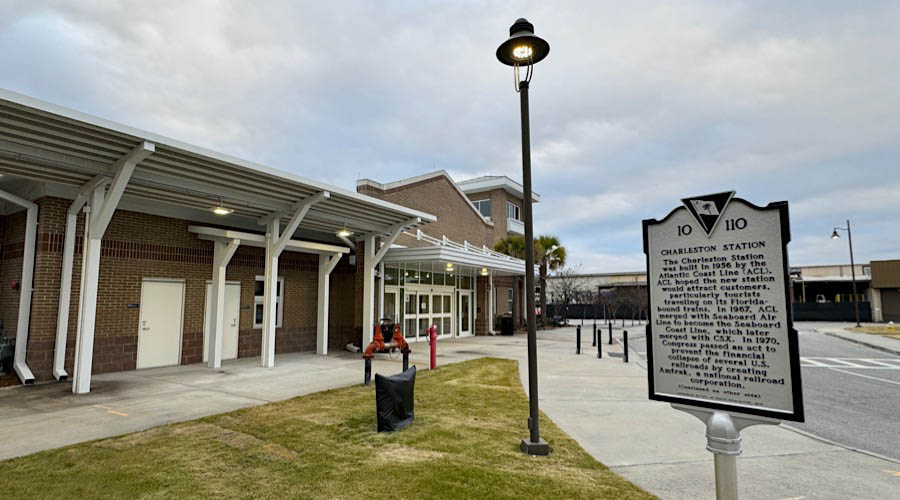
North Charleston, SC / Jan 2024 / RWH

North Charleston, SC / Jan 2024 / RWH

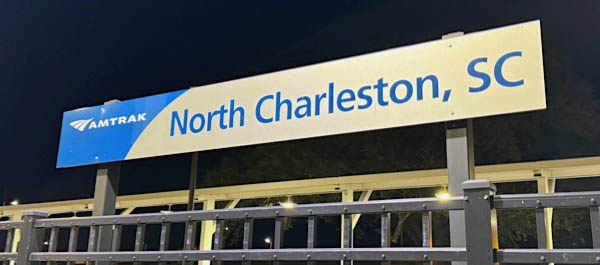
 mtrak moved into the North Charleston Intermodal Center in December 2018 following a year and a half of construction. The facility had been under discussion since the late 1990s to bring together various transportation modes — including Amtrak, Charleston Area Rapid Transit Authority (CARTA) buses and intercity buses — in one convenient location. Amtrak relocated to the intermodal center from the 1956 Atlantic Coast Line (ACL) depot, which stood directly to the south.
mtrak moved into the North Charleston Intermodal Center in December 2018 following a year and a half of construction. The facility had been under discussion since the late 1990s to bring together various transportation modes — including Amtrak, Charleston Area Rapid Transit Authority (CARTA) buses and intercity buses — in one convenient location. Amtrak relocated to the intermodal center from the 1956 Atlantic Coast Line (ACL) depot, which stood directly to the south.
The one-story, nearly 15,000-square foot intermodal center is constructed of brown brick and textured concrete masonry units and features a tower on one end. Stylized pilasters create regular bays that visually break up the long, horizontal facades. A projecting bay with triangular parapet and clock face adds a strong vertical element and marks the main entrance; a canopy protects passengers from inclement weather as they arrive by car. The steeply pitched, hipped seamed-metal roof has prominent shed dormer windows that, along with numerous other windows at ground level, allow natural light to brighten the interior. Along the tracks was built a new concrete platform with canopy.
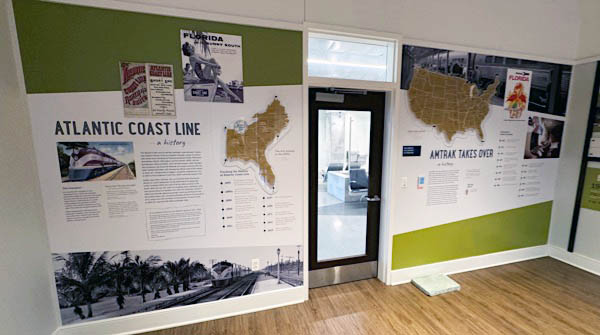 Inside, customers enjoy a spacious waiting area enlivened by a diamond pattern on the floor and accented with organic stone and wood elements. The building also has an Amtrak ticket counter, CARTA and Amtrak offices, a community room and a history display focused on the surrounding Liberty Hill neighborhood. Created as a freedmen’s settlement after the Civil War, Liberty Hill is the oldest community in North Charleston.
Inside, customers enjoy a spacious waiting area enlivened by a diamond pattern on the floor and accented with organic stone and wood elements. The building also has an Amtrak ticket counter, CARTA and Amtrak offices, a community room and a history display focused on the surrounding Liberty Hill neighborhood. Created as a freedmen’s settlement after the Civil War, Liberty Hill is the oldest community in North Charleston.
North Charleston, where the intermodal center is located, straddles Charleston and Dorchester counties; it was incorporated as a city in 1972. In the early 1900s, the area was set out as a planned industrial community with its growth geared directly to the industrial, military and business communities. At the time, the Park Circle neighborhood was designed as one of only two garden city models in the U.S., and most of the original planning concepts remain intact. Today the city is home to Charleston International Airport and Charleston Air Force Base.
Great American Stations / images RWH
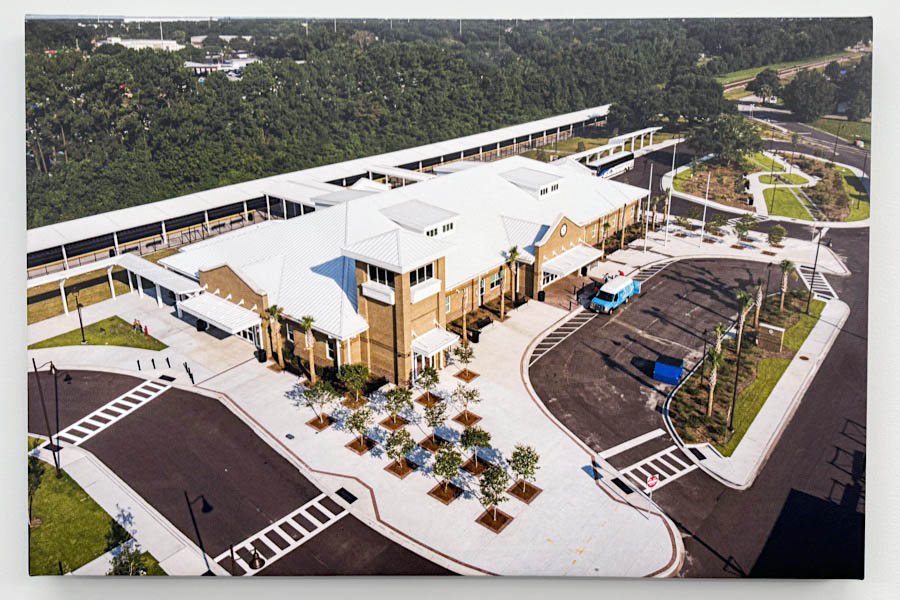
Jan 2024 / RWH
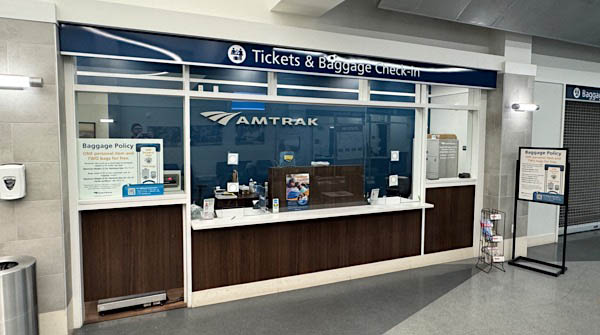


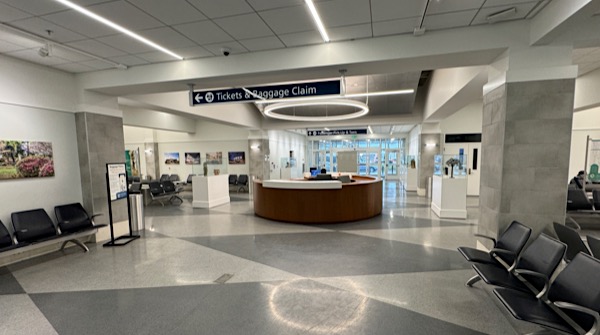
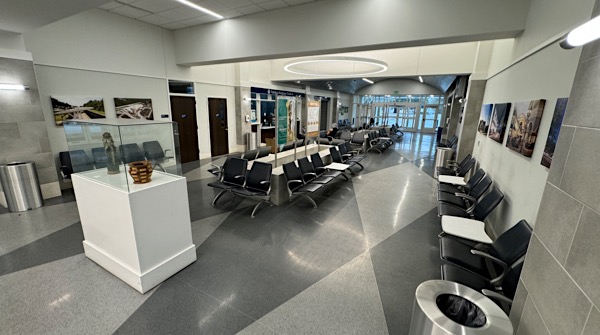
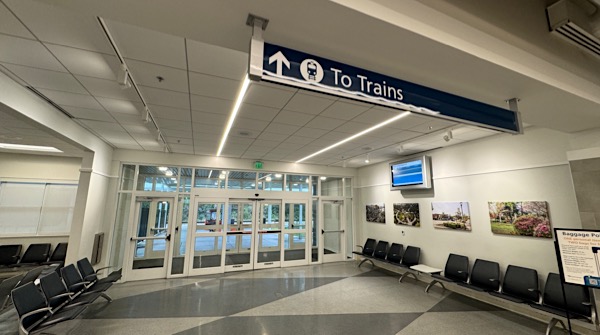
Jan 2024 / RWH
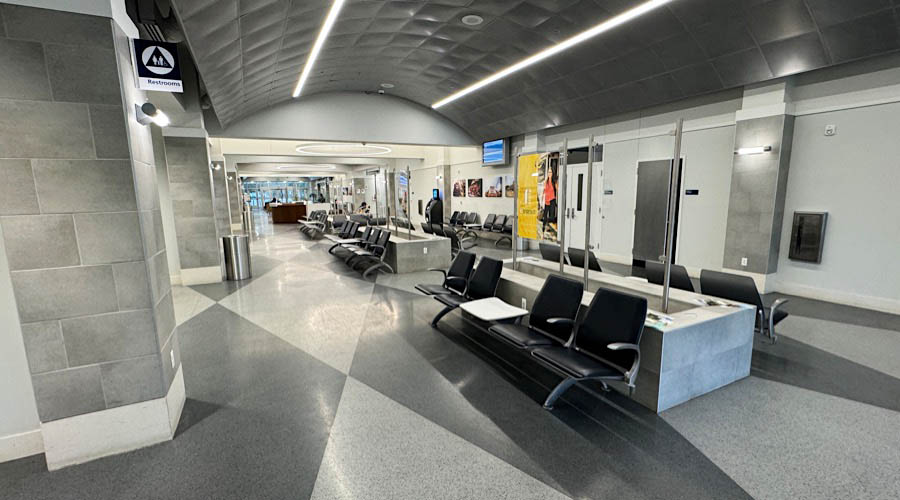
Jan 2024 / RWH
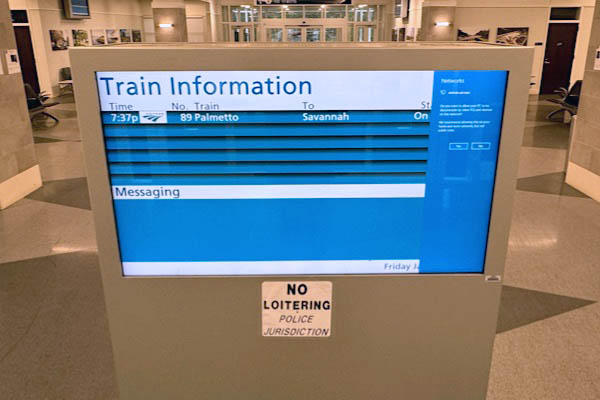

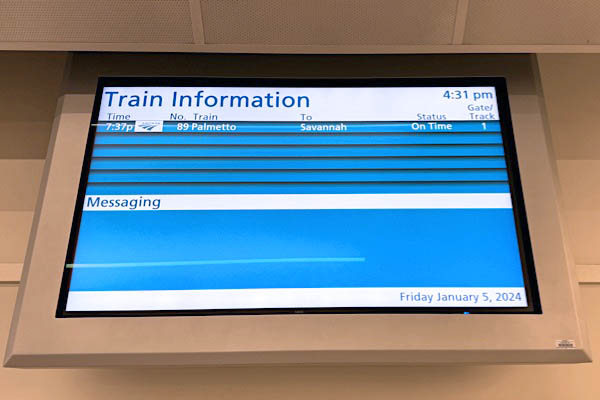
North Charleston, SC / Jan 2024 / RWH

Jan 2024 / RWH
 History Display
History Display

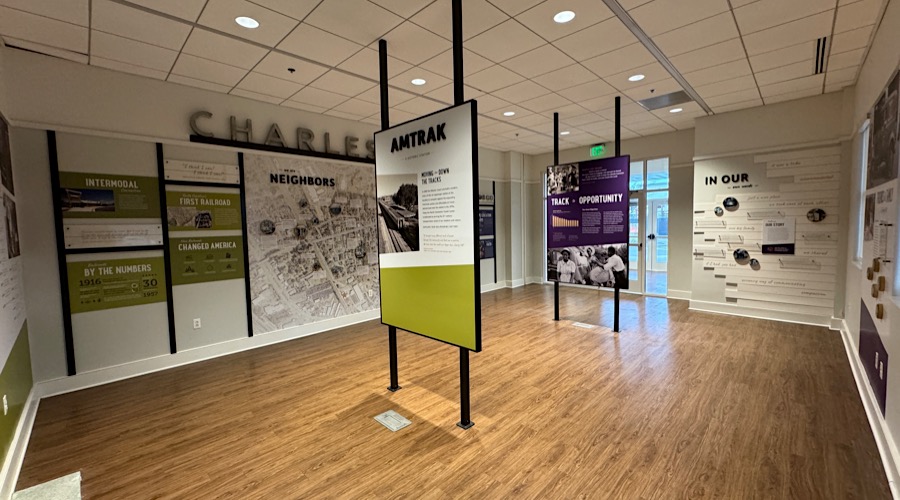
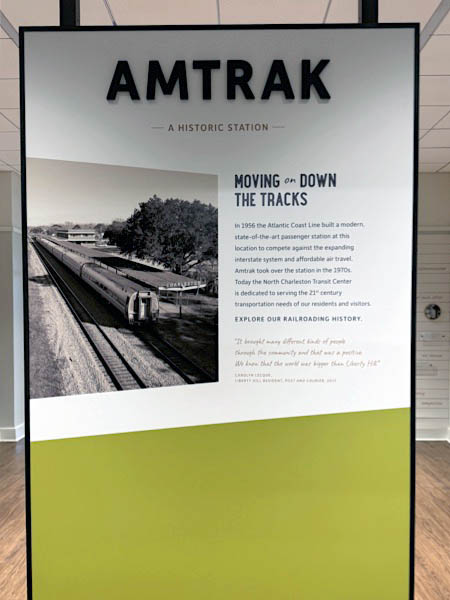
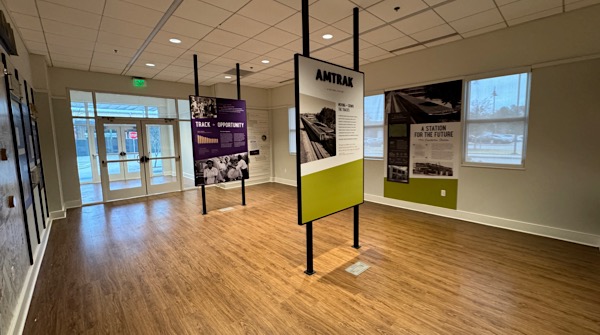
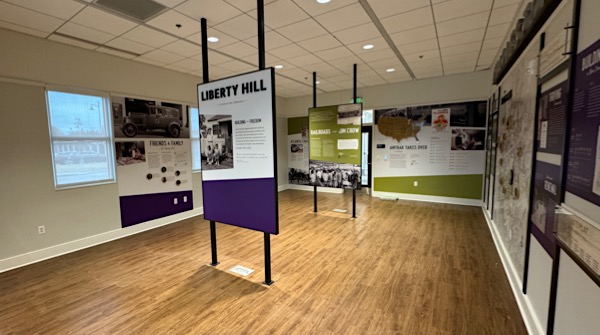
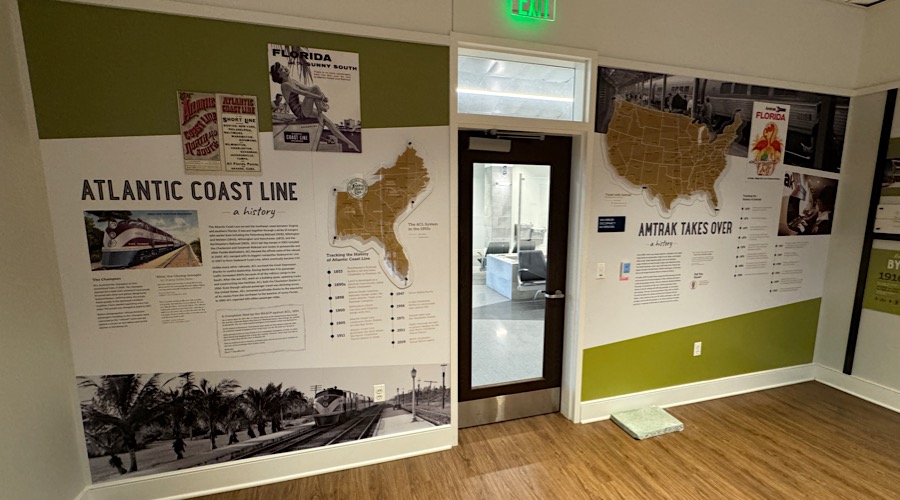
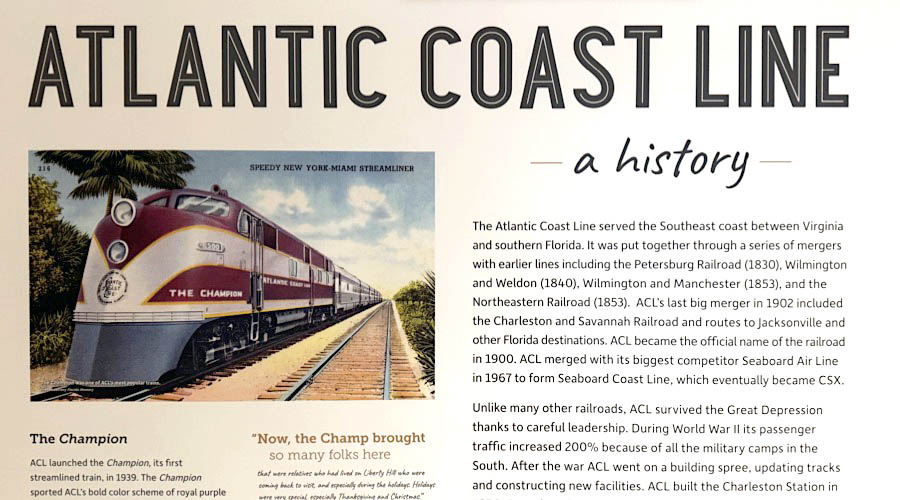
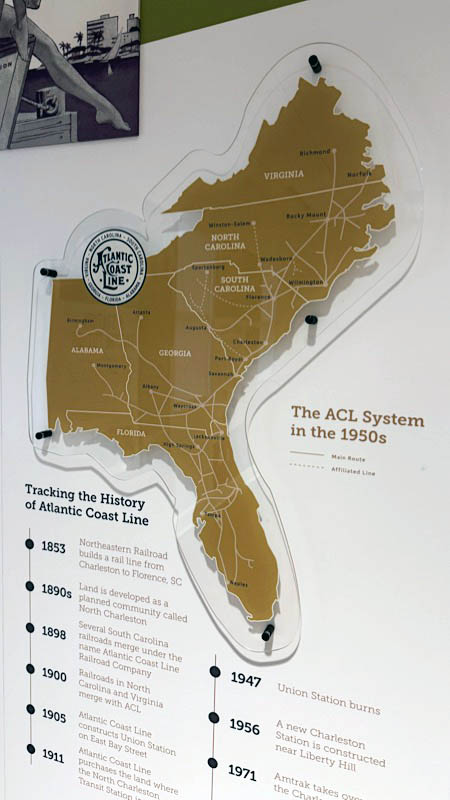
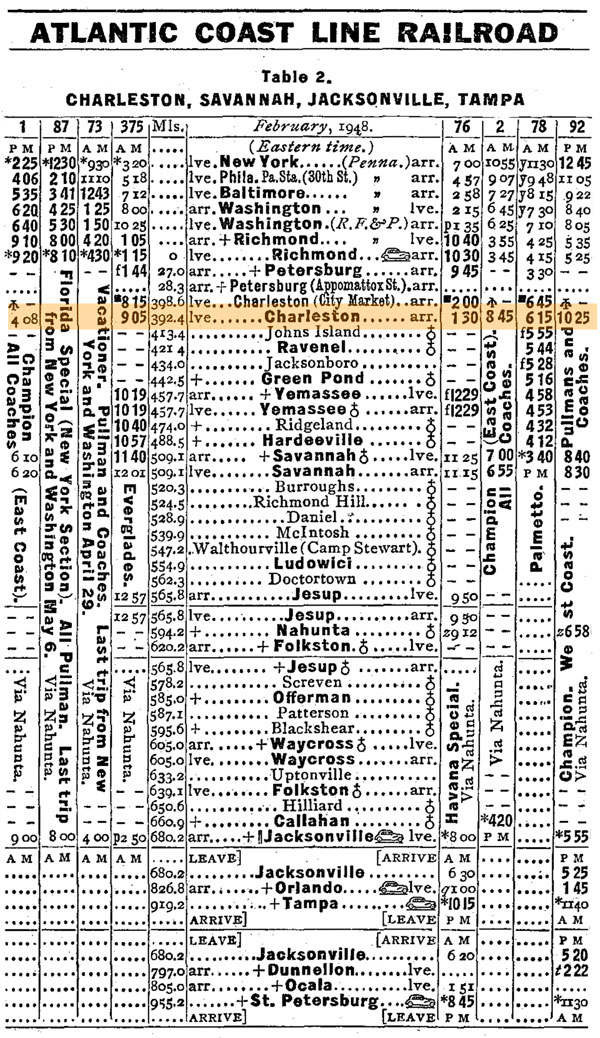
1948 Official Guide ad / collection
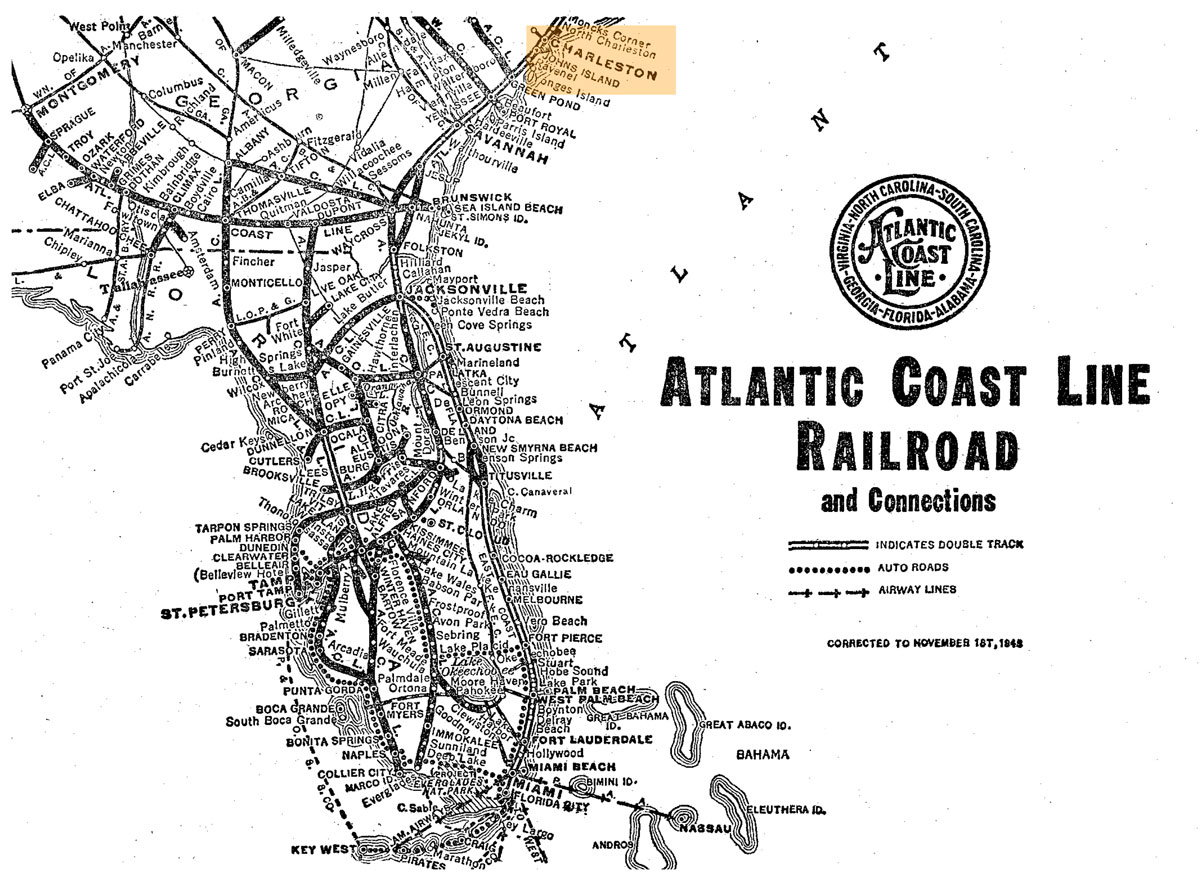
1945 Official Guide map / collection
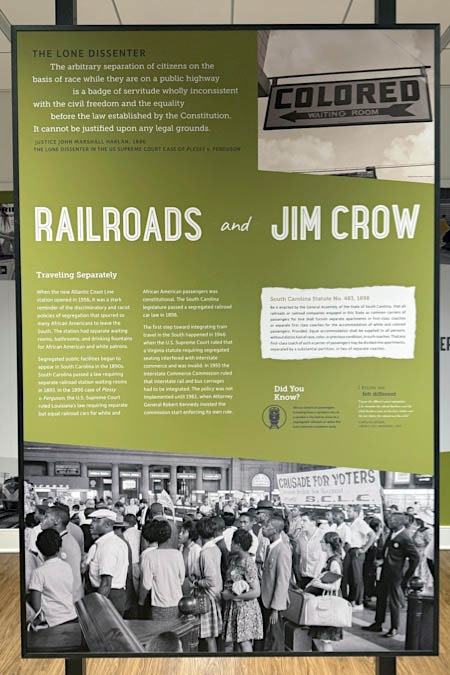
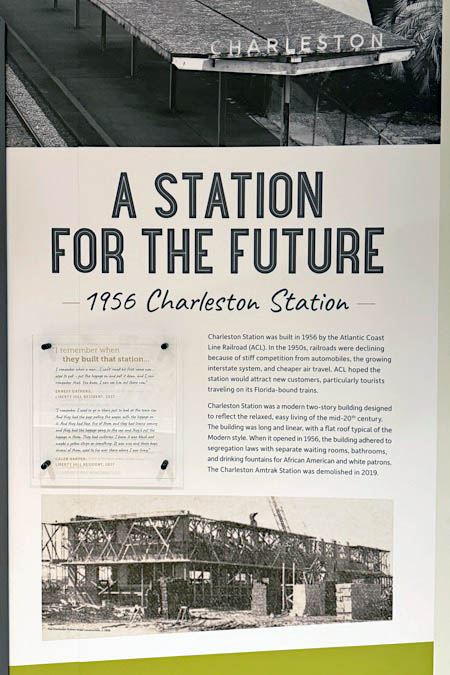
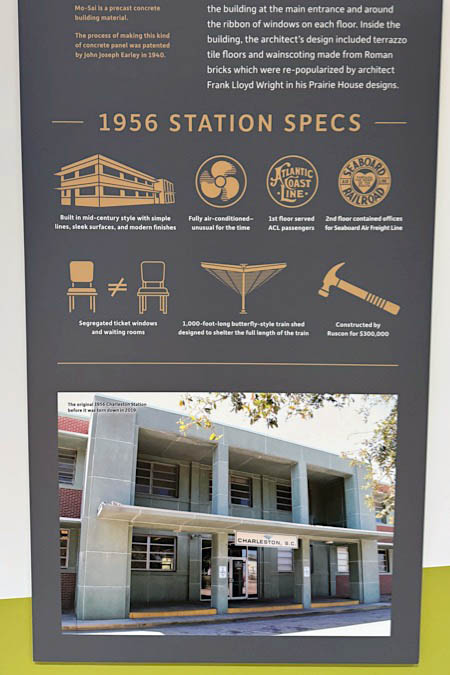
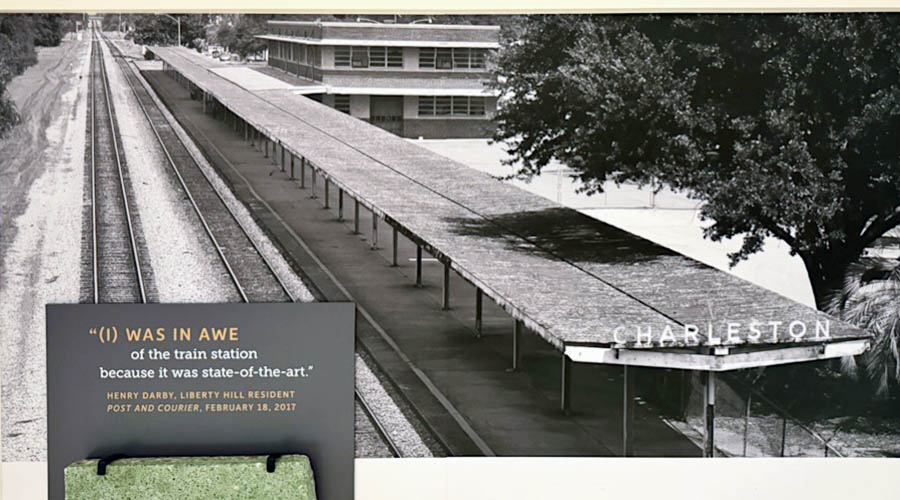
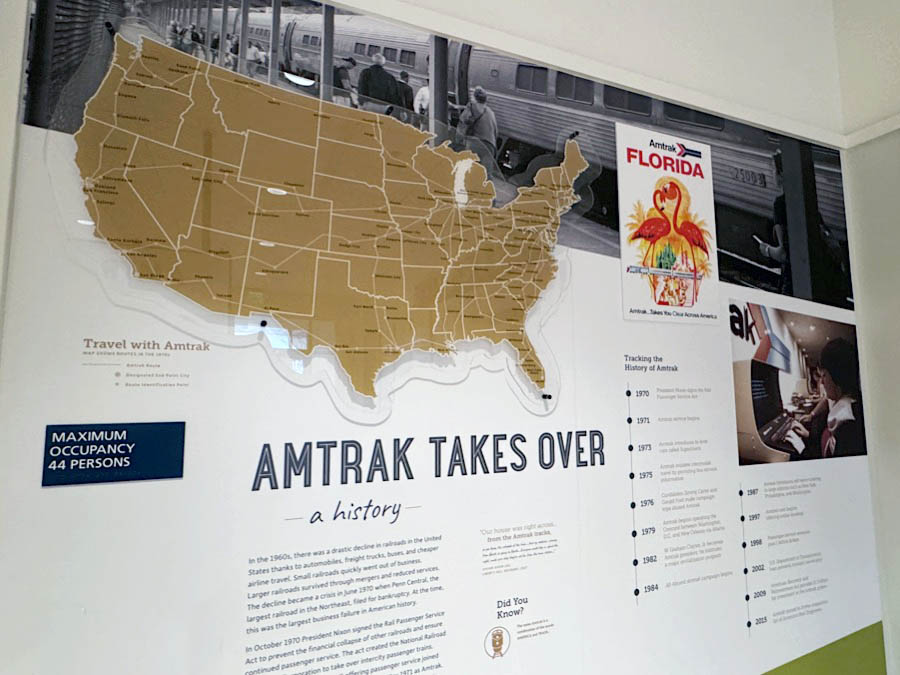
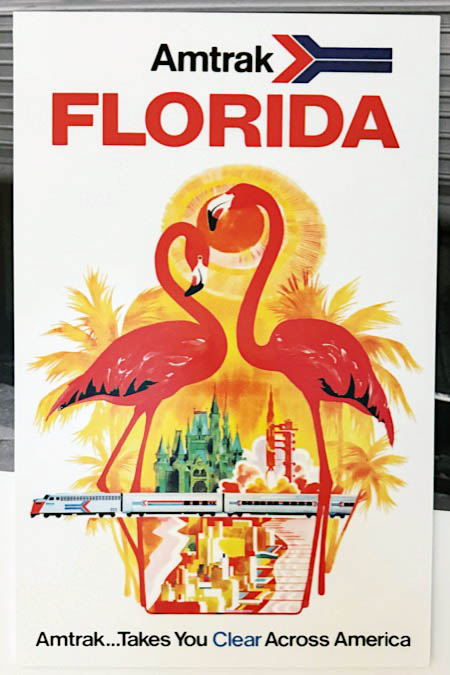
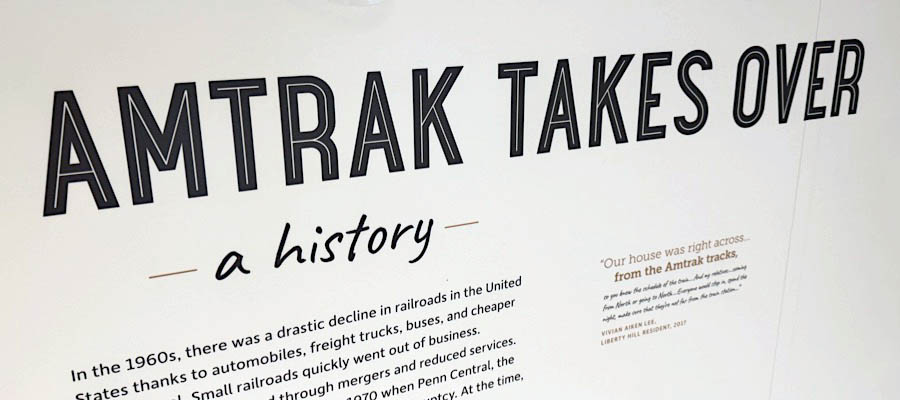
all photos above: North Charleston, SC / Jan 2024 / RWH

North Charleston, SC / Jan 2024 / RWH
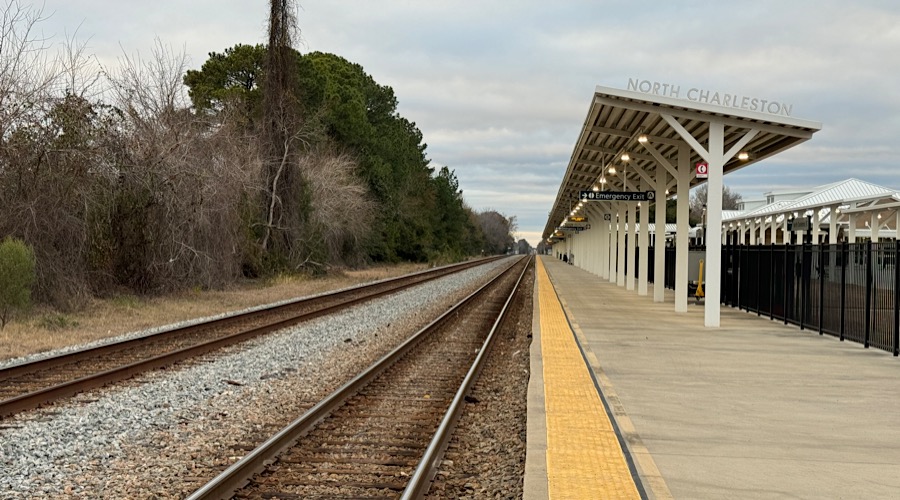
North Charleston, SC / Jan 2024 / RWH
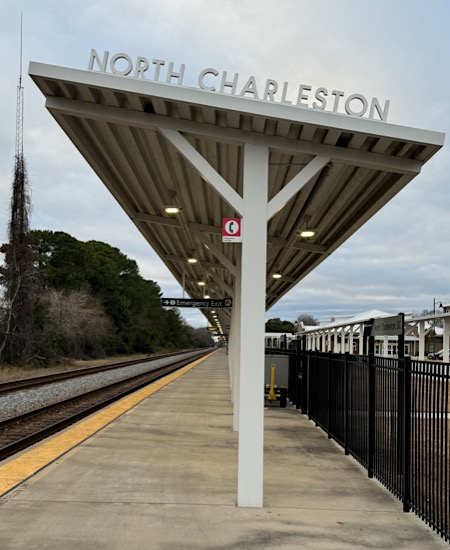
Jan 2024 / RWH
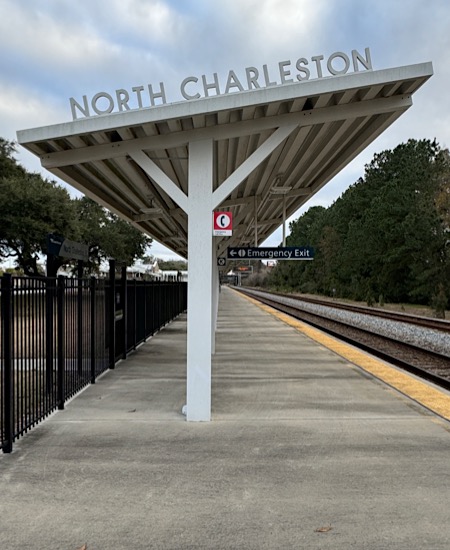
Jan 2024 / RWH
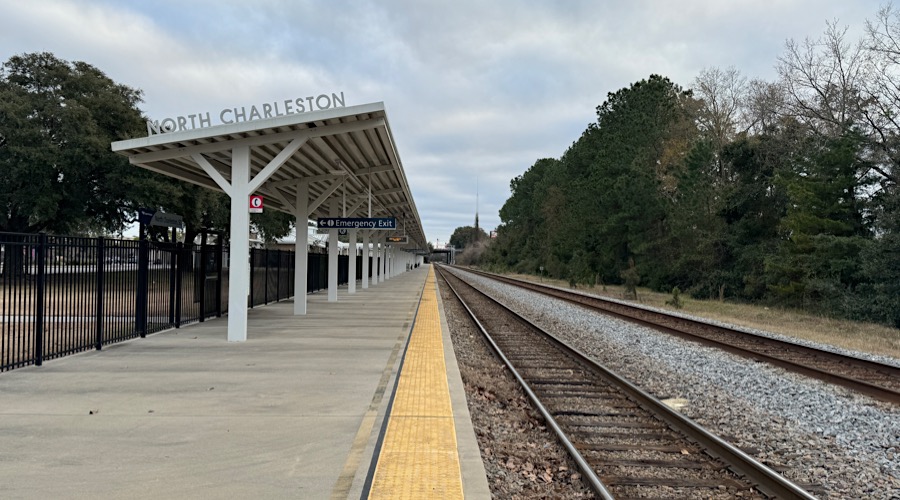
North Charleston, SC / Jan 2024 / RWH
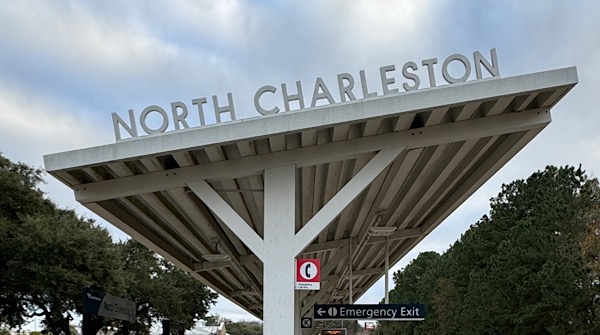
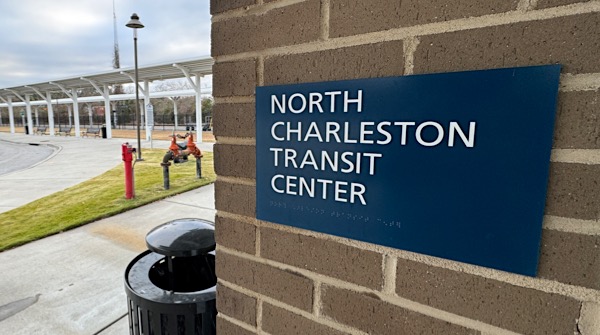
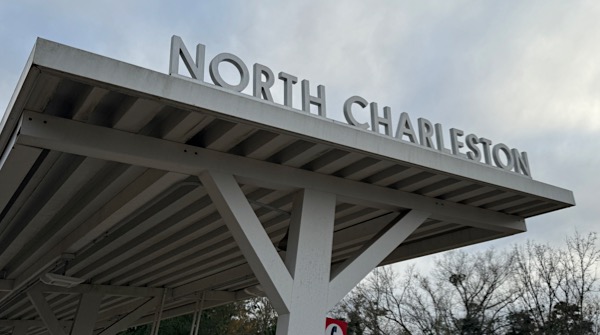
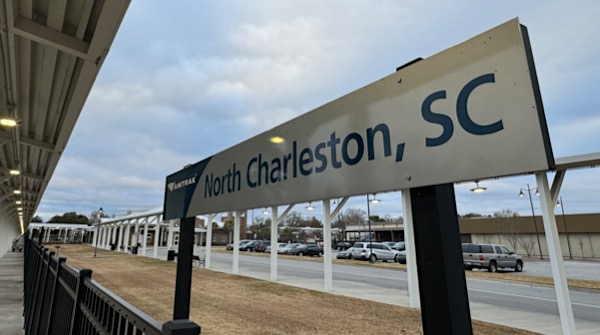
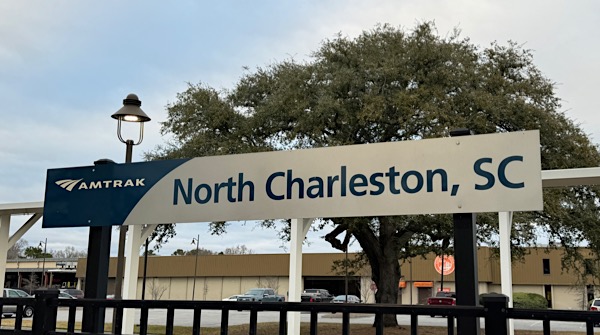

Jan 2024 / RWH

1800’s: Earliest railroad track lines were laid from Charleston to the North Area, near what is now Rivers Avenue. Farming and lumbering were vital in the early 1800’s and the mining of phosphate for use in fertilizer created an economic boom after the Civil War. Liberty Hill, the oldest neighborhood in the North Area, was established by freedmen who purchased land in and built homes and farms for their families circa 1864. In 1898, two plantations along the Cooper River were purchased to create Chicora Park, designed by the Olmstead Brothers, as a day destination for wealthy Charlestonians.
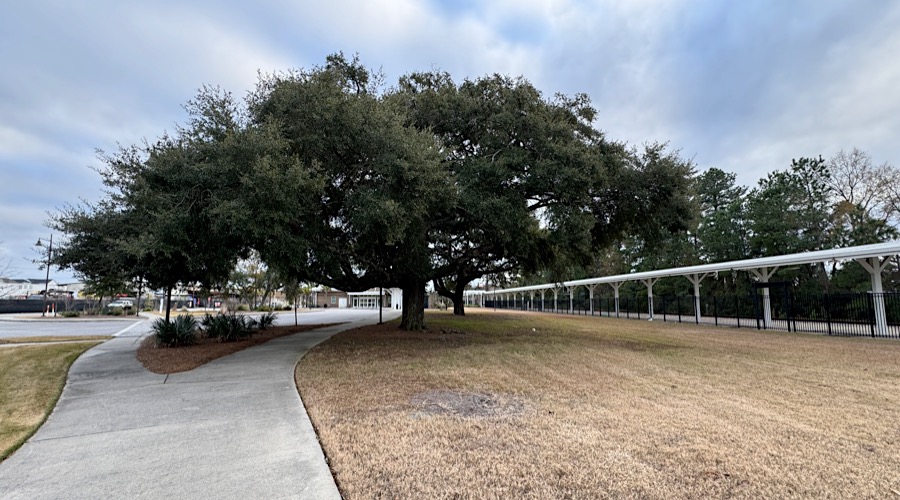
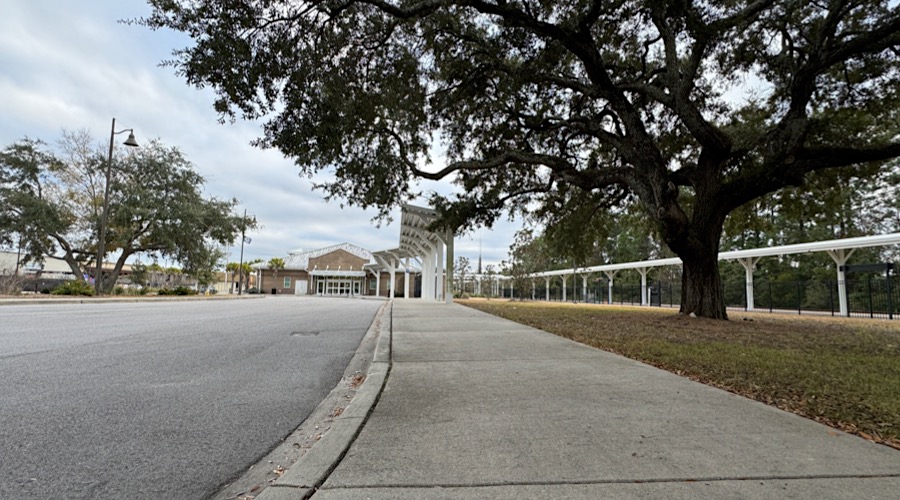
North Charleston, SC / Jan 2024 / RWH

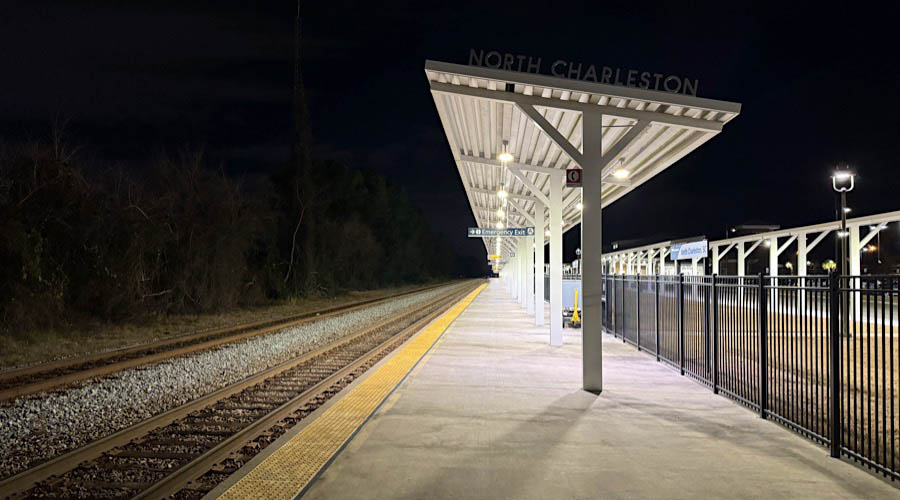
North Charleston, SC / Jan 2024 / RWH
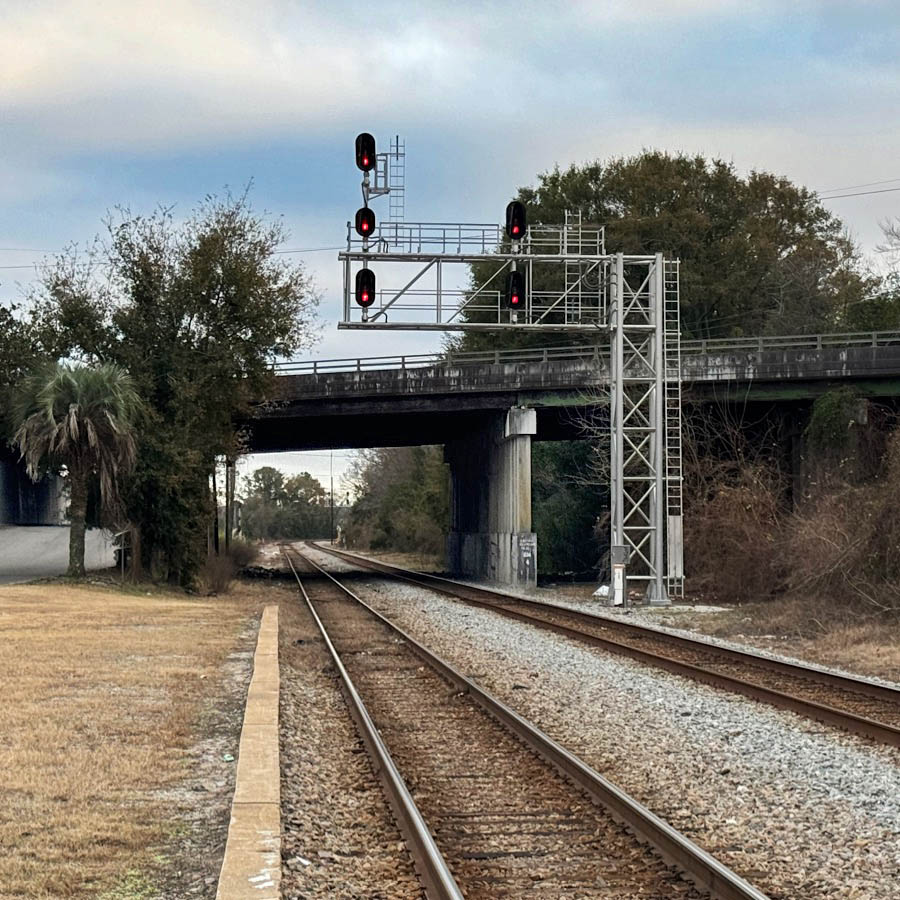
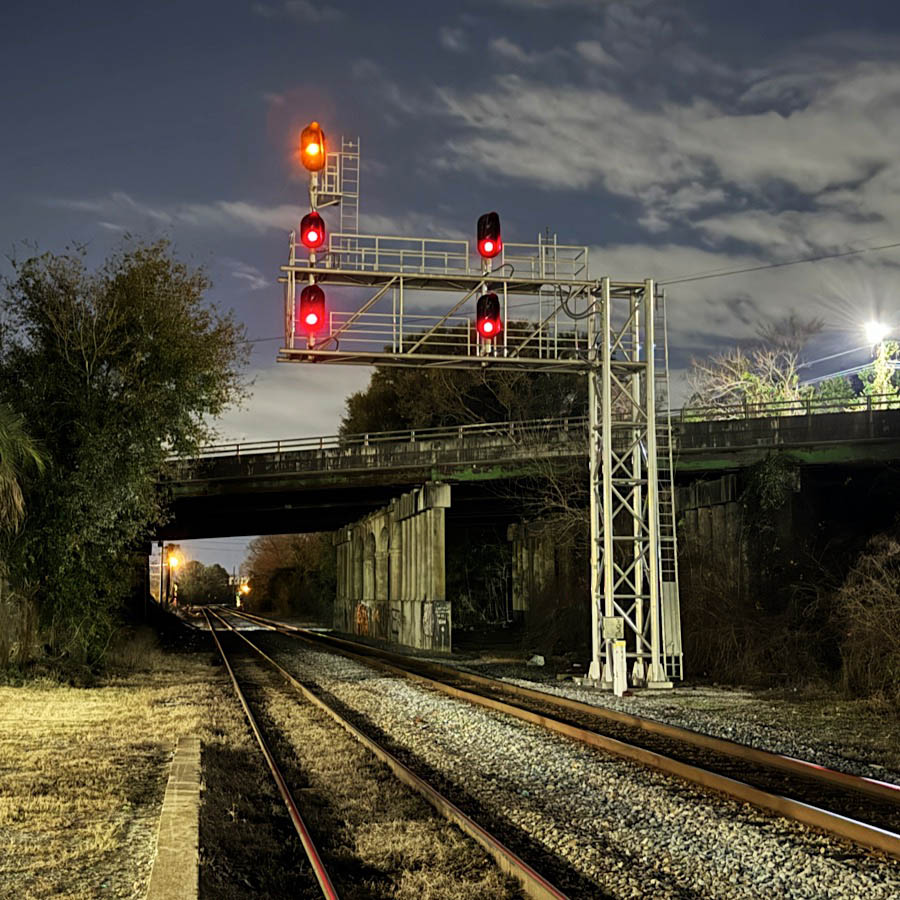
North Charleston, SC / Jan 2024 / RWH
#89 station work
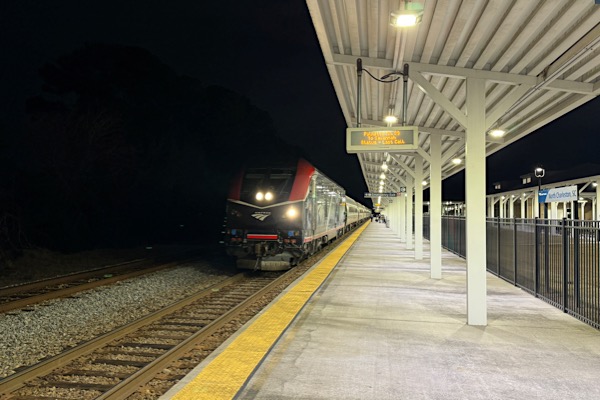

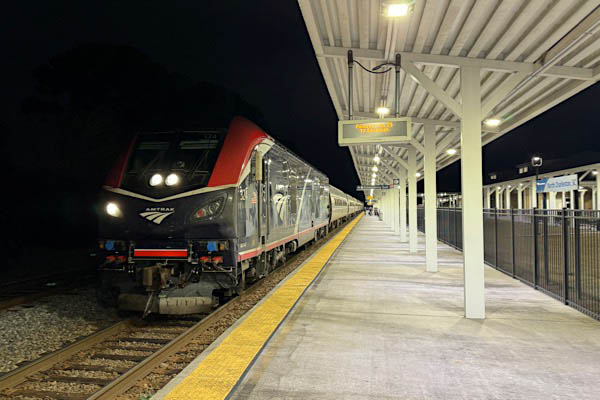
North Charleston, SC / Jan 2024 / RWH

North Charleston, SC / Jan 2024 / RWH
Amtrak #324
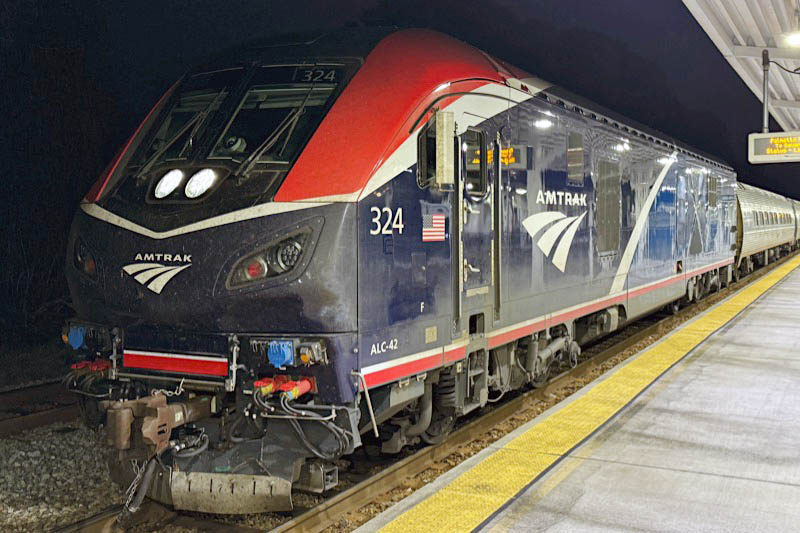
Amtrak #324
North Charleston, SC / Jan 2024 / RWH


Amtrak #324
1 of 125 in Amtrak order

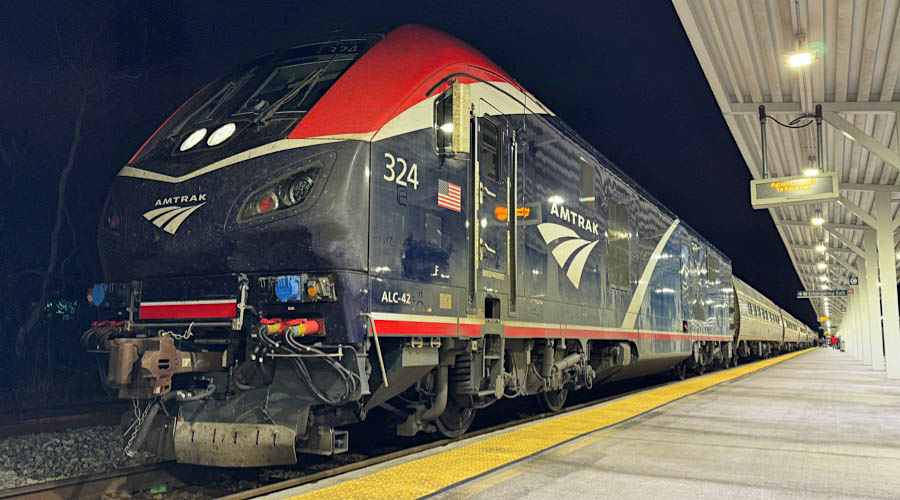
North Charleston, SC / Jan 2024 / RWH

Jan 2024 / RWH
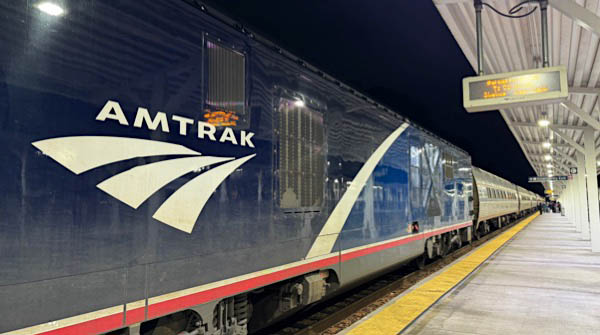
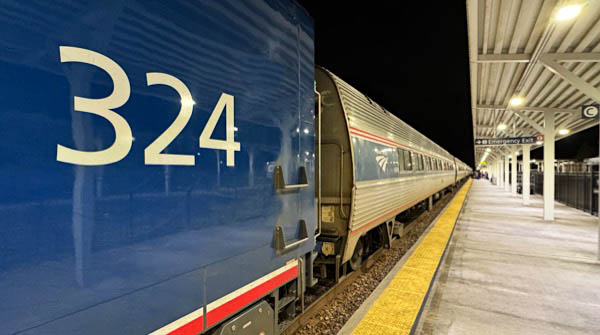
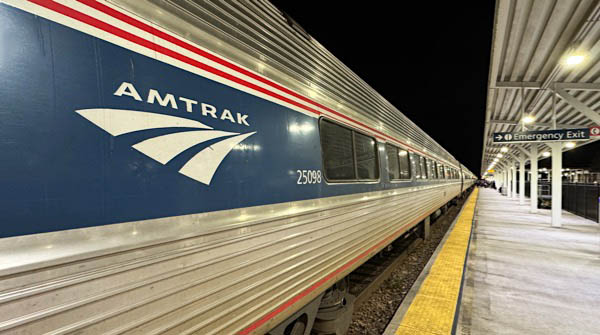
Jan 2024 / RWH
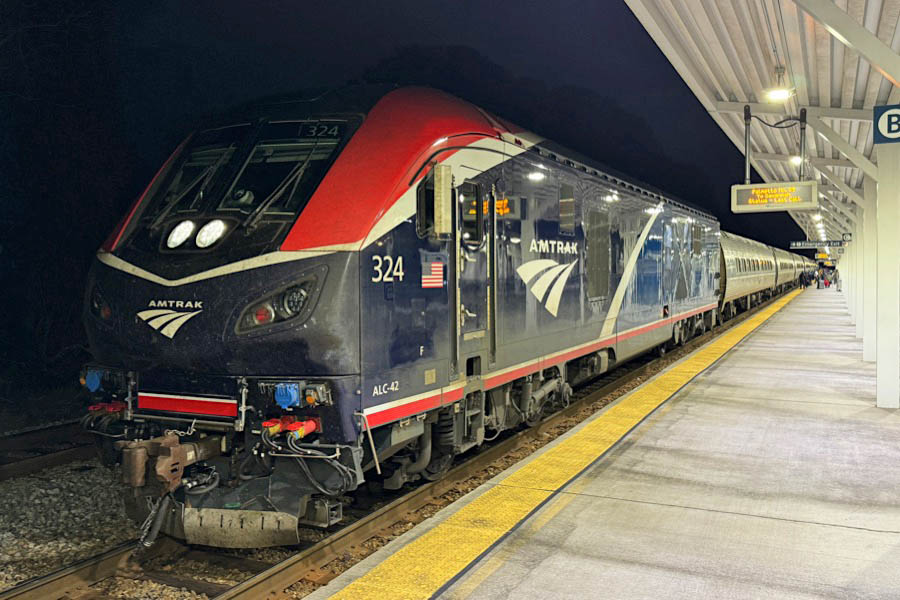
North Charleston, SC / Jan 2024 / RWH
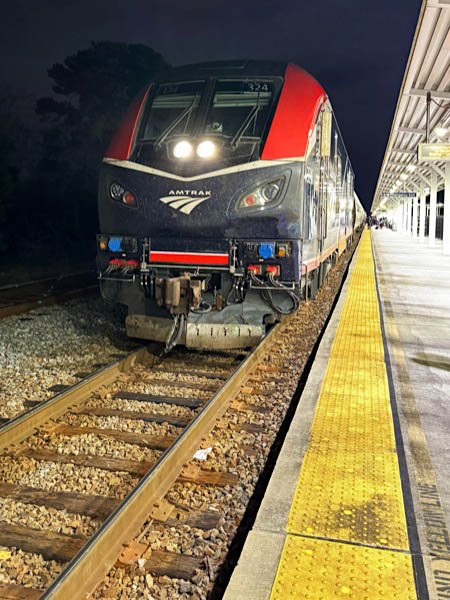
Jan 2024 / RWH
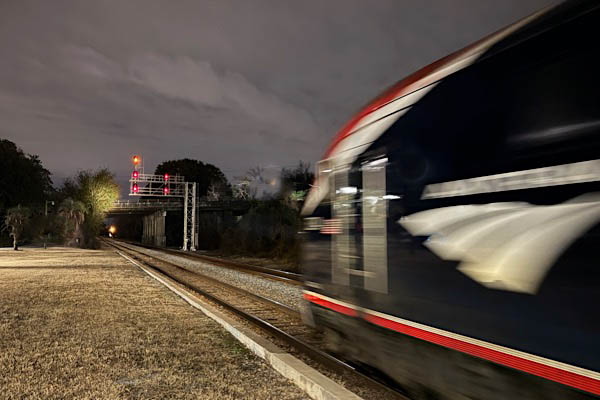
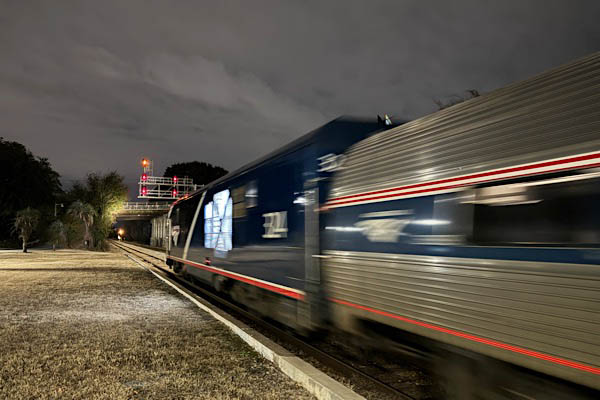


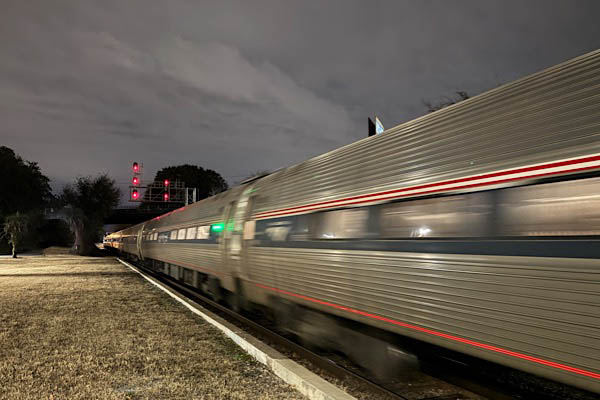
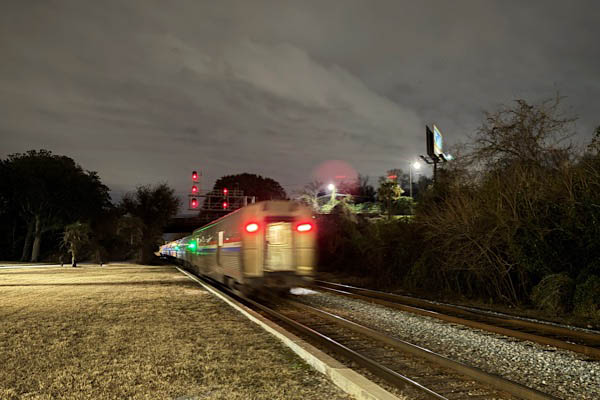
North Charleston, SC / Jan 2024 / RWH
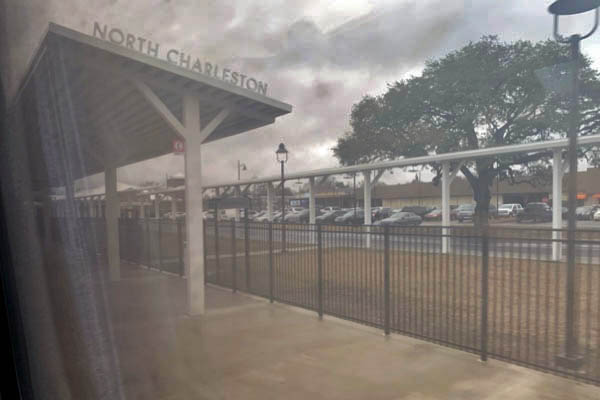

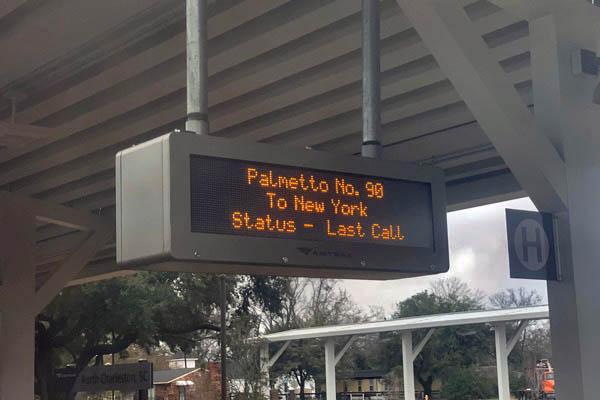
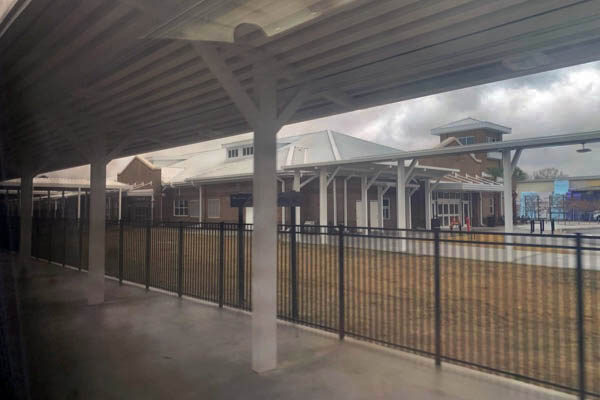
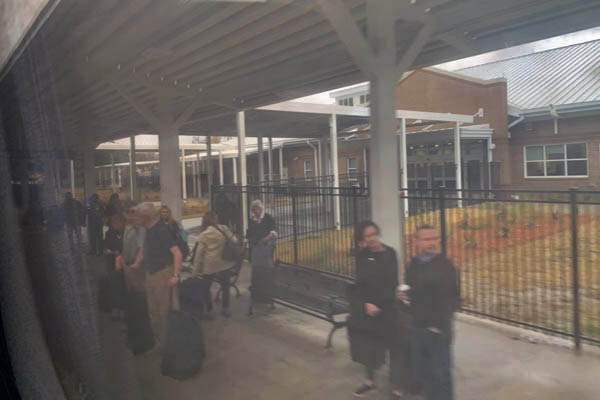
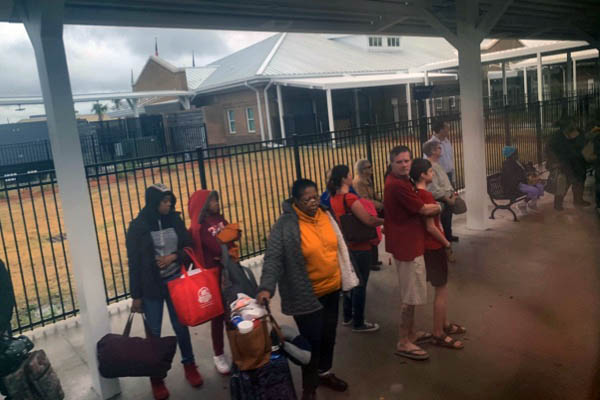
North Charleston, SC / Dec 2019 / RWH
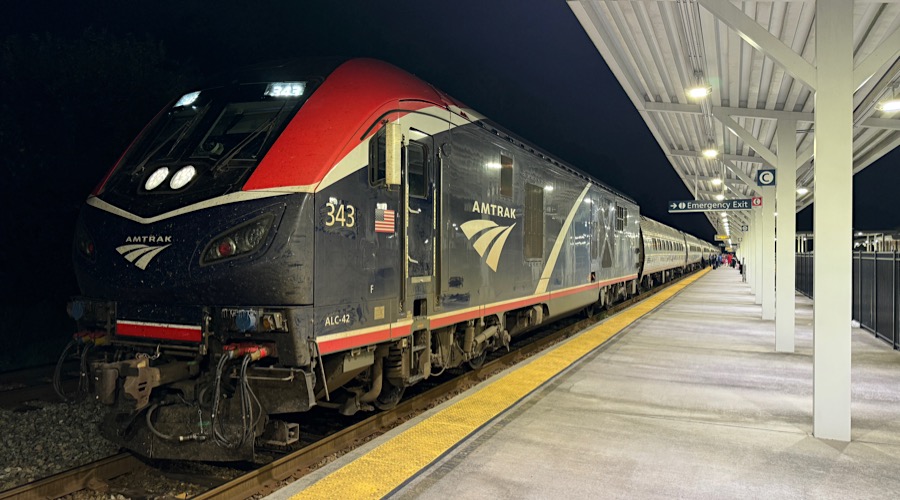
North Charleston, SC / Aug 2024 / RWH
Amtrak #343
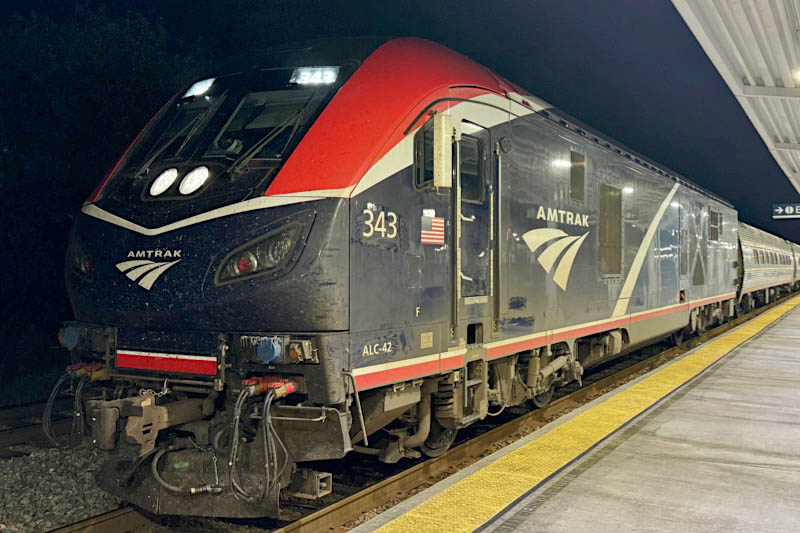
Amtrak #343
North Charleston, SC / Aug 2024 / RWH


Amtrak #343
1 of 125 in Amtrak order


North Charleston, SC / Aug 2024 / RWH
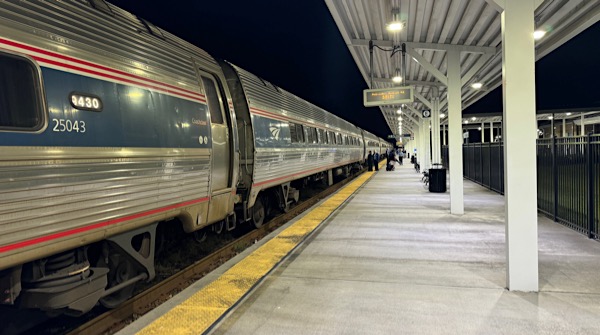
North Charleston, SC / Aug 2024 / RWH
 Yemassee, SC
Yemassee, SC
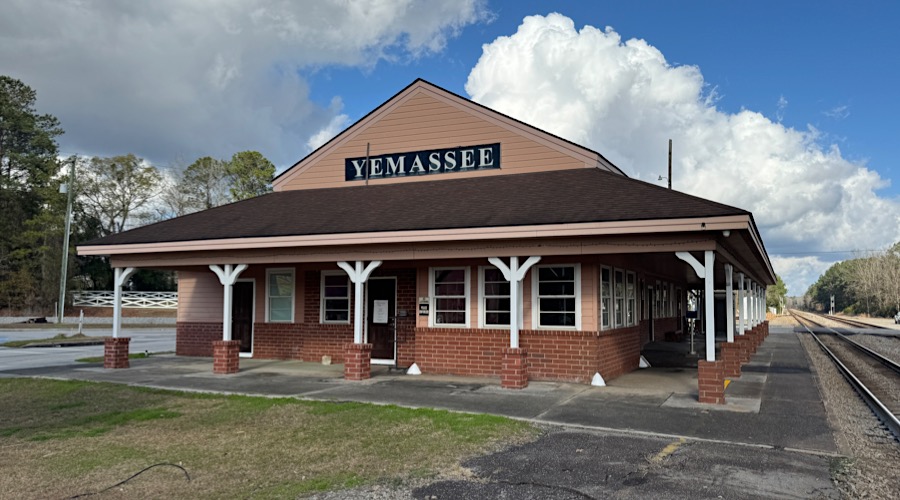
Yemassee, SC / Jan 2024 / RWH

Click to see the Yemassee depot plotted on a Google Maps page
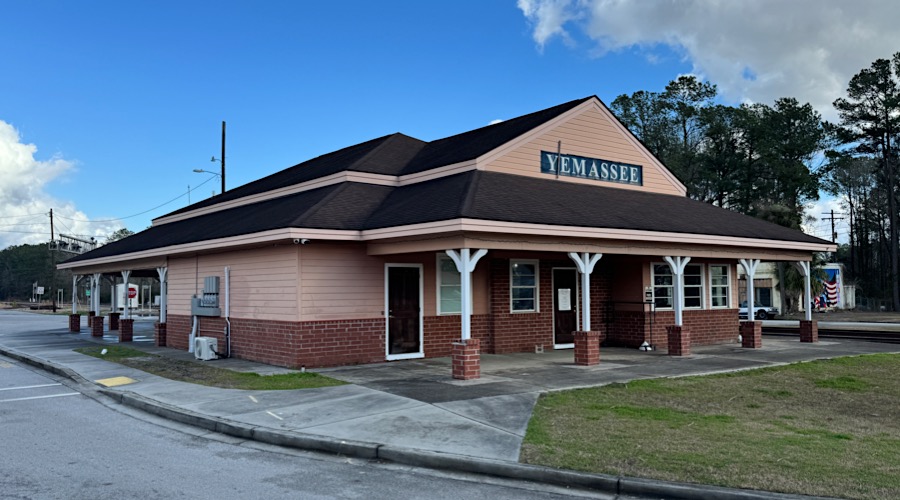
Yemassee, SC / Jan 2024 / RWH

Jan 2024 / RWH
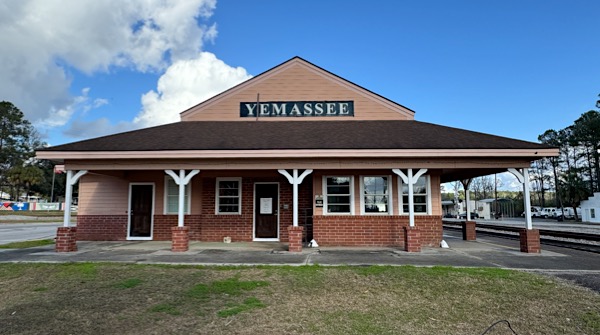
Yemassee, SC / Jan 2024 / RWH
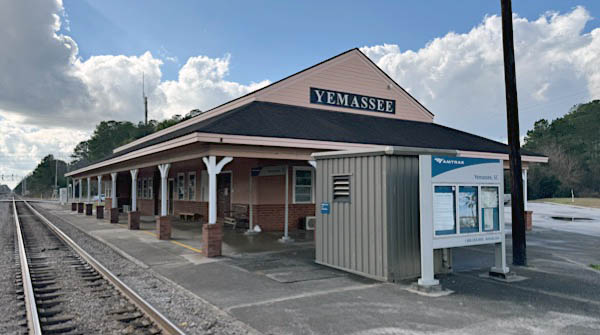
Yemassee, SC / Jan 2024 / RWH

Yemassee, SC / Jan 2024 / RWH

 he Yemassee station consists of a platform with a sheltered area adjacent to the old Charleston & Western Carolina Railroad depot built in 1955. The city purchased the building from CSX and completed the transfer of ownership on September 17, 2010. Community members gathered at the depot on that occasion to celebrate as a representative from CSX presented the deed to Mayor J.L. Goodwin. The town also purchased approximately 0.64 acres of adjoining land.
he Yemassee station consists of a platform with a sheltered area adjacent to the old Charleston & Western Carolina Railroad depot built in 1955. The city purchased the building from CSX and completed the transfer of ownership on September 17, 2010. Community members gathered at the depot on that occasion to celebrate as a representative from CSX presented the deed to Mayor J.L. Goodwin. The town also purchased approximately 0.64 acres of adjoining land.
The Yemassee Revitalization Corporation, a nonprofit organization formed in 2008, planned to revitalize downtown to stimulate the local economy. The group wanted to restore the depot and worked to find funding for the renovation project. In 2011, a British reality show filmed in Yemassee, which resulted in a full cosmetic renovation of the depot’s exterior to include a new gabled roof, siding and a wrap-around porch. In summer 2016 the town received funds that will allow interior improvements to proceed. Work will include installation of a new electrical system and renovation of the restrooms.
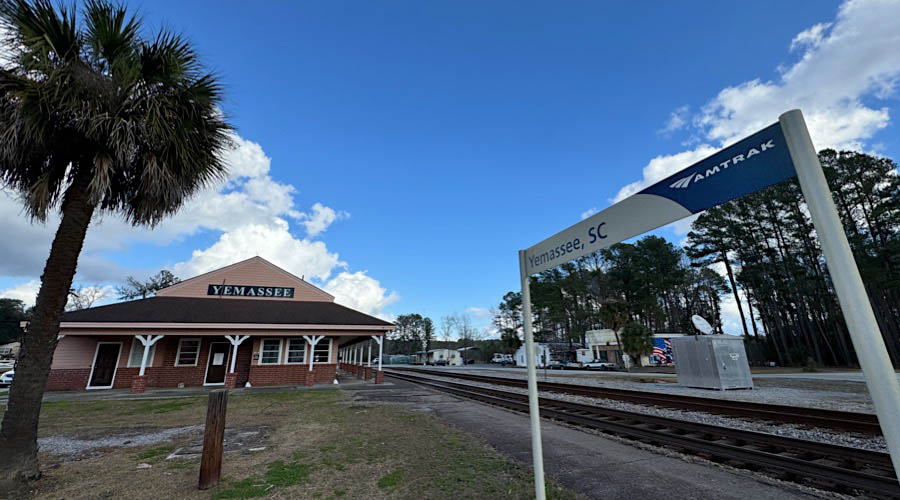
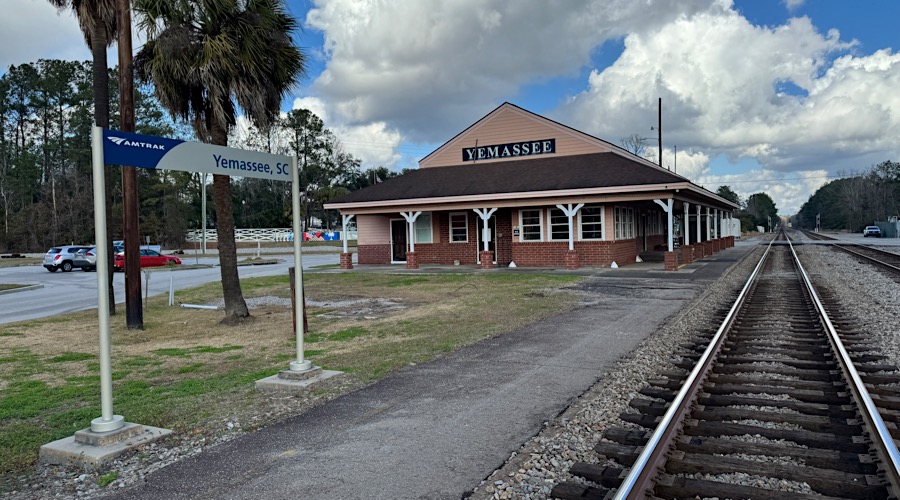
Yemassee, SC / Jan 2024 / RWH
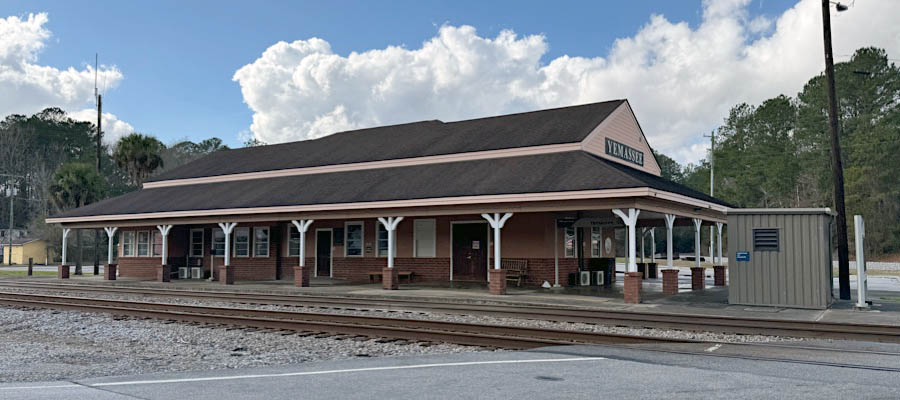
Yemassee, SC / Jan 2024 / RWH
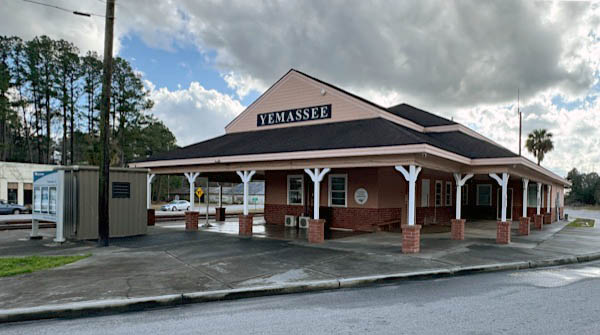
Yemassee, SC / Jan 2024 / RWH
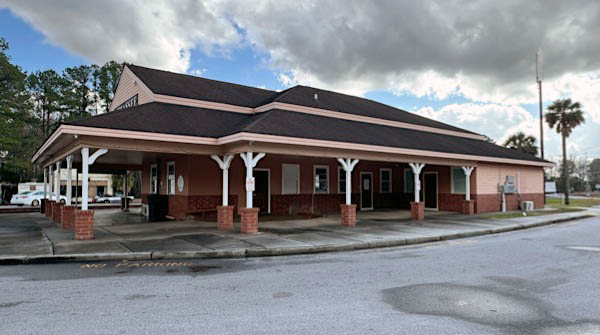
Yemassee, SC / Jan 2024 / RWH

Yemassee, SC / Jan 2024 / RWH
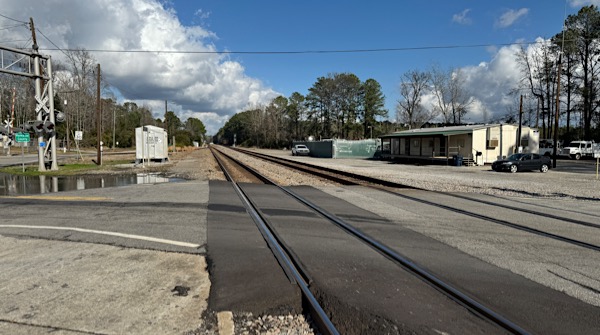
Yemassee, SC / Jan 2024 / RWH
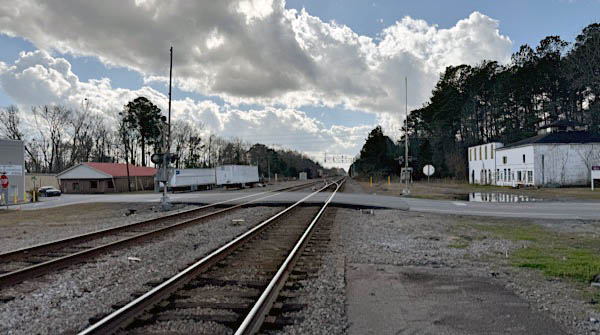
Yemassee, SC / Jan 2024 / RWH
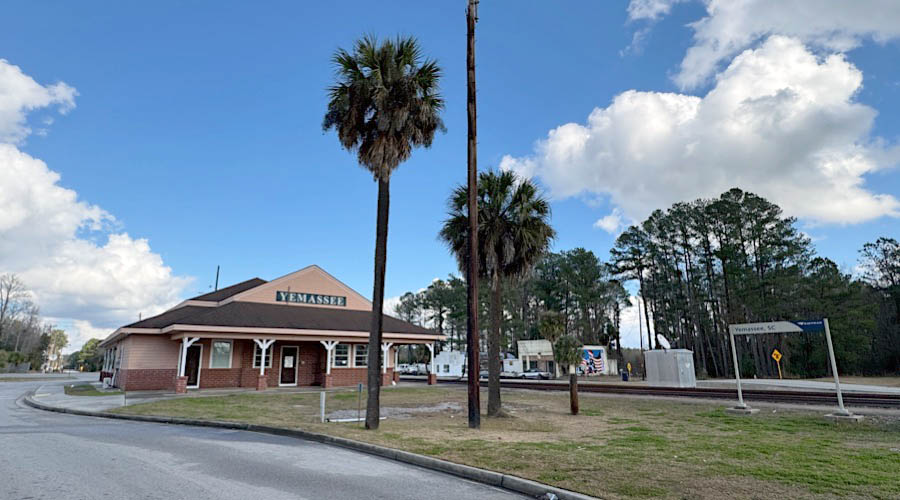
Yemassee, SC / Jan 2024 / RWH
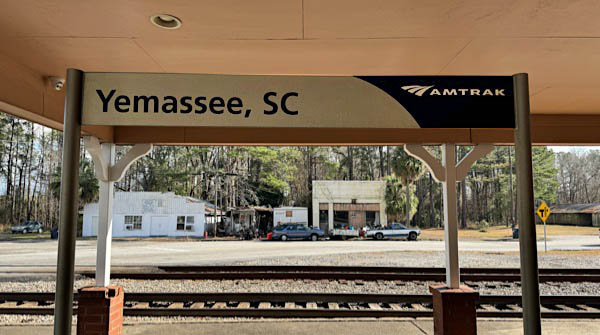
Jan 2024 / RWH
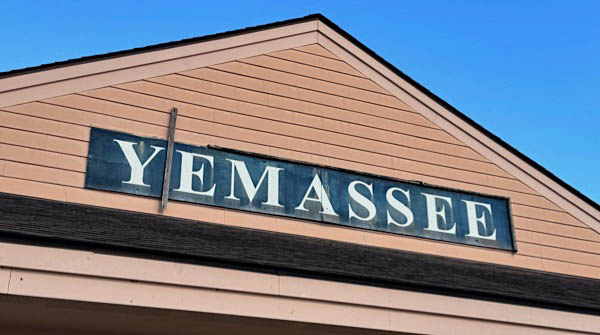
Jan 2024 / RWH
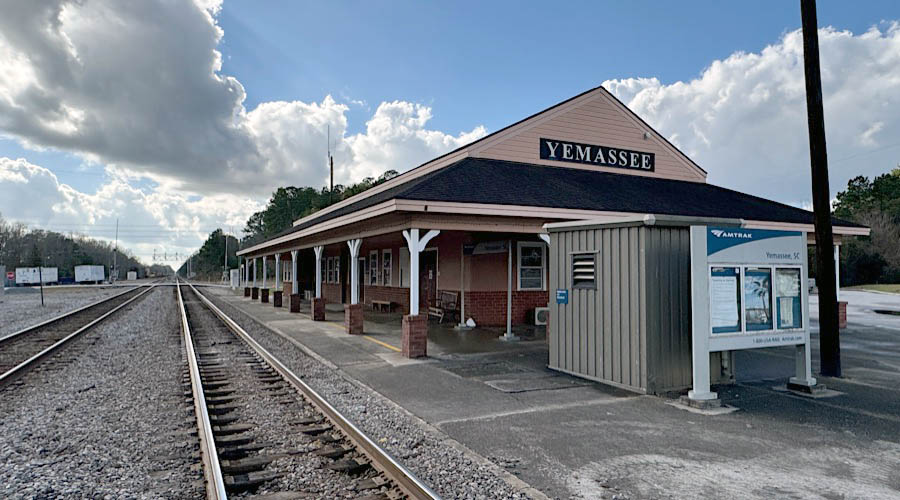
Yemassee, SC / Jan 2024 / RWH

Jan 2024 / RWH
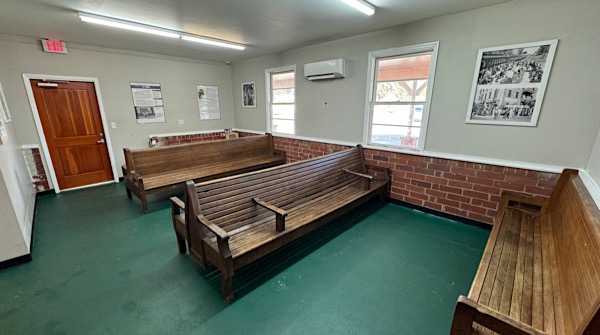
Jan 2024 / RWH
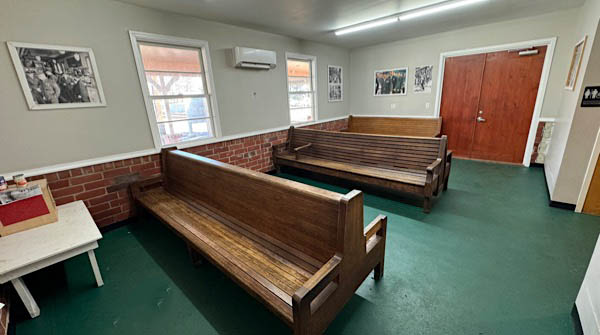
Jan 2024 / RWH
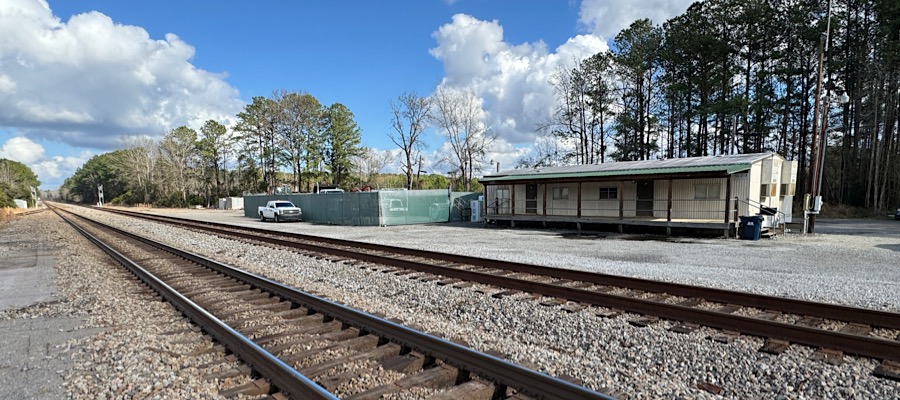
Yemassee, SC / Jan 2024 / RWH

Yemassee, SC / Jan 2024 / RWH
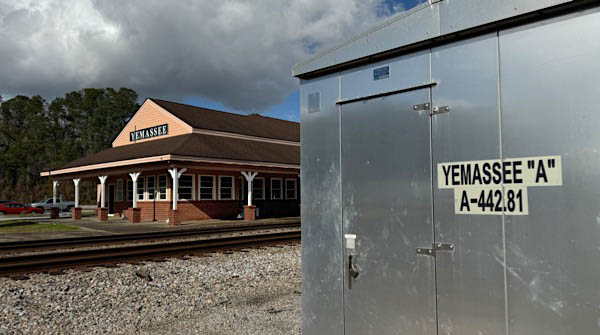
Yemassee, SC / Jan 2024 / RWH


 he Town of Yemassee is a small town rich in local history. In the late seventeenth century, when Englishman began to settle coastal Carolina, a number of tribes, mostly of Muskogean stock, inhabited the area. Of those tribes, the Yamasee Indians were the most extensive and powerful. Its territory stretched along the coast from southern Georgia to the Edisto region.
he Town of Yemassee is a small town rich in local history. In the late seventeenth century, when Englishman began to settle coastal Carolina, a number of tribes, mostly of Muskogean stock, inhabited the area. Of those tribes, the Yamasee Indians were the most extensive and powerful. Its territory stretched along the coast from southern Georgia to the Edisto region.
The Yamasee's two major centers of power lay between the Savannah and Combahee Rivers at Pocataligo and Coosawhatchie. Towards the end of the War between the States, Sherman's army came through the area on his infamous march to the sea from Atlanta, Georgia. All of the churches in the area were destroyed, except for the Presbyterian Church, which was used as a hospital by the union army. Blood stains on the floor are visible on the still standing church.
After that war, the Port Royal-Augusta Railroad was constructed. At that time, the railroad hamlet of Yemassee was formed from the lands of Richfield Plantation and portions of the Cuthbert lands. In 1868, a post office was established. The house where Somerest Maughn wrote the Razor's Edges is located in that area. There is also a house designed by Frank Lloyd Wright, the famous architect. The house is unique in its design as having no right angles. The house is located on Auld Brass Plantation and has been refurbished.
The town is located in the southeastern section of the county. Major highways passing through the town include Interstate 95 and Highway 68.
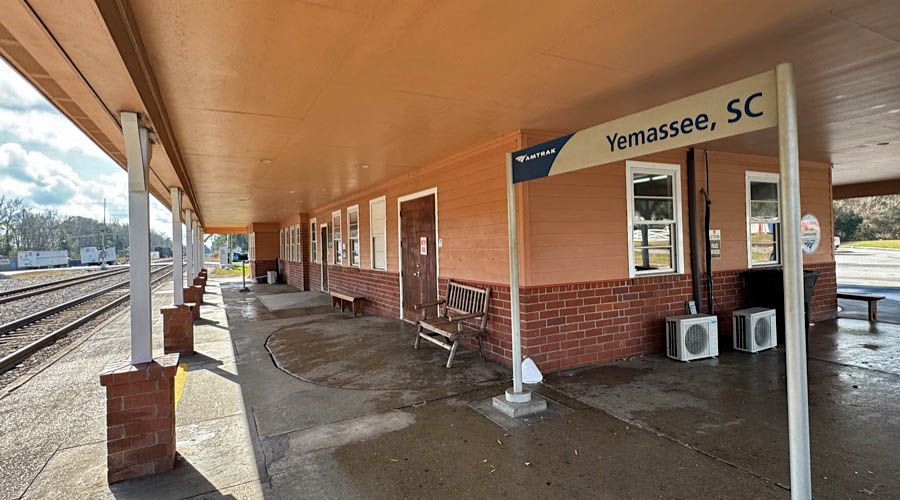
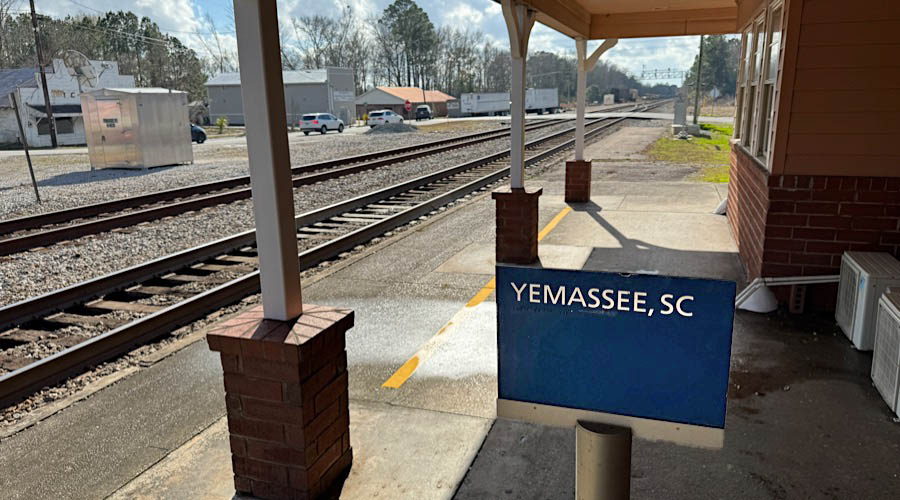
Yemassee, SC / Jan 2024 / RWH
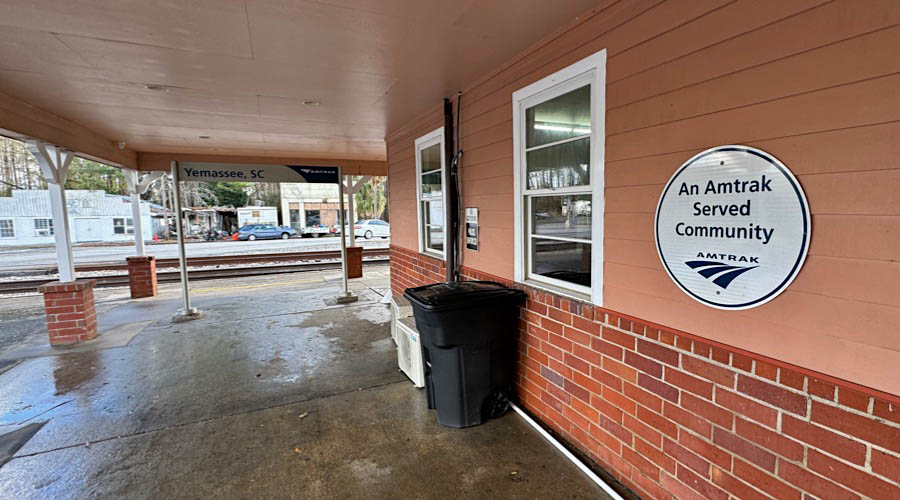
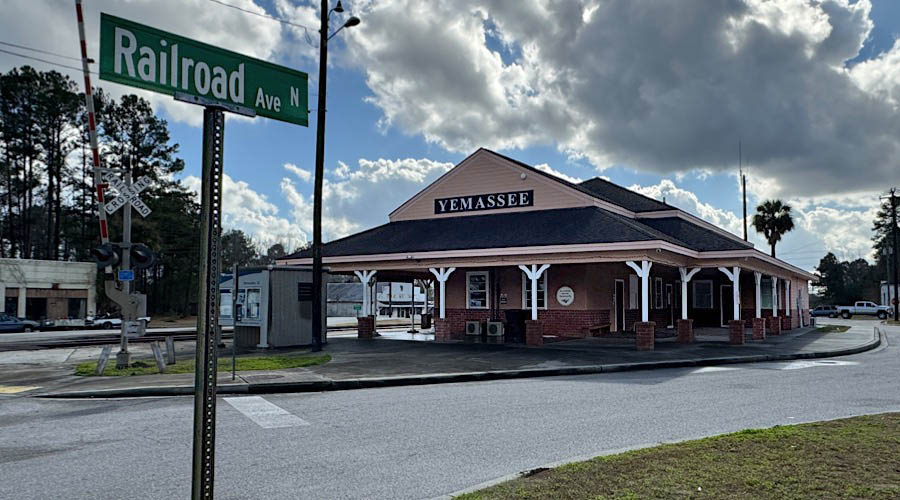
Yemassee, SC / Jan 2024 / RWH
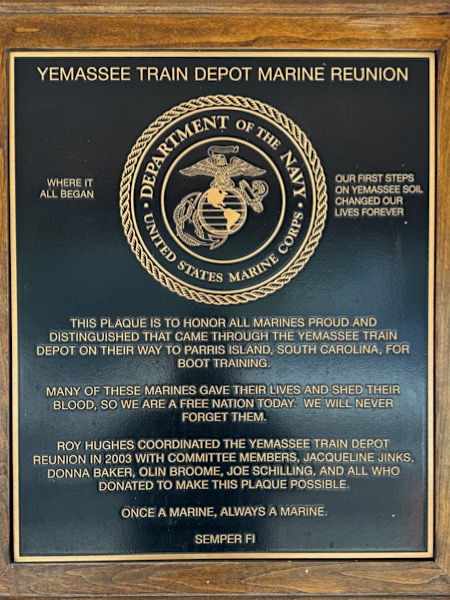
Jan 2024 / RWH
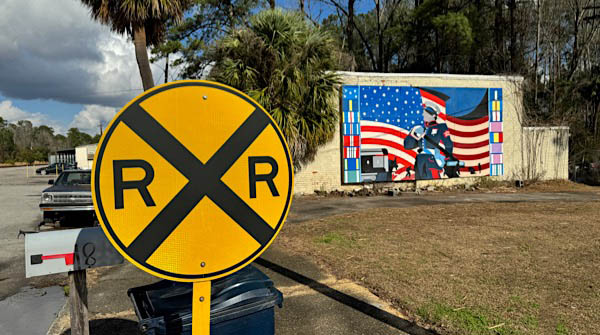
Yemassee, SC / Jan 2024 / RWH

Jan 2024 / RWH

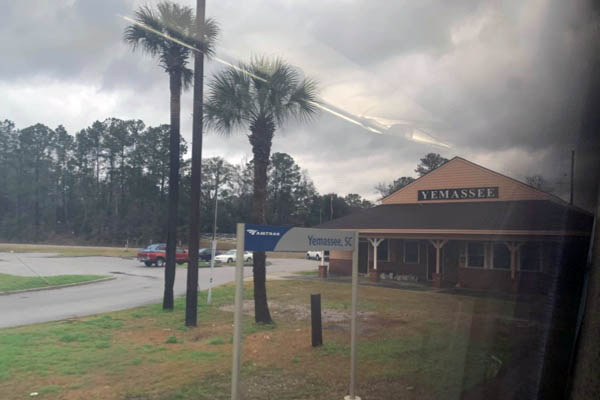

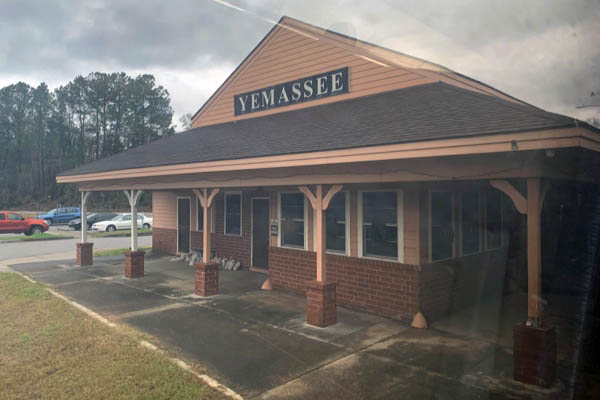
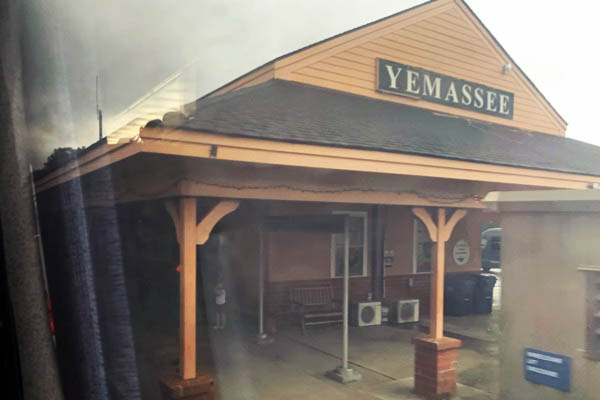
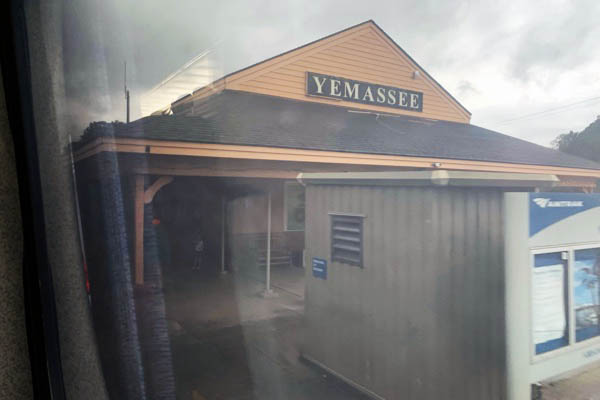
Yemassee, SC / Dec 2019 / RWH
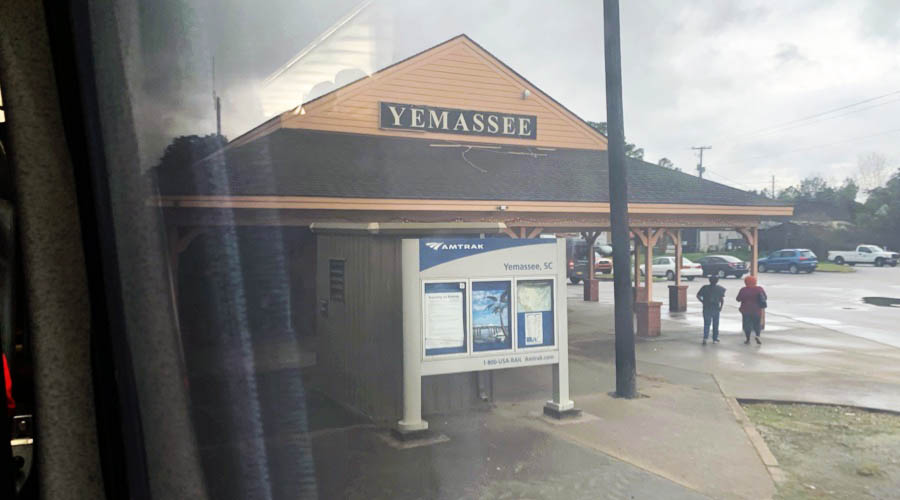
Yemassee, SC / Dec 2019 / RWH
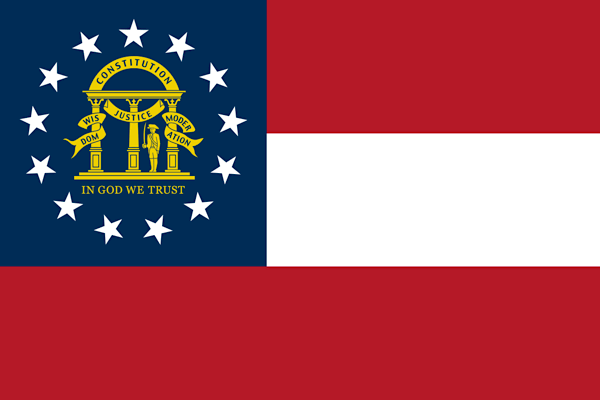 Georgia
Georgia
 Savannah, Ga
Savannah, Ga

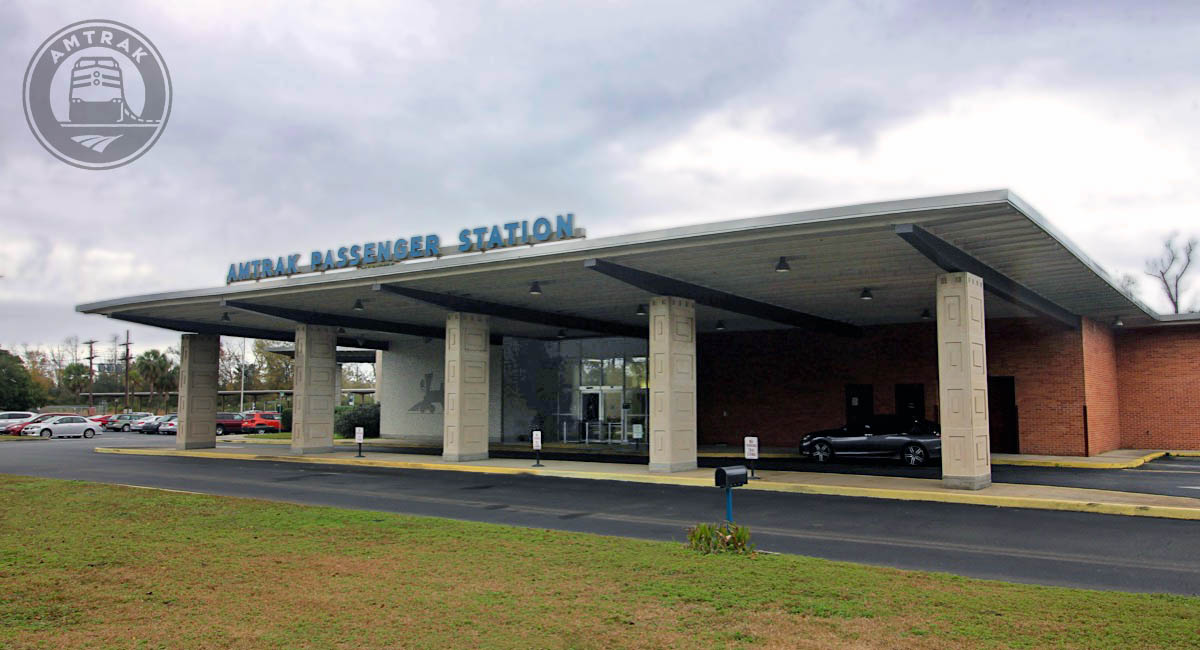
Savannah, Ga / Dec 2019 / RWH

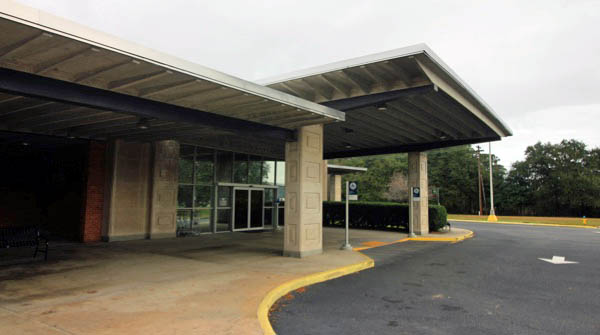
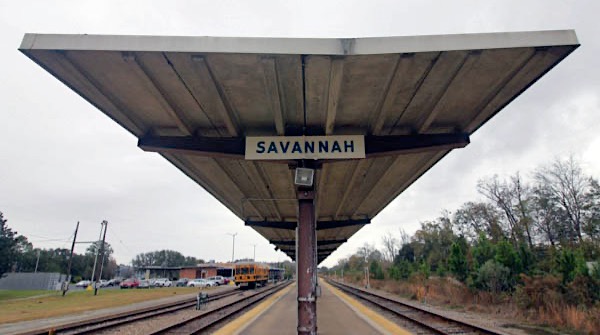

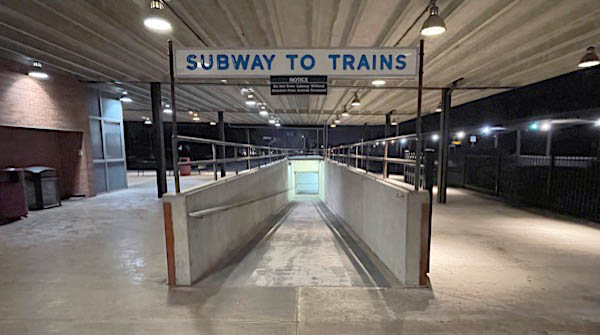
RWH

See our complete Savannah Station scrapbook in Amtrak Great Stations
#90 departure

Savannah, Ga / Dec 2019 / RWH
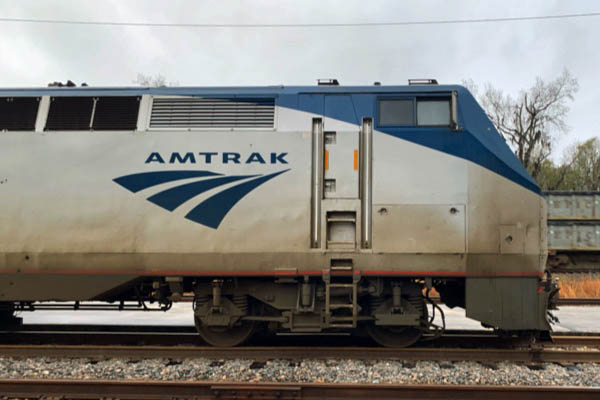
Savannah, Ga / Dec 2019 / RWH
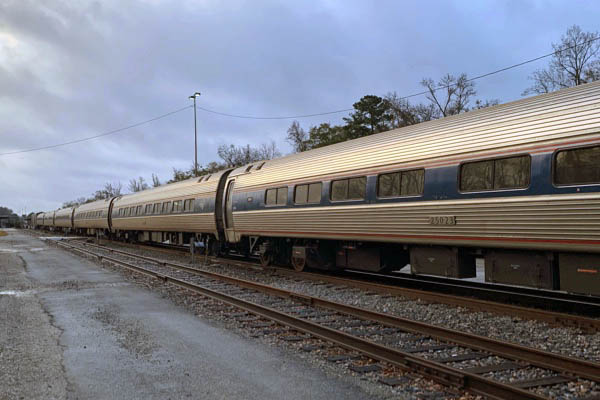
Savannah, Ga / Dec 2019 / RWH
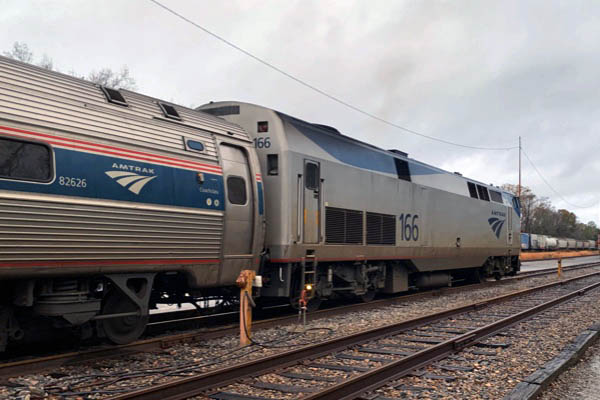
Savannah, Ga / Dec 2019 / RWH
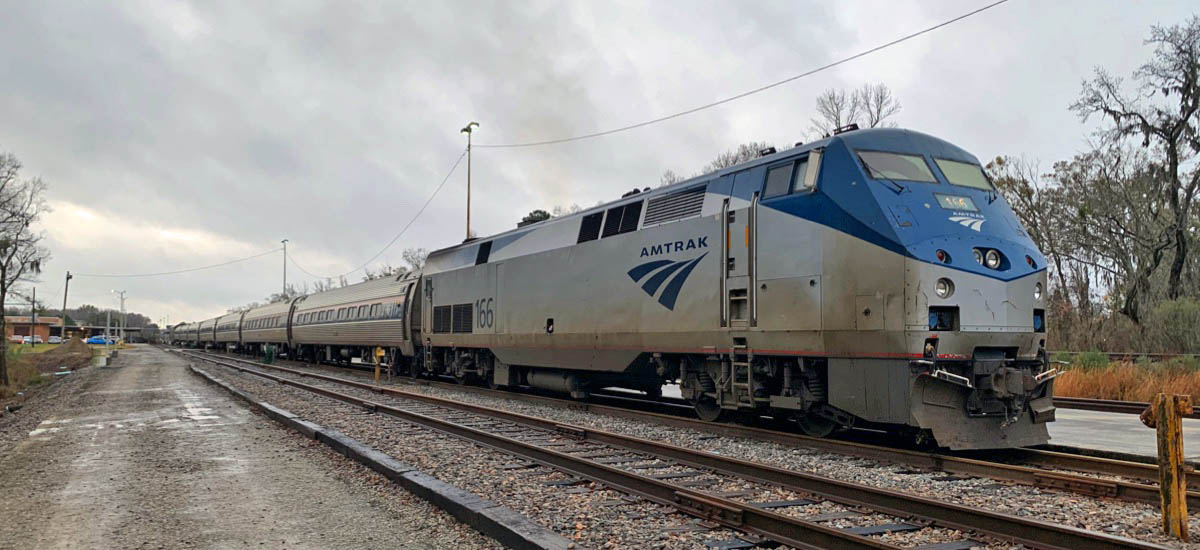
Savannah, Ga / Dec 2019 / RWH
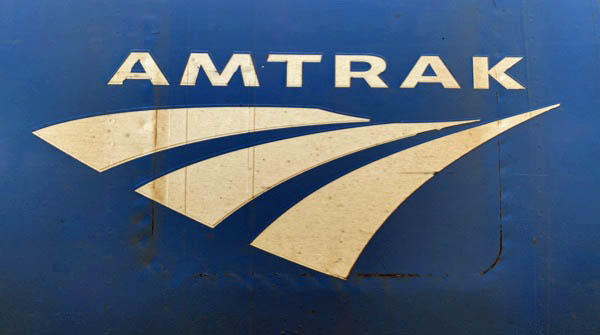

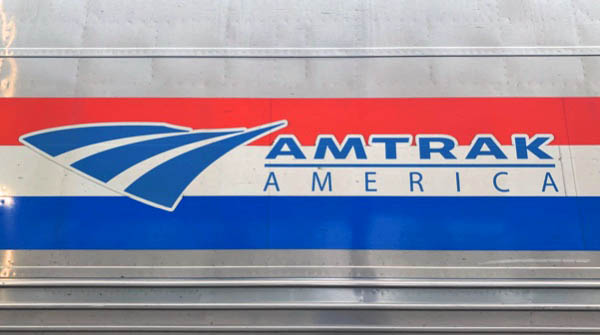

Dec 2019 / RWH
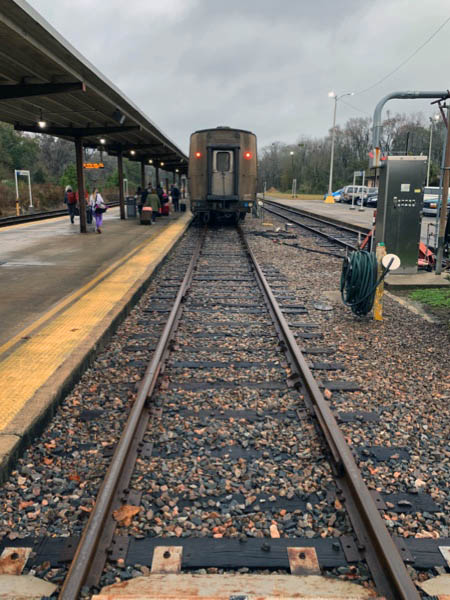
Dec 2019 / RWH
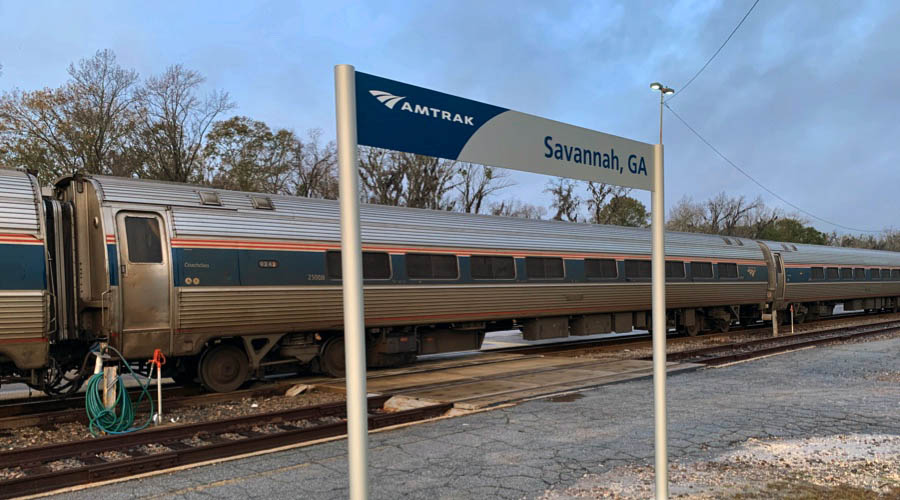
Savannah, Ga / Dec 2019 / RWH
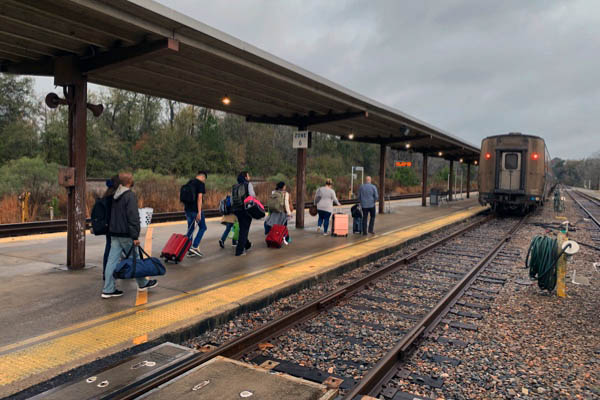
Savannah, Ga / Dec 2019 / RWH
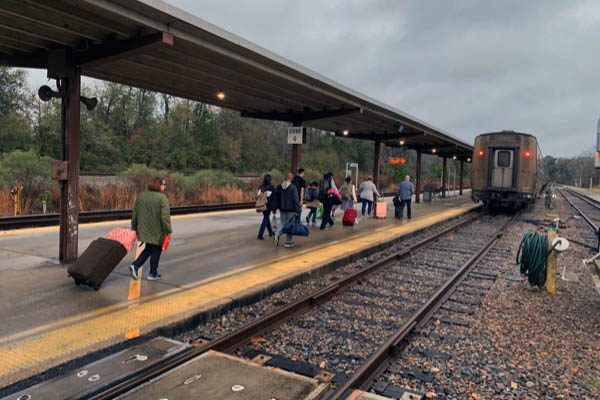
Savannah, Ga / Dec 2019 / RWH

Savannah, Ga / Dec 2019 / RWH
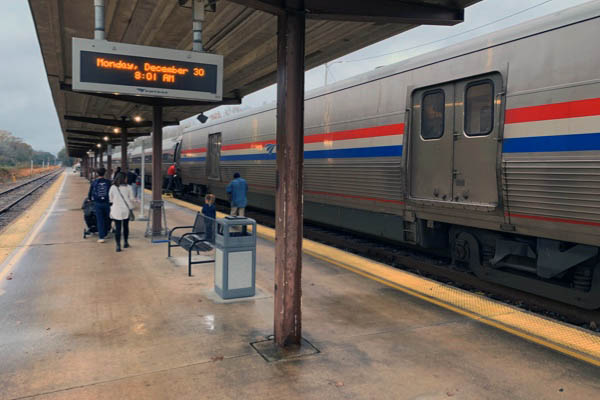
Savannah, Ga / Dec 2019 / RWH
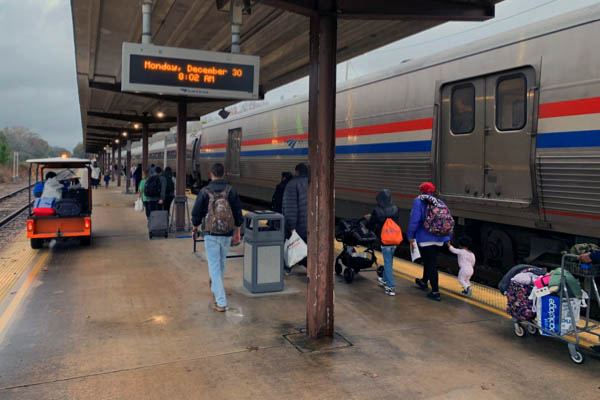
Savannah, Ga / Dec 2019 / RWH

Savannah, Ga / Dec 2019 / RWH
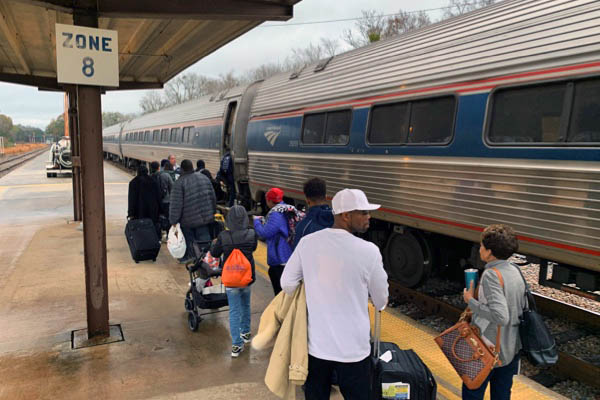
Savannah, Ga / Dec 2019 / RWH
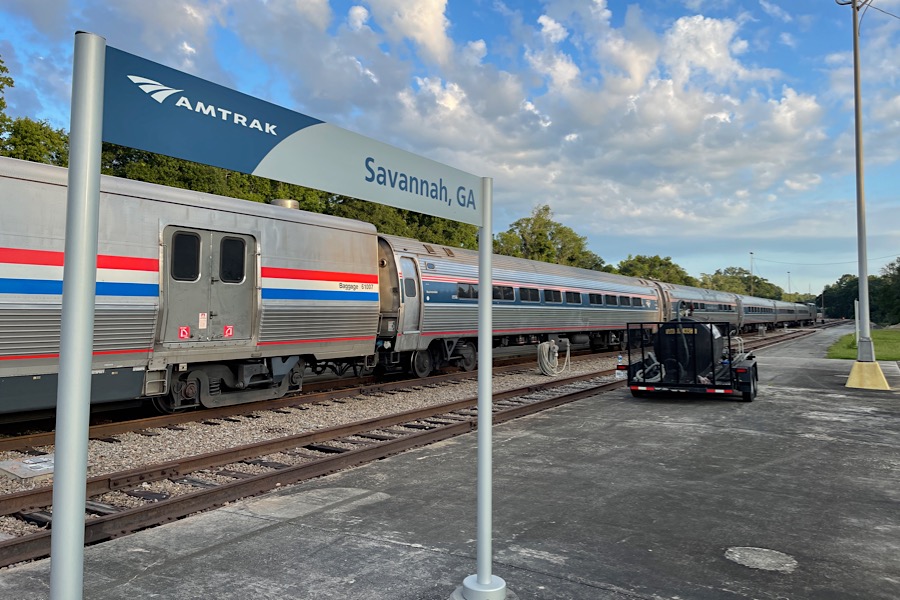
Savannah, Ga / Jul 2022 / RWH

Savannah, Ga / Jul 2022 / RWH
#89 arrival
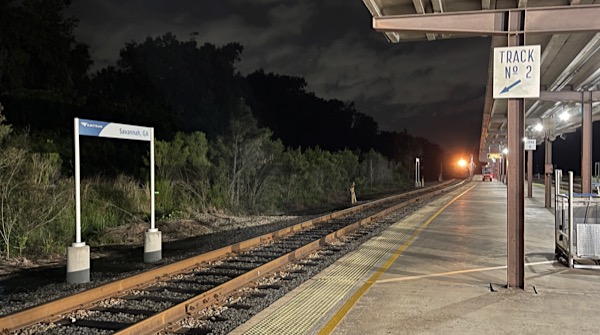
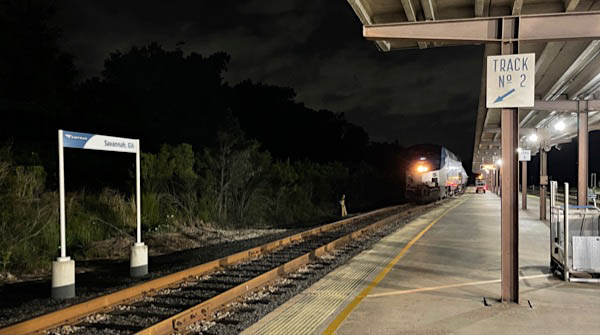
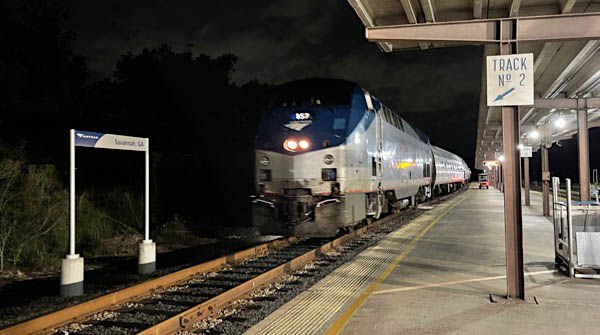
Savannah, Ga / Jul 2022 / RWH
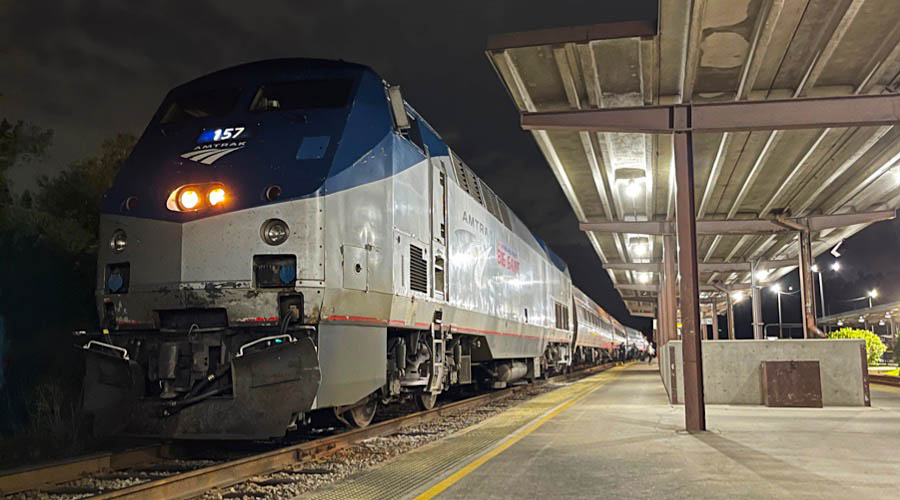
Savannah, Ga / Jul 2022 / RWH
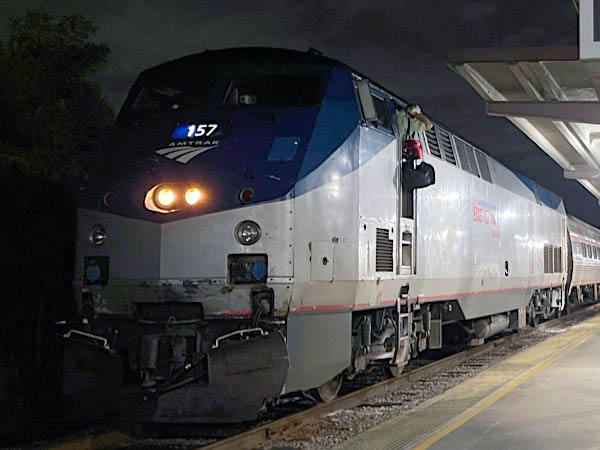

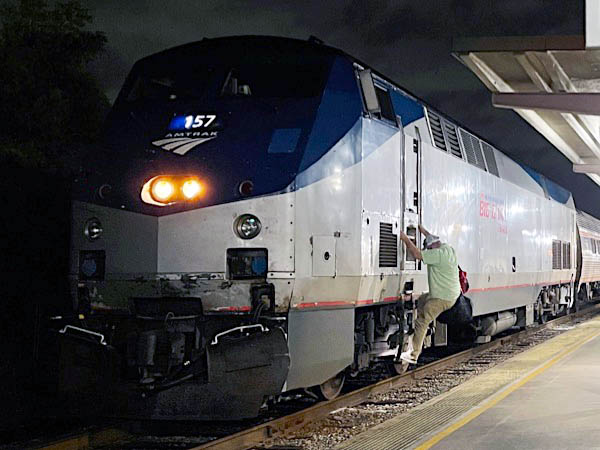
Savannah, Ga / Jul 2022 / RWH
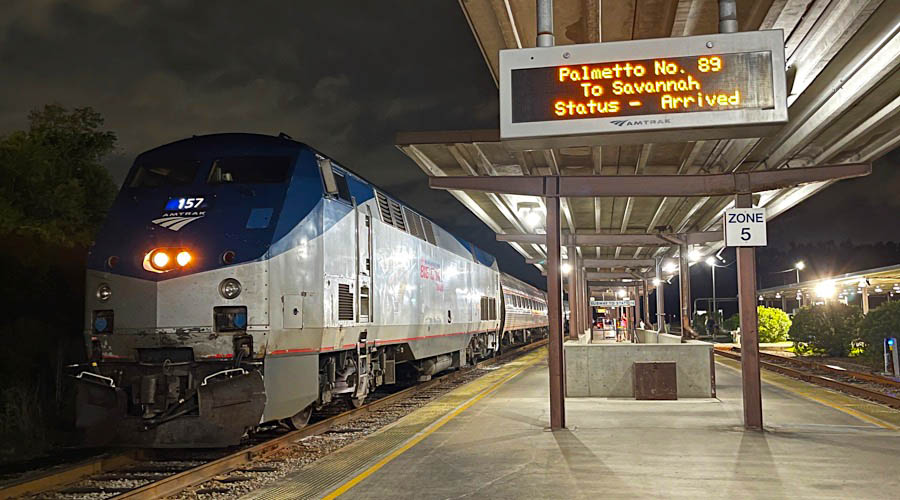
Savannah, Ga / Jul 2022 / RWH
Lagniappe





Savannah River Morning
Port Wentworth, Ga / Feb 2022 / RWH

Amtrak News / Sep 1977 / web
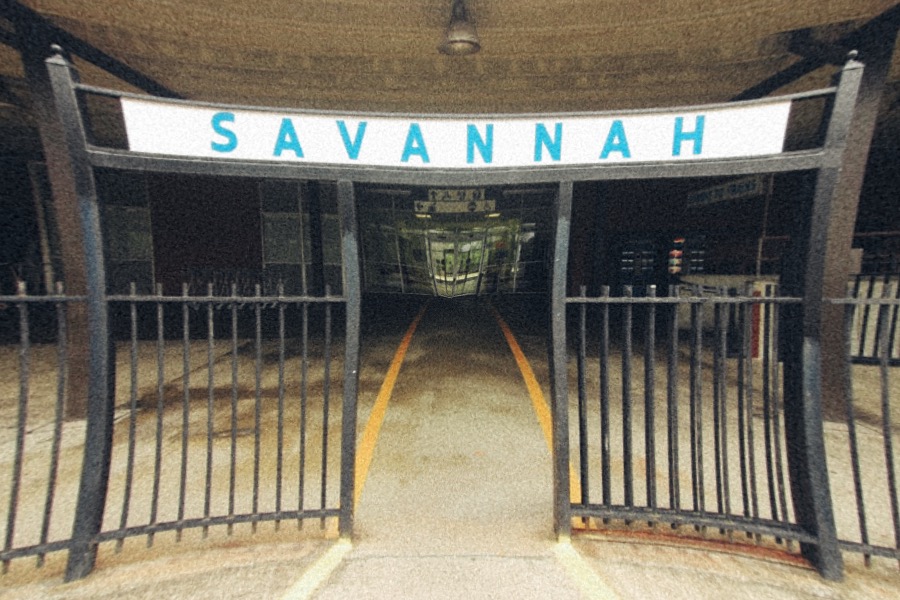
Open Now Thy Gates
Savannah, Ga / Dec 2019 / RWH

Florence in Focus
Florence, SC / Dec 2019 / RWH
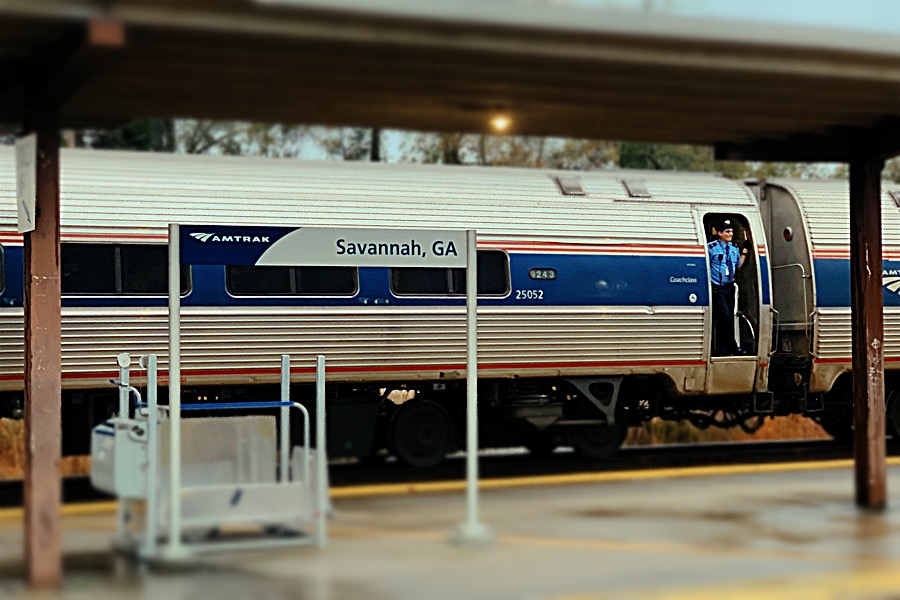
Just Passing Through
Savannah, Ga / Dec 2019 / RWH

The River James
Richmond, Va / Dec 2019 / RWH

Wizard of Freight Car
Richmond, Va / Dec 2019 / RWH
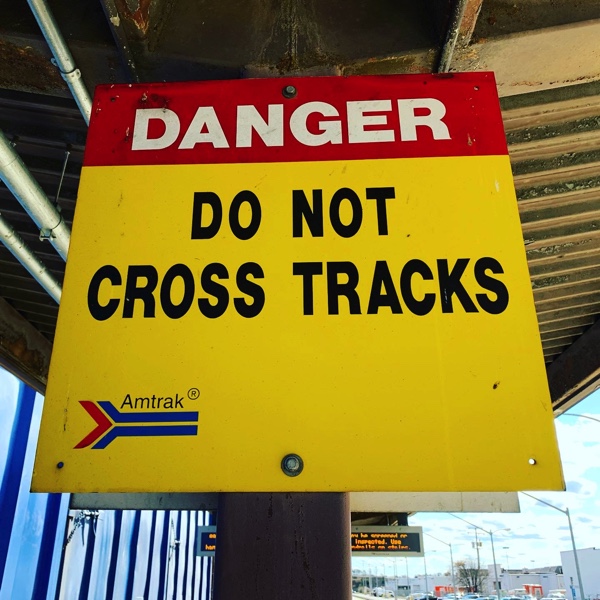
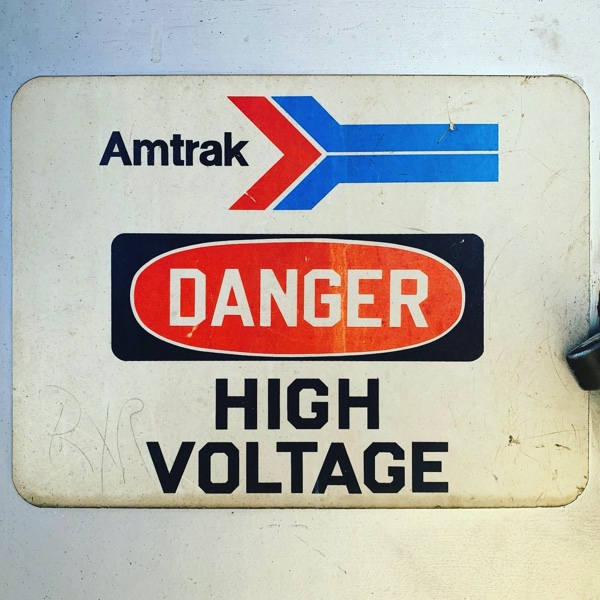
Be Not Afraid
Richmond, Va / Dec 2019 / RWH
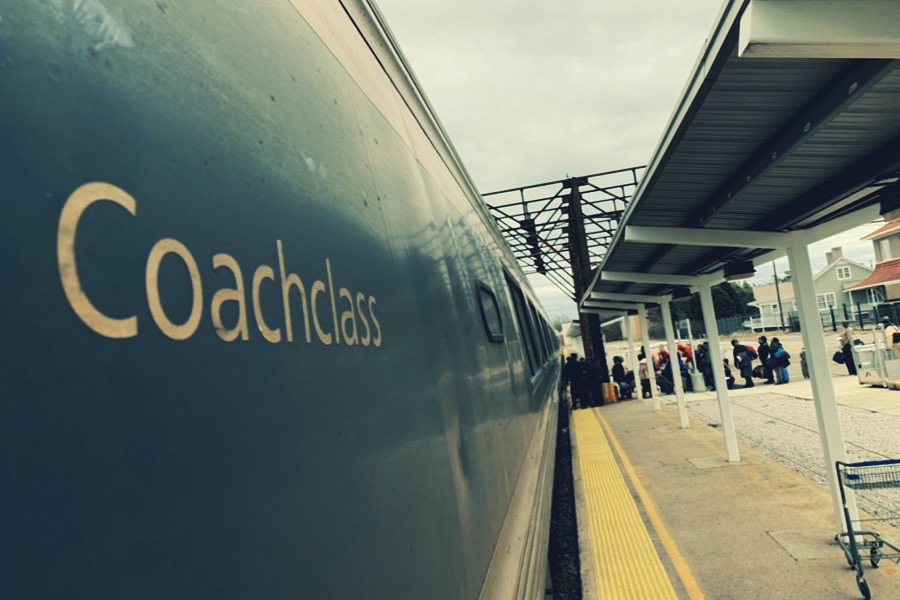
Coachclass
Richmond, Va / Dec 2019 / RWH
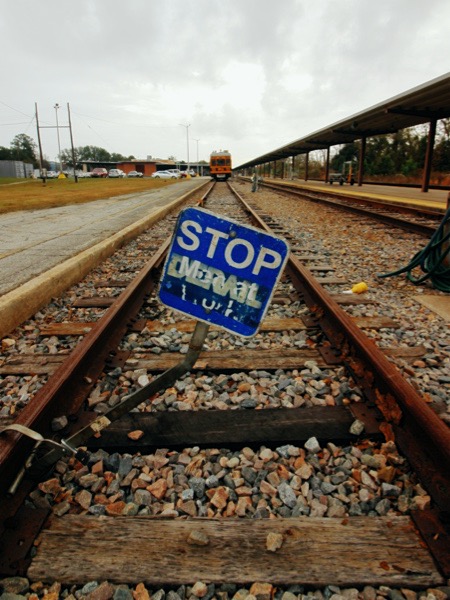
Blue Plate Special
Savannah, Ga / Dec 2019 / RWH
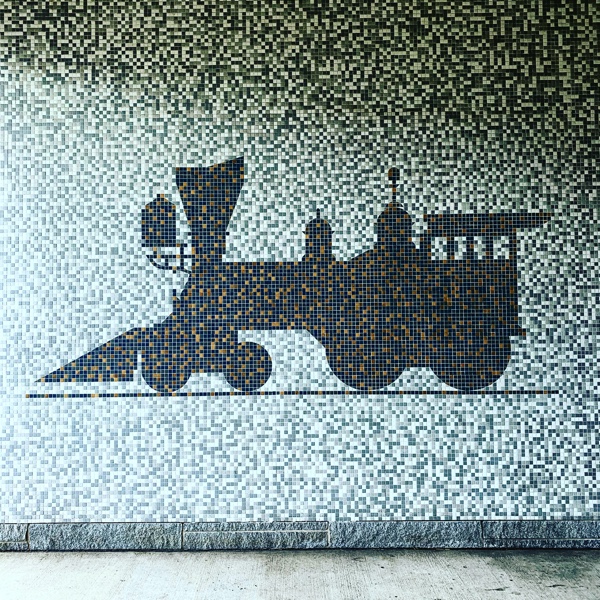
Mosaic Machine
Savannah, Ga / Dec 2019 / RWH
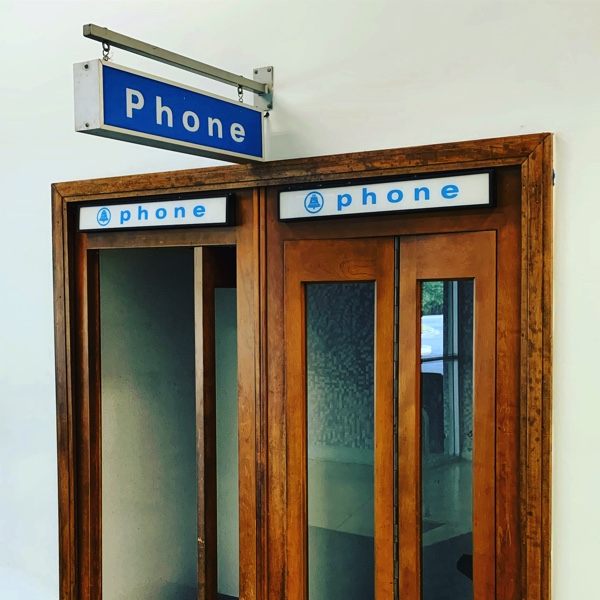
Clark's Closet
Savannah, Ga / Dec 2019 / RWH

Tybee
Tybee Island, Ga / Dec 2019 / RWH

Dialogues
Florence, SC / Dec 2019 / RWH

Carriage
Dec 2019 / RWH

Northeast Regional
Dec 2019 / RWH
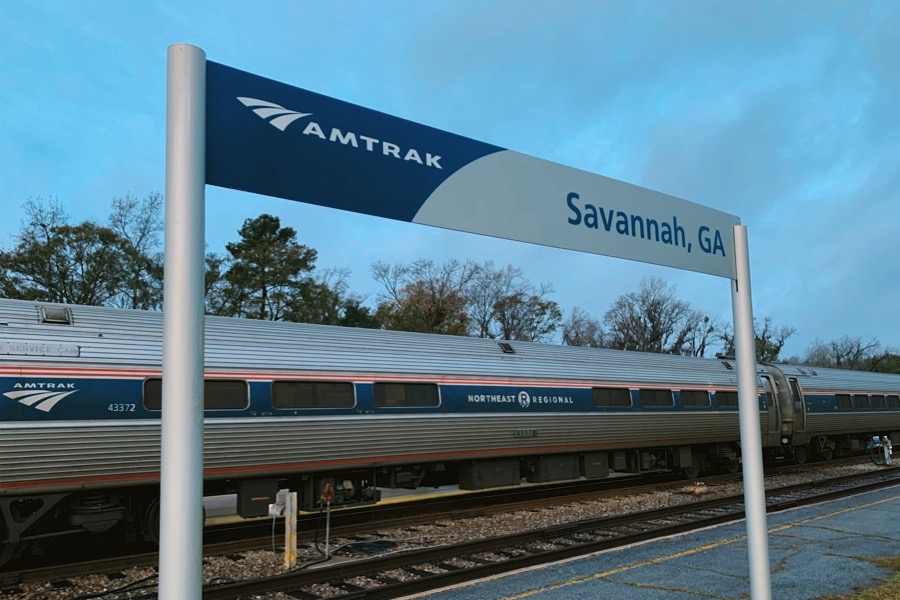
A Poised Palmetto
Savannah, Ga / Dec 2019 / RWH
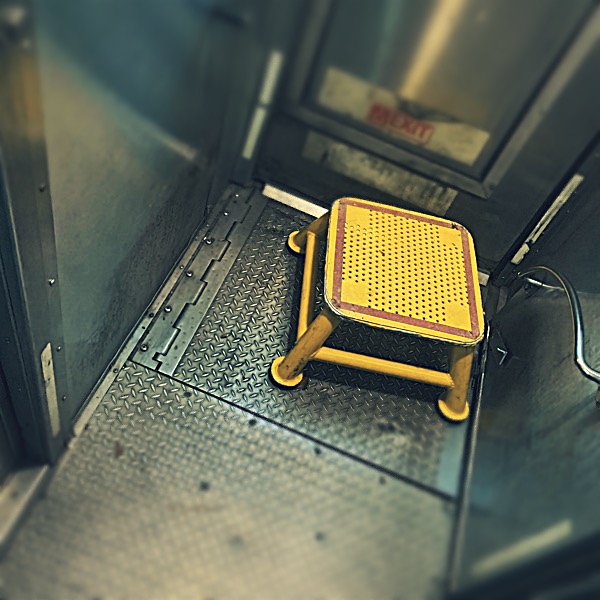
Support System
Dec 2019 / RWH
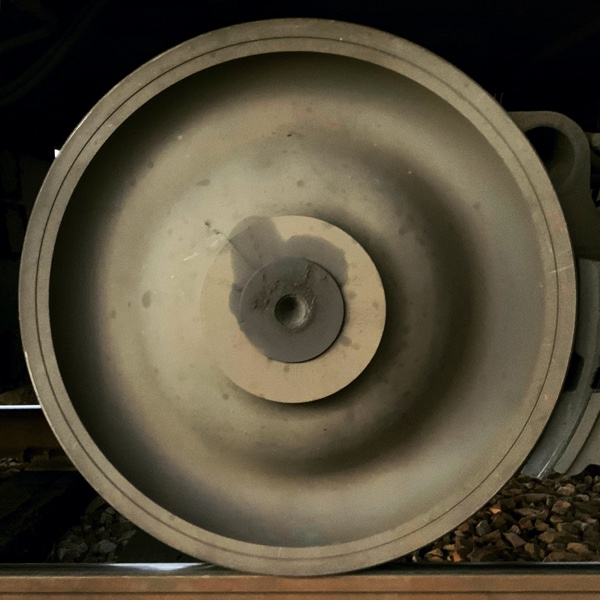
Reinventing the
Dec 2019 / RWH

Destinations Fixed
Dec 2019 / RWH
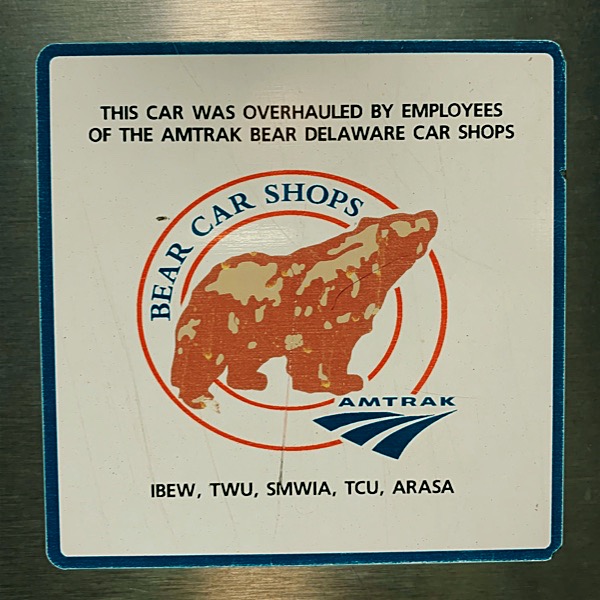
A Bear of a Car
Dec 2019 / RWH
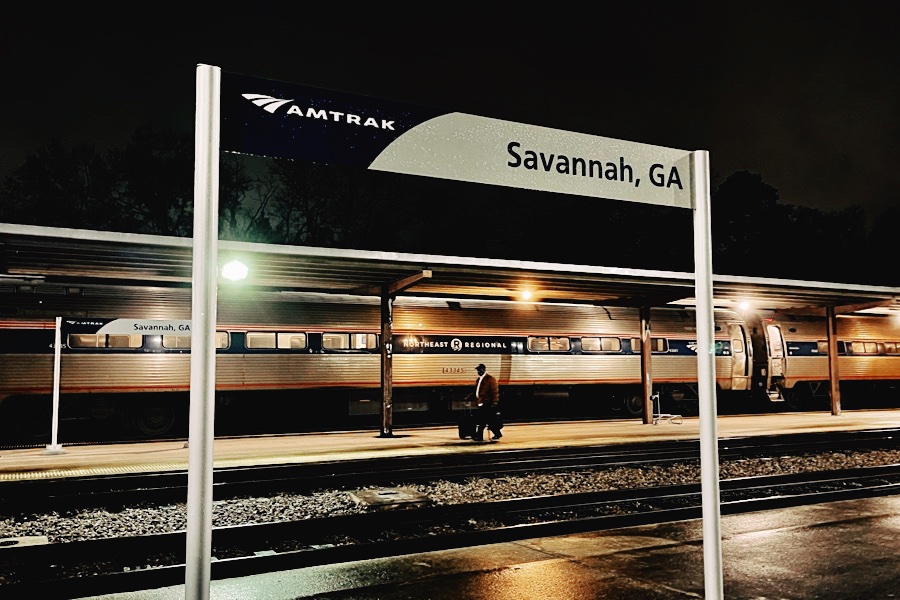
The Lone Man
Savannah, Ga / Feb 2022 / RWH




Passages and Portals
Dec 2019 / RWH
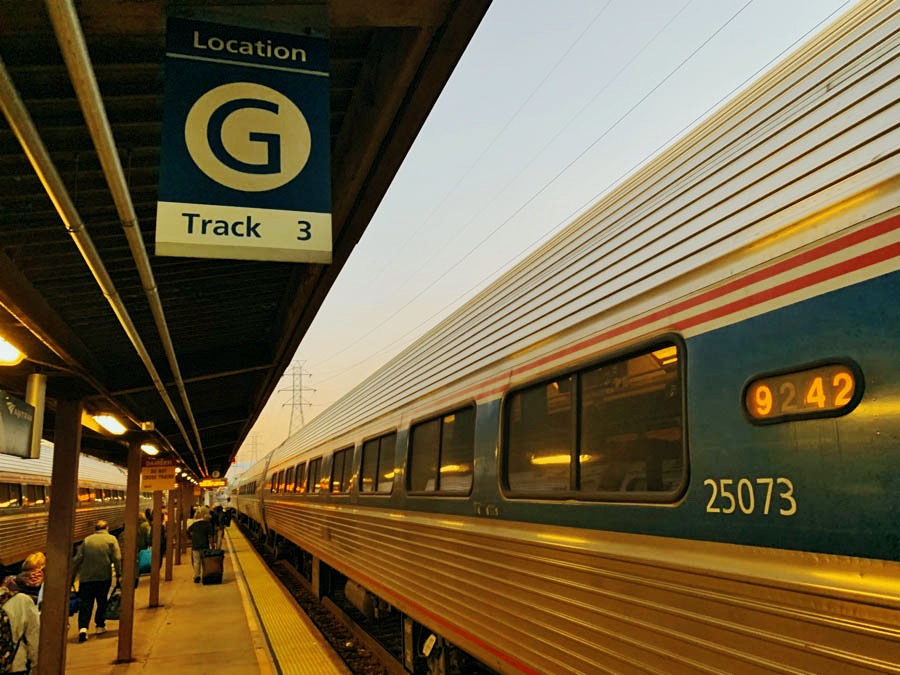
Location G
Richmond, Va / Dec 2019 / RWH

Chief of the Watch
Dec 2019 / RWH

Northeast Corridor
Feb 2022 / RWH

Gunpowder River Glory
Magnolia, Md / Jul 2022 / RWH
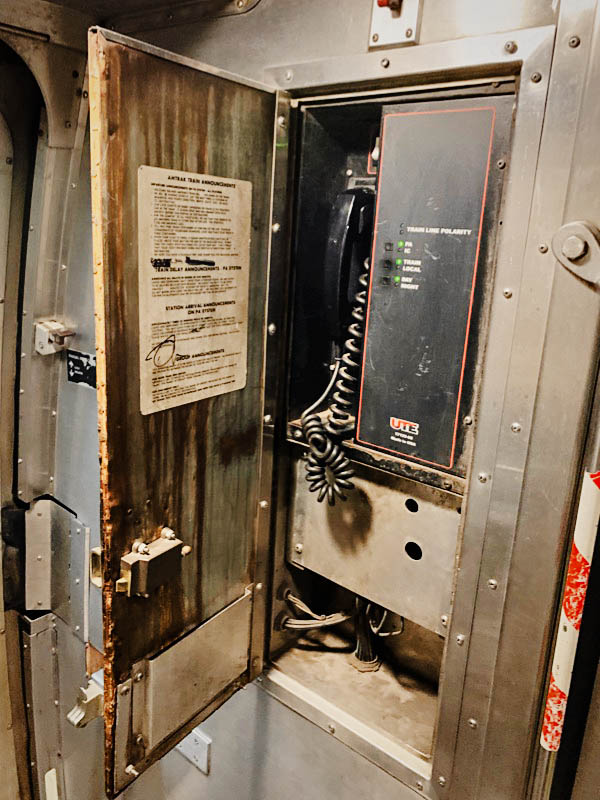
Sing in me, o Muse
Dec 2019 / RWH
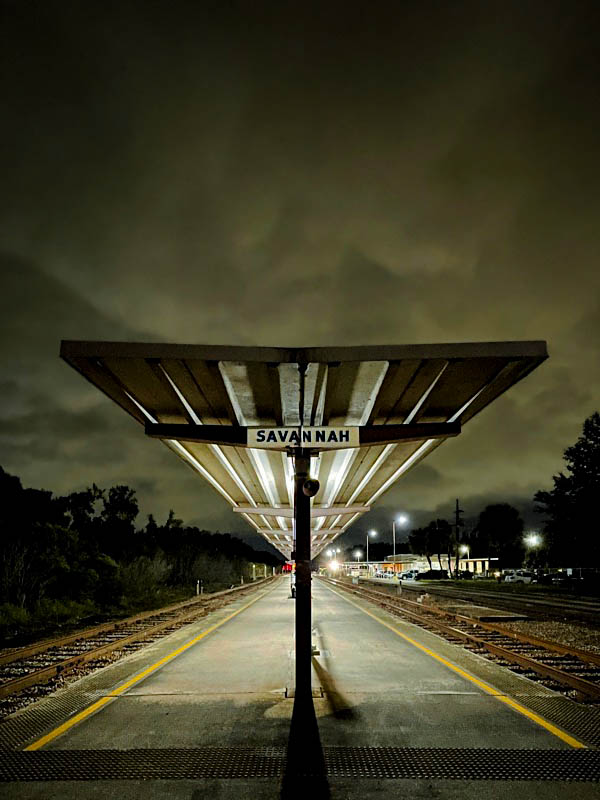
Midnight on the Island
Savannah, Ga / Jul 2022 / RWH
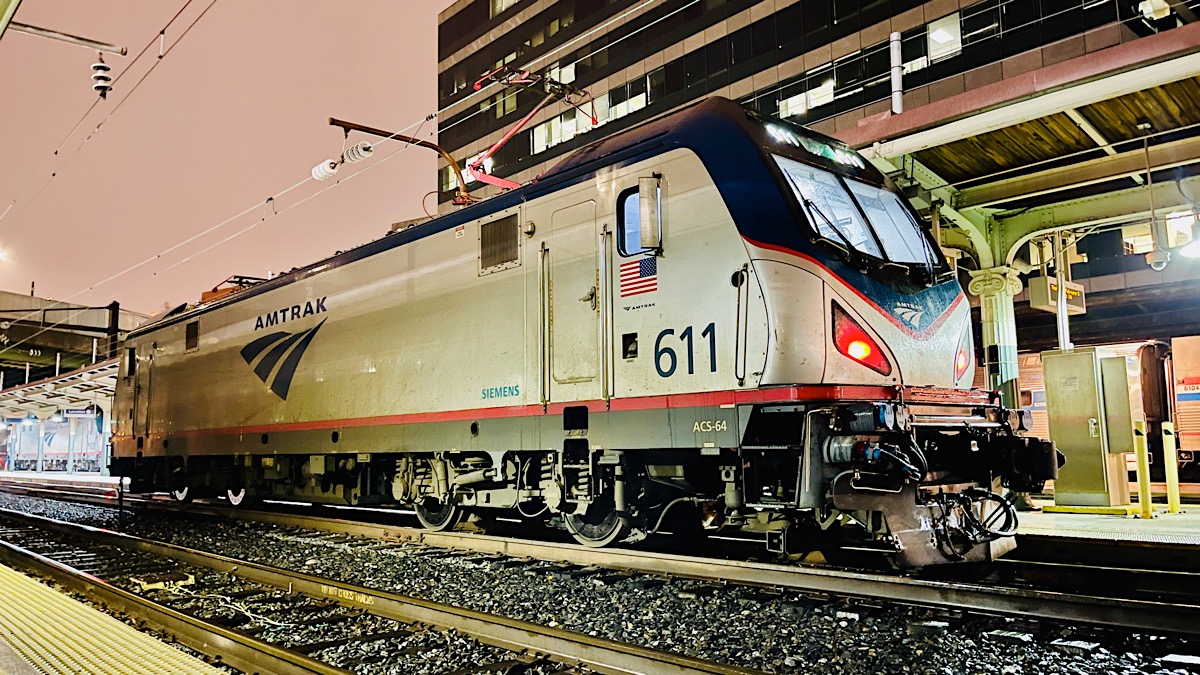
Sprinter Sabbath
Washington, DC / Feb 2022 / RWH

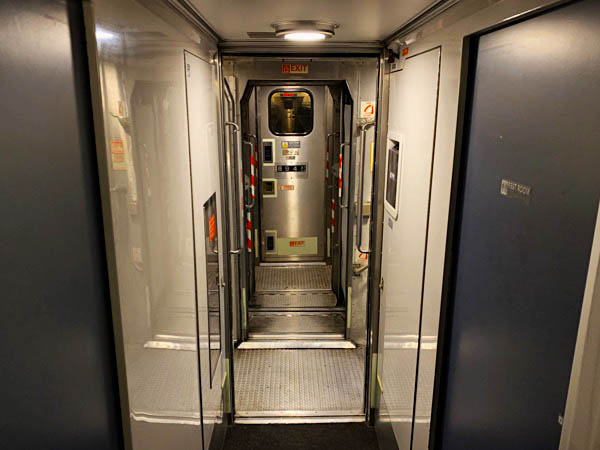
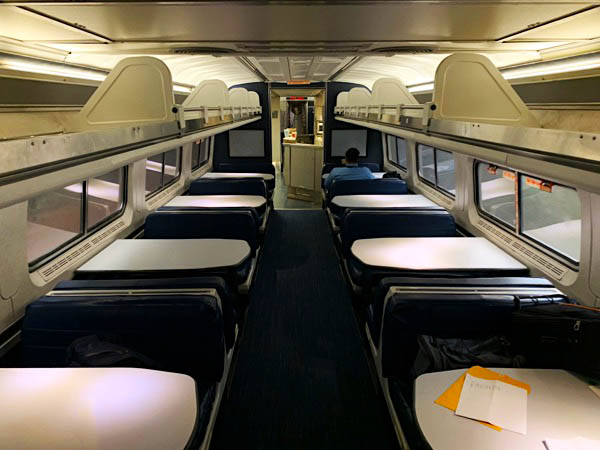
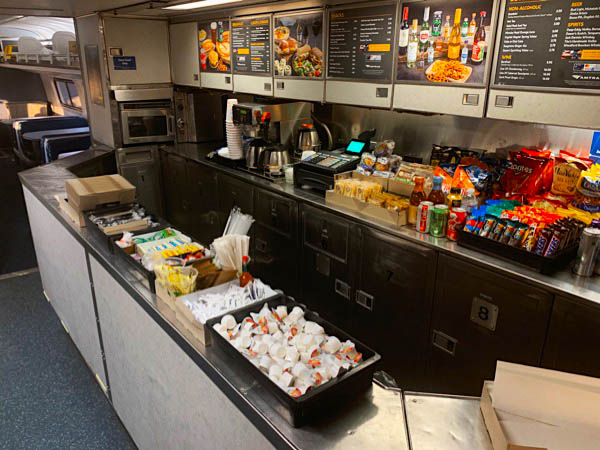

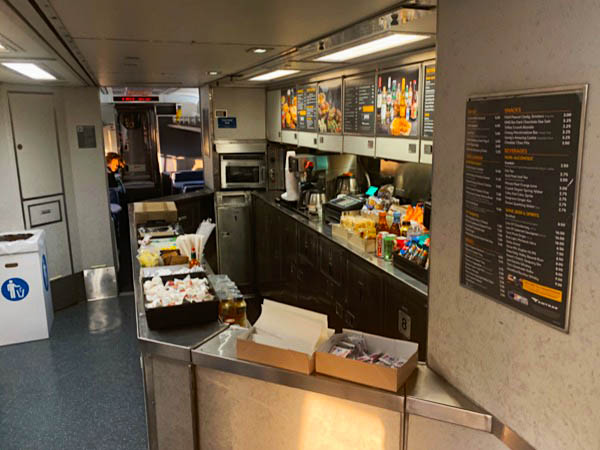
Palmetto Panels
Dec 2019 / RWH
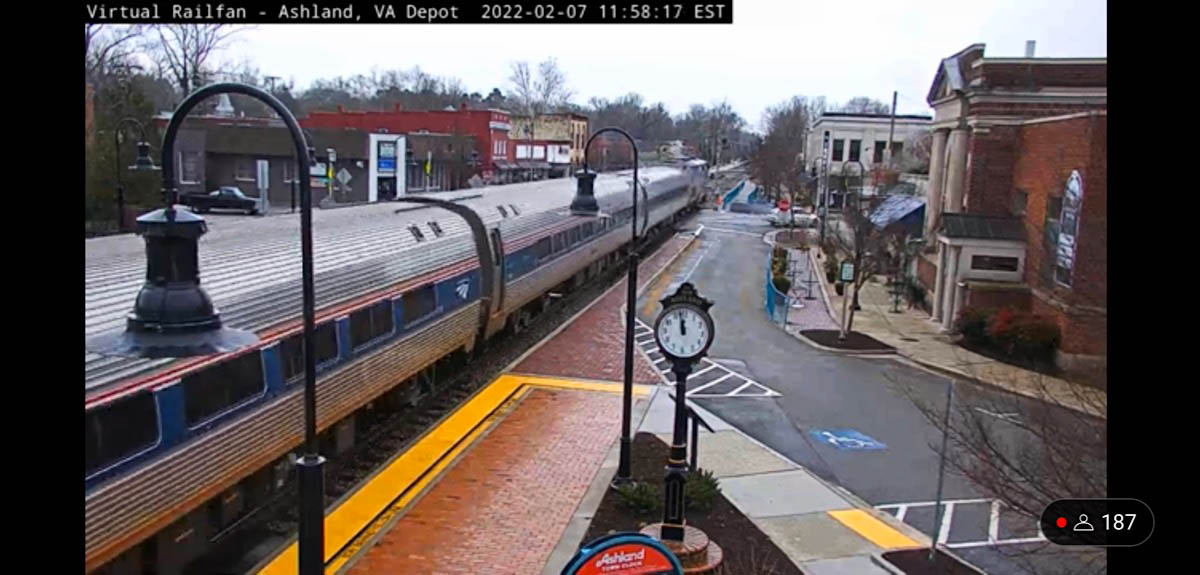
Doppelgänger in Ashland
Ashland, Va / Feb 2022 / adapted from Virtual Railfan
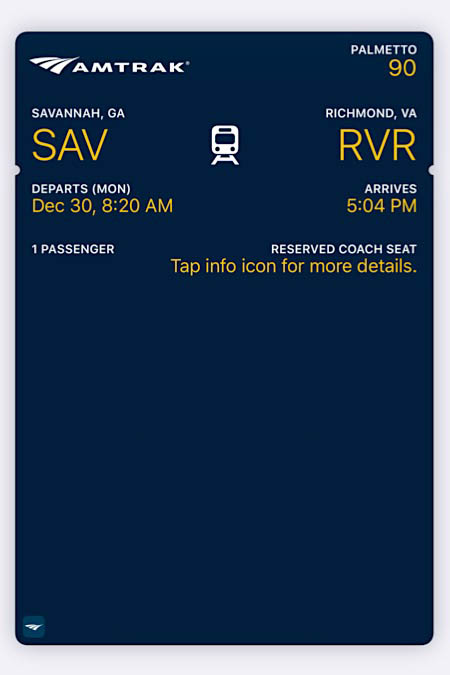
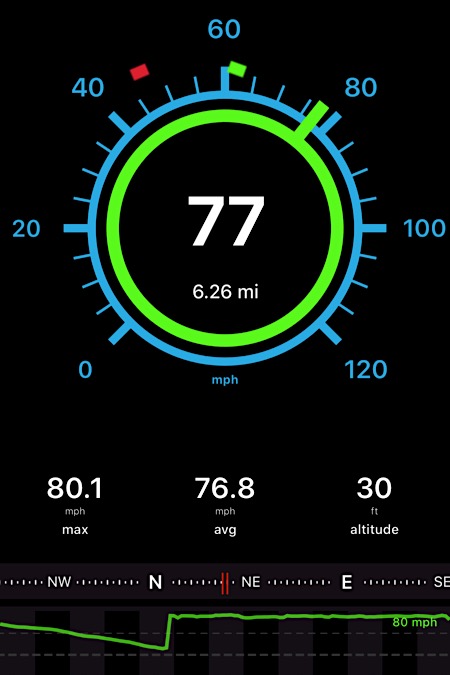

Tickets and Telemetry
Dec 2019 / RWH
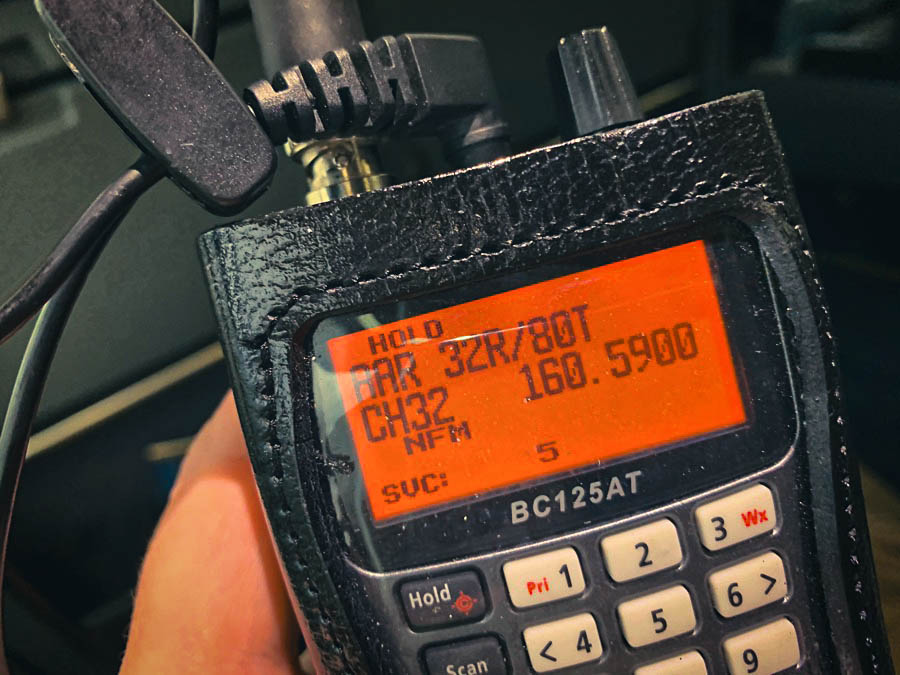
The Sheep Know the Shepherd's Voice
Monks Corner, SC / Dec 2019 / RWH
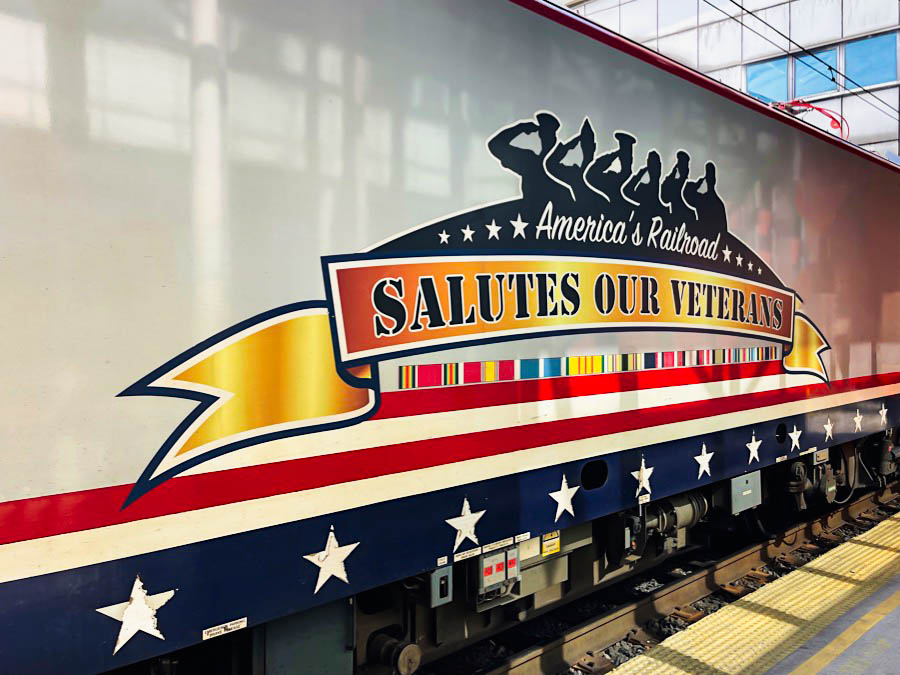
Stand and Salute
Washington, DC / Jul 2022 / RWH

Now Arriving, Philadelphia
images and artwork RWH
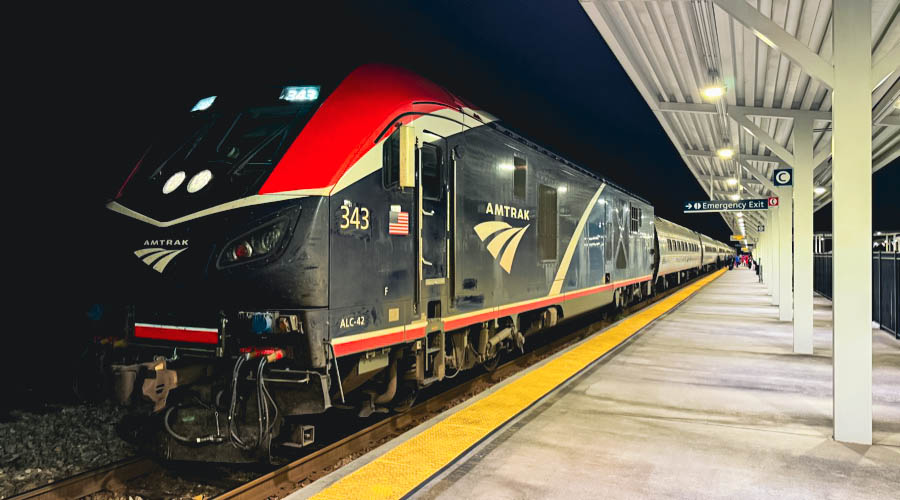
North Charleston Nocturnal
North Charleston, SC / Aug 2024 / RWH
 Snapshots
Snapshots

Savannah, Ga / Dec 2019 / RWH

Dunn, NC / Dec 2019 / RWH

Saint Stephen, SC / Dec 2019 / RWH
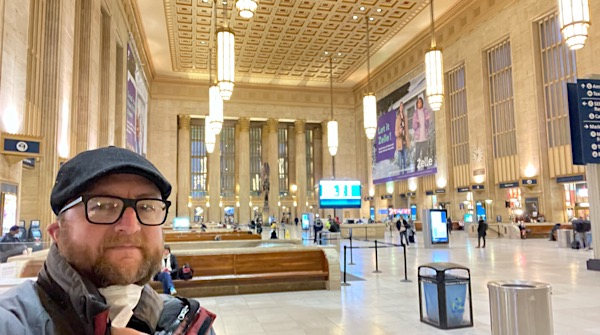
Philadelphia, Pa / Feb 2022 / RWH
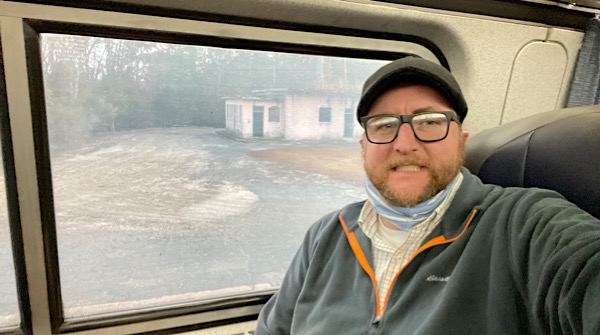
Savannah, Ga / Feb 2022 / RWH

Ridgeland, SC / Jul 2022 / DKT

Hardeeville, SC / Jul 2022 / RWH
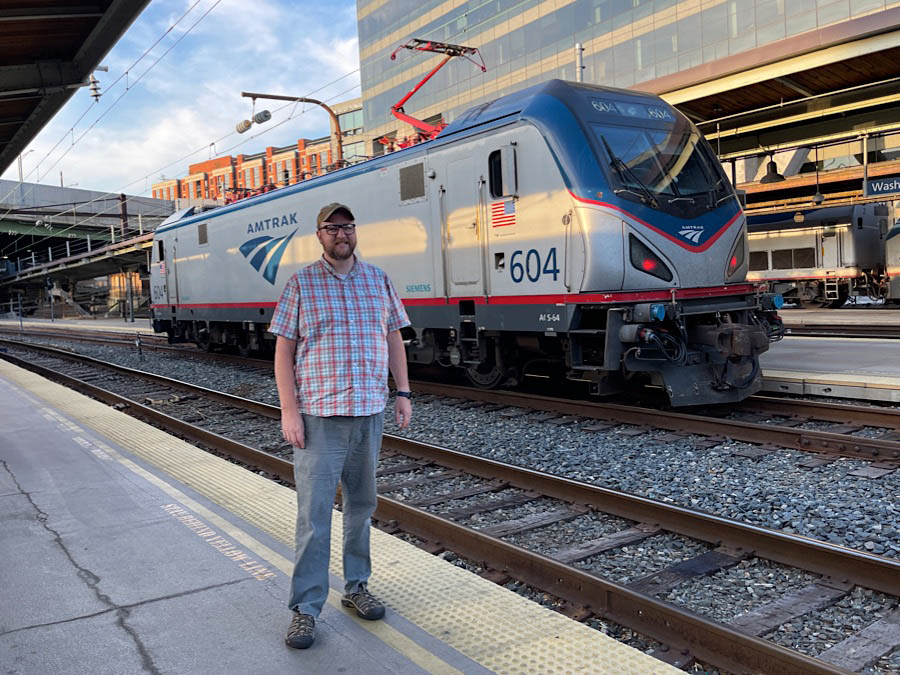
Washington, DC / Jul 2022 / DKT
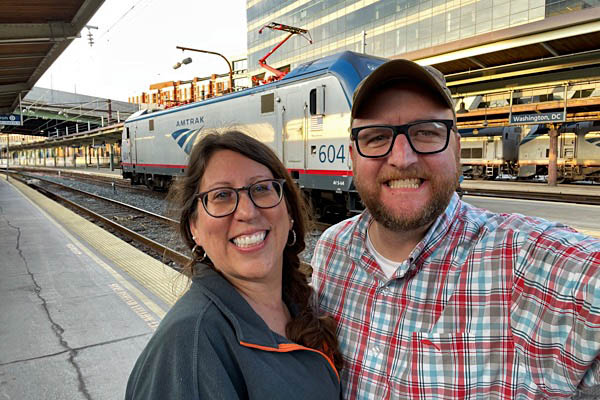
Washington, DC / Jul 2022 / RWH

Savannah, Ga / Dec 2023 / RWH
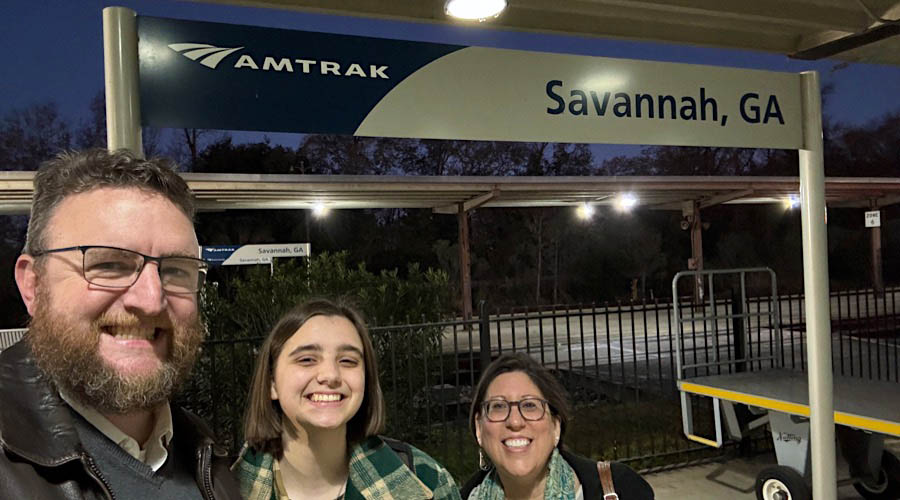
Savannah, Ga / Dec 2023 / RWH
Links / Sources
- Amtrak's Silver Service / Palmetto page
- Wikipedia article for Amtrak's Palmetto
- USA Rail Guide's Palmetto page



